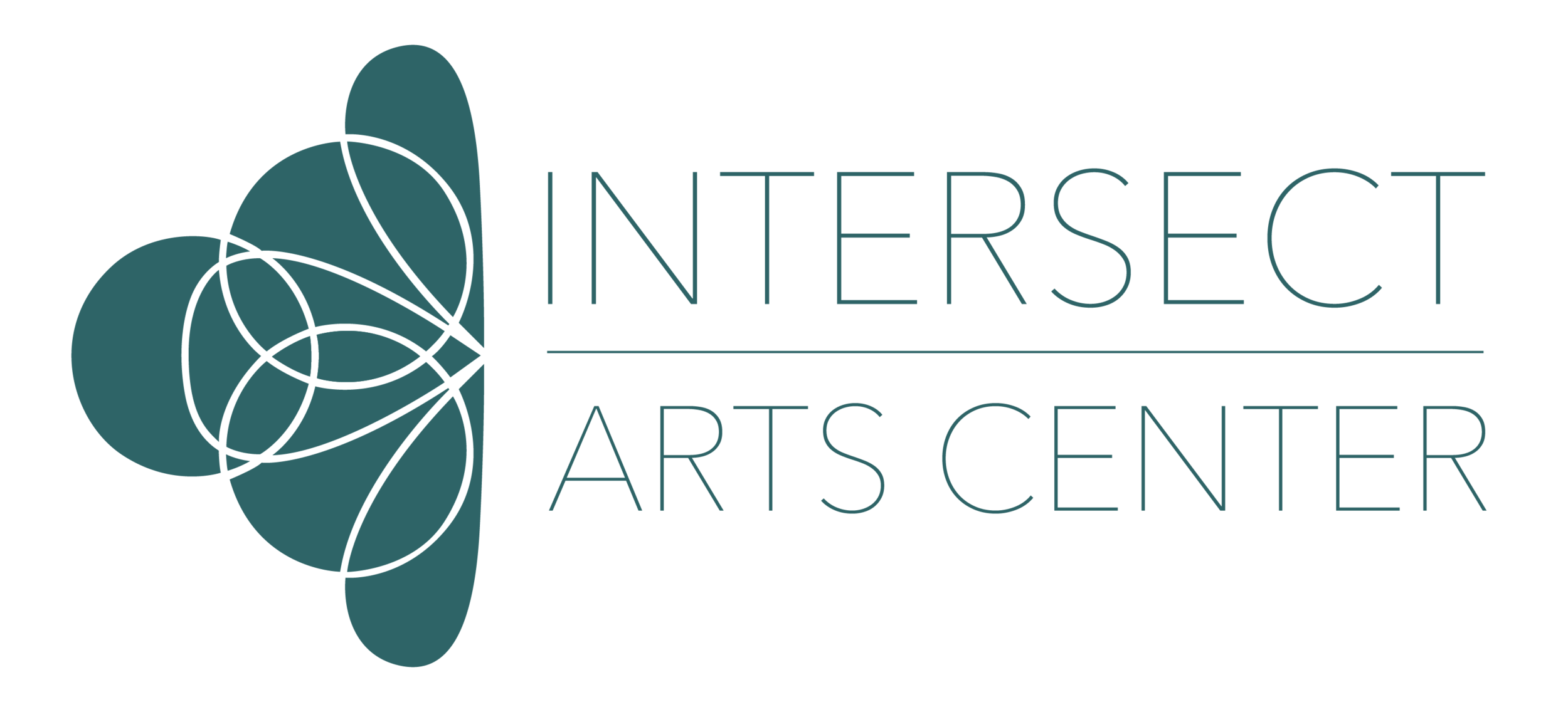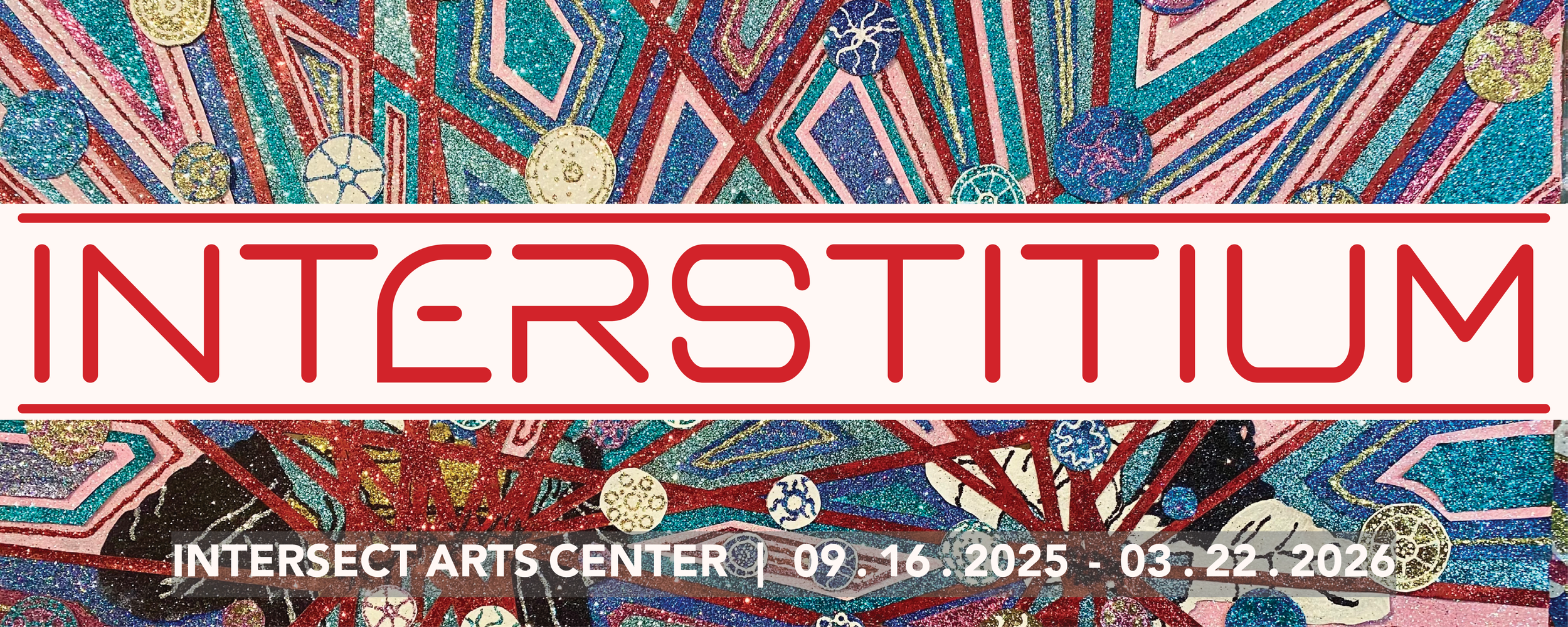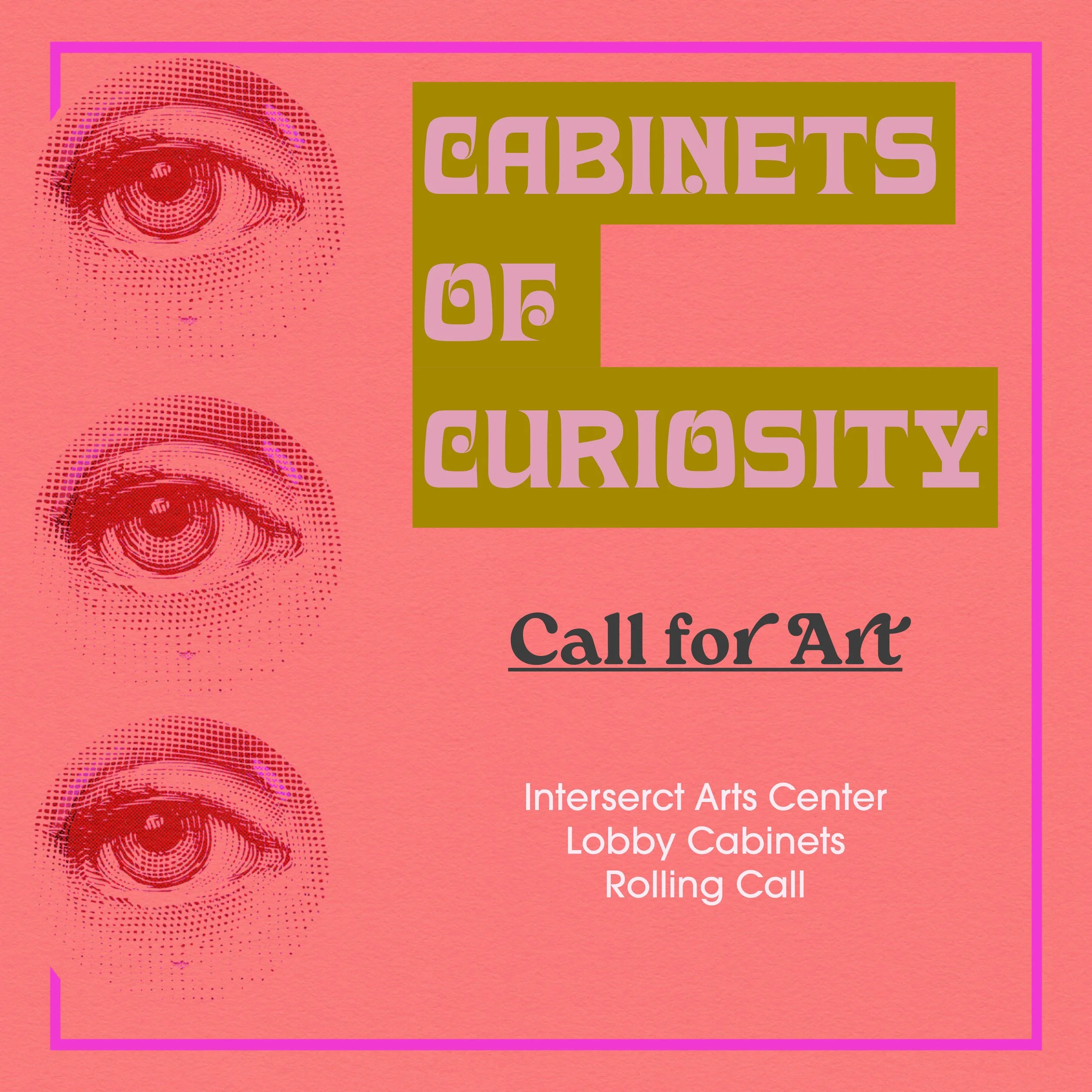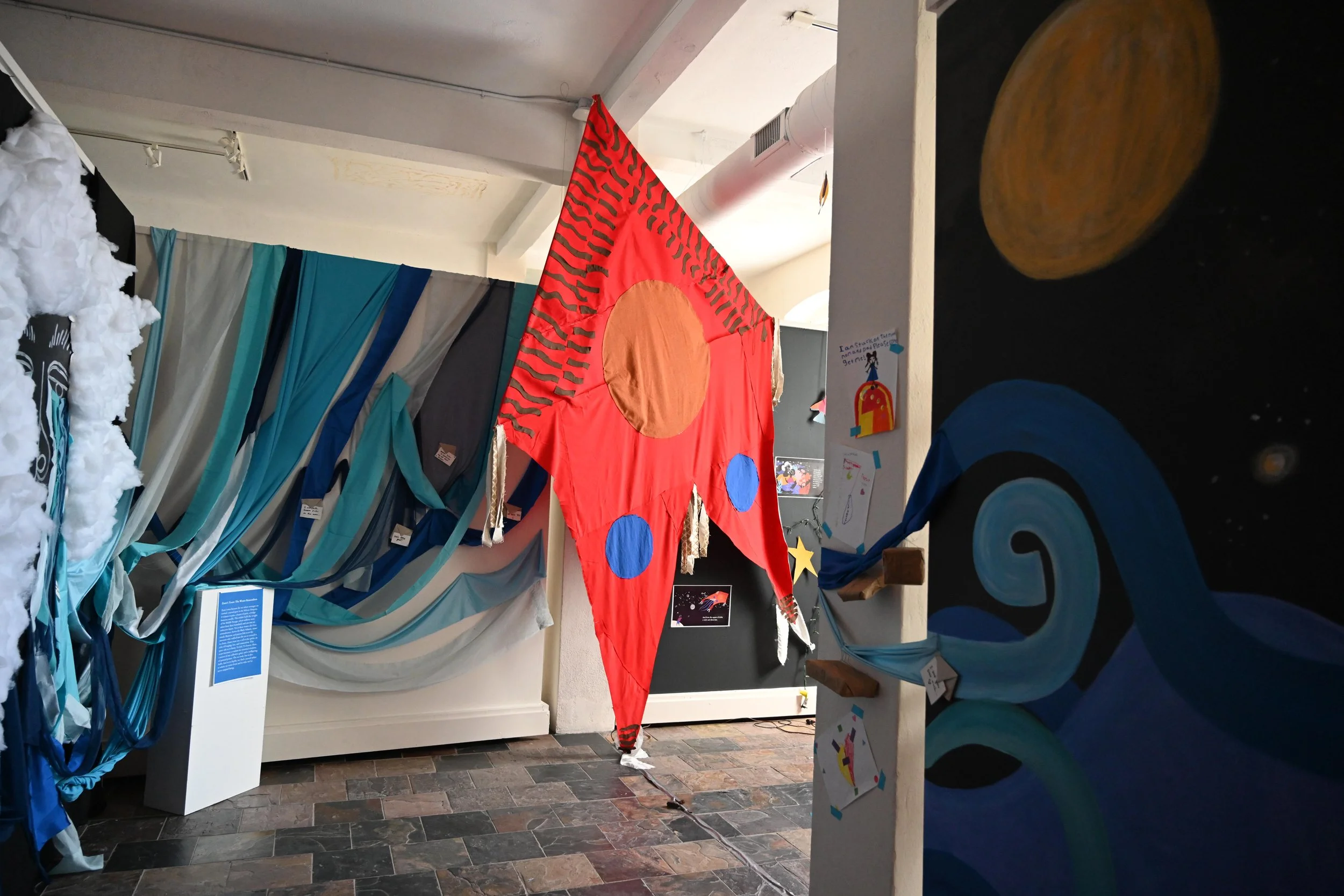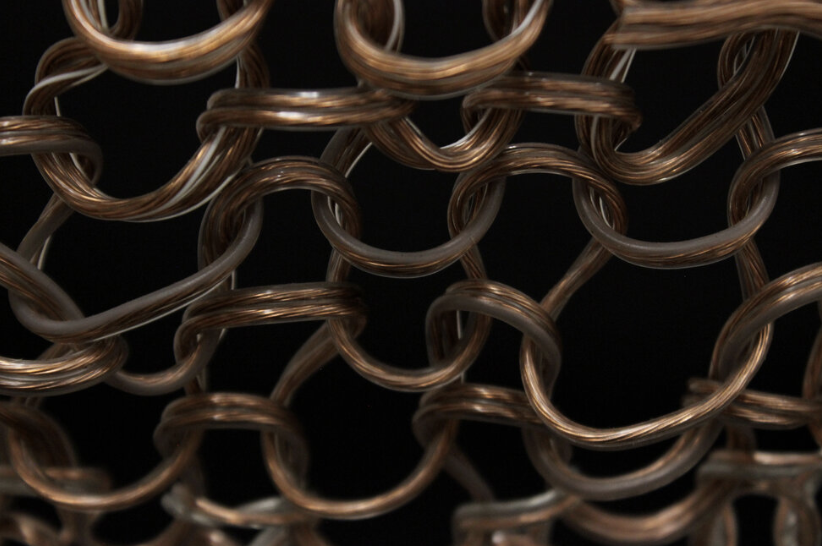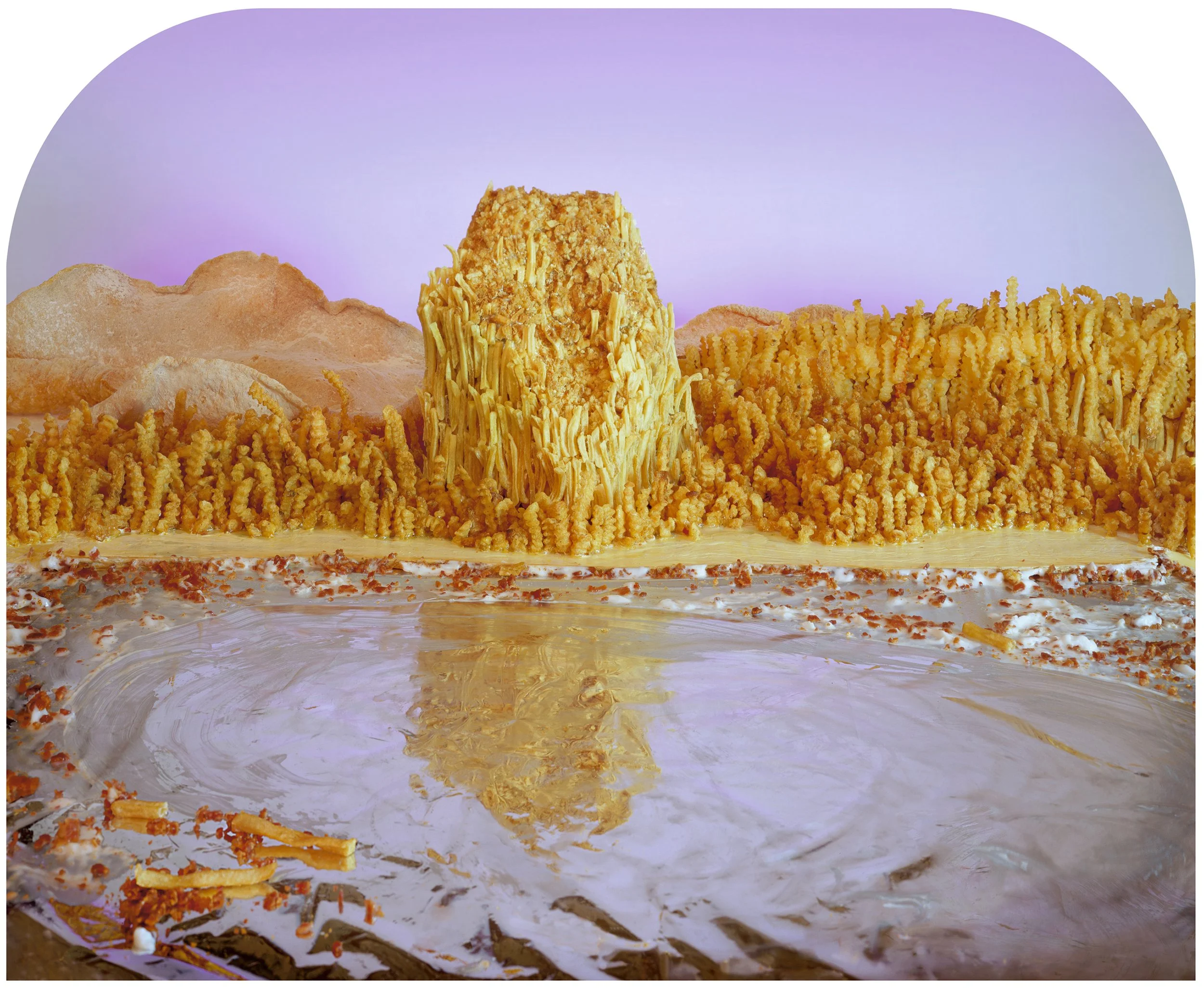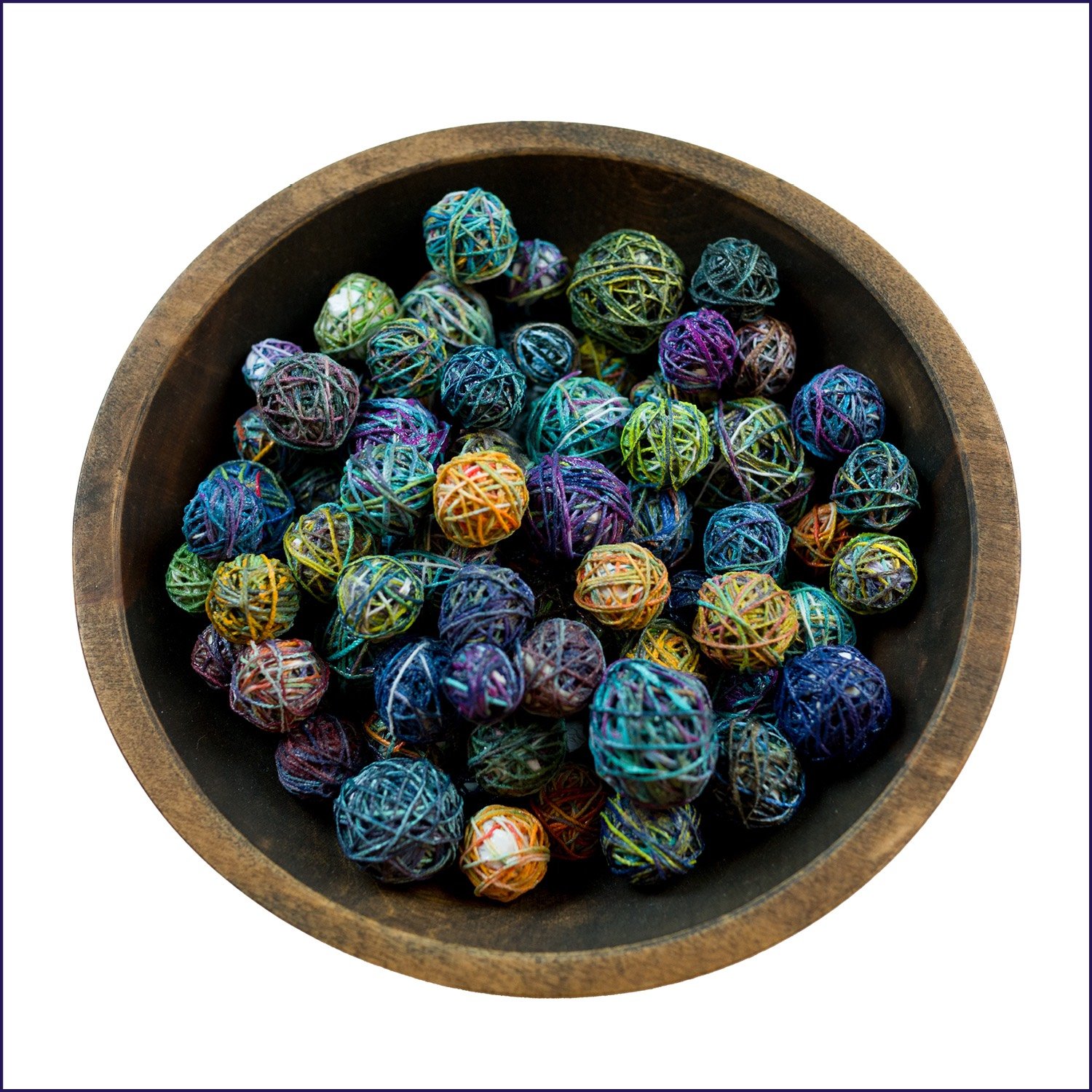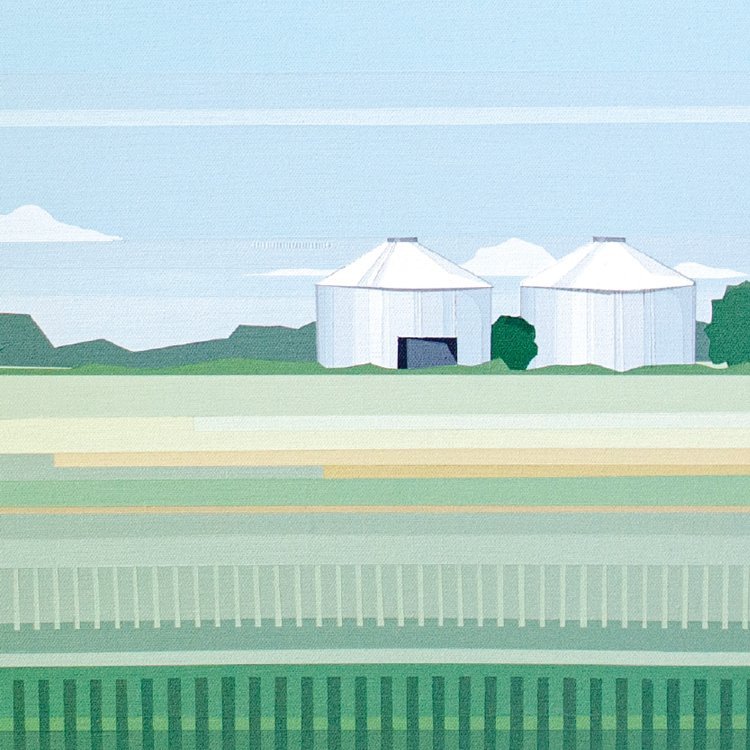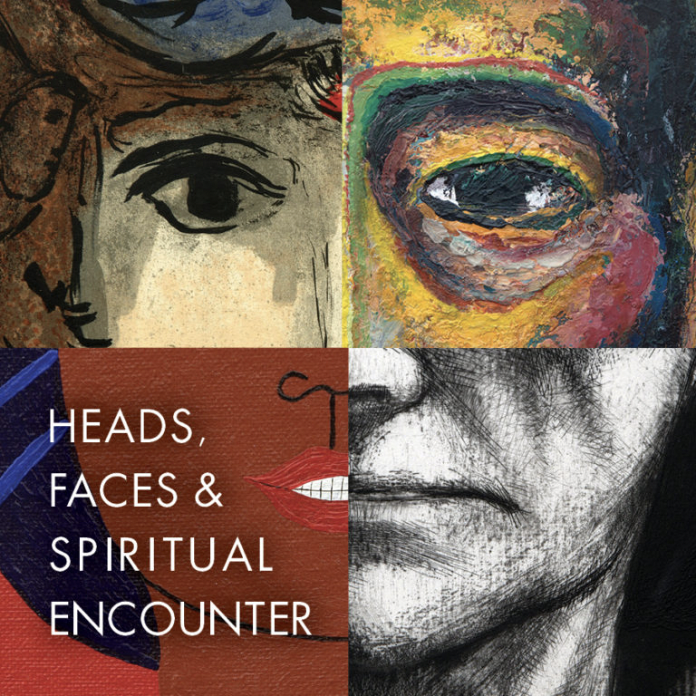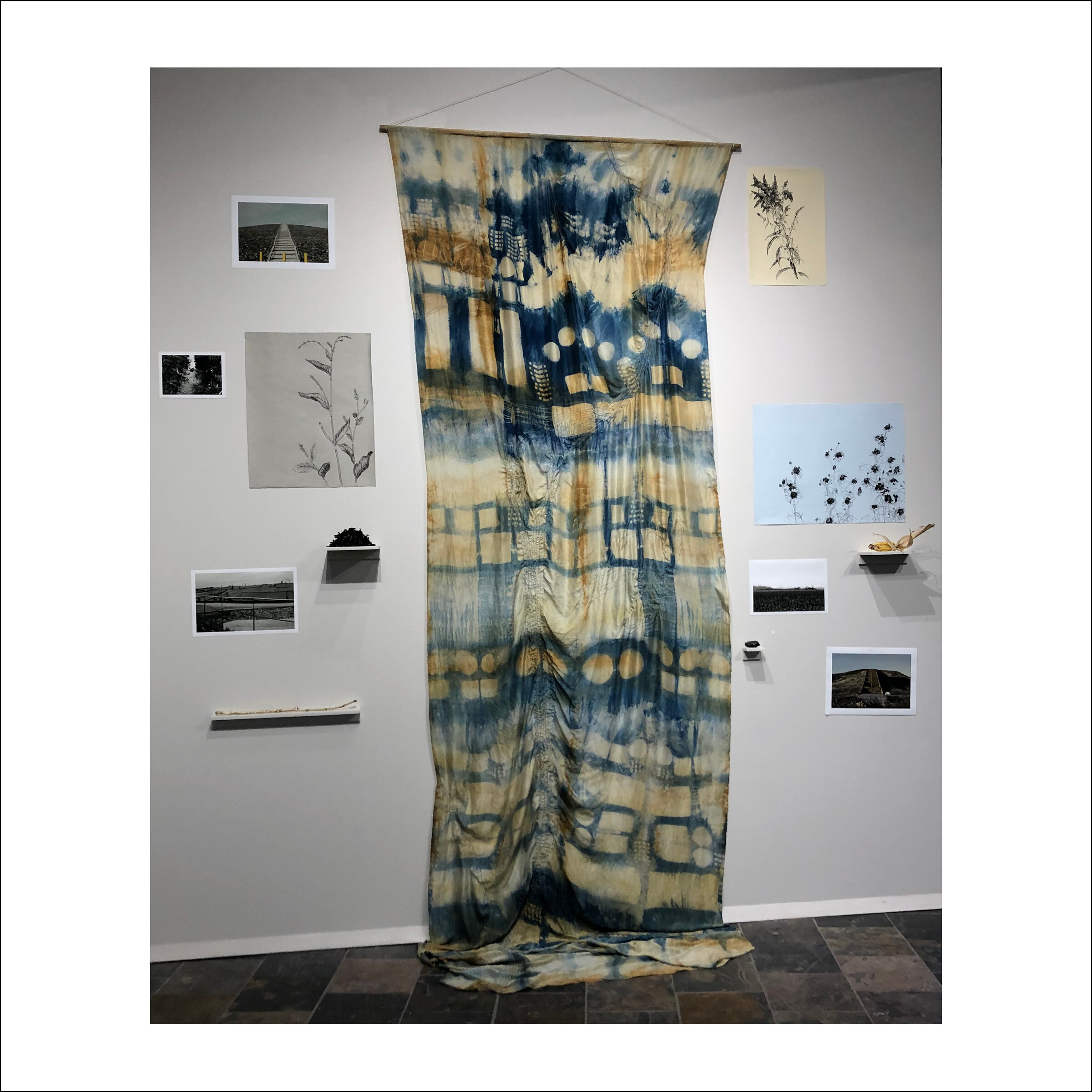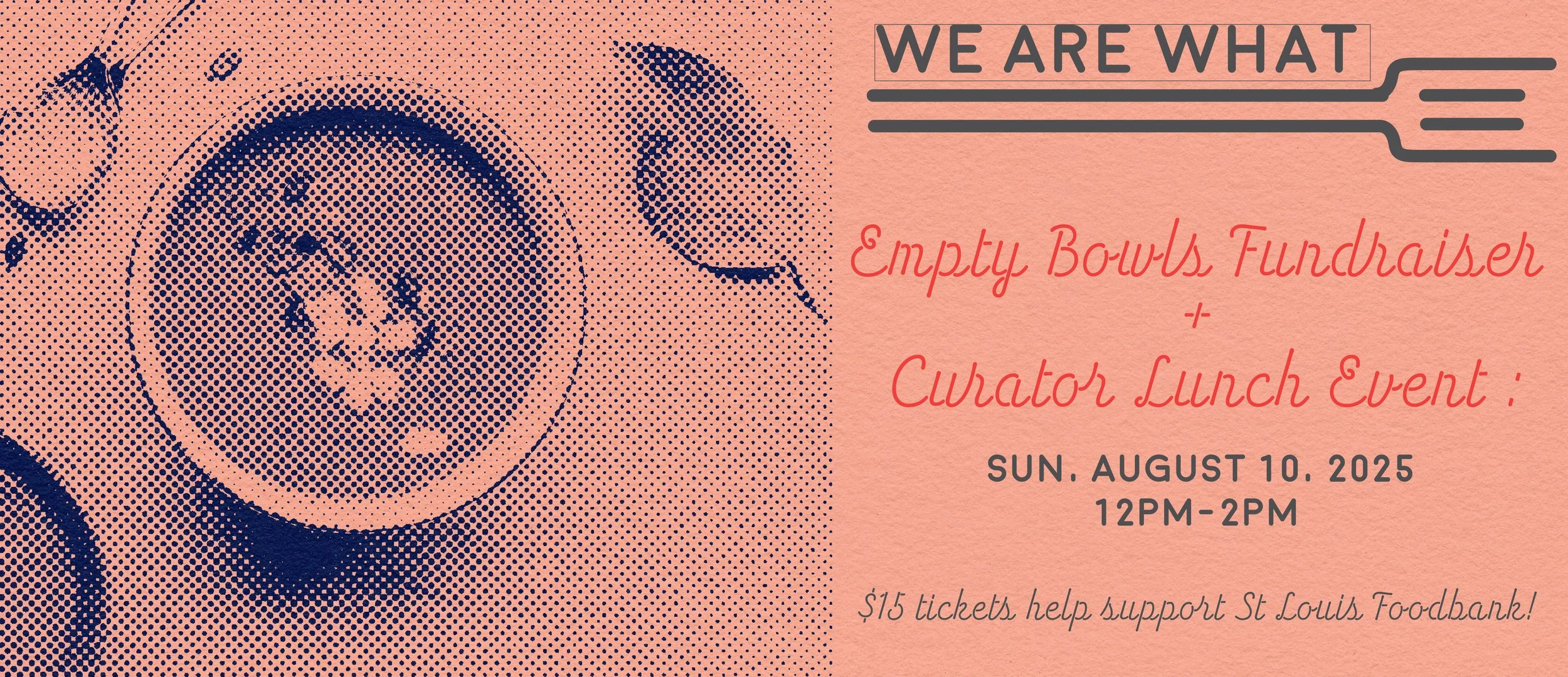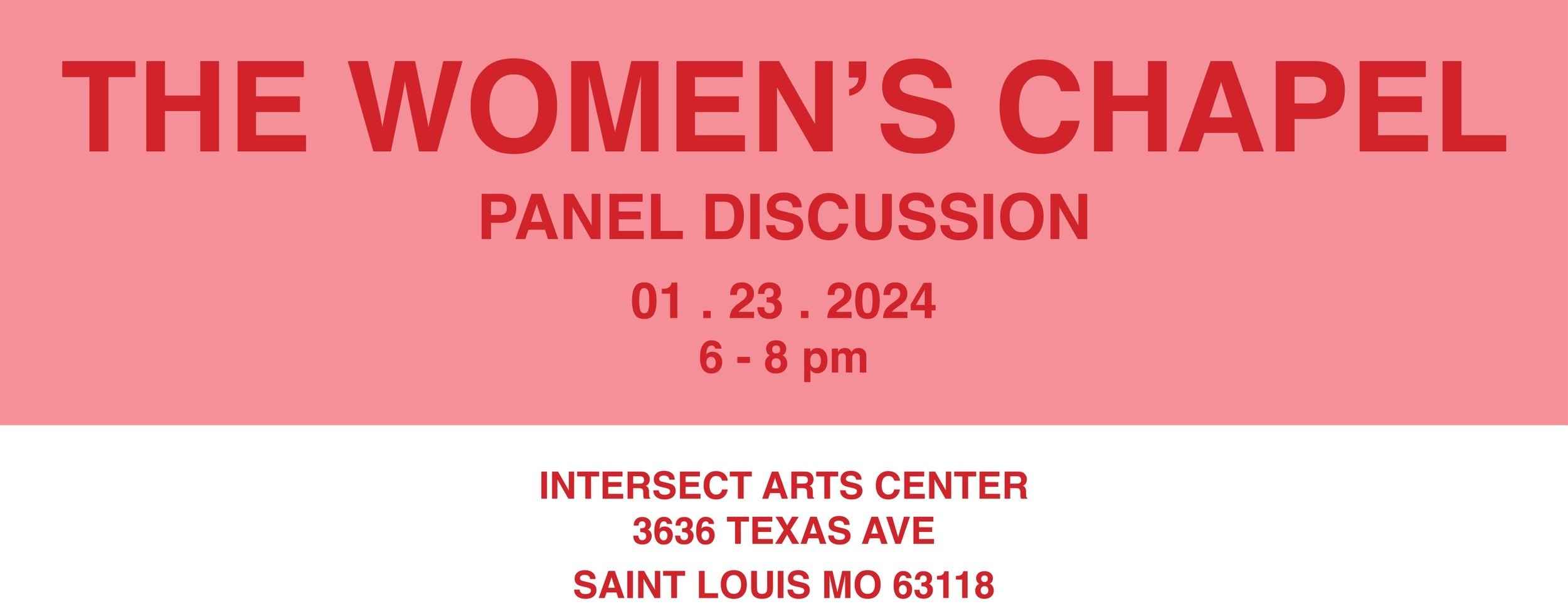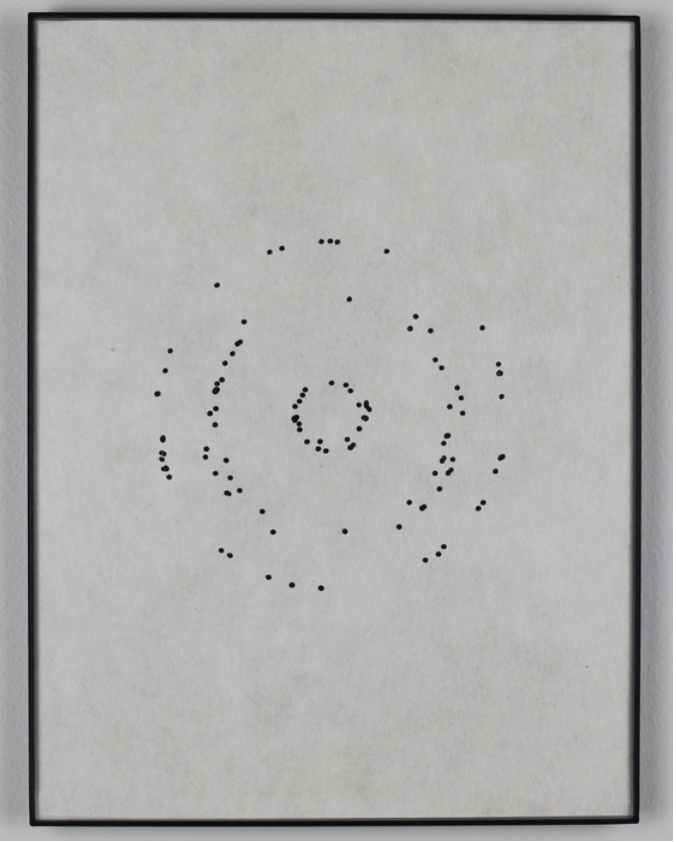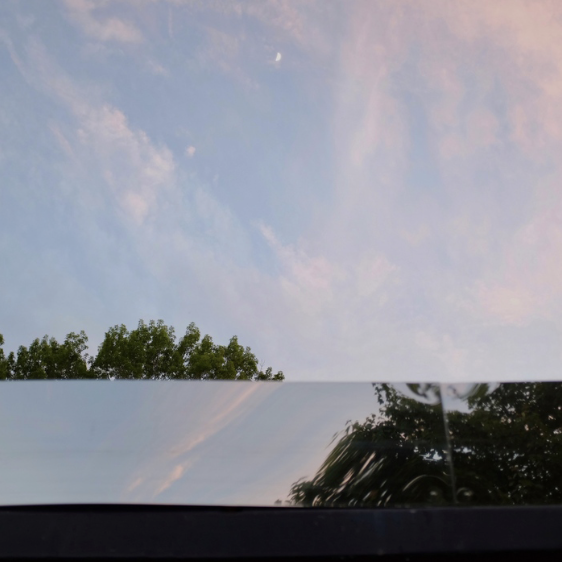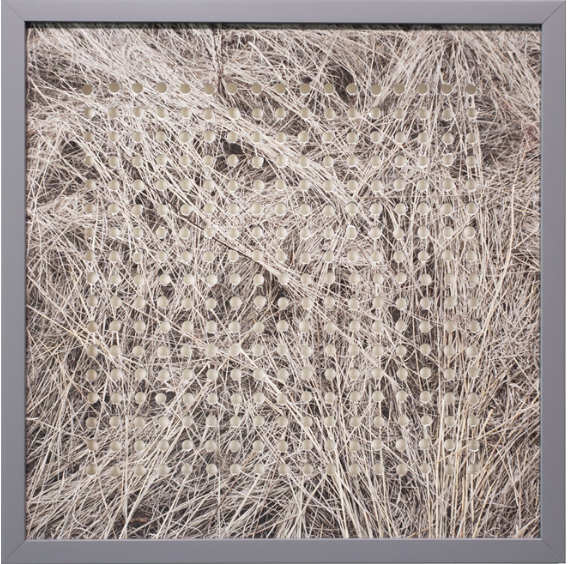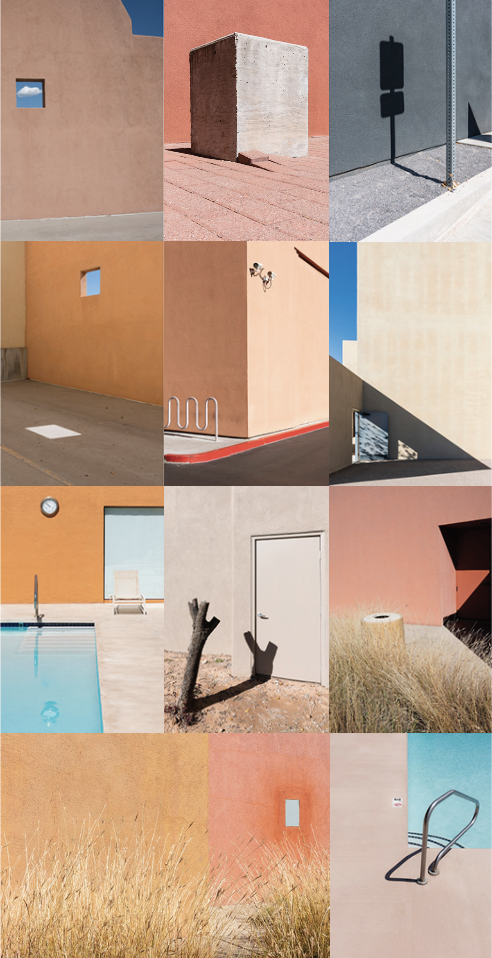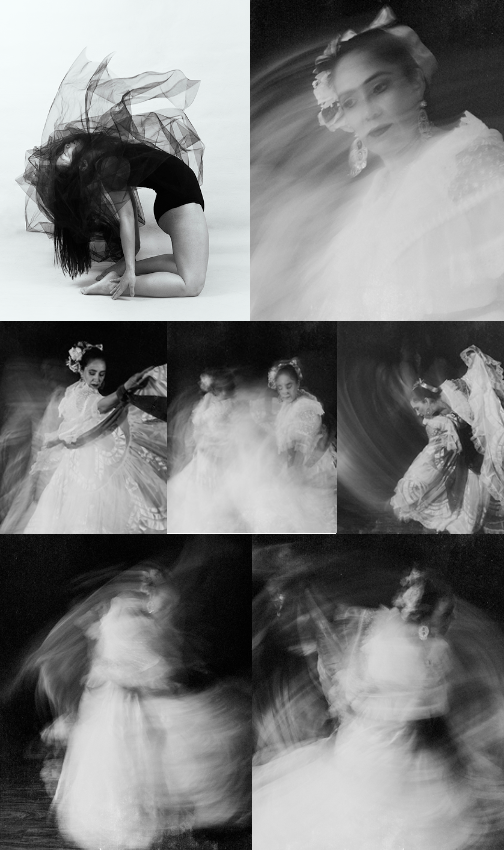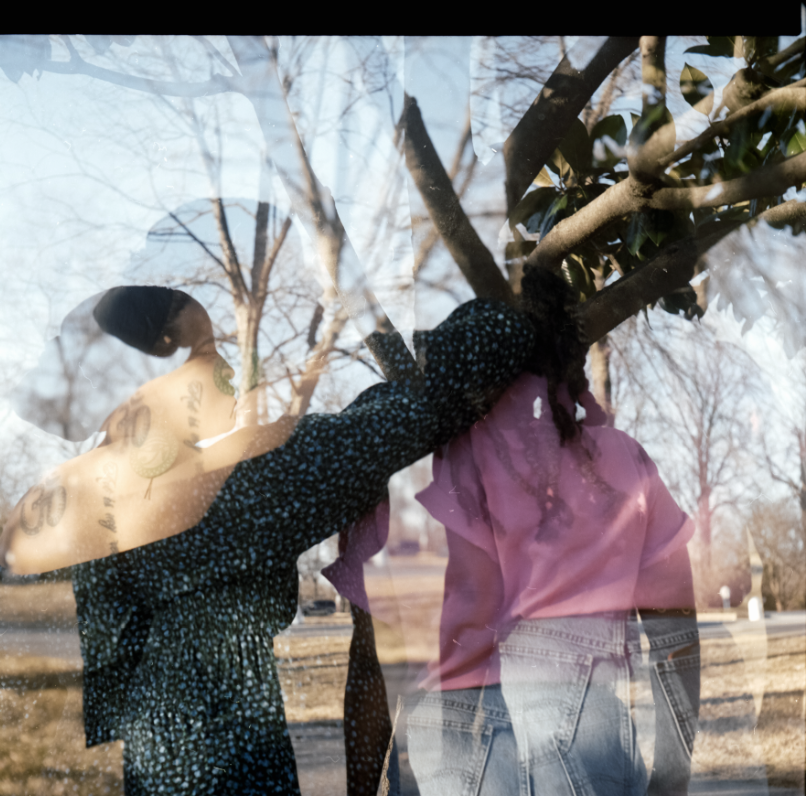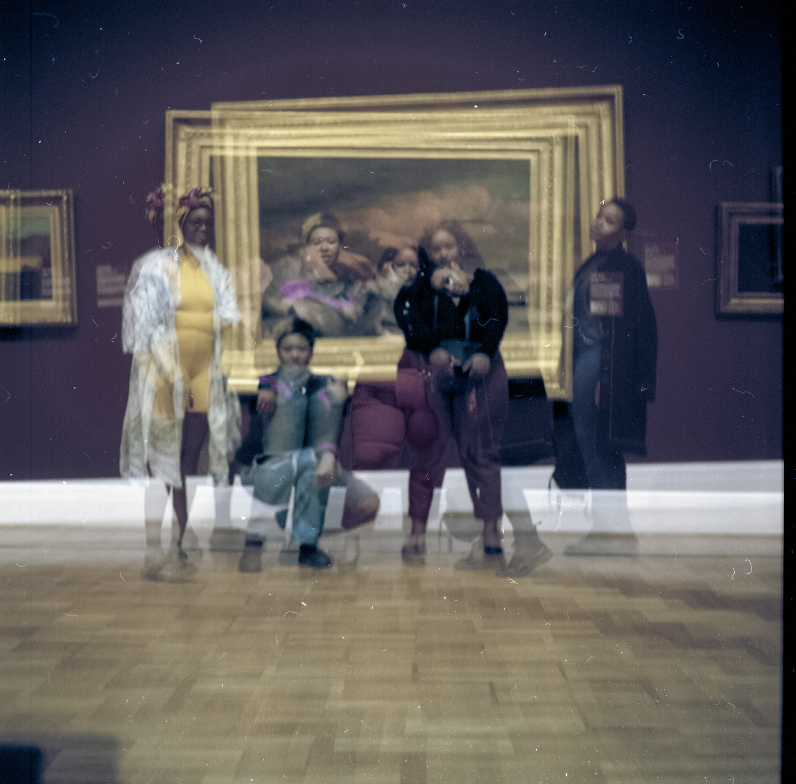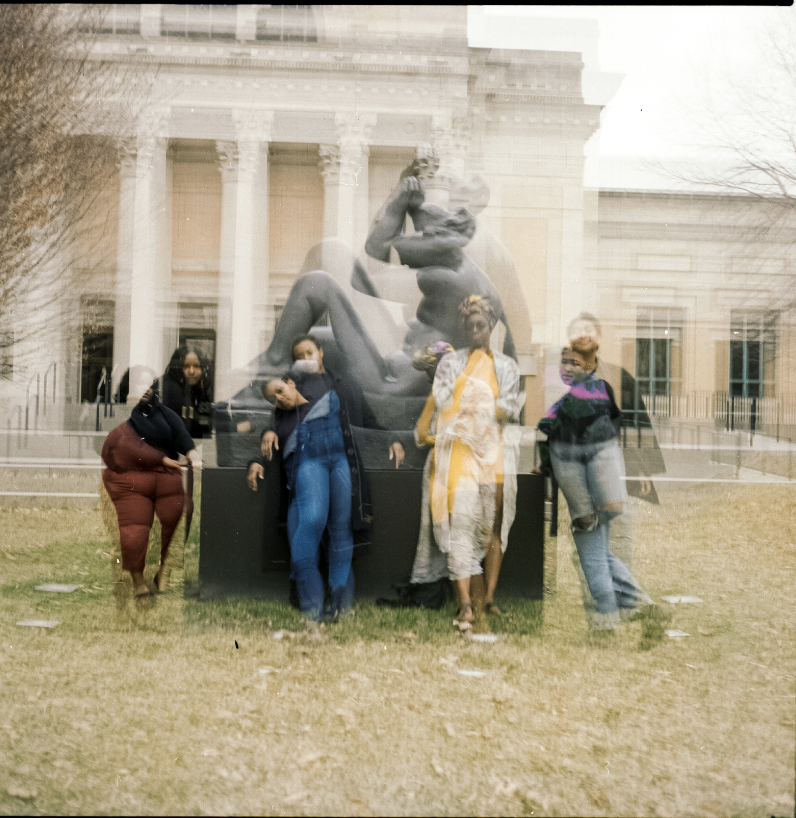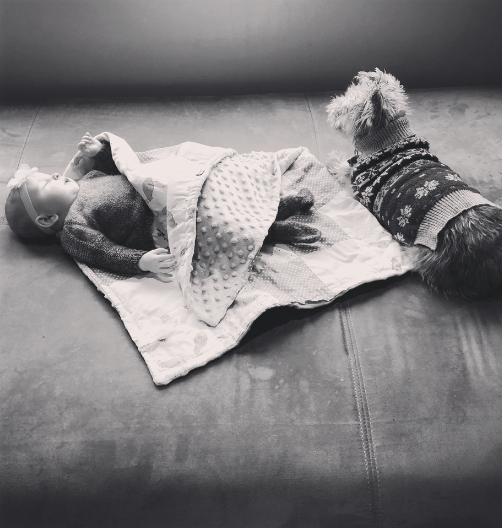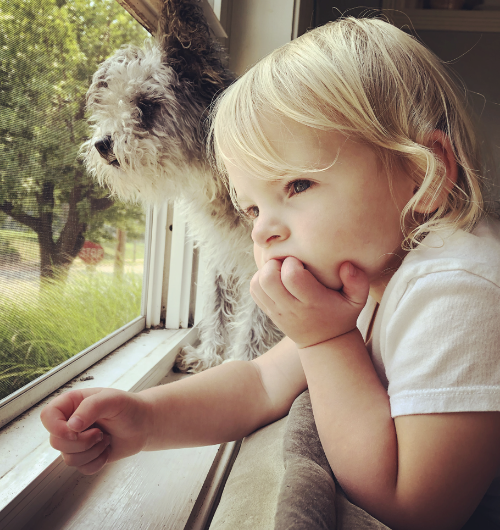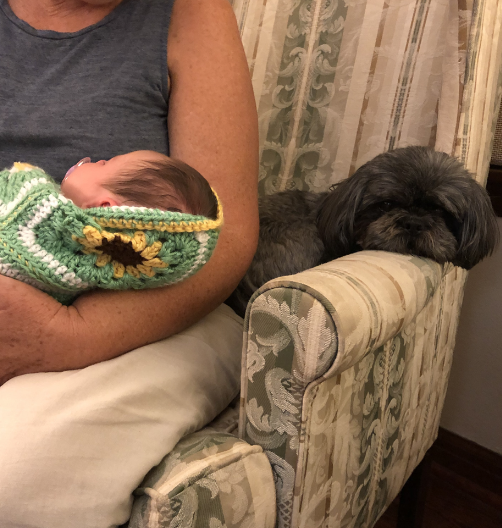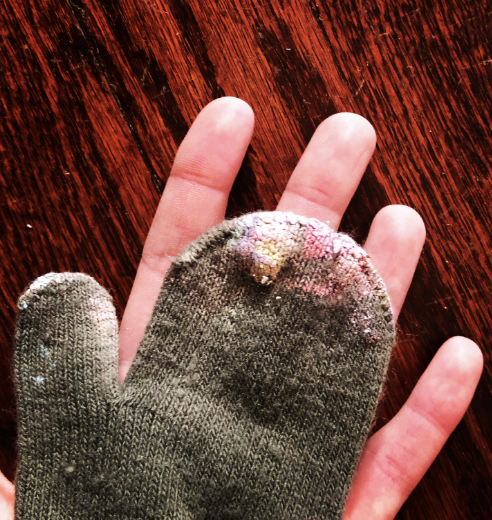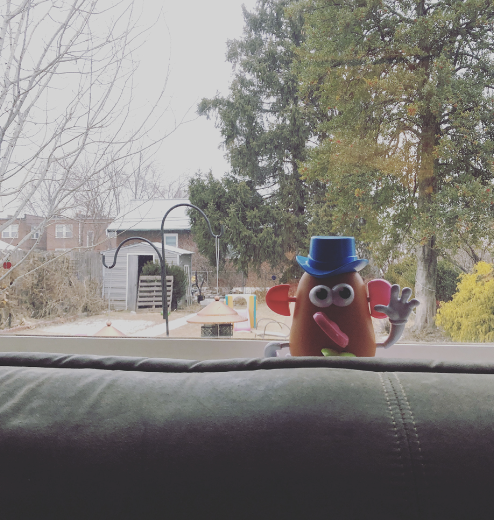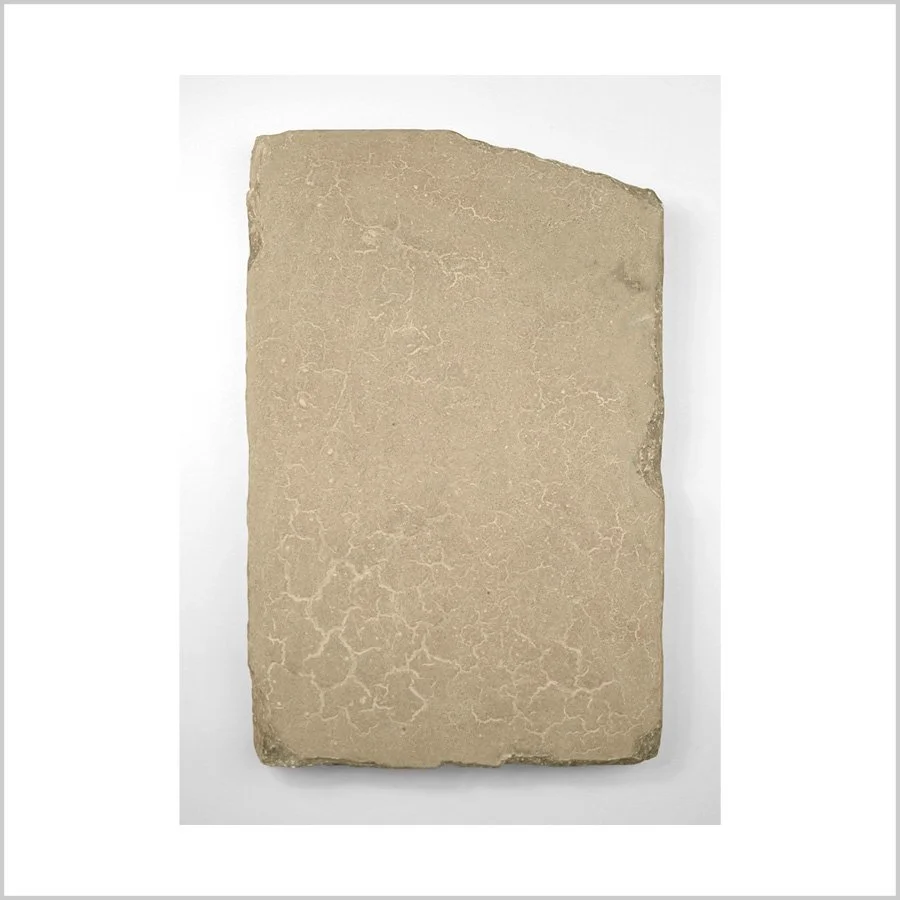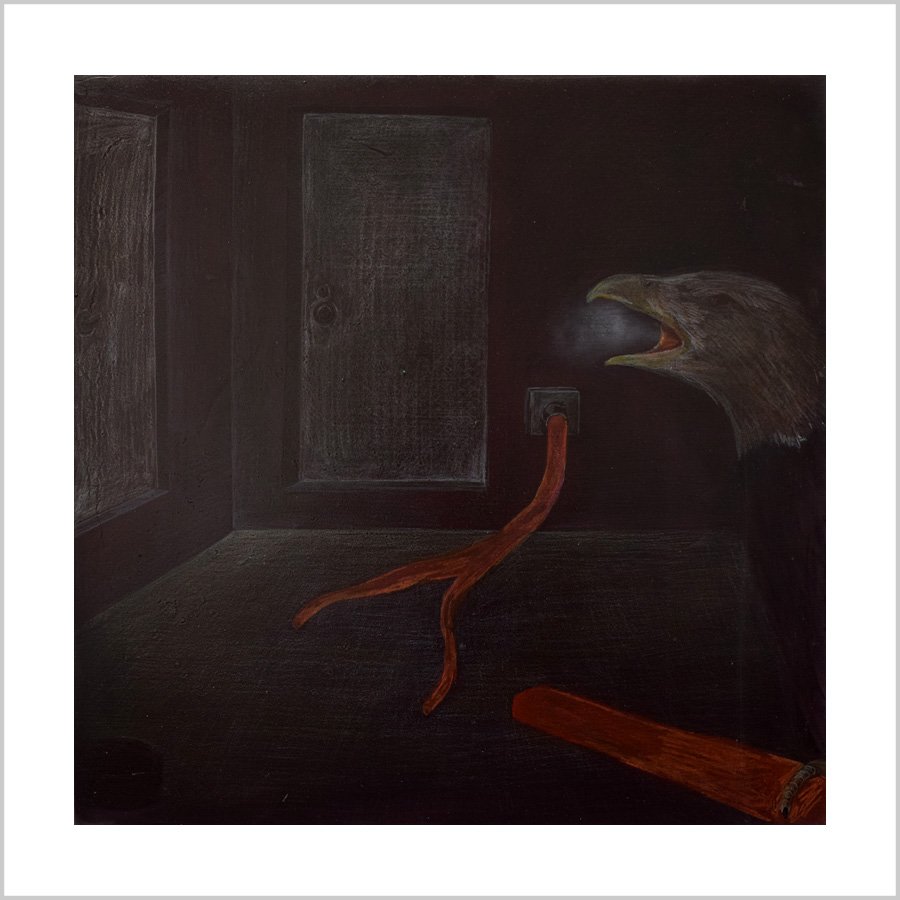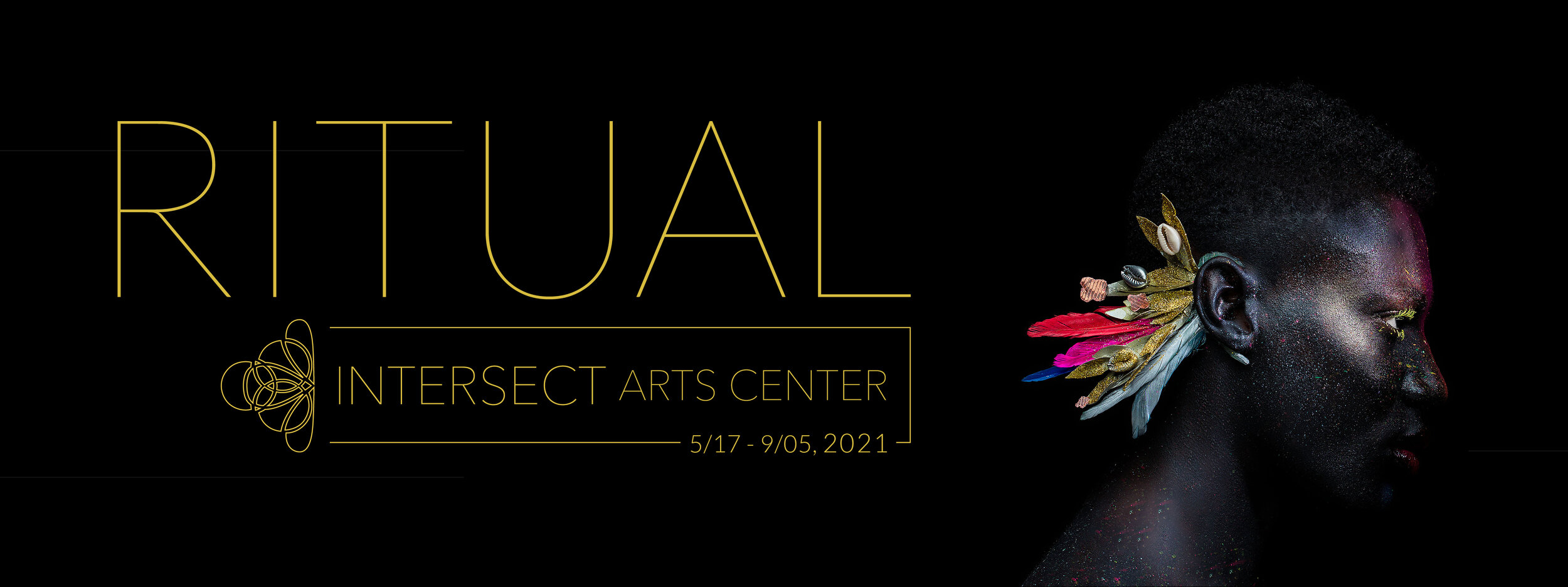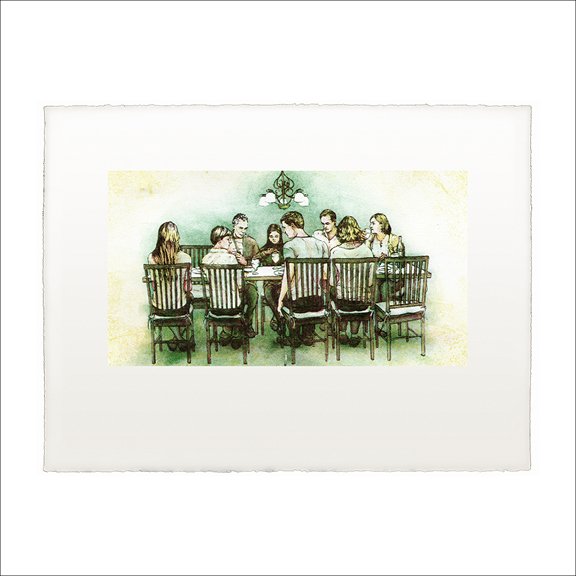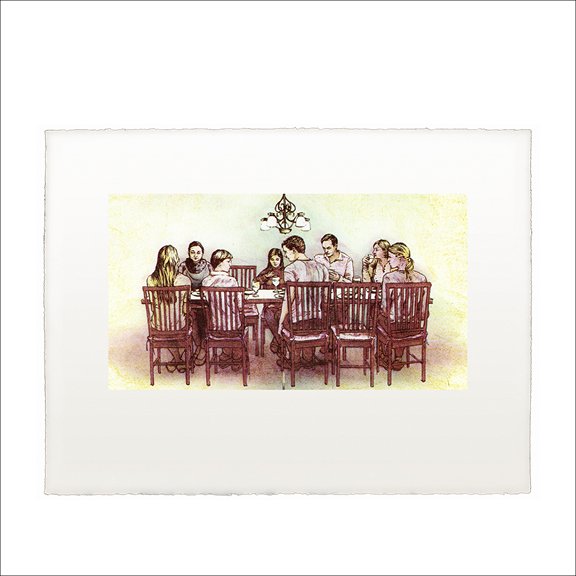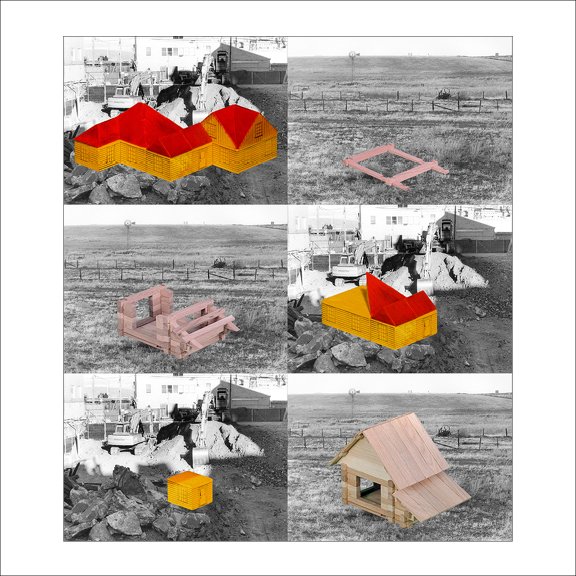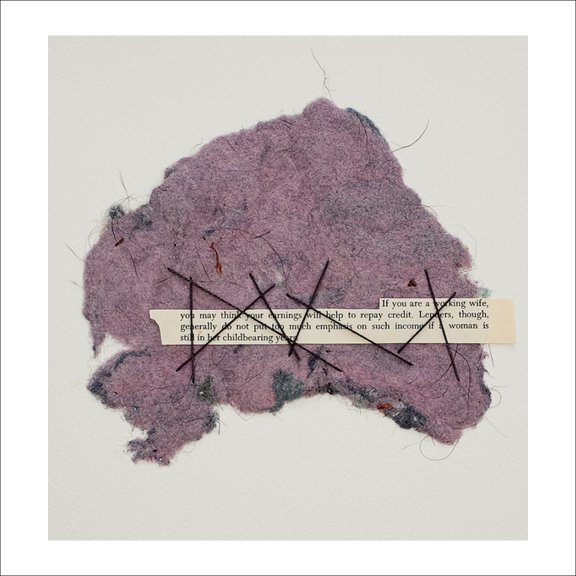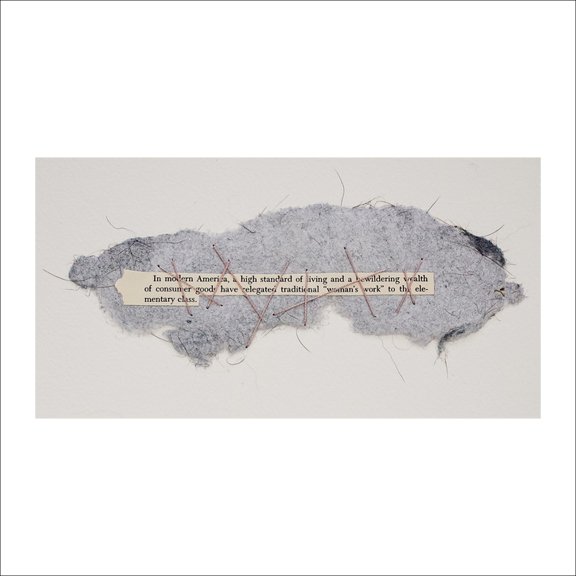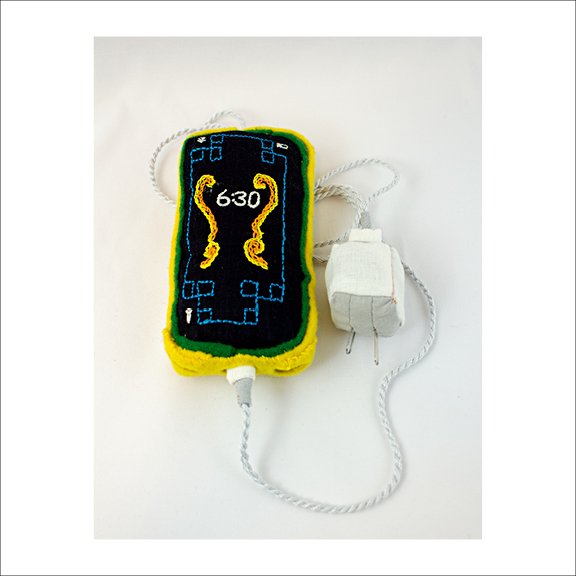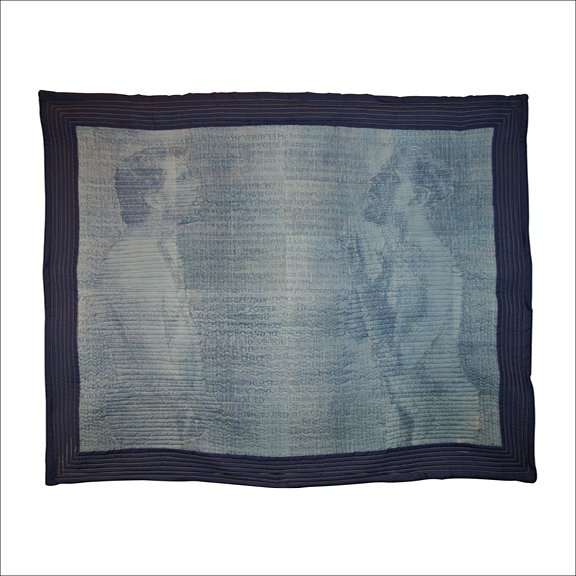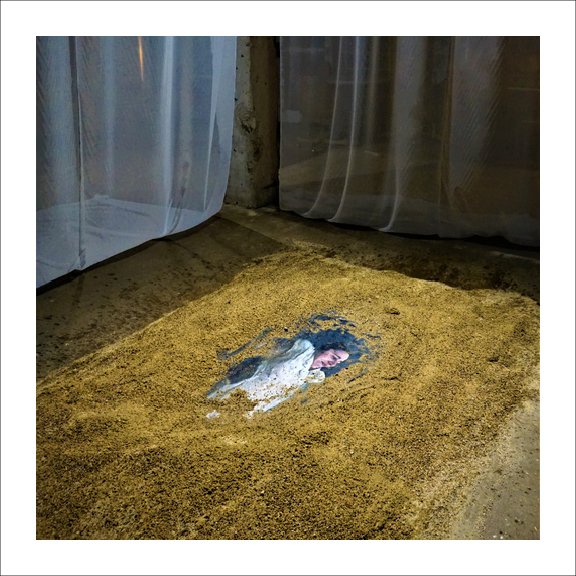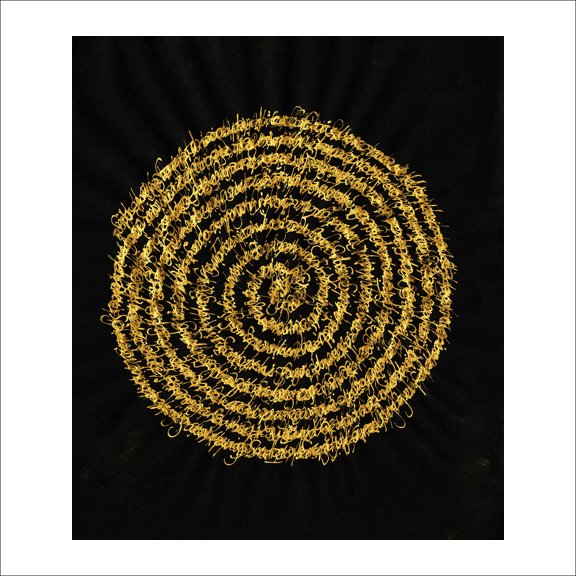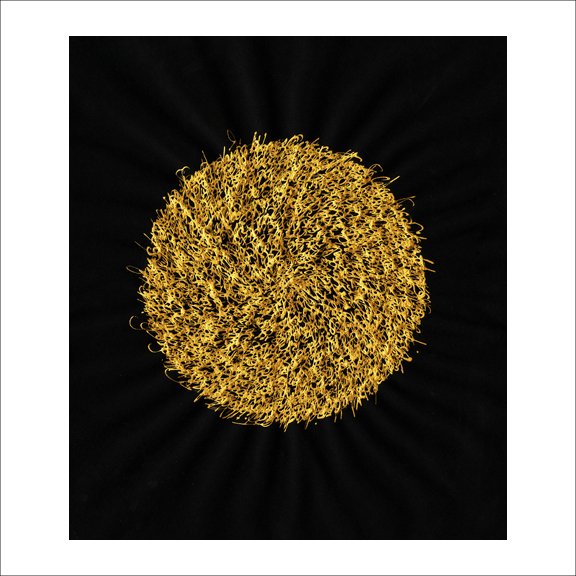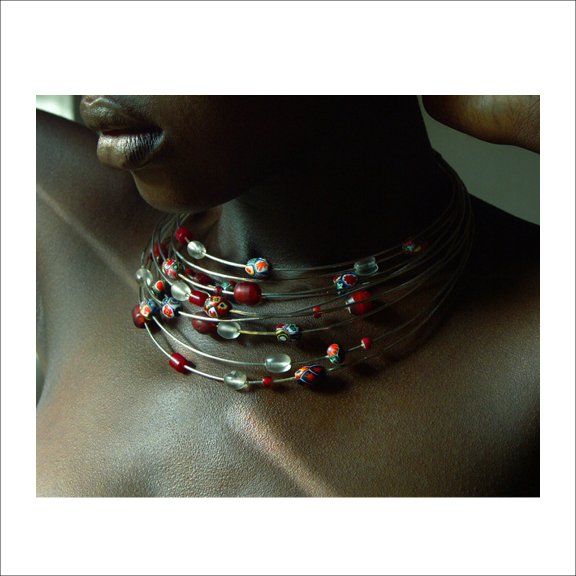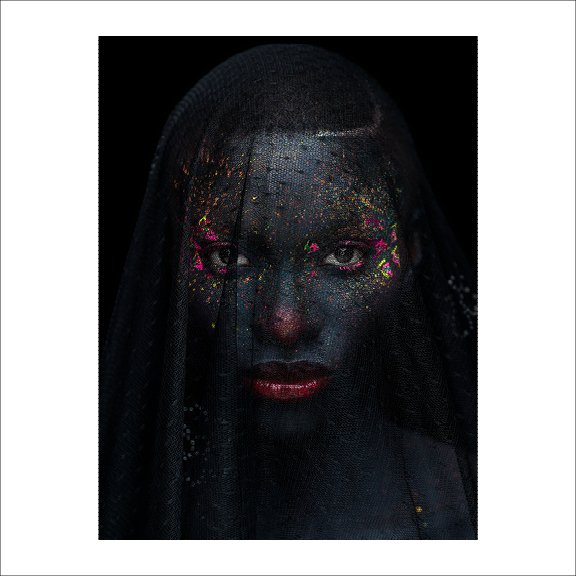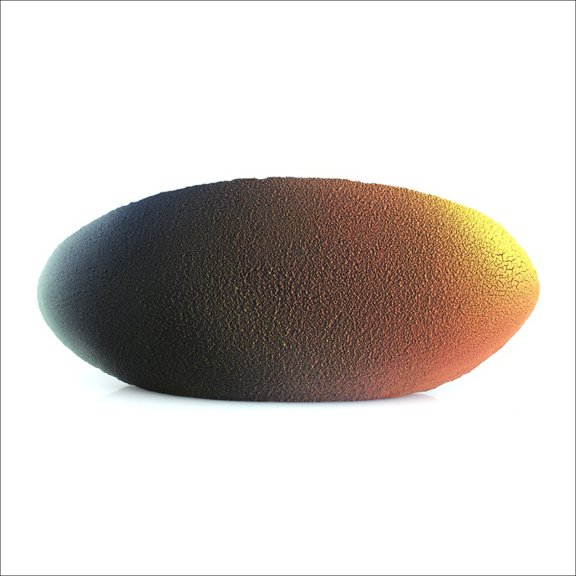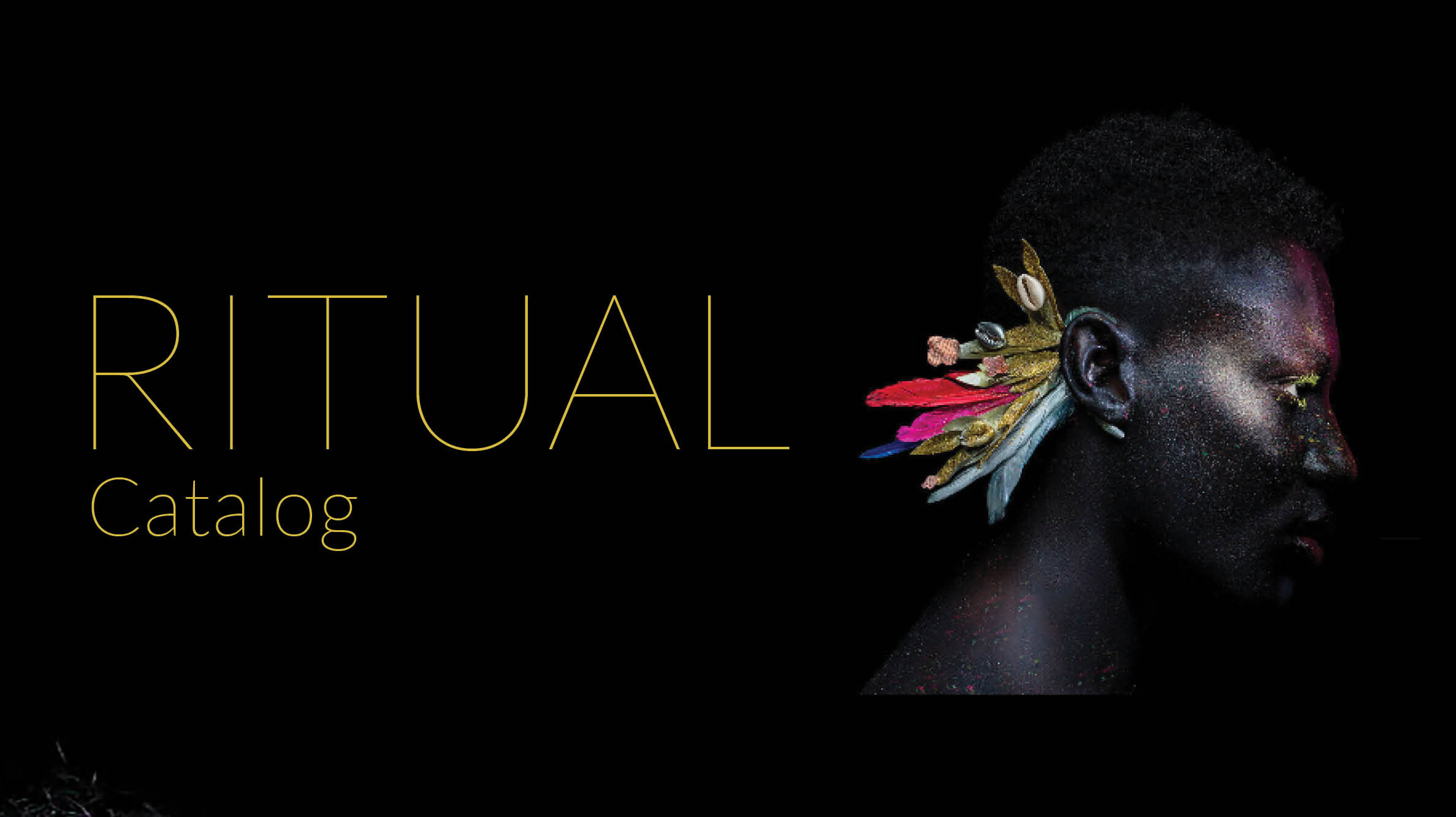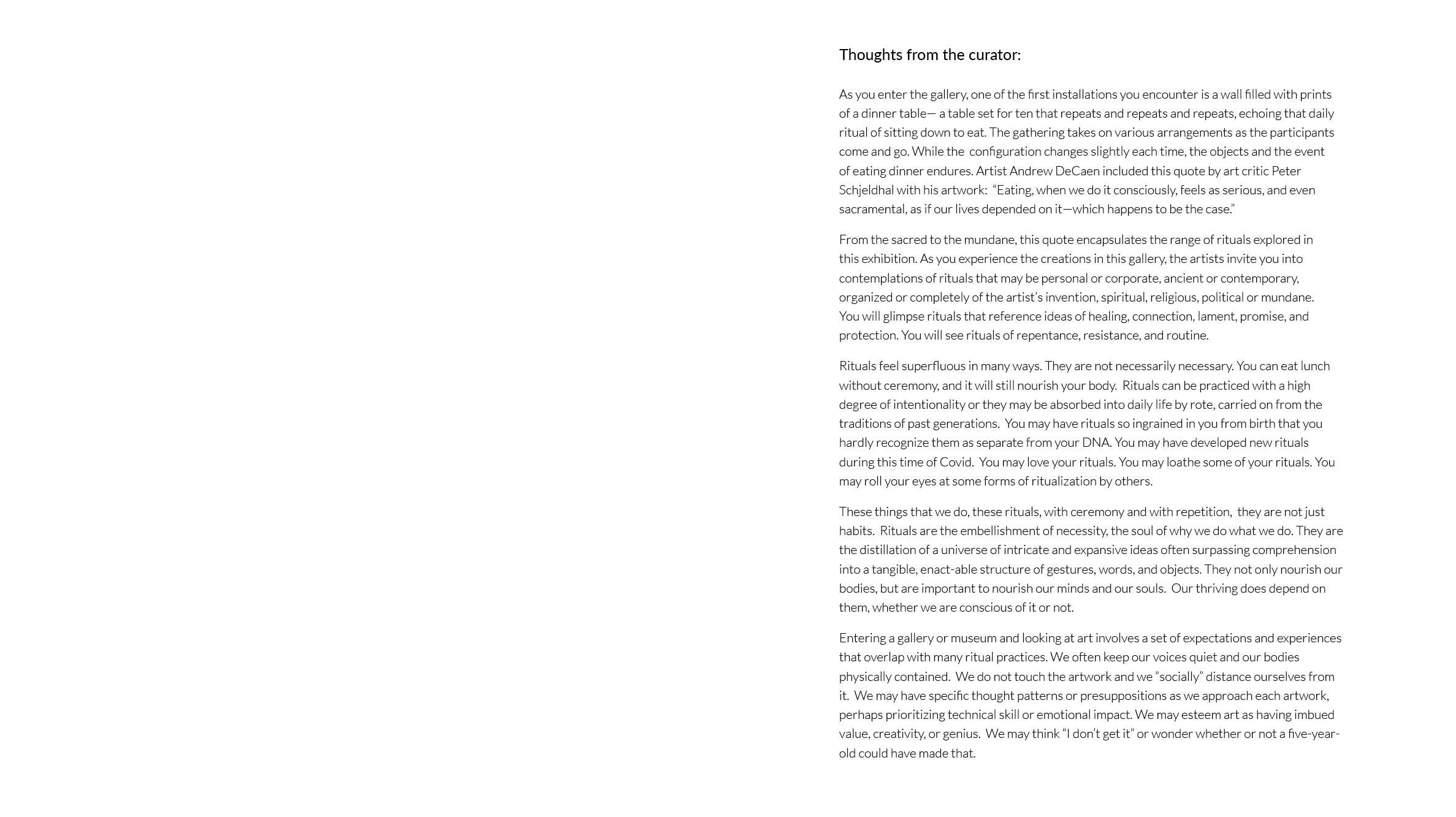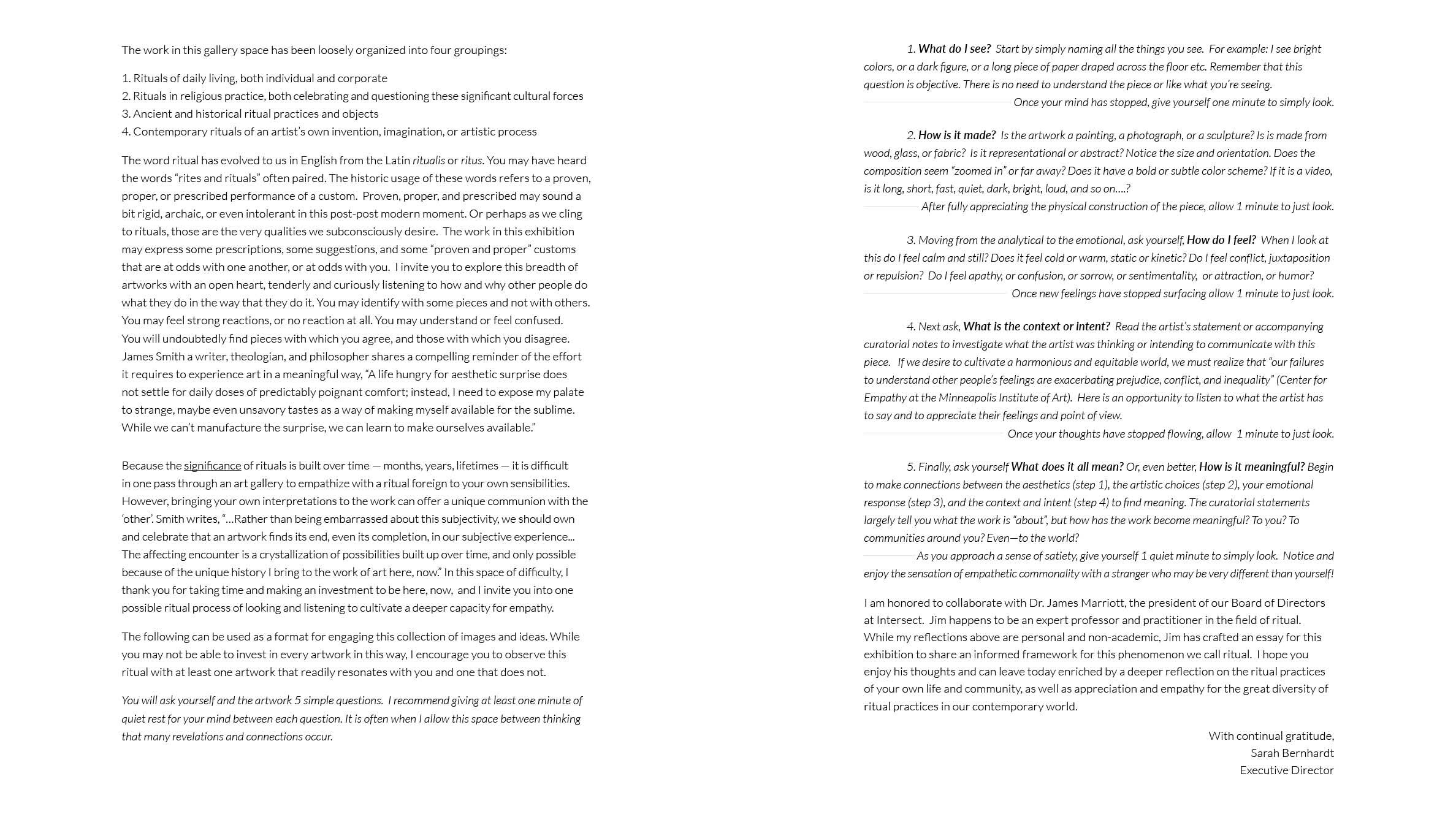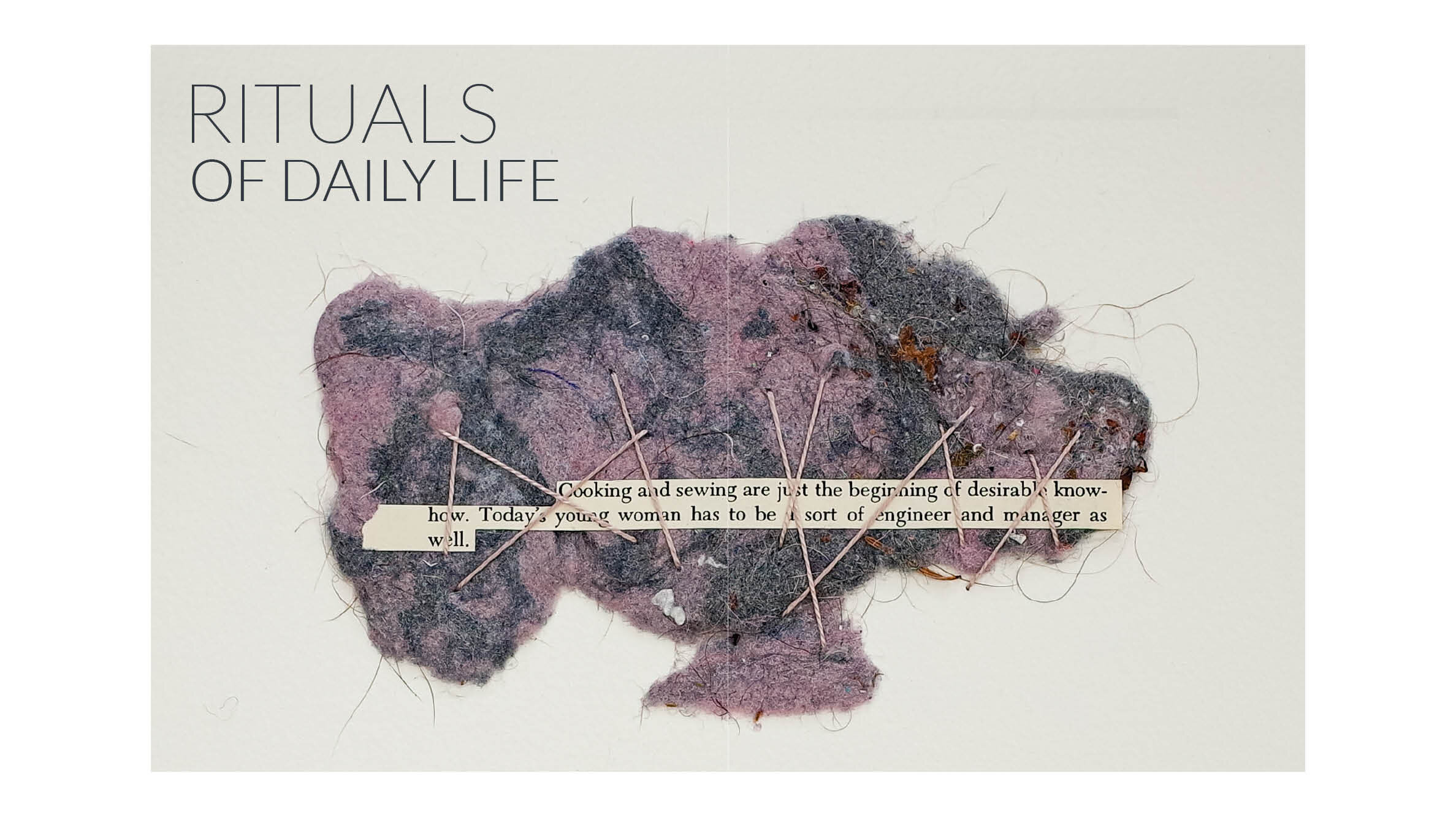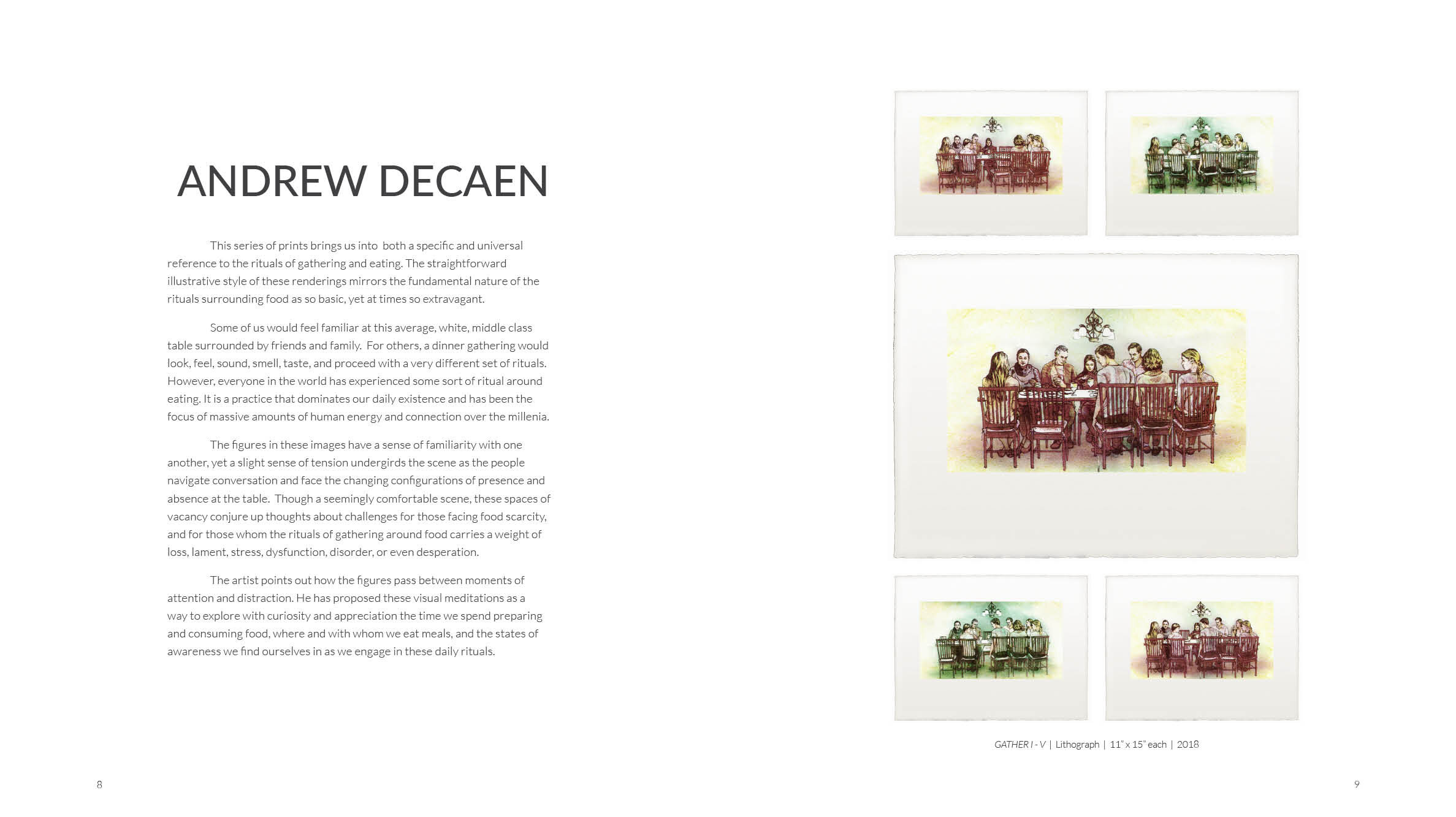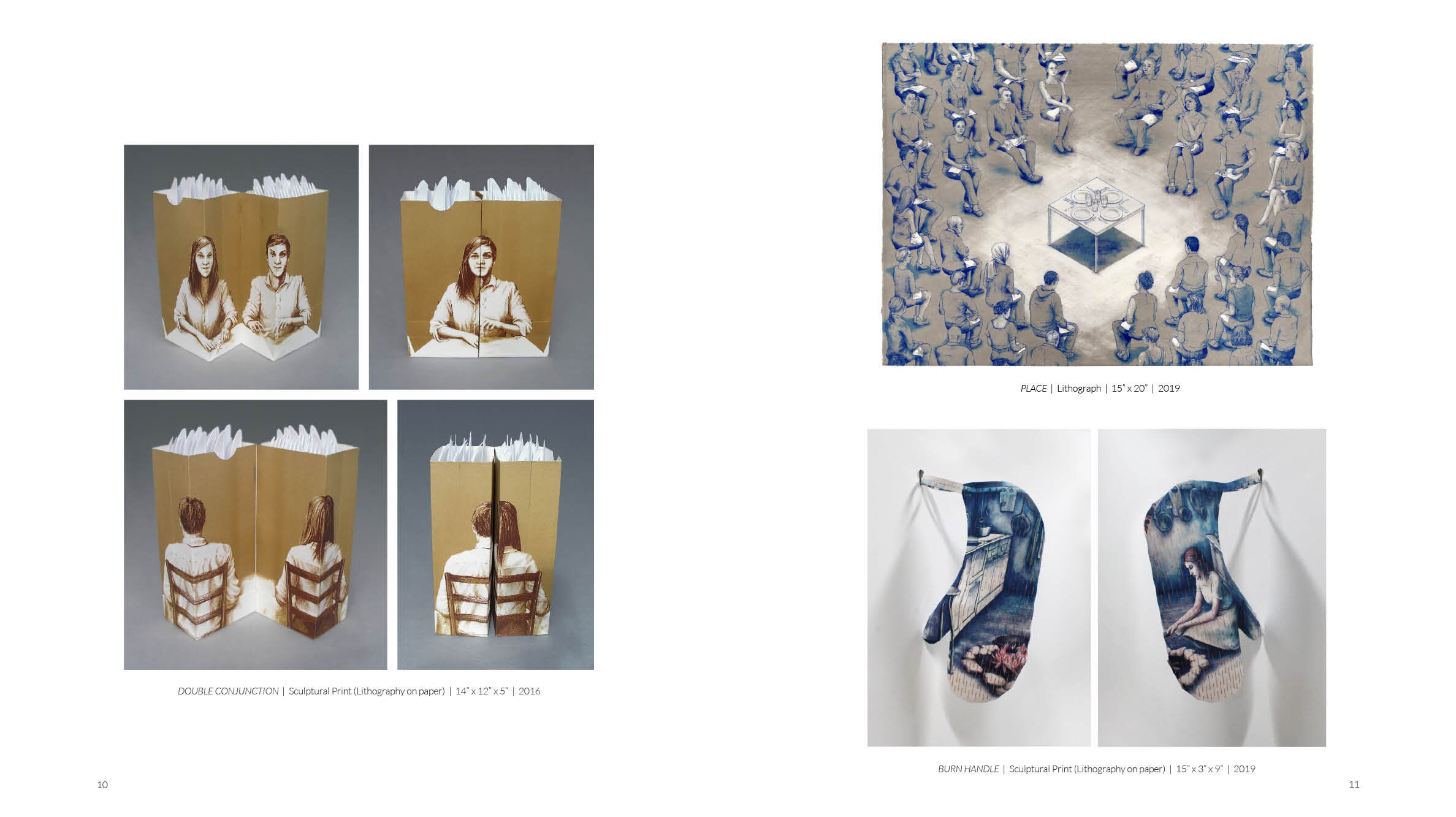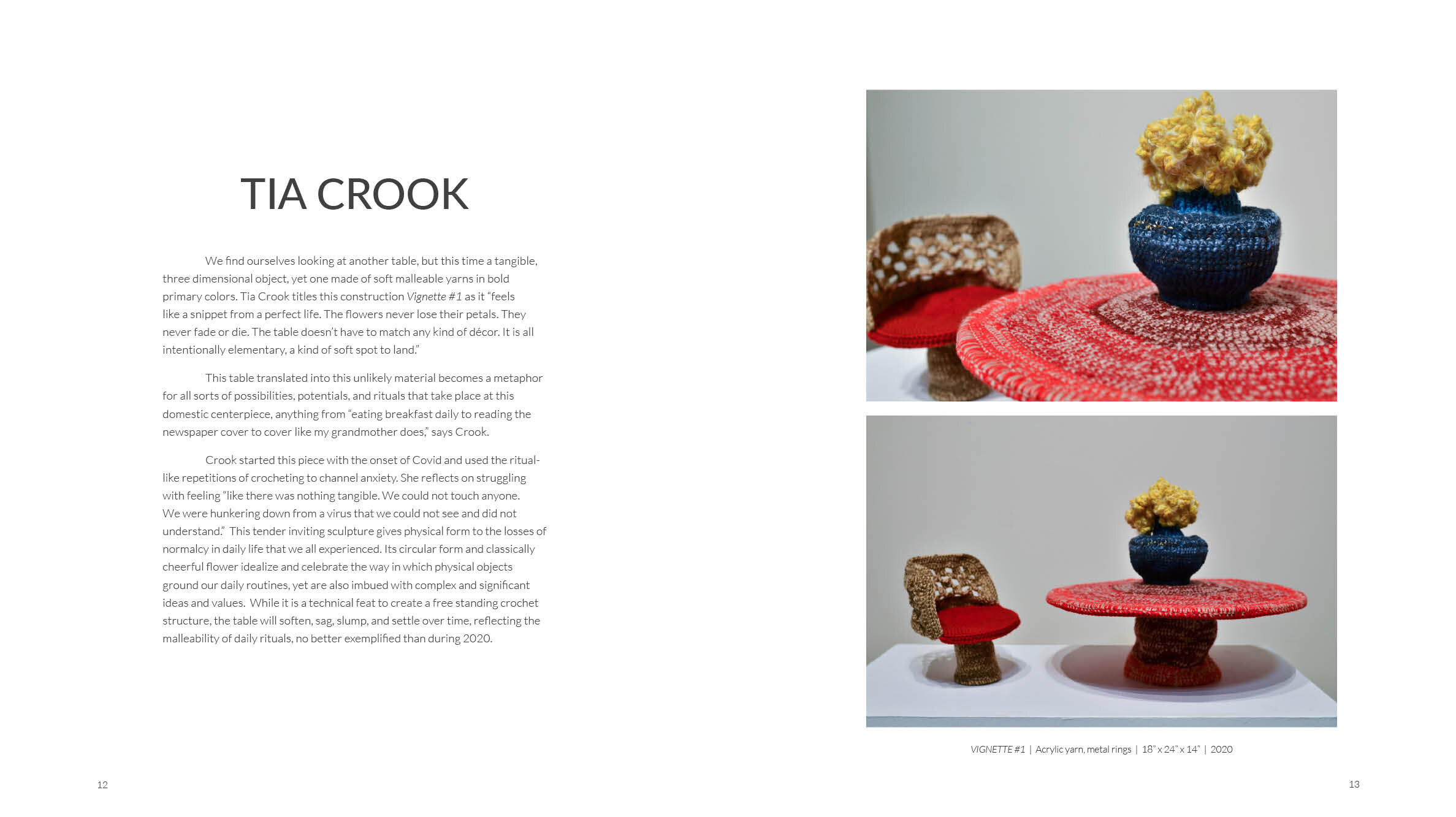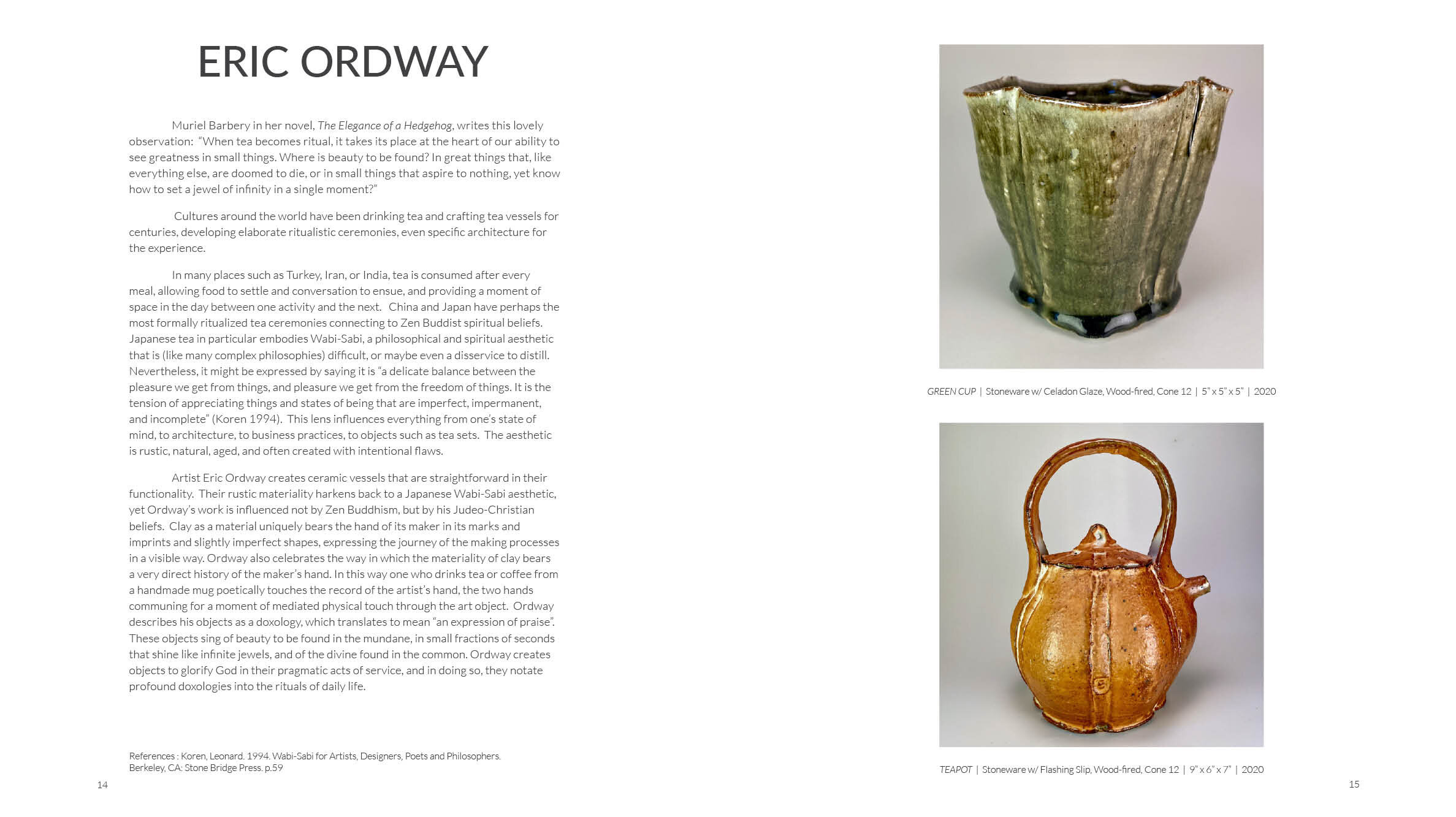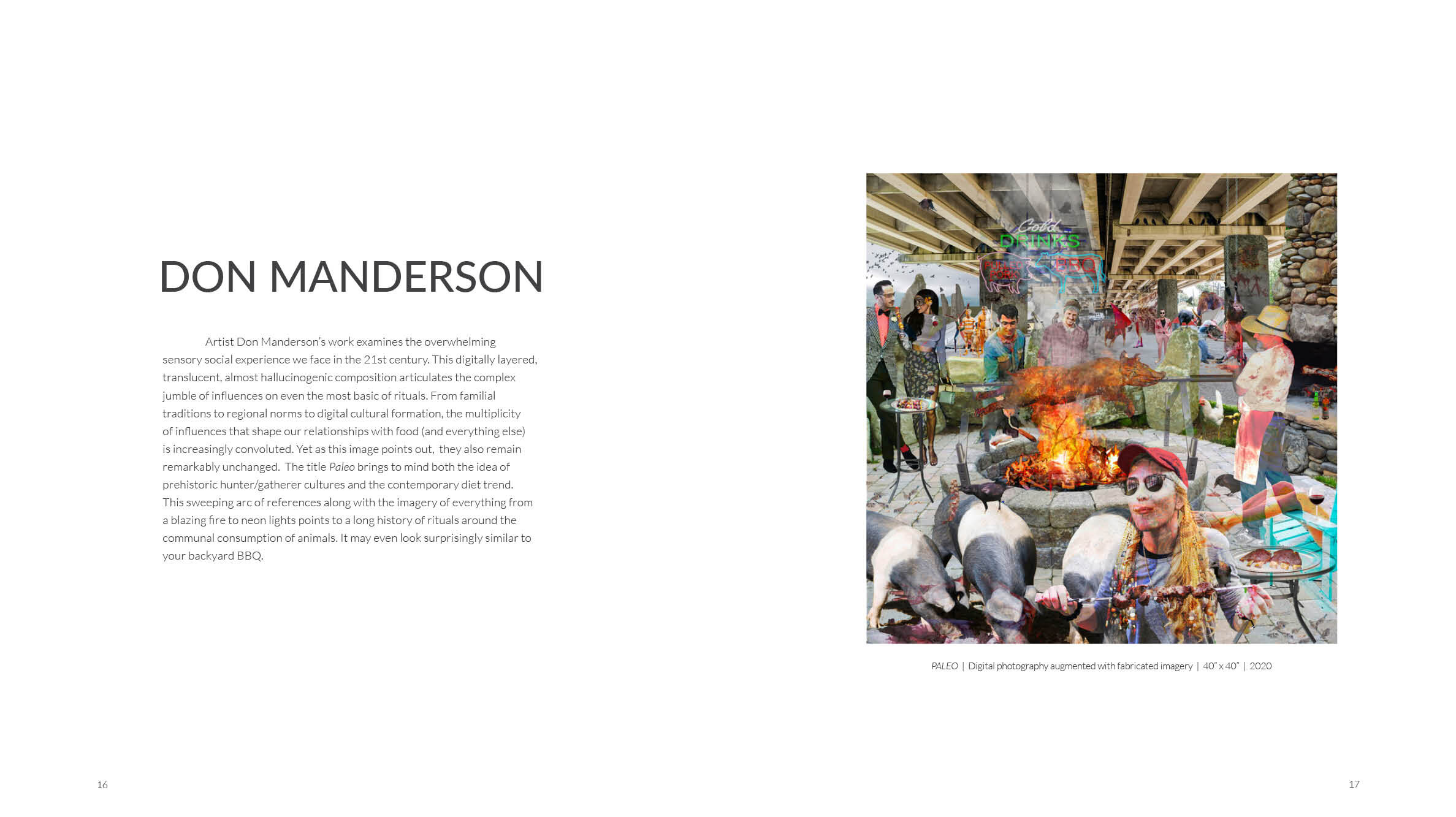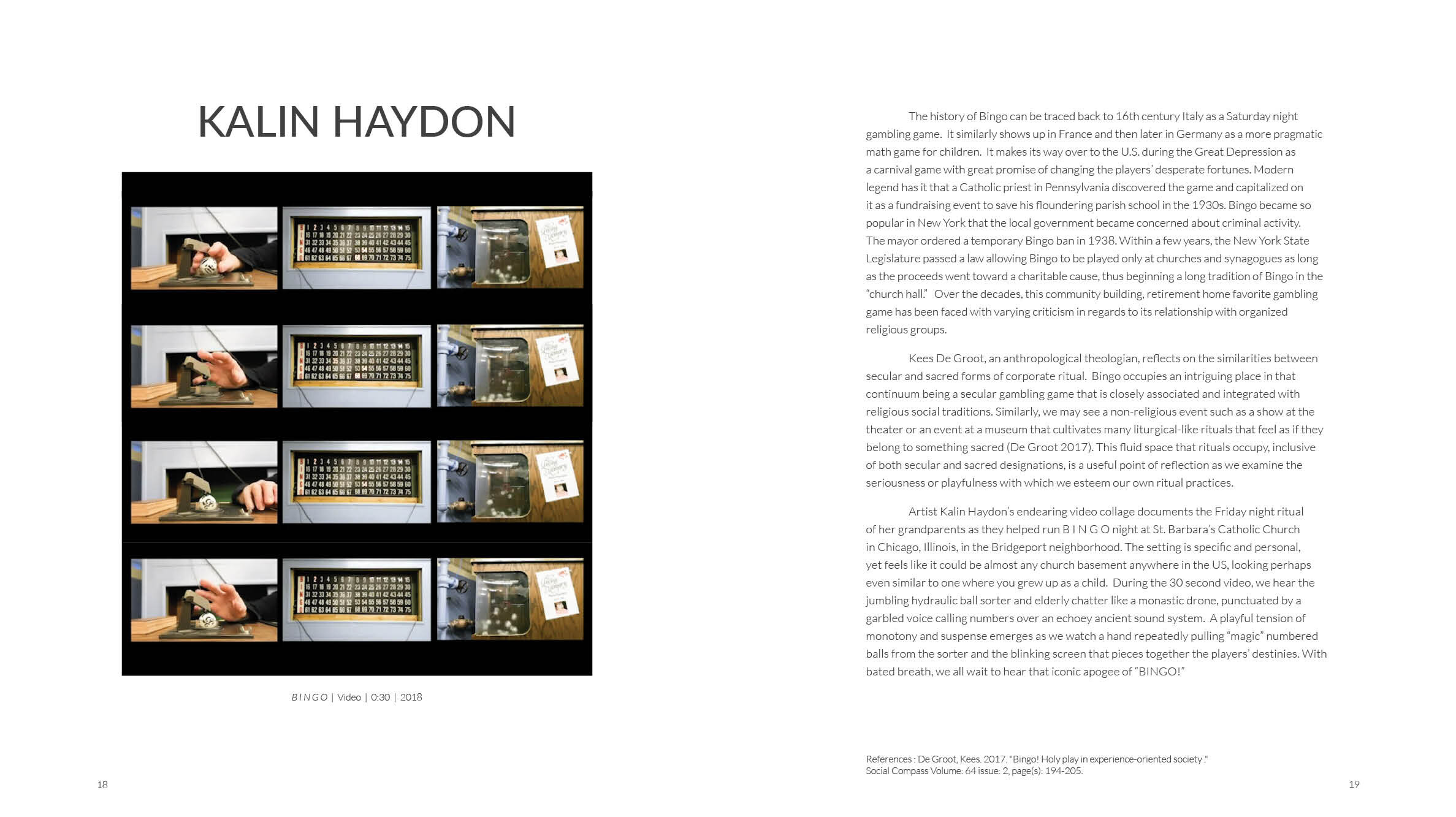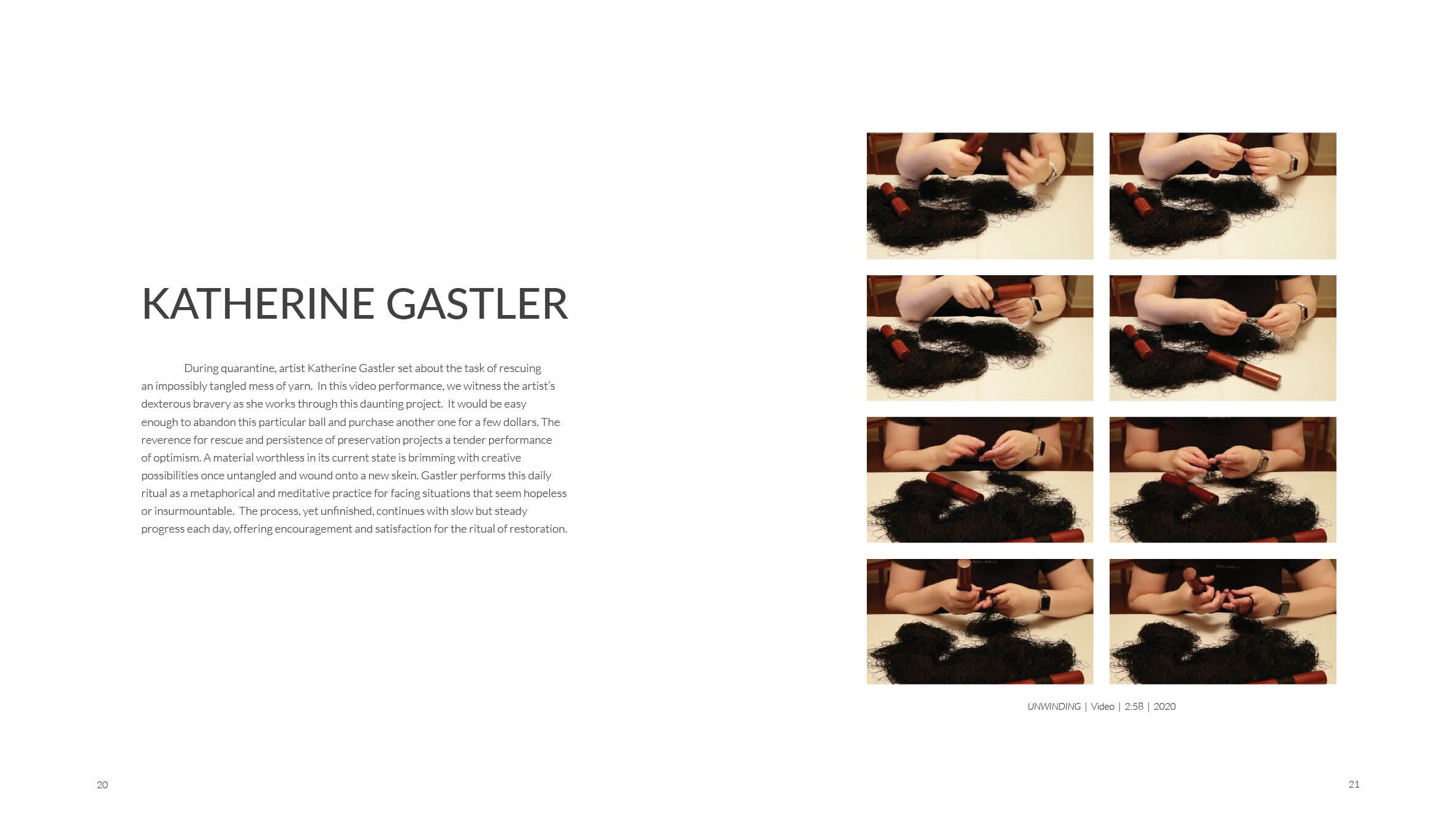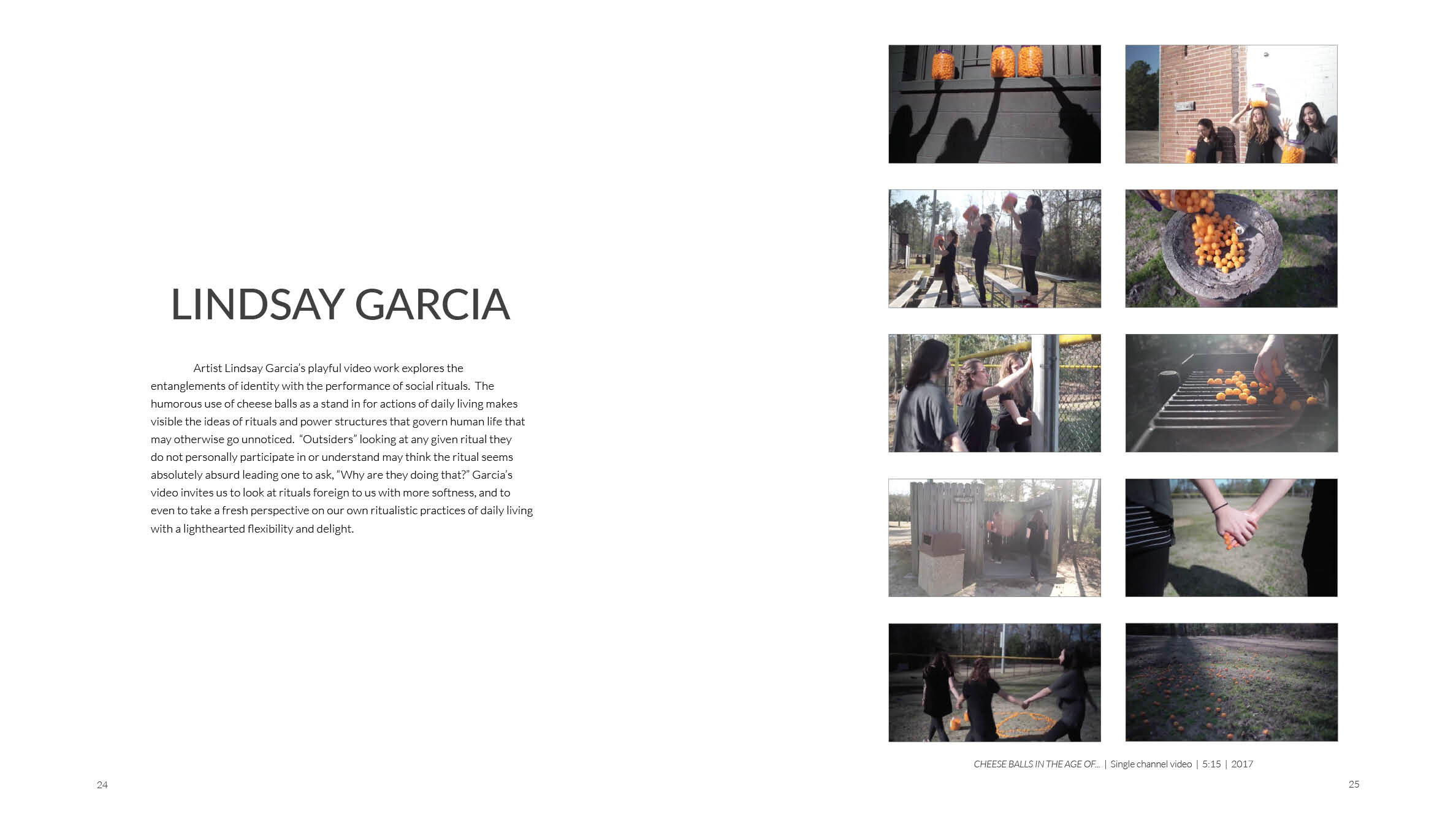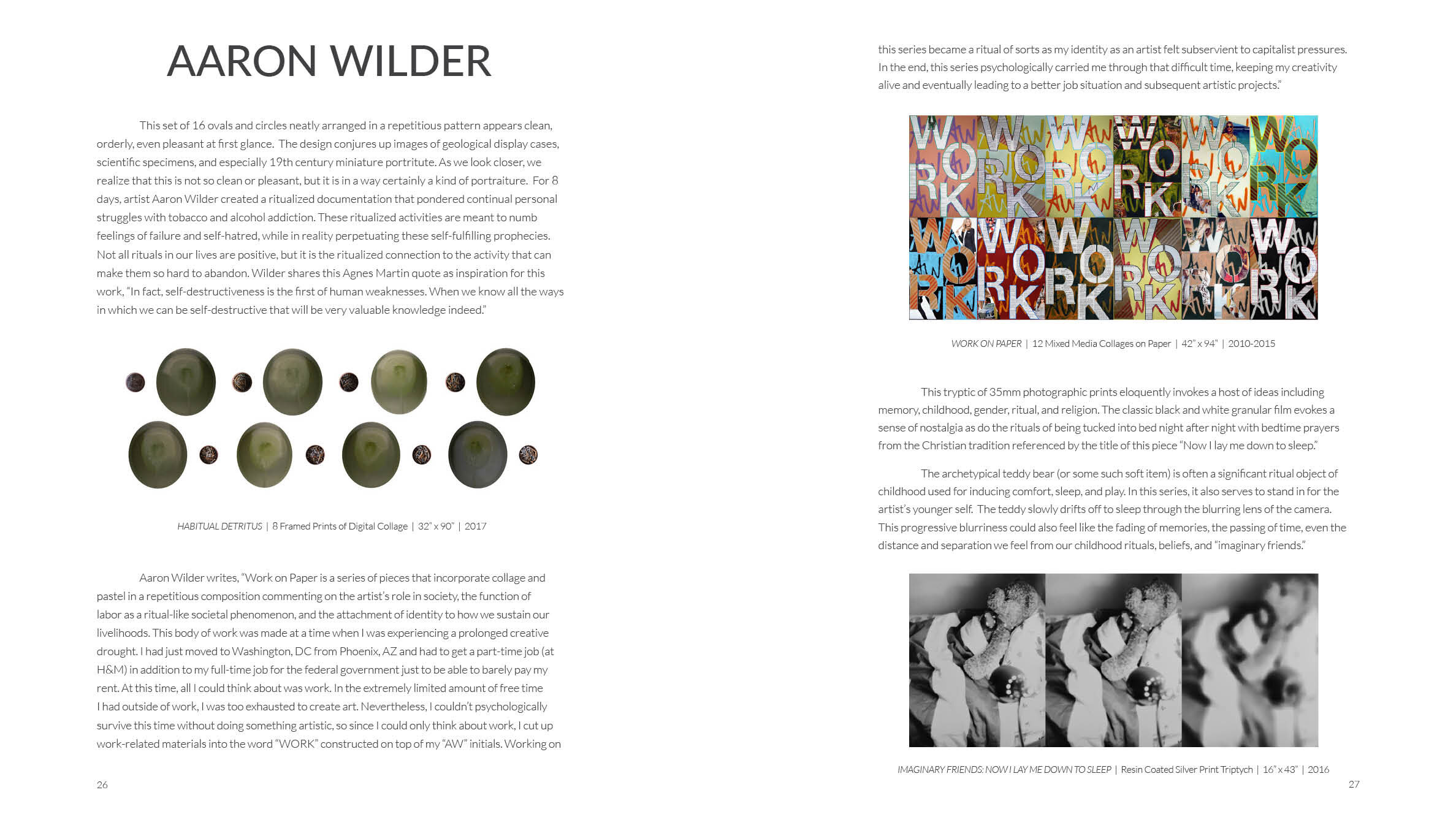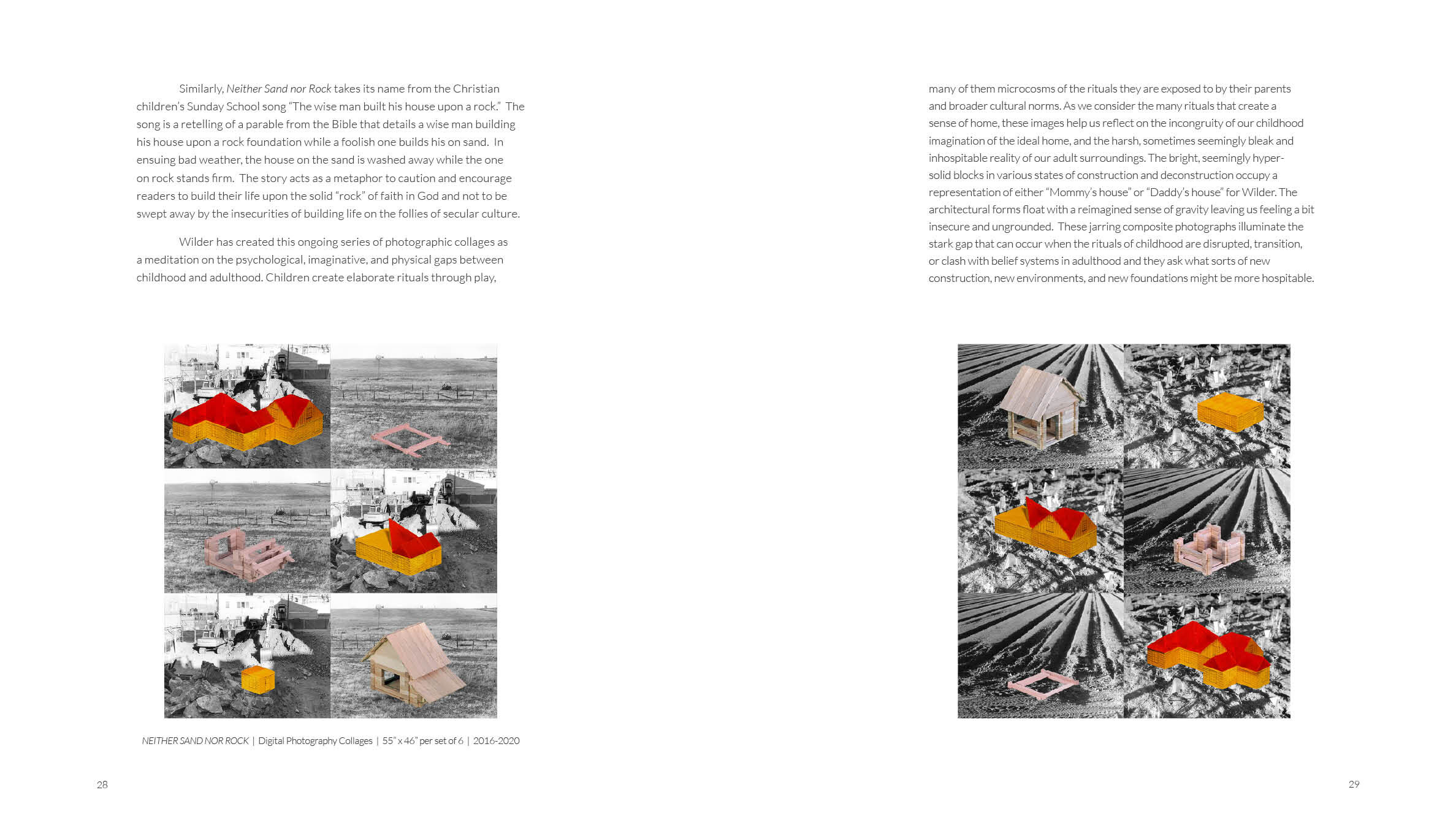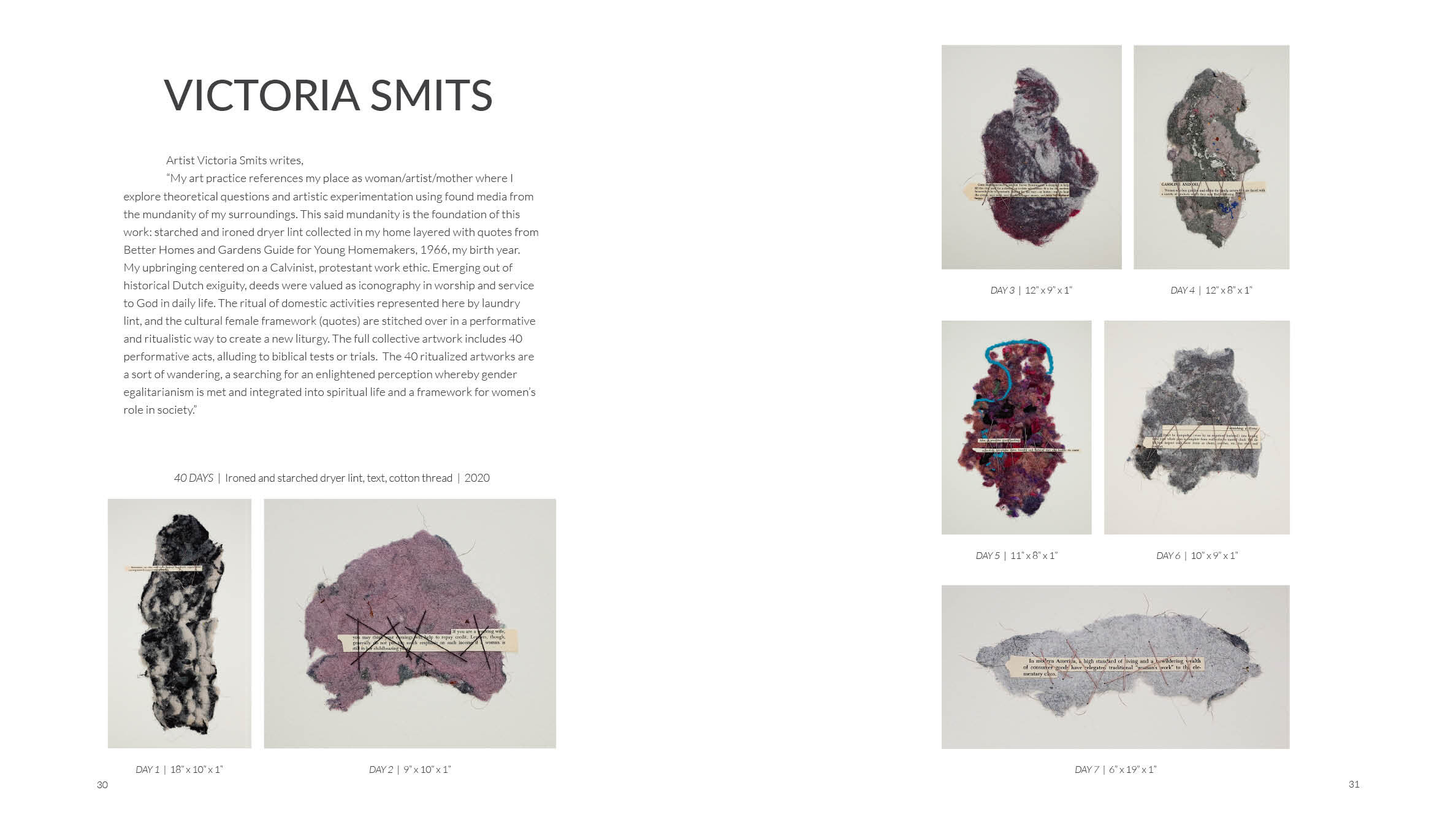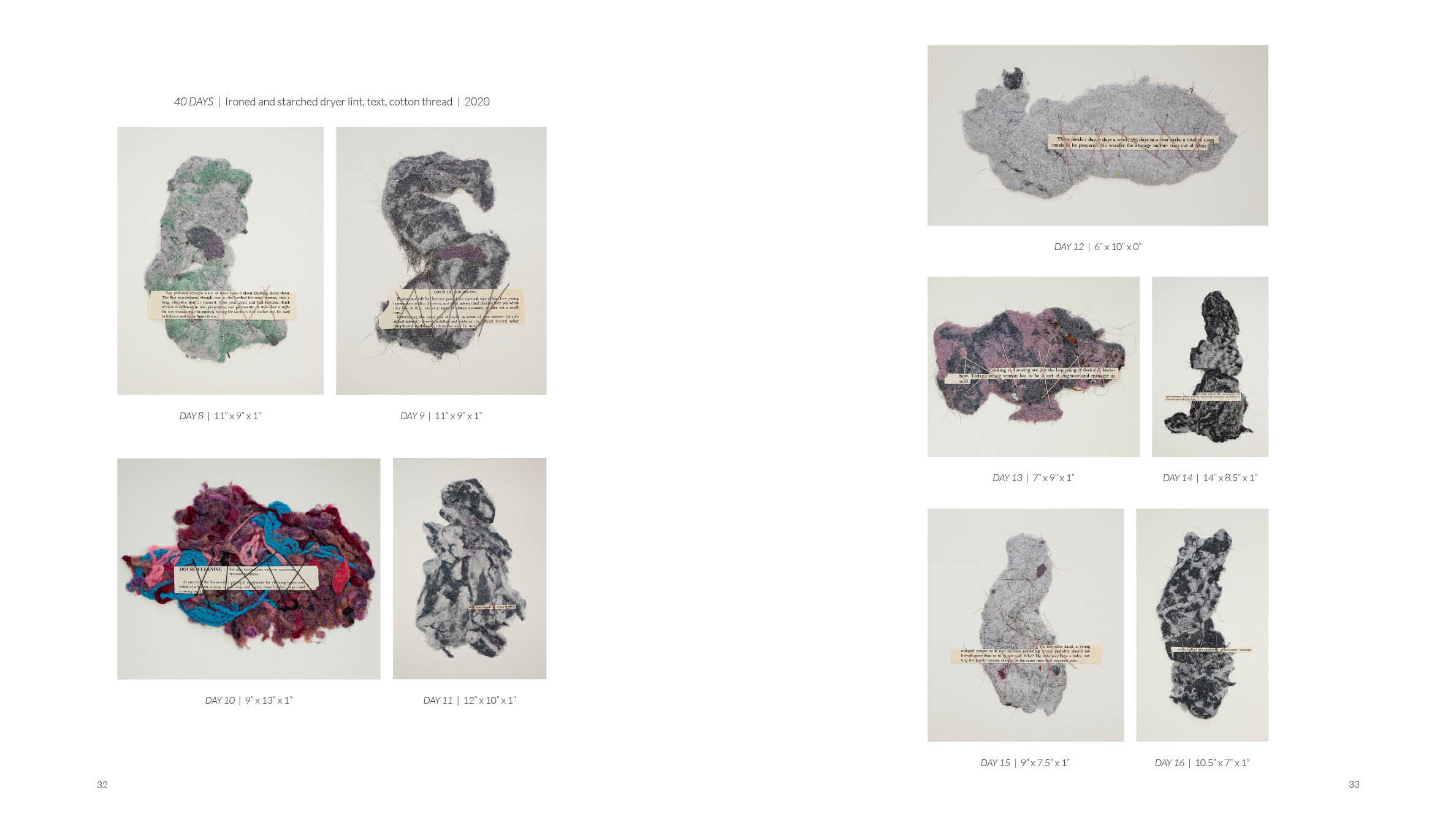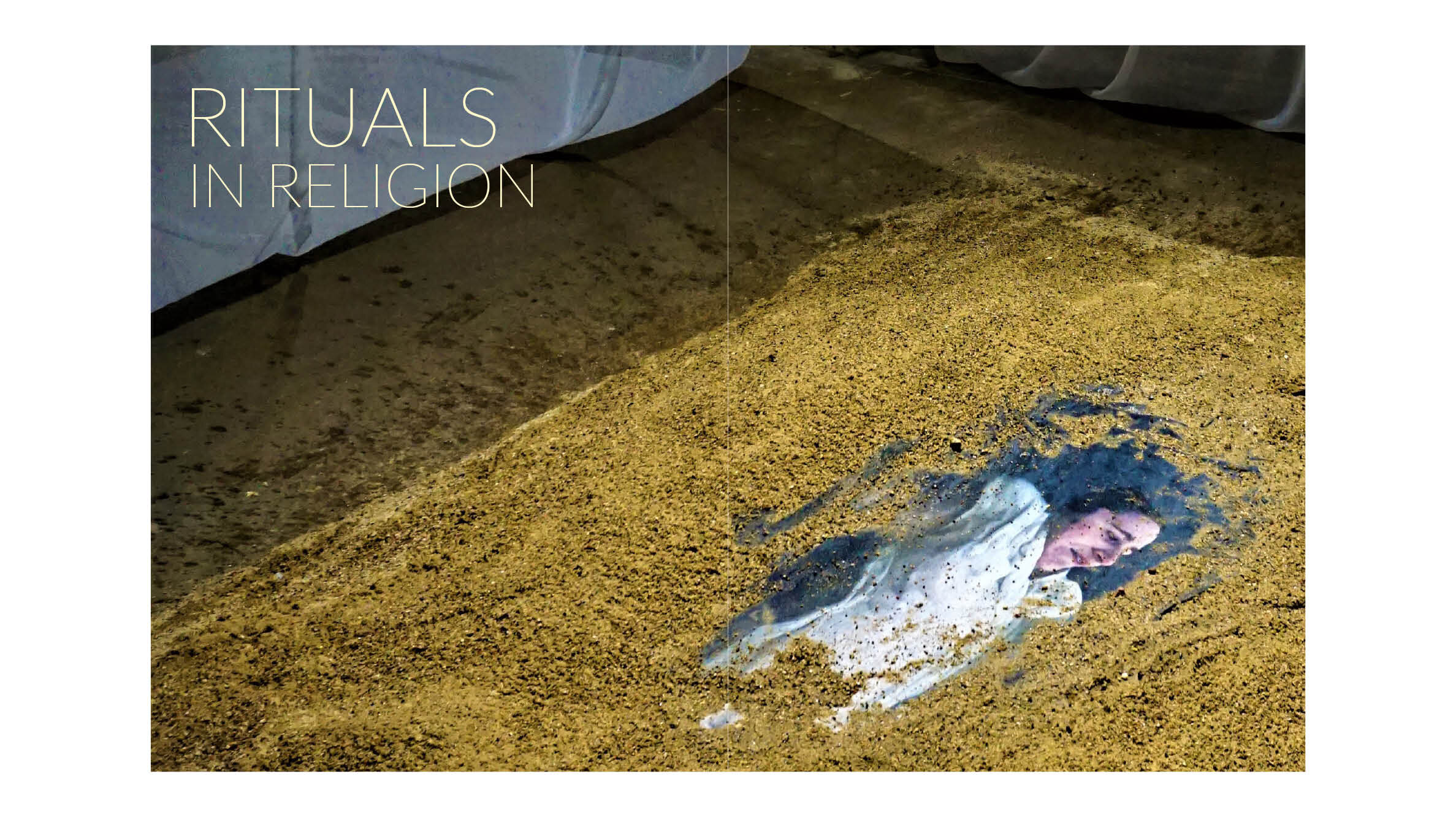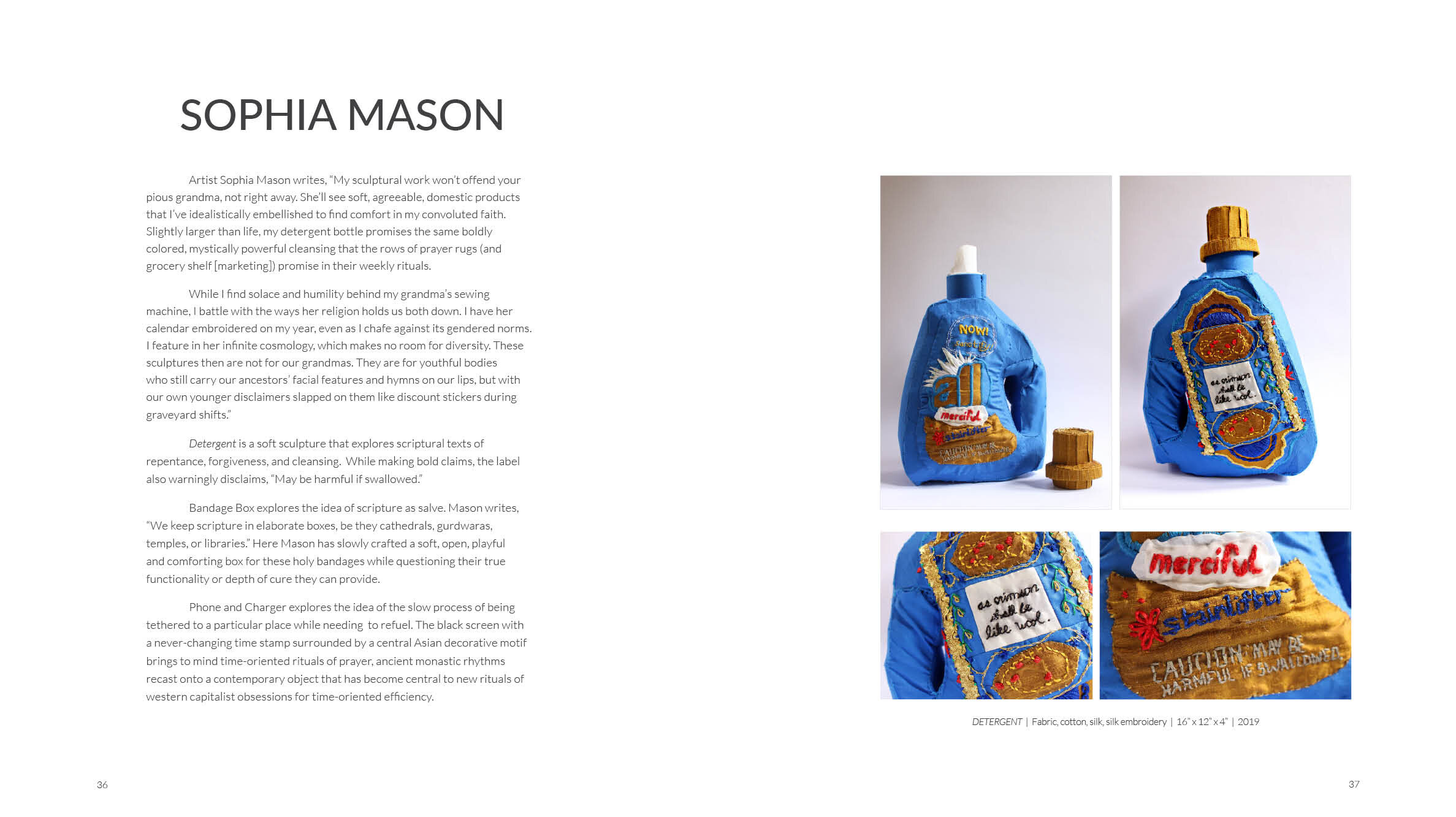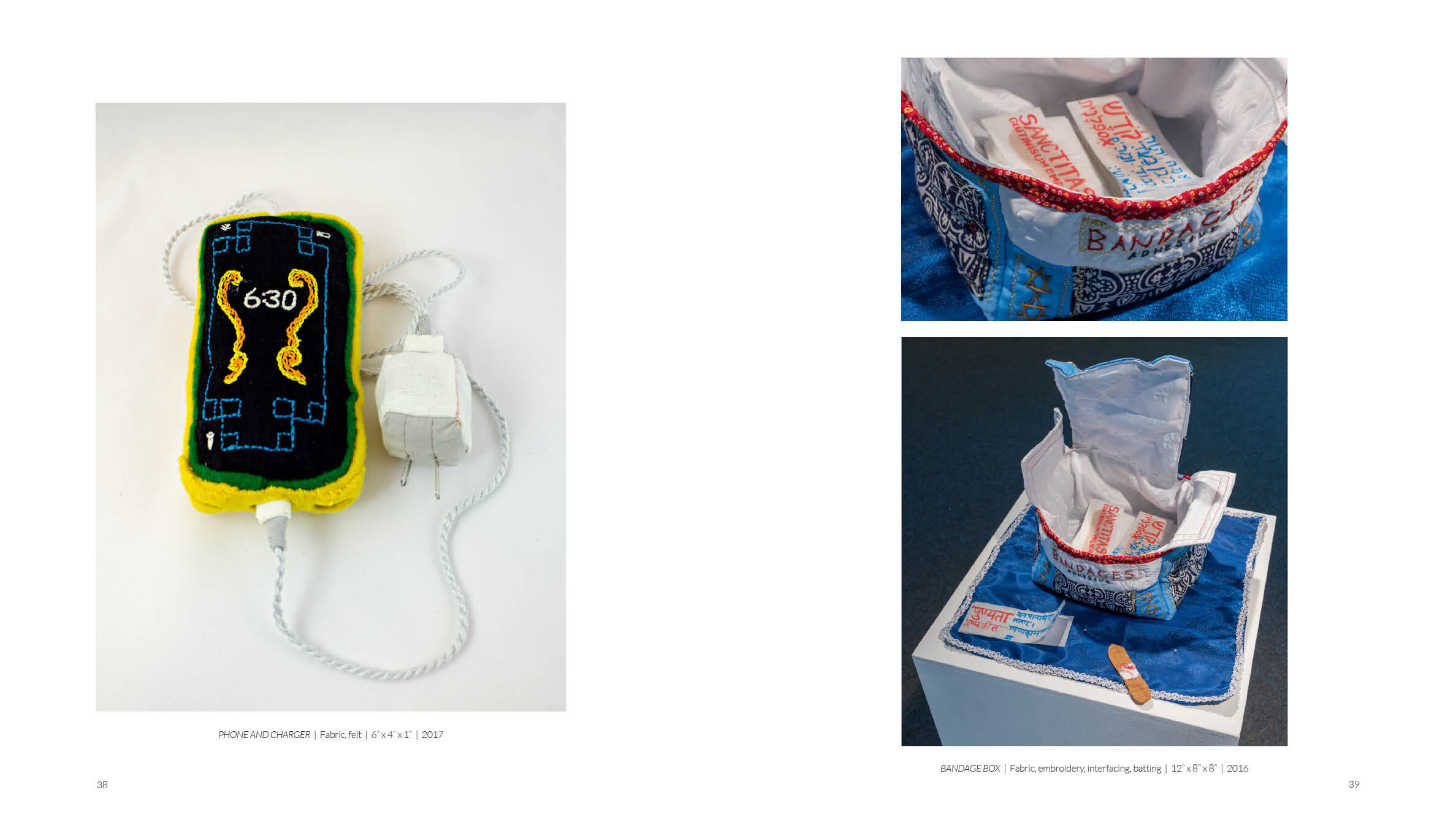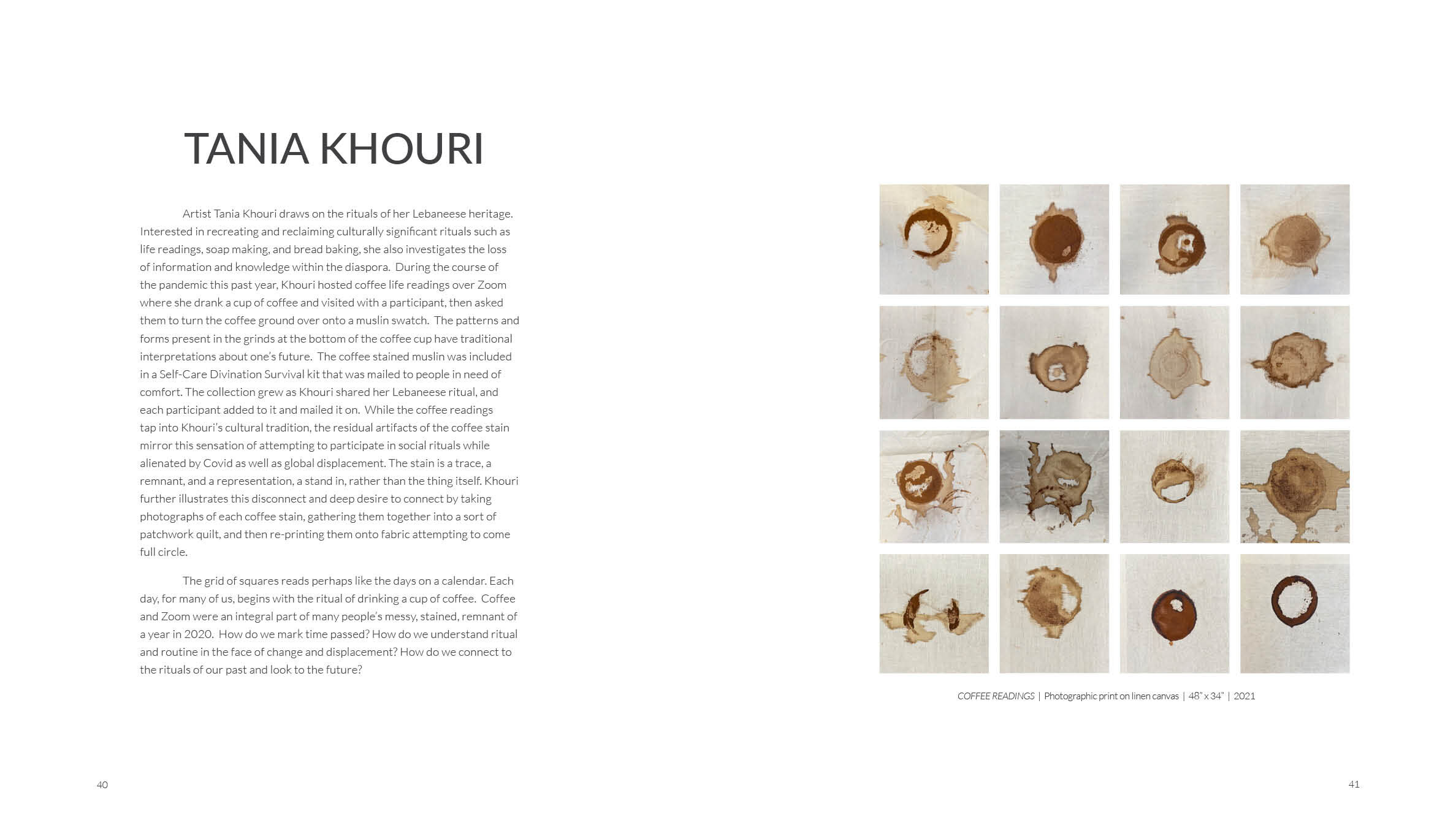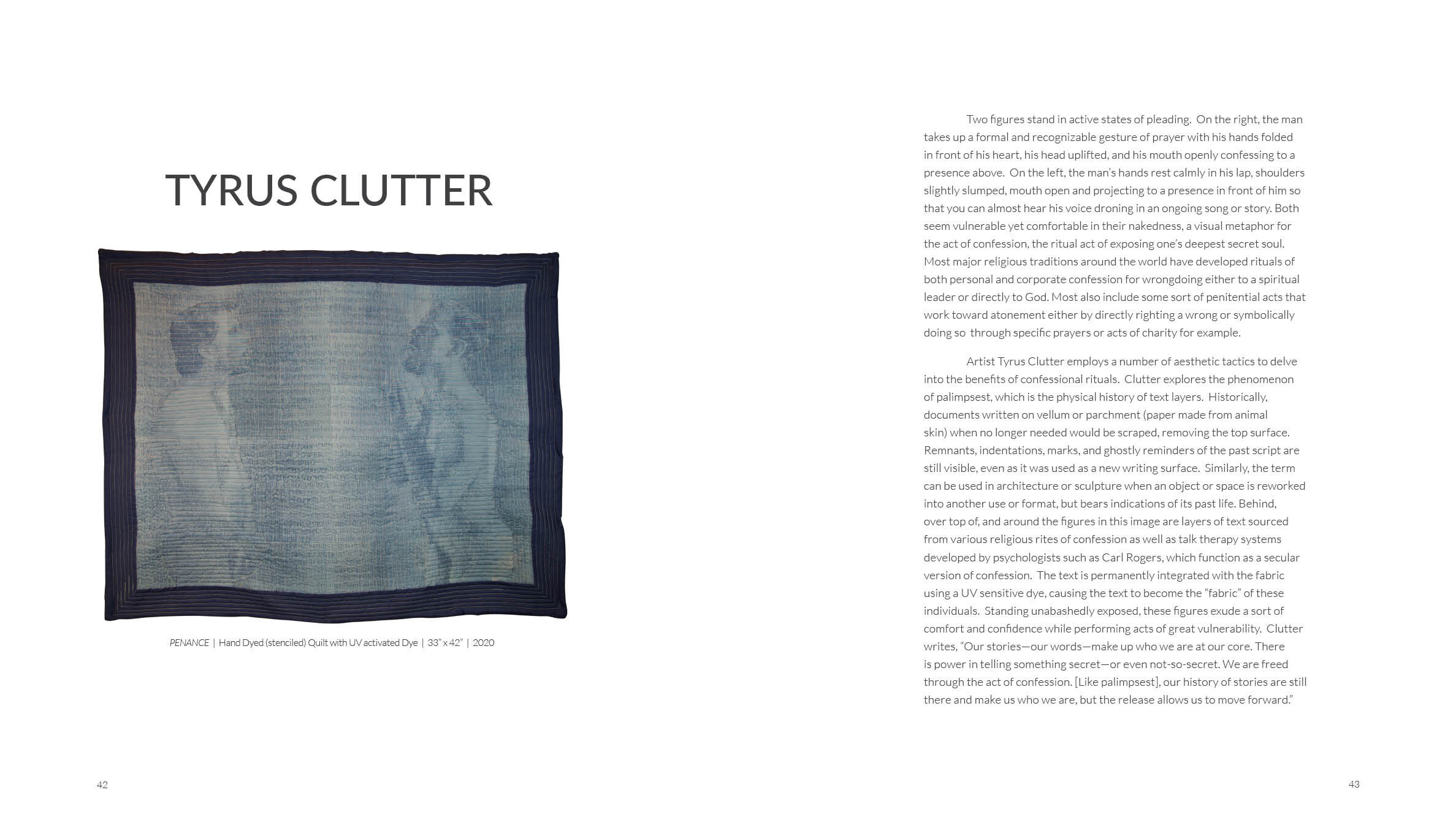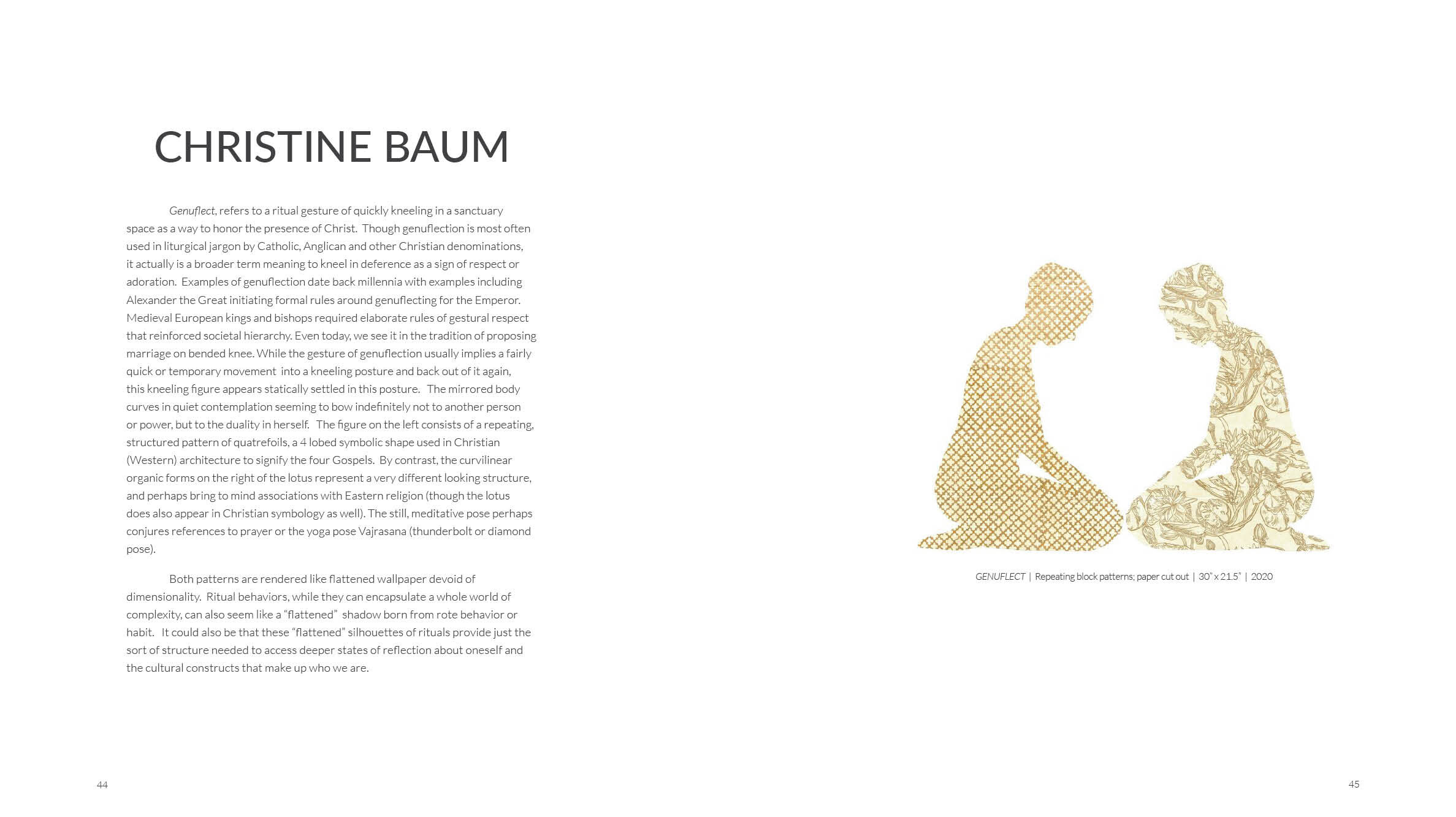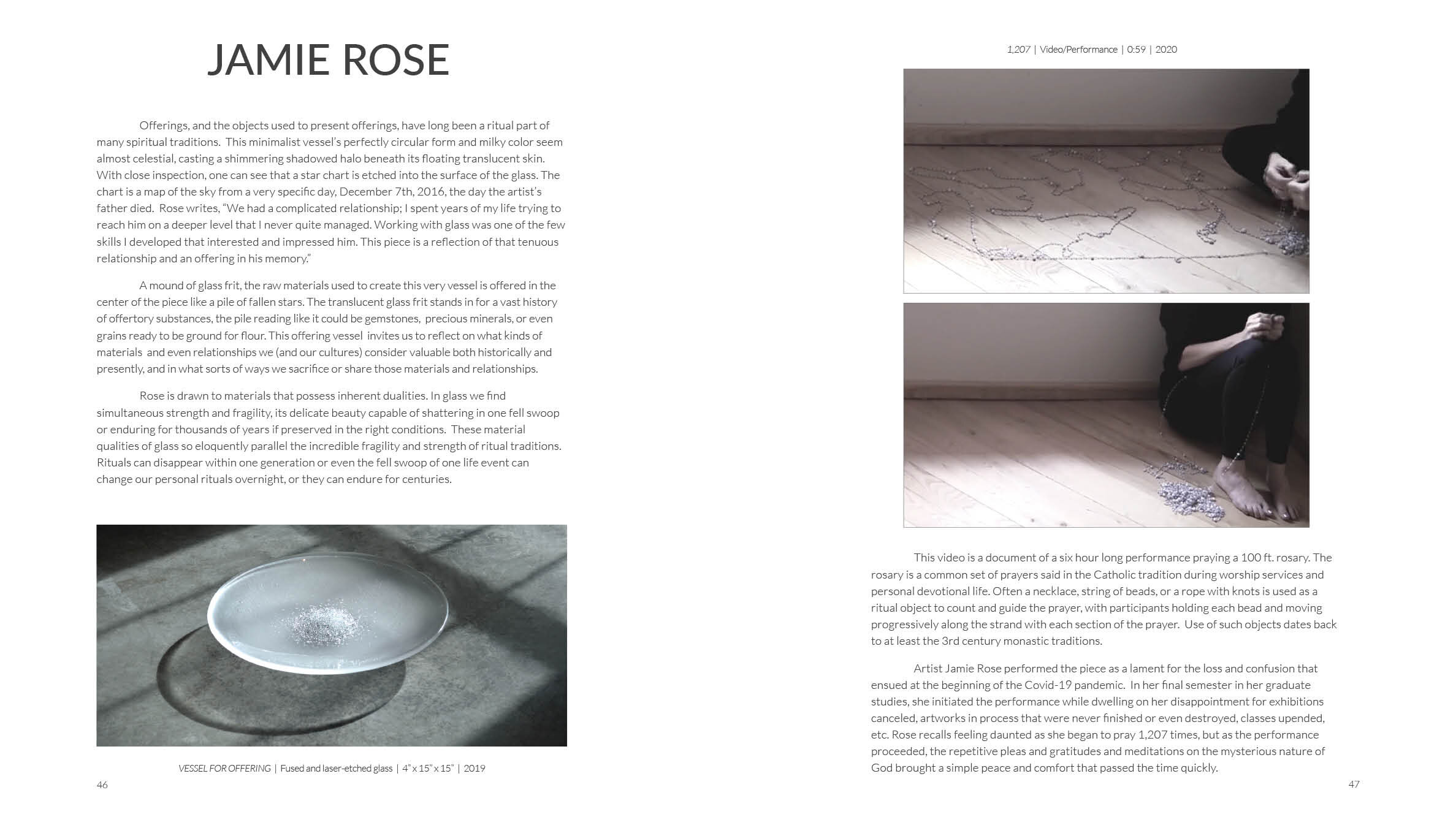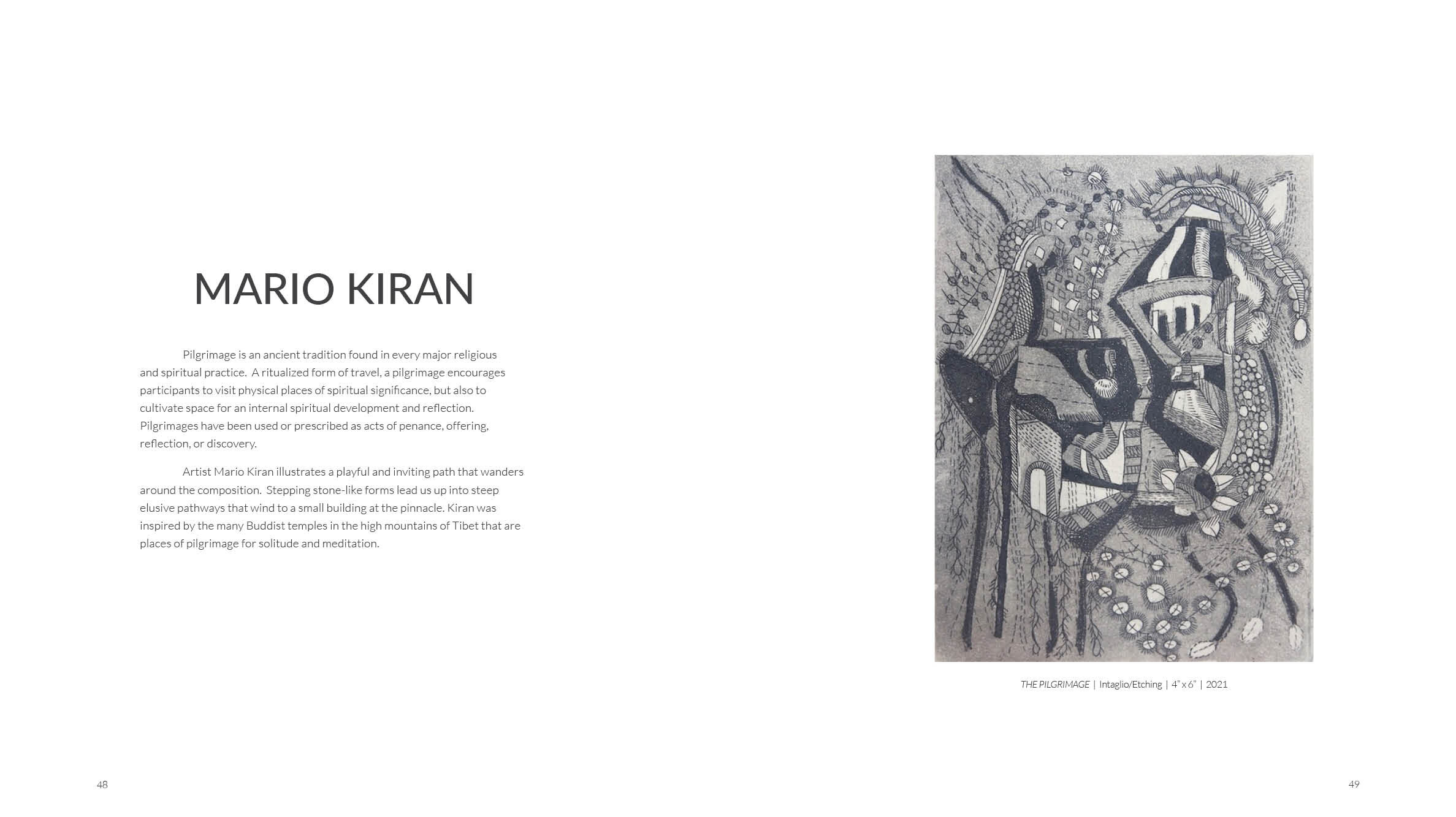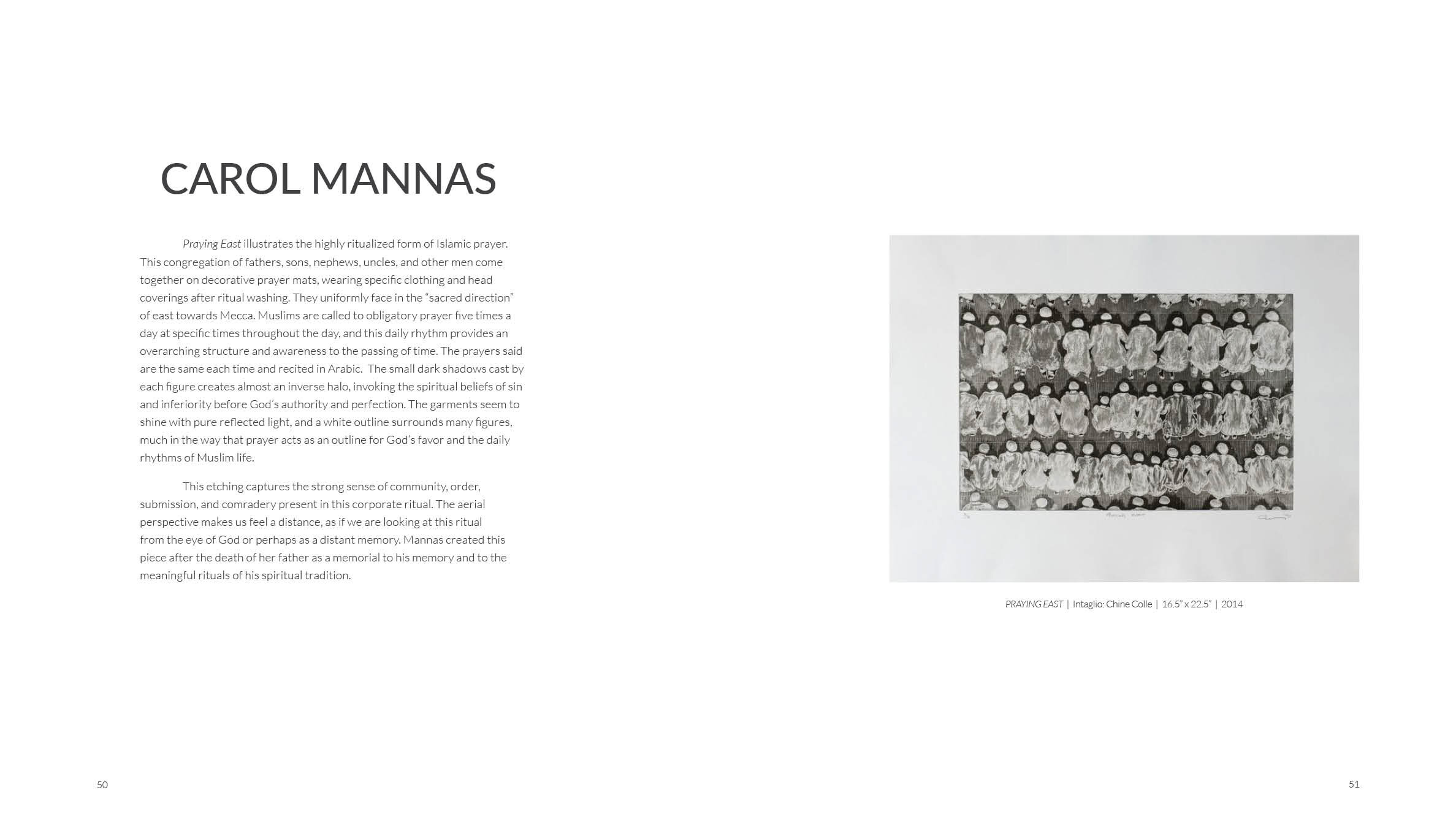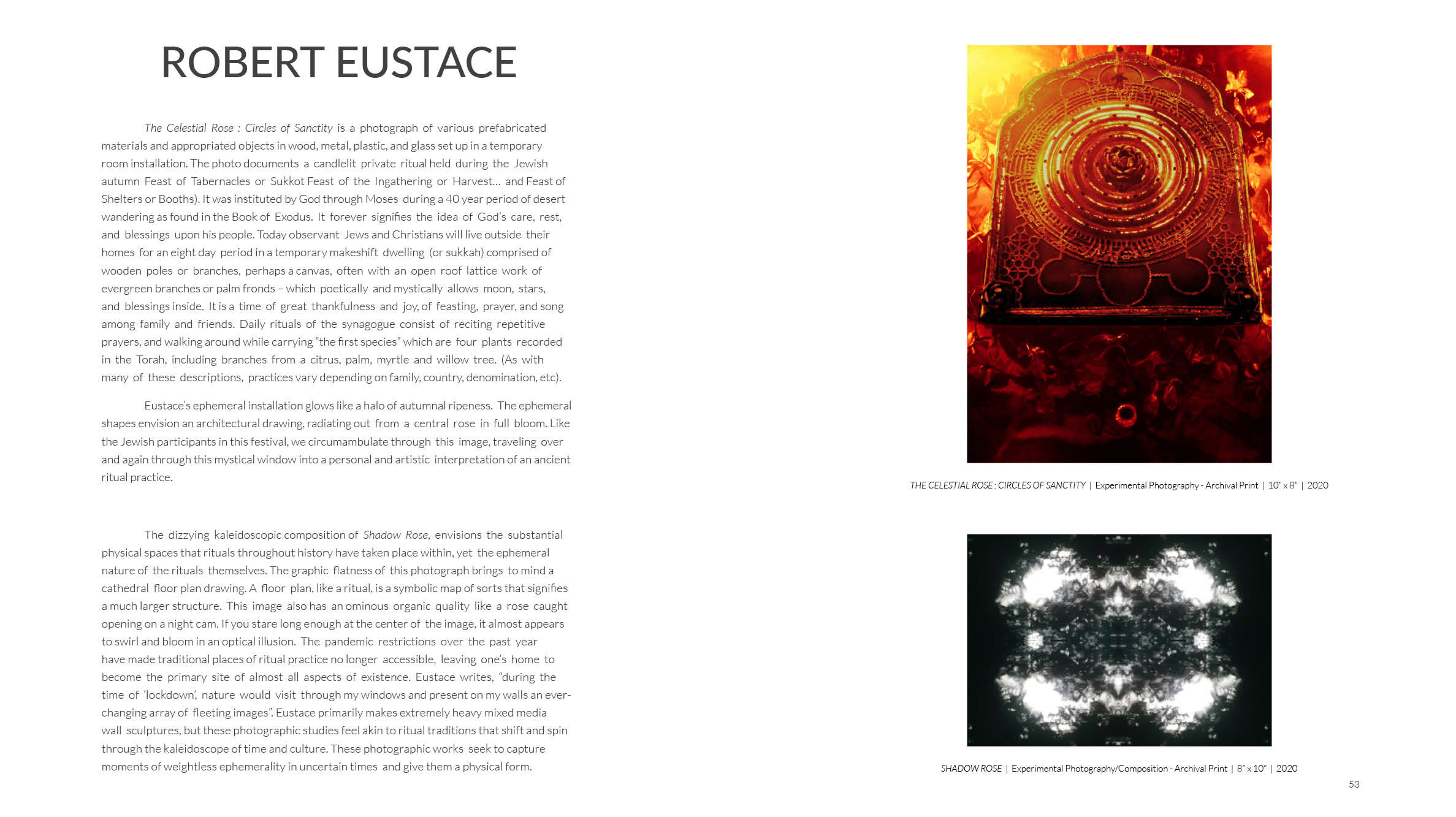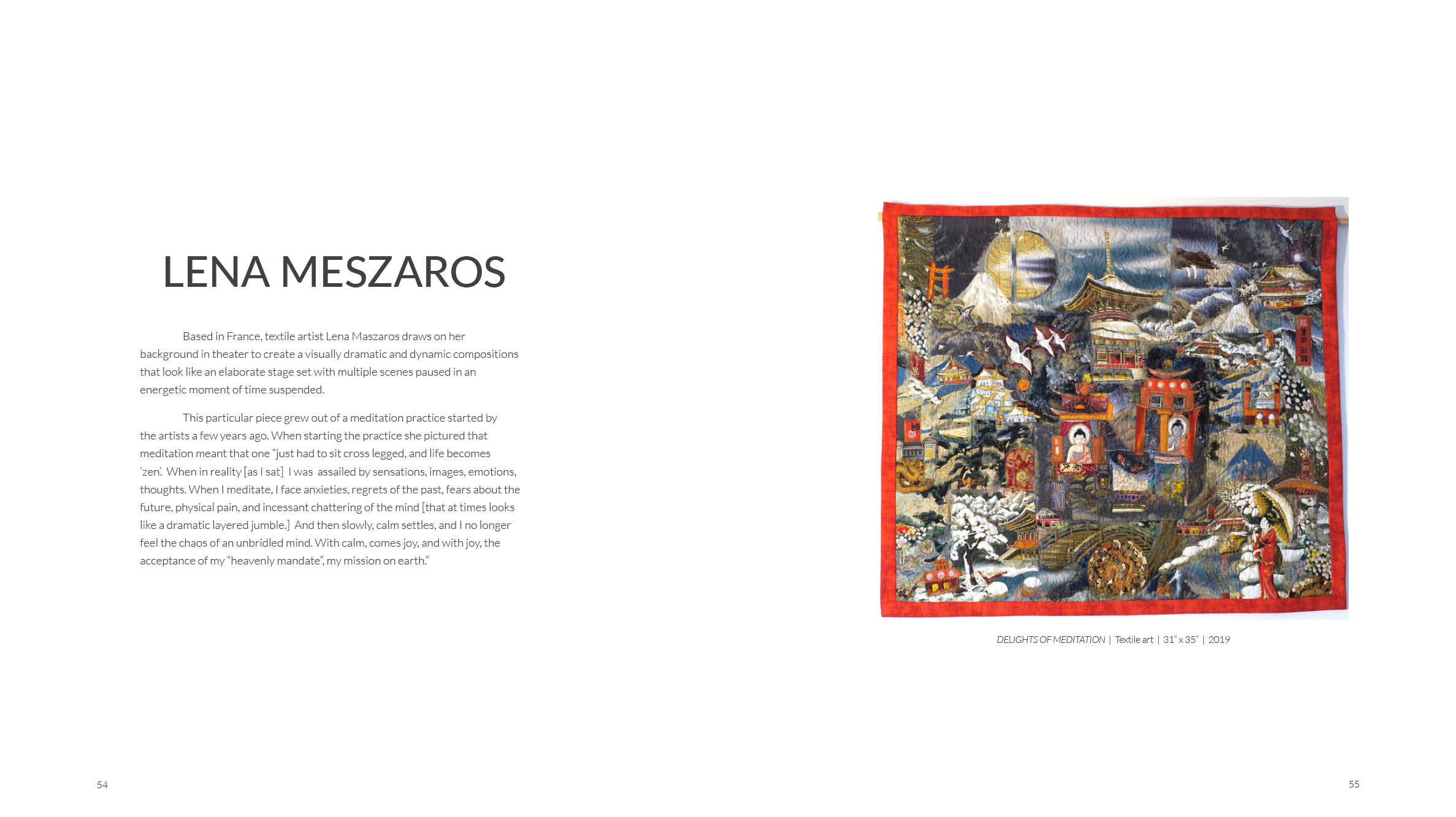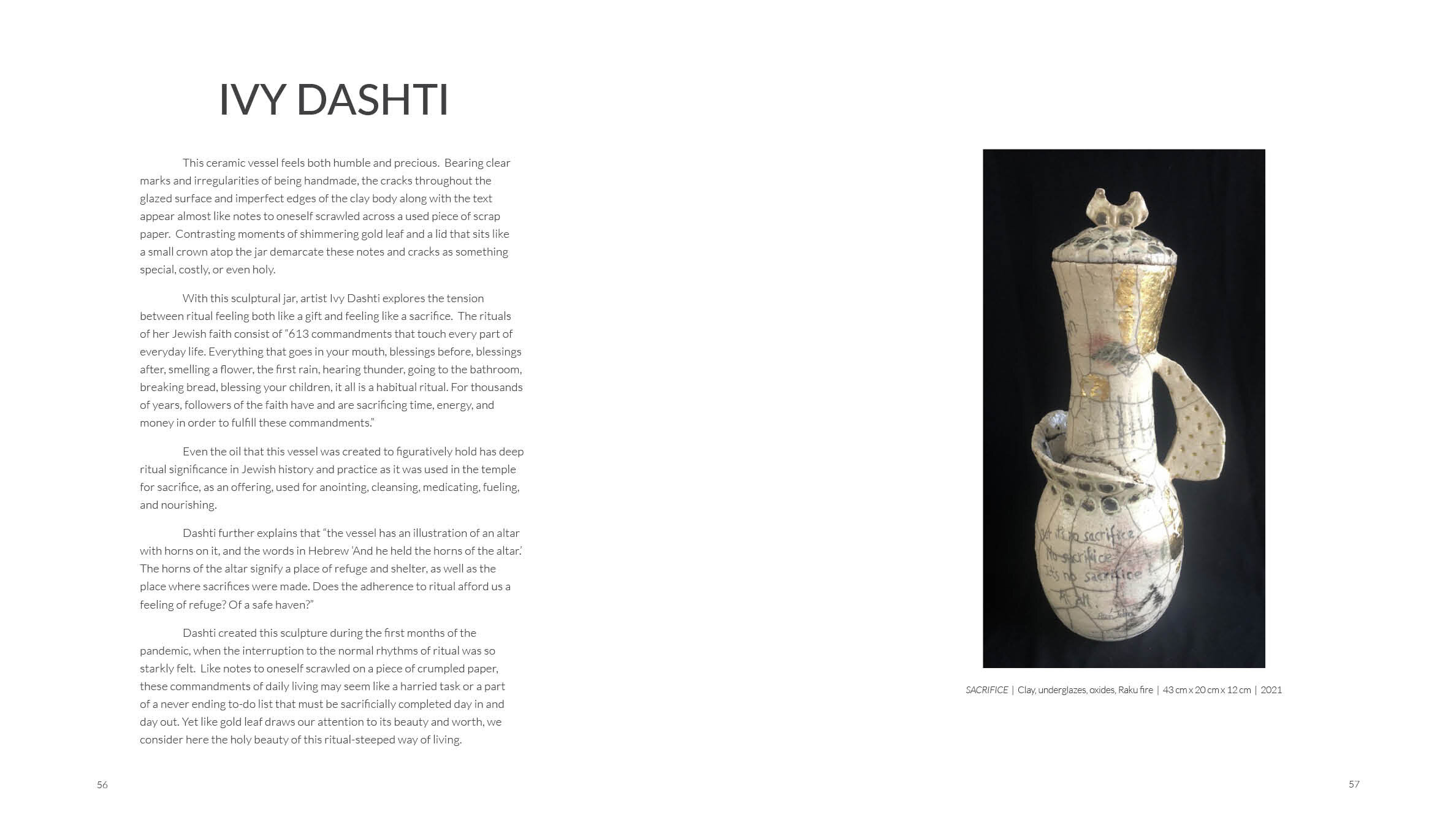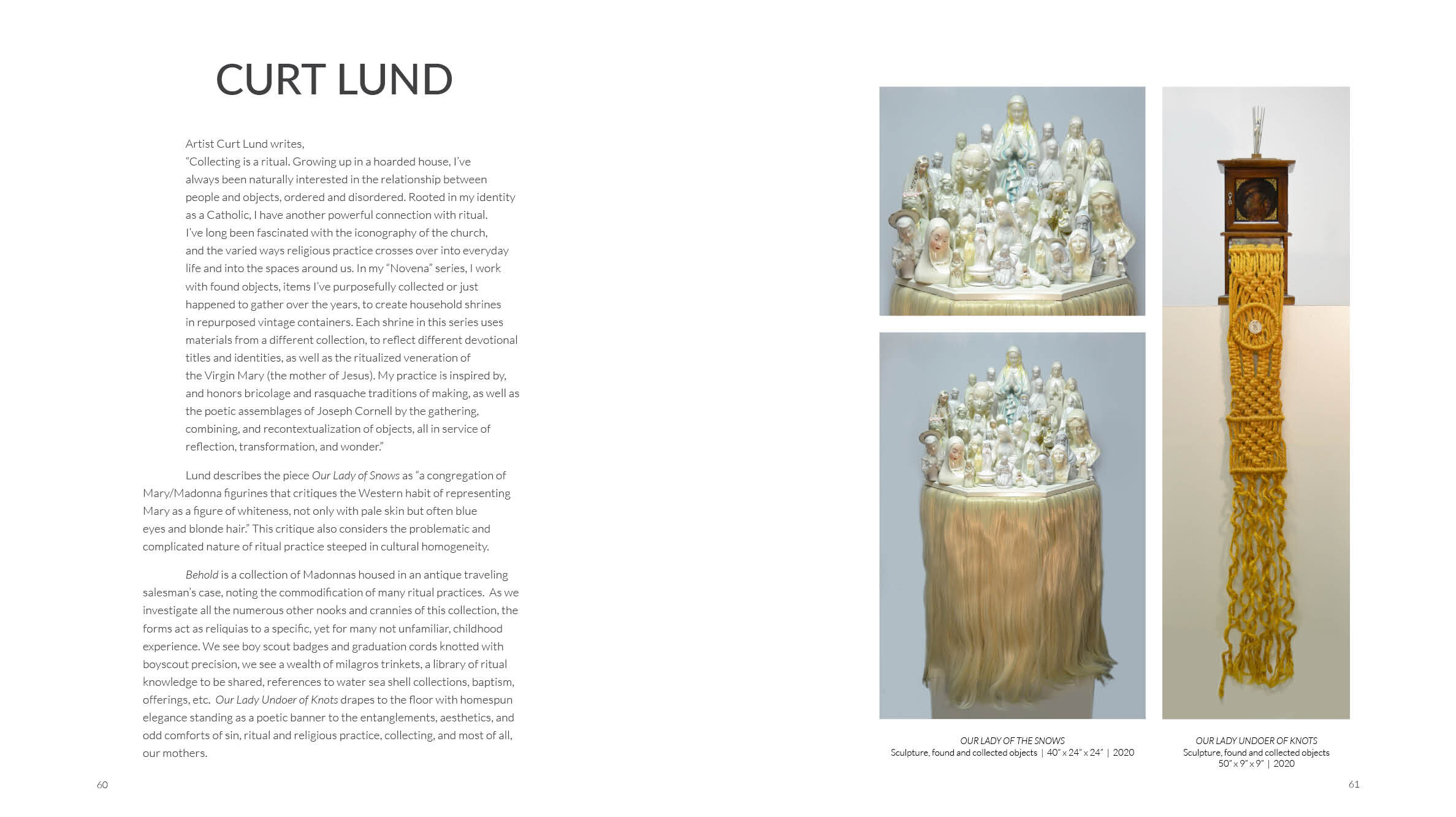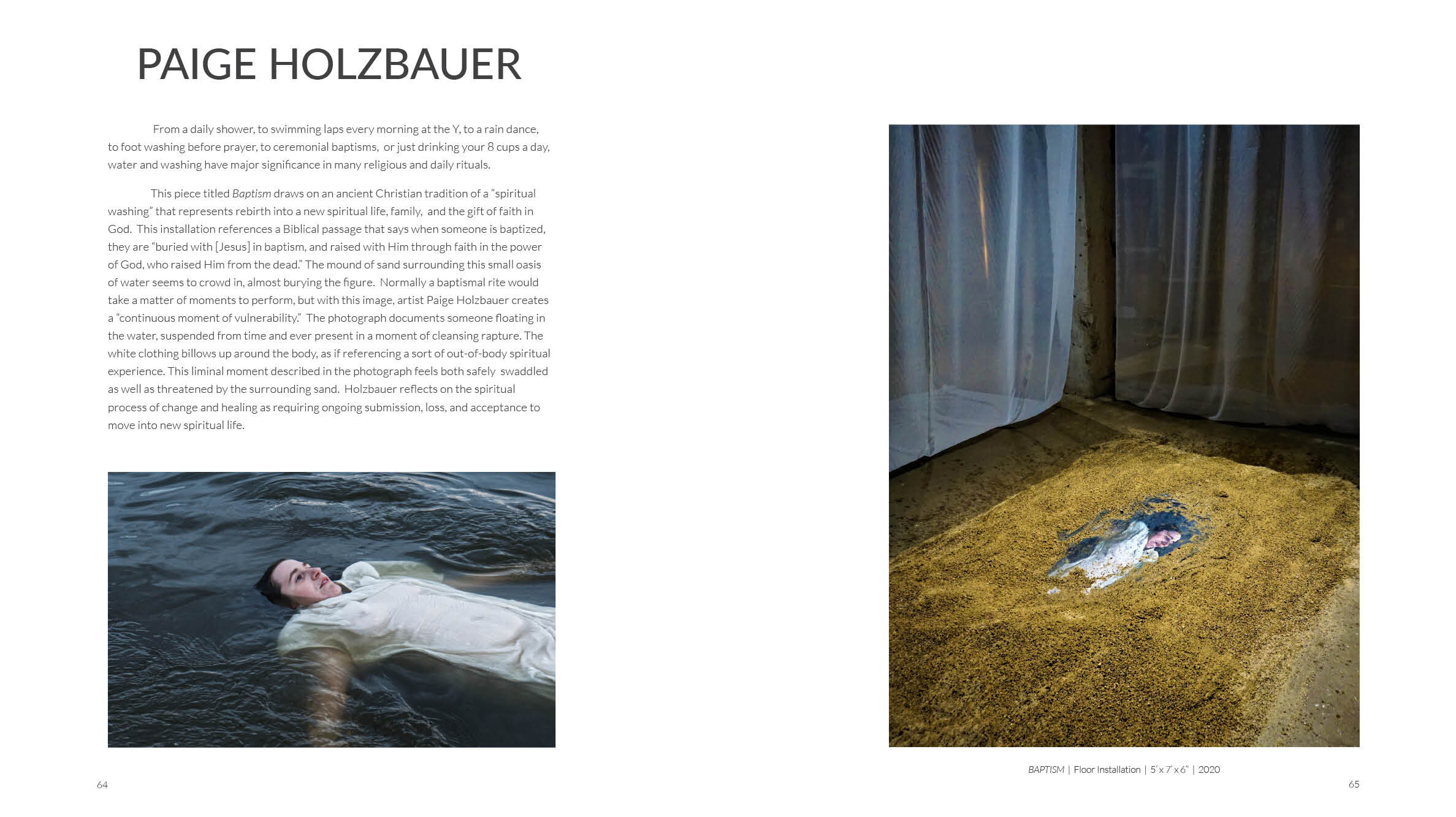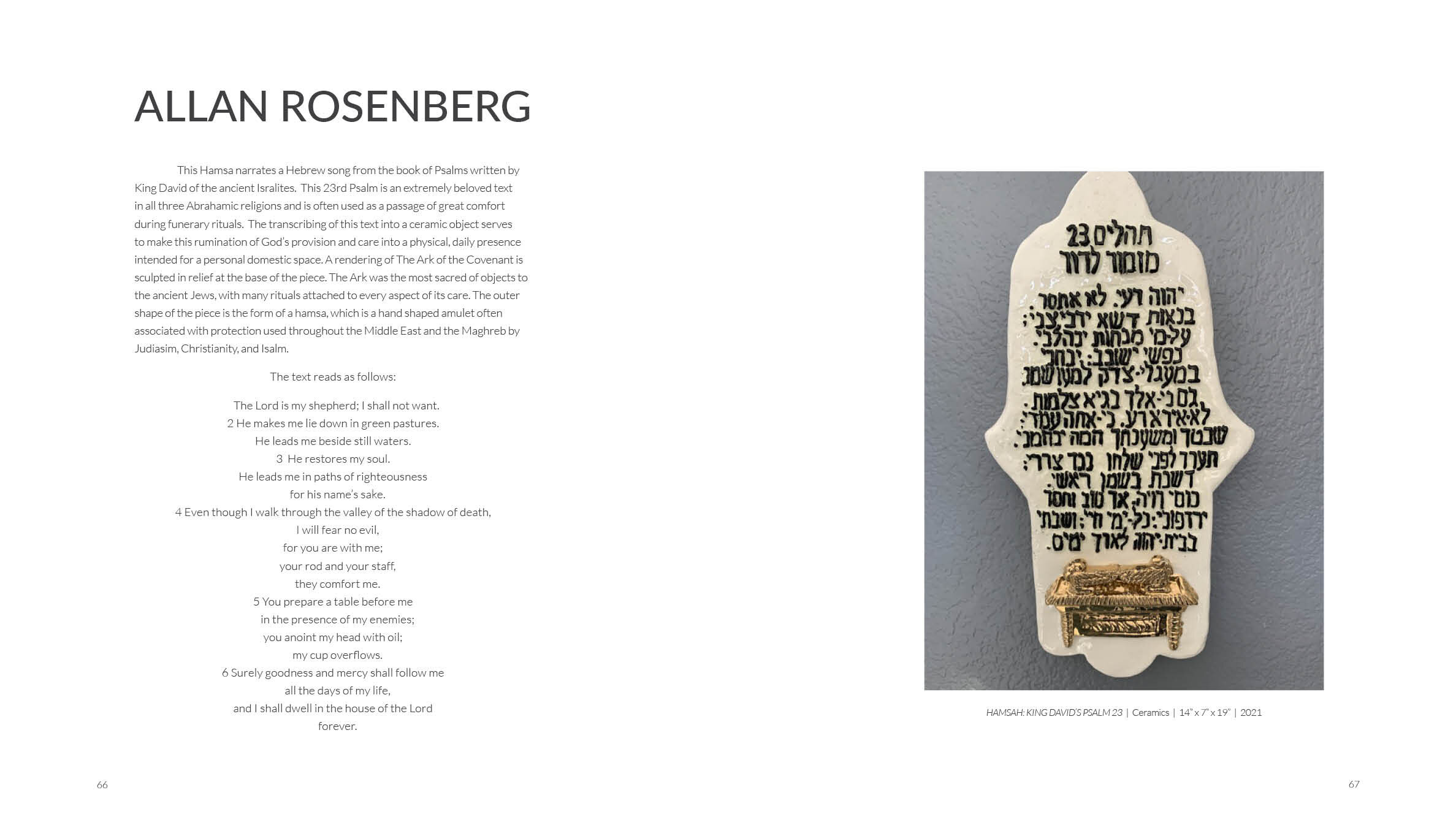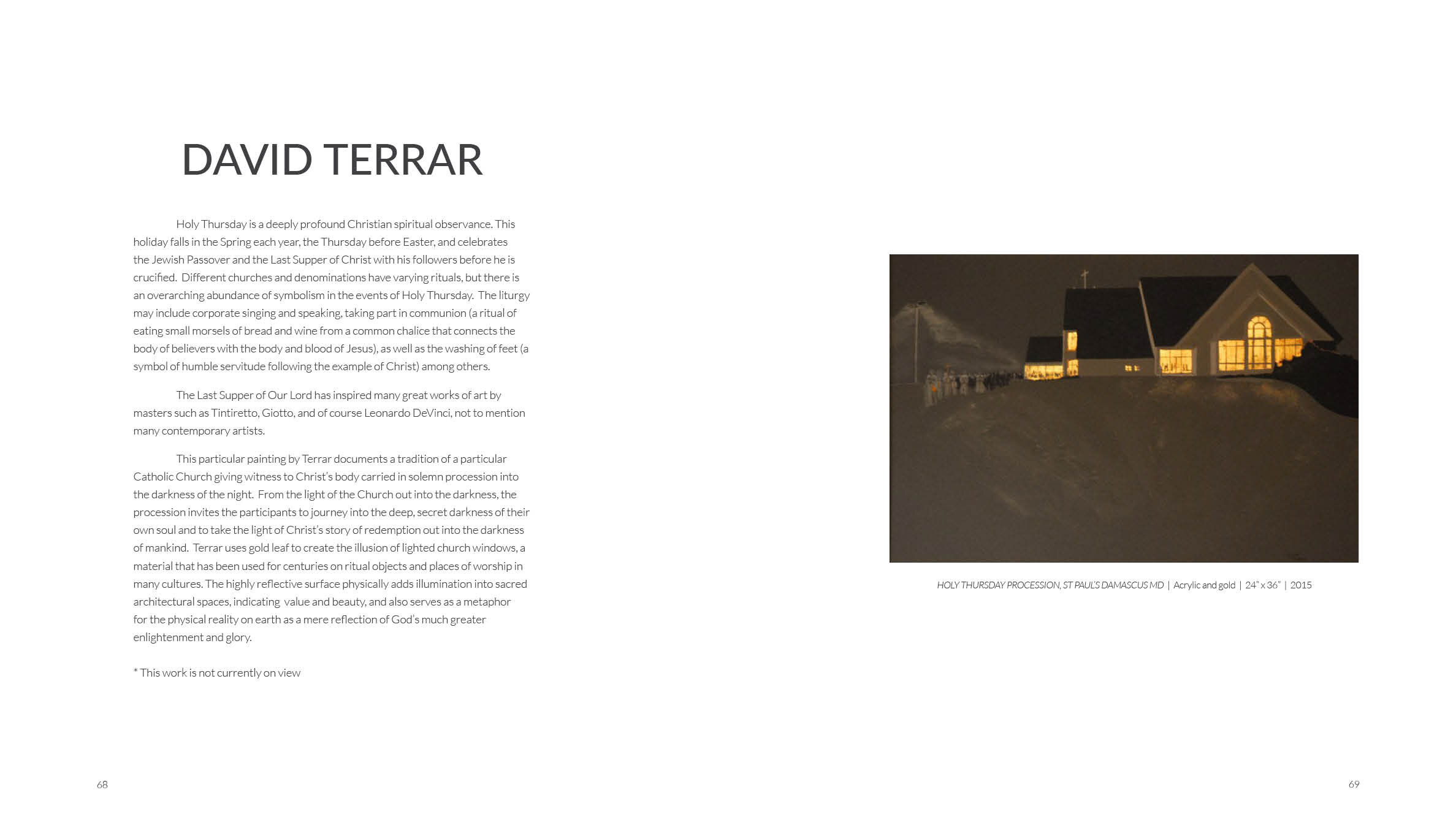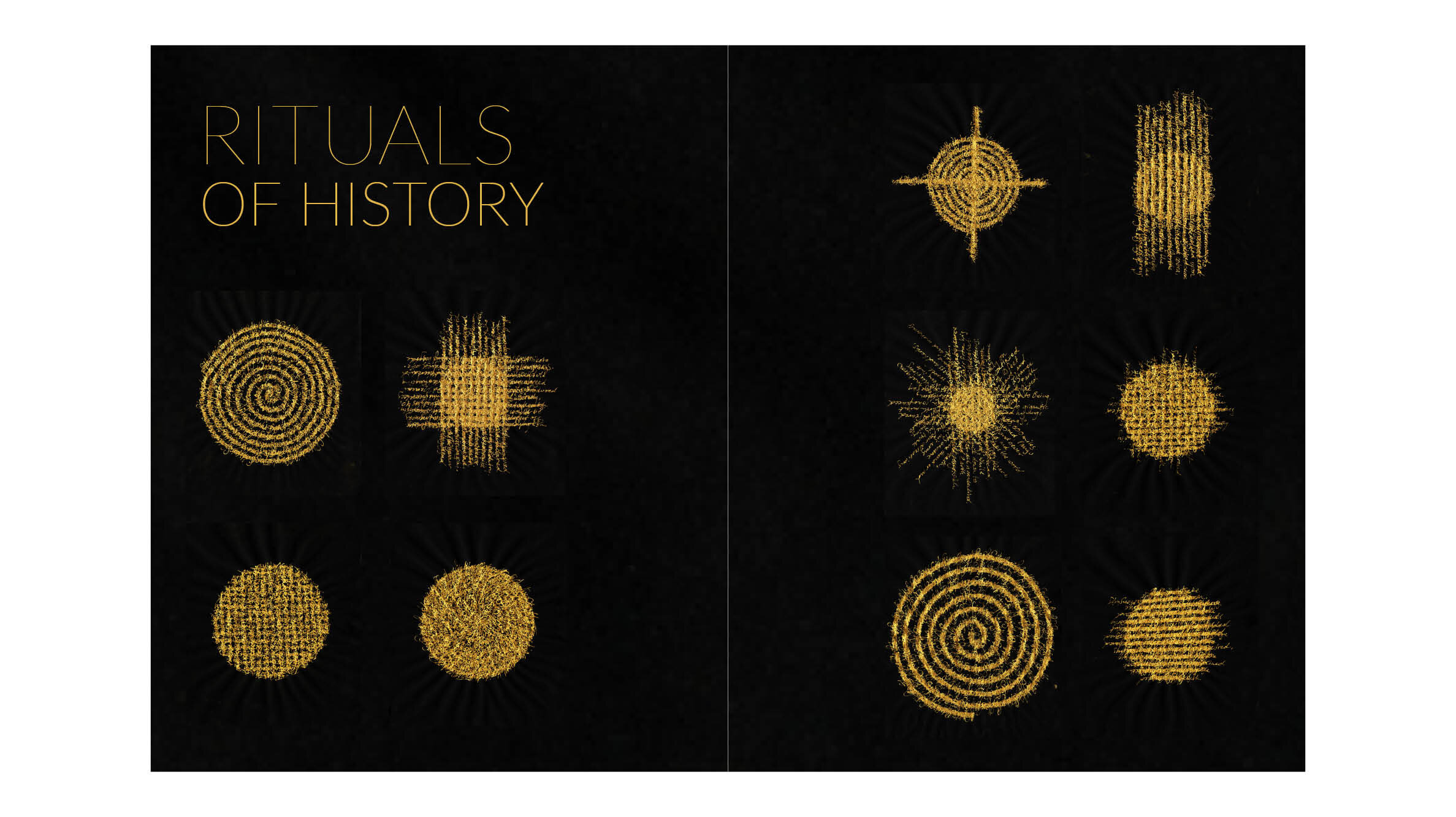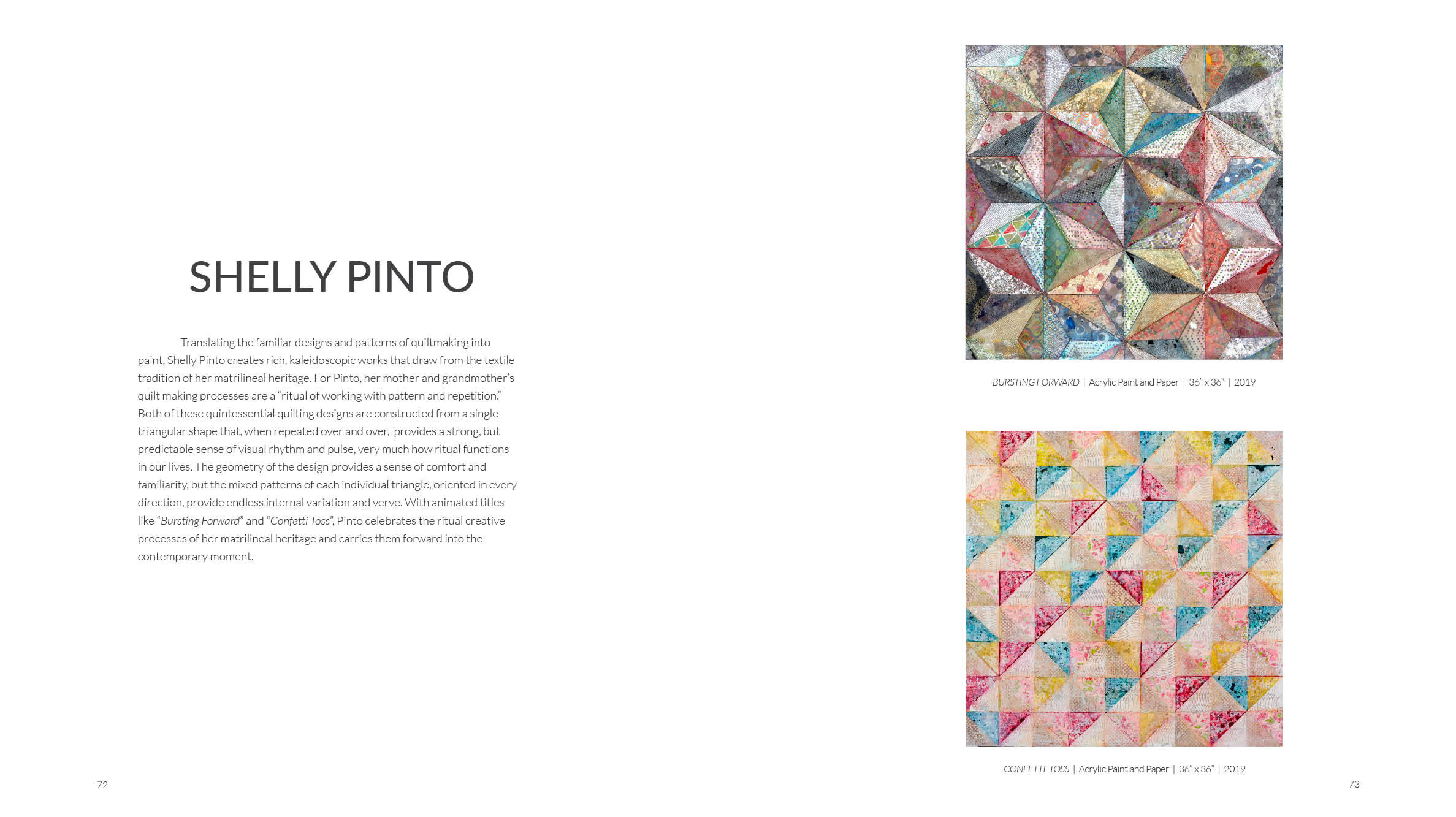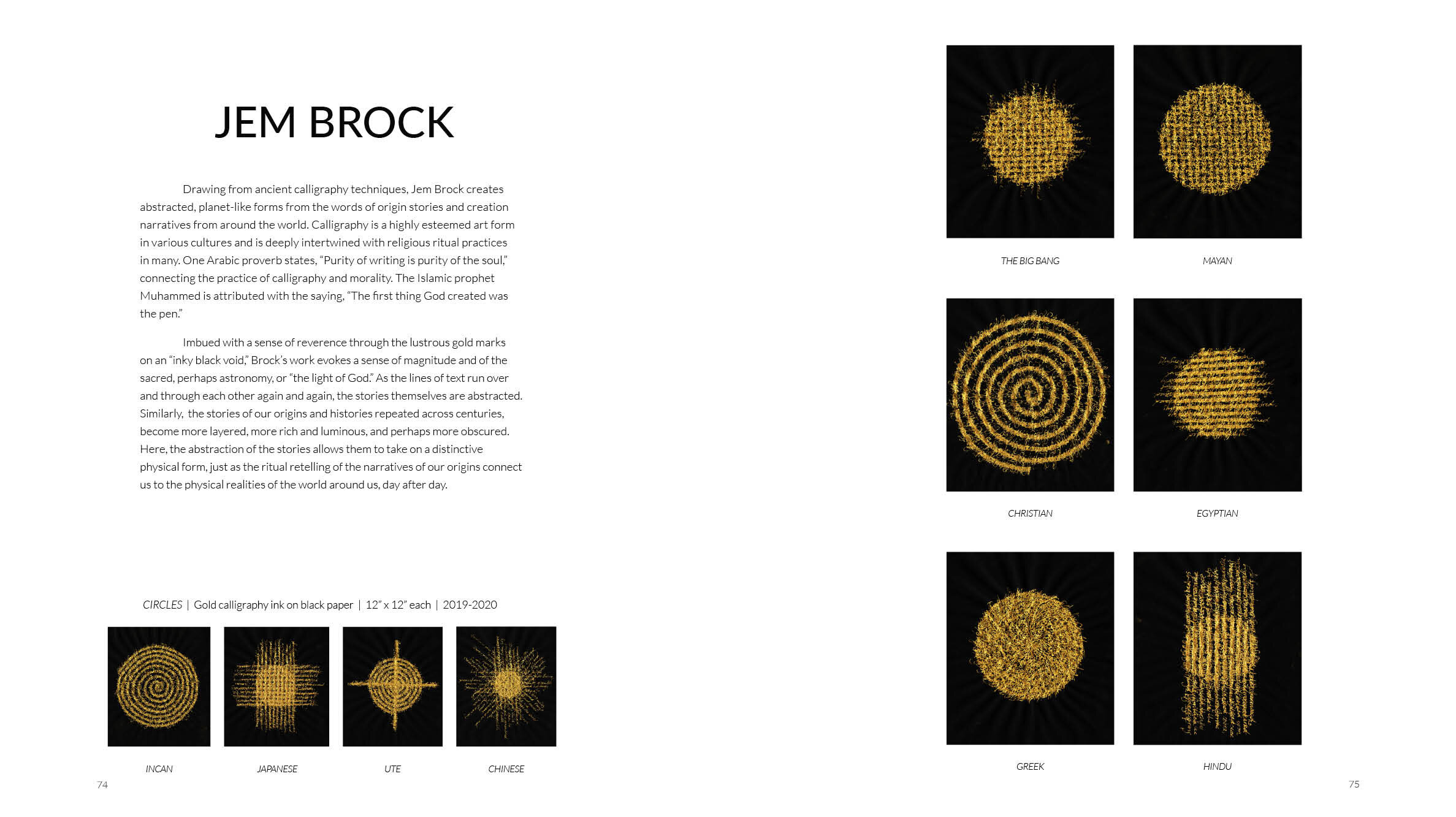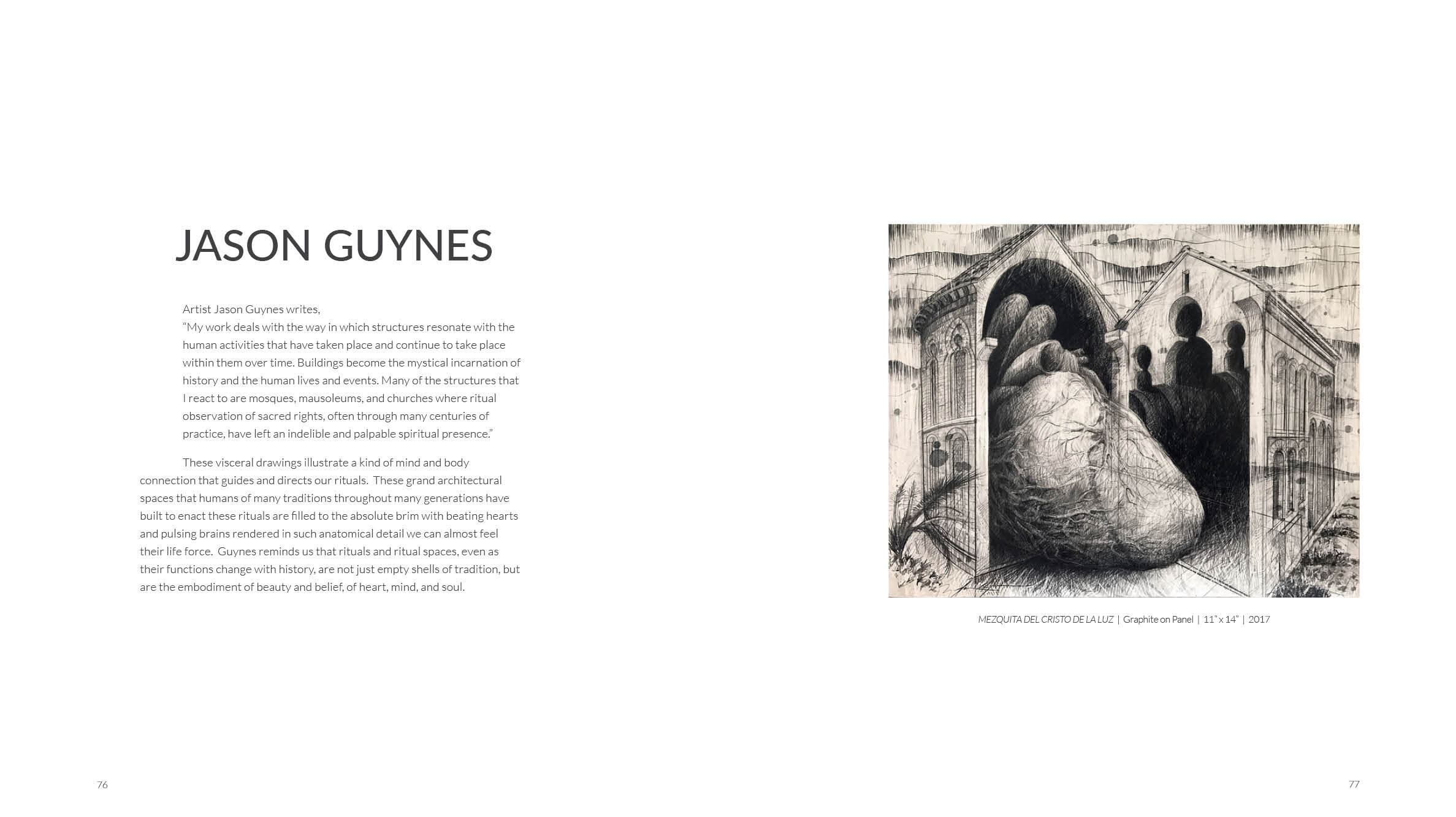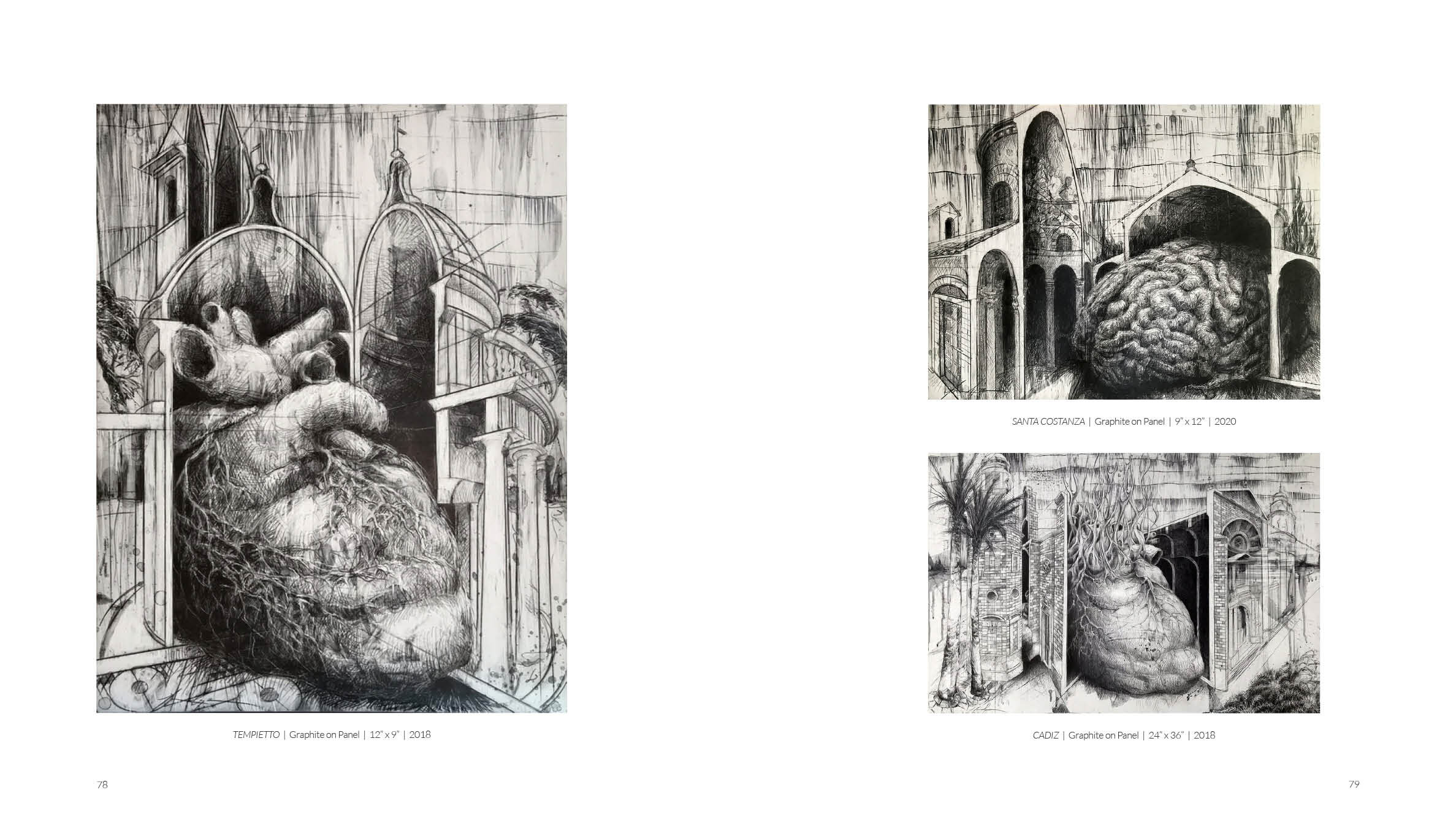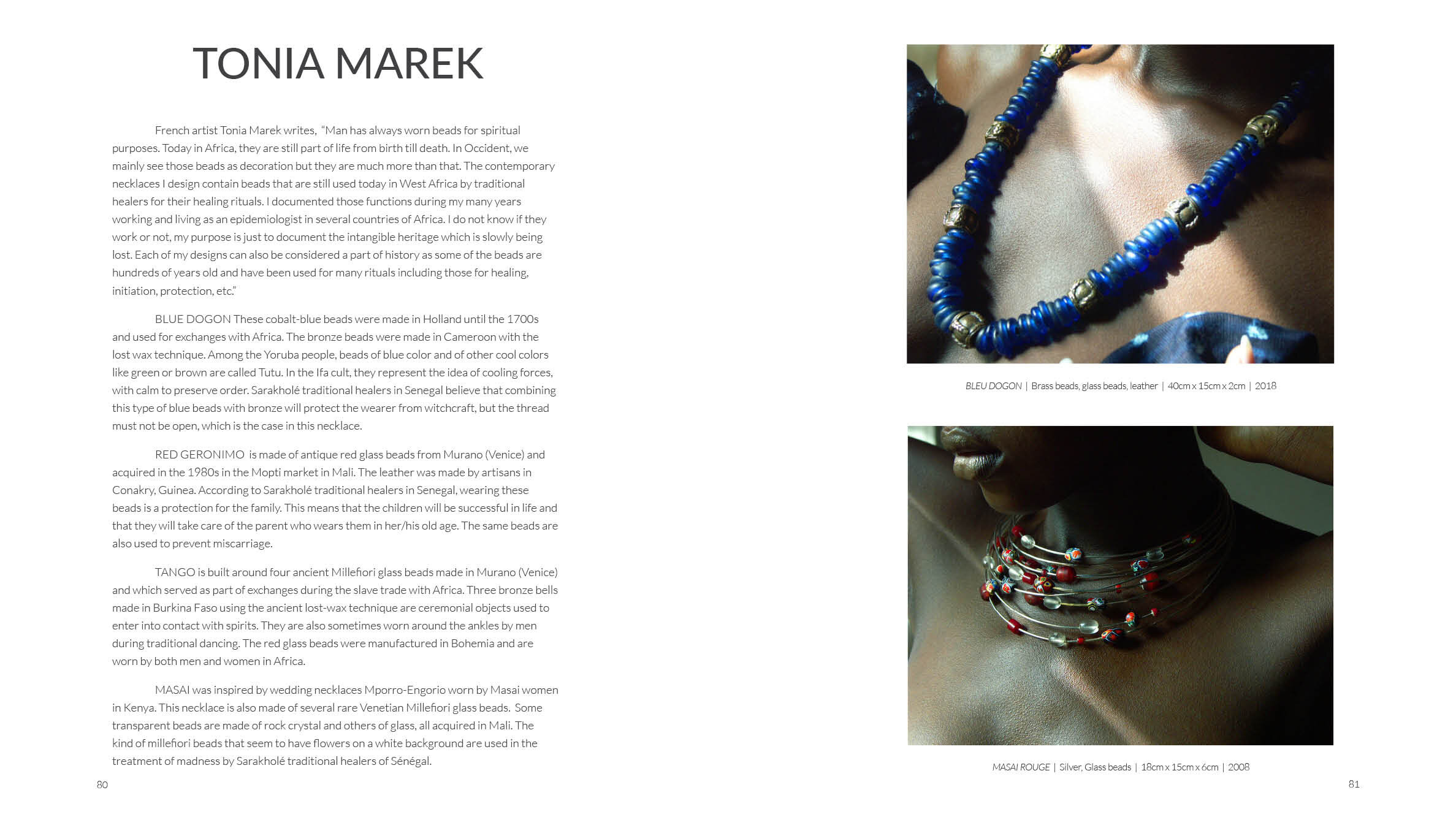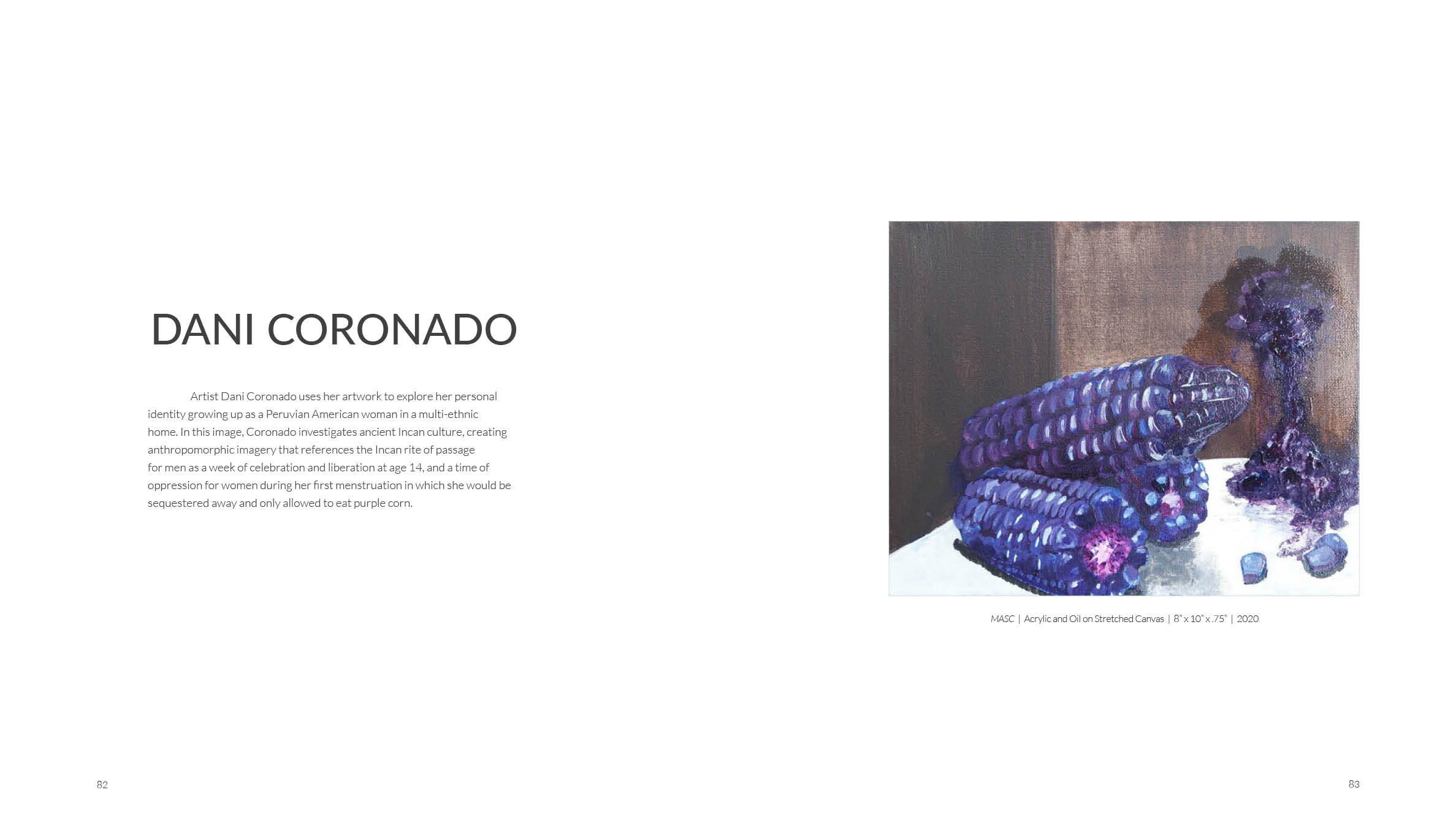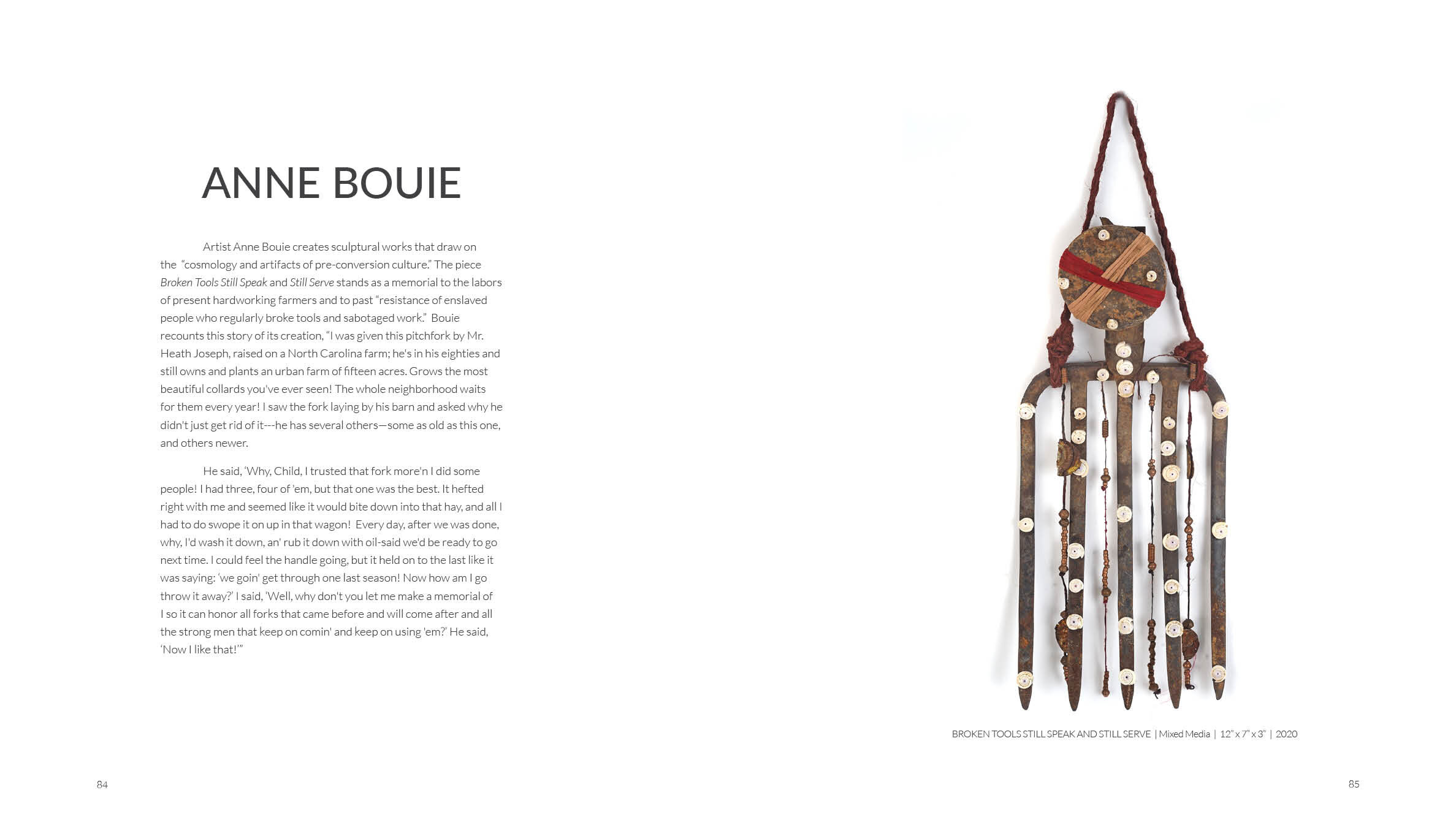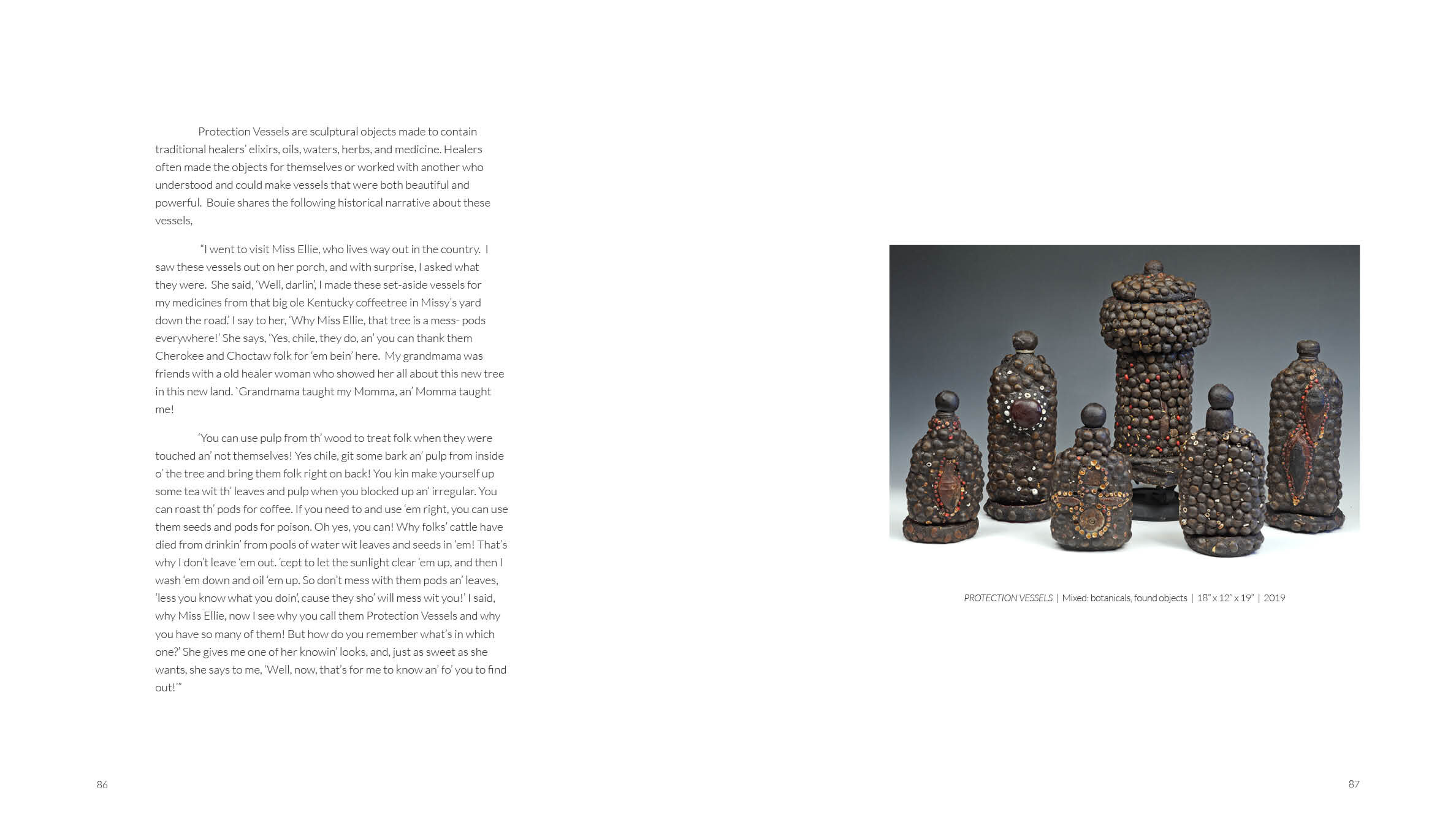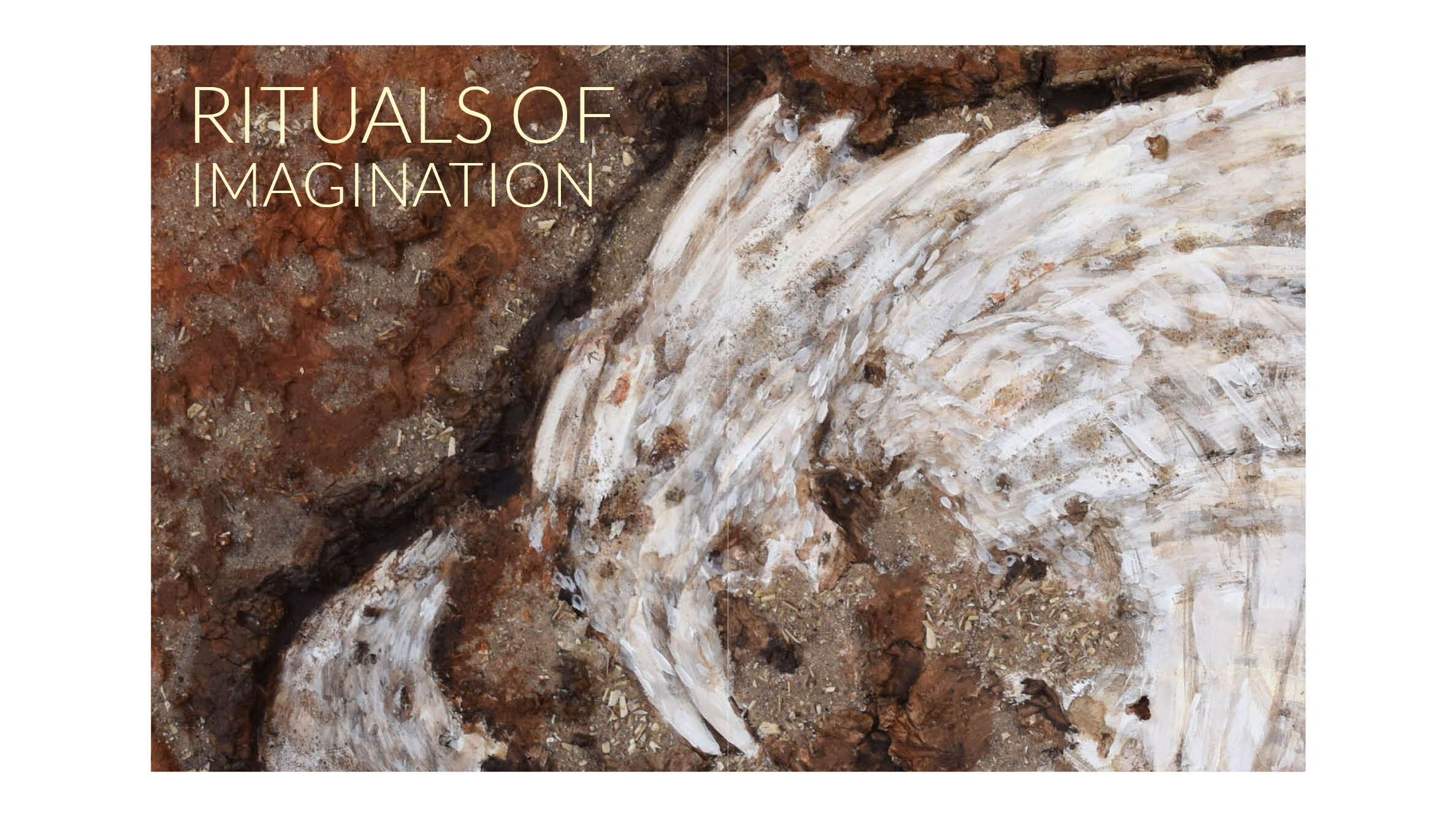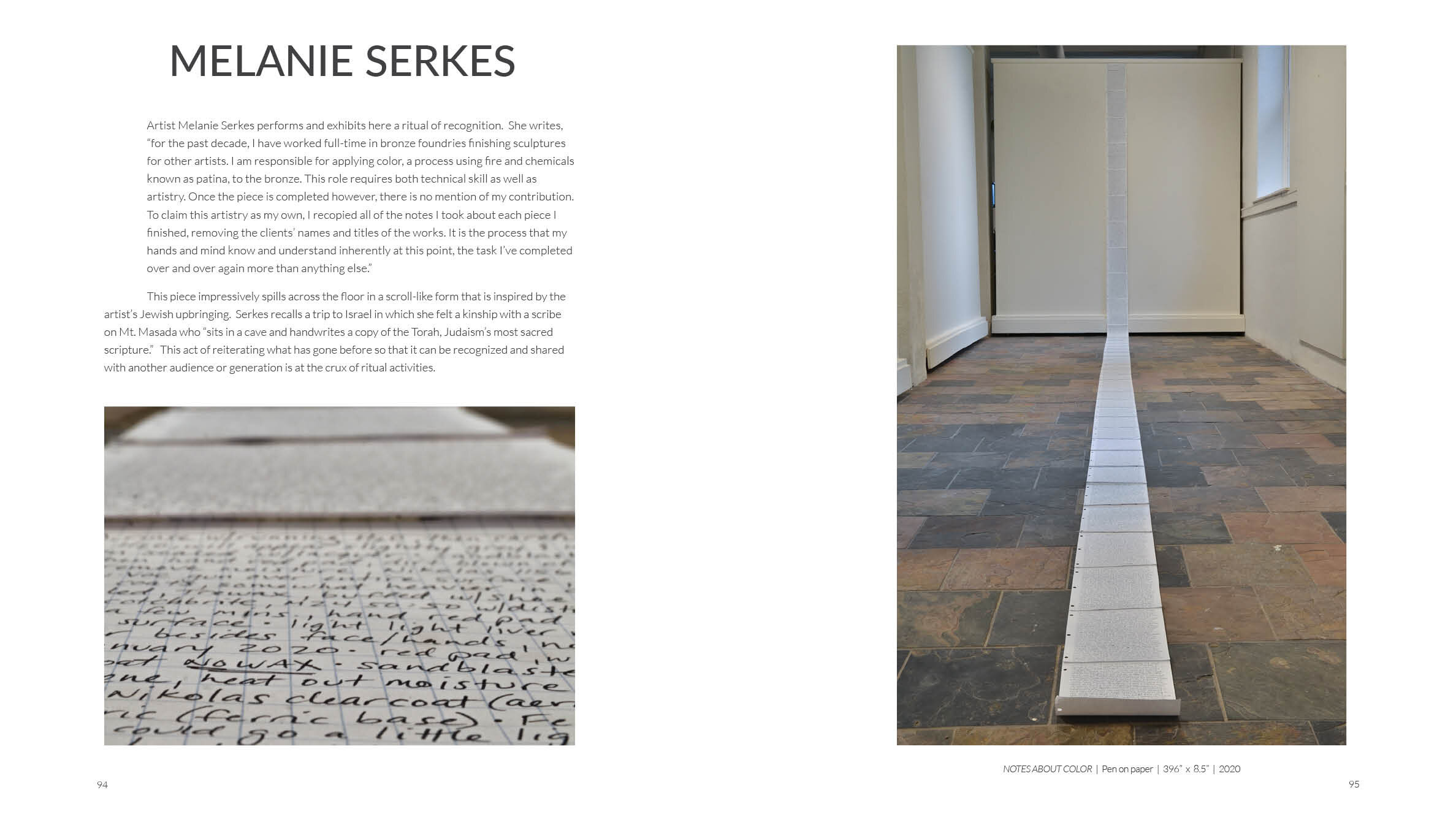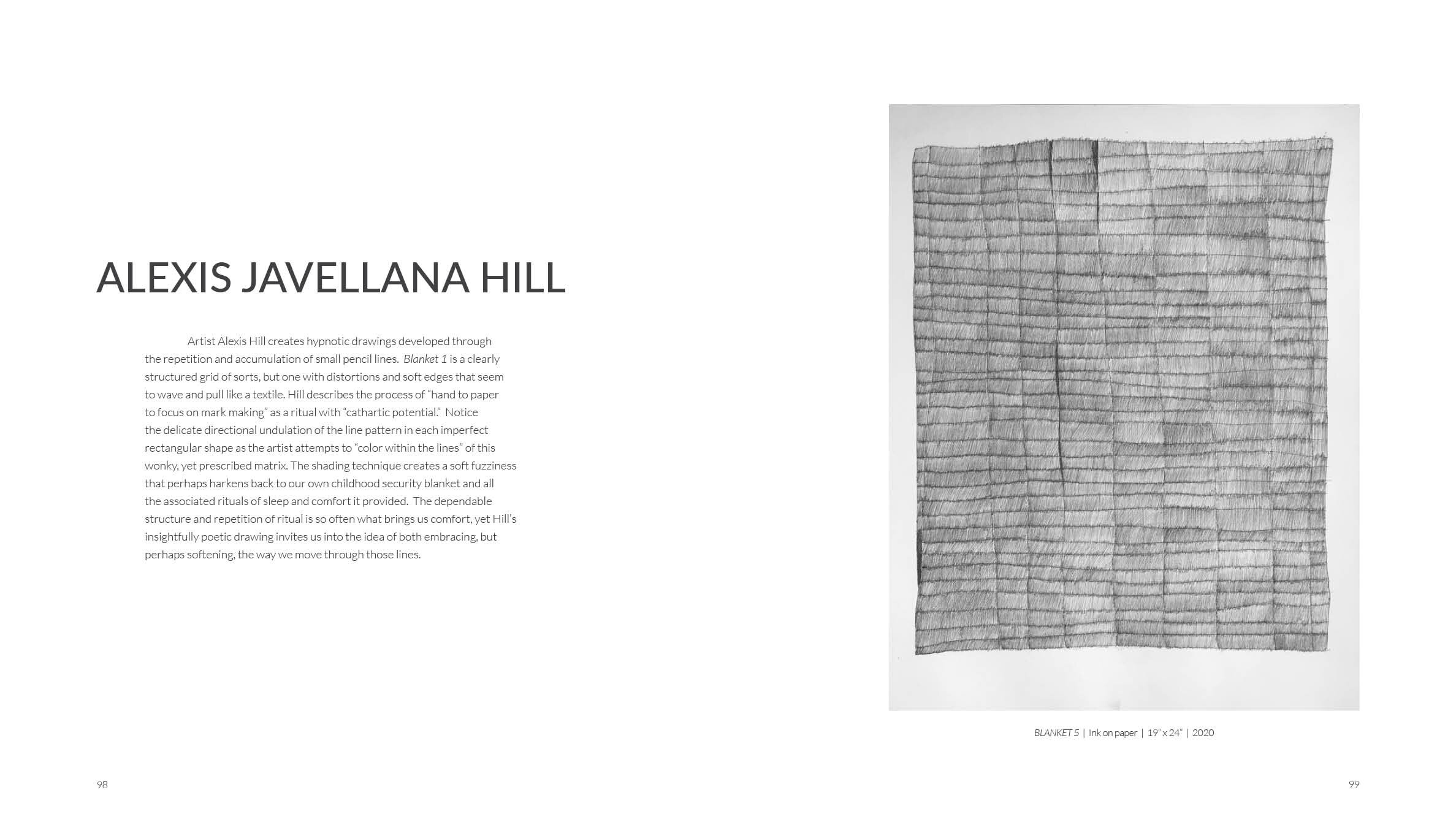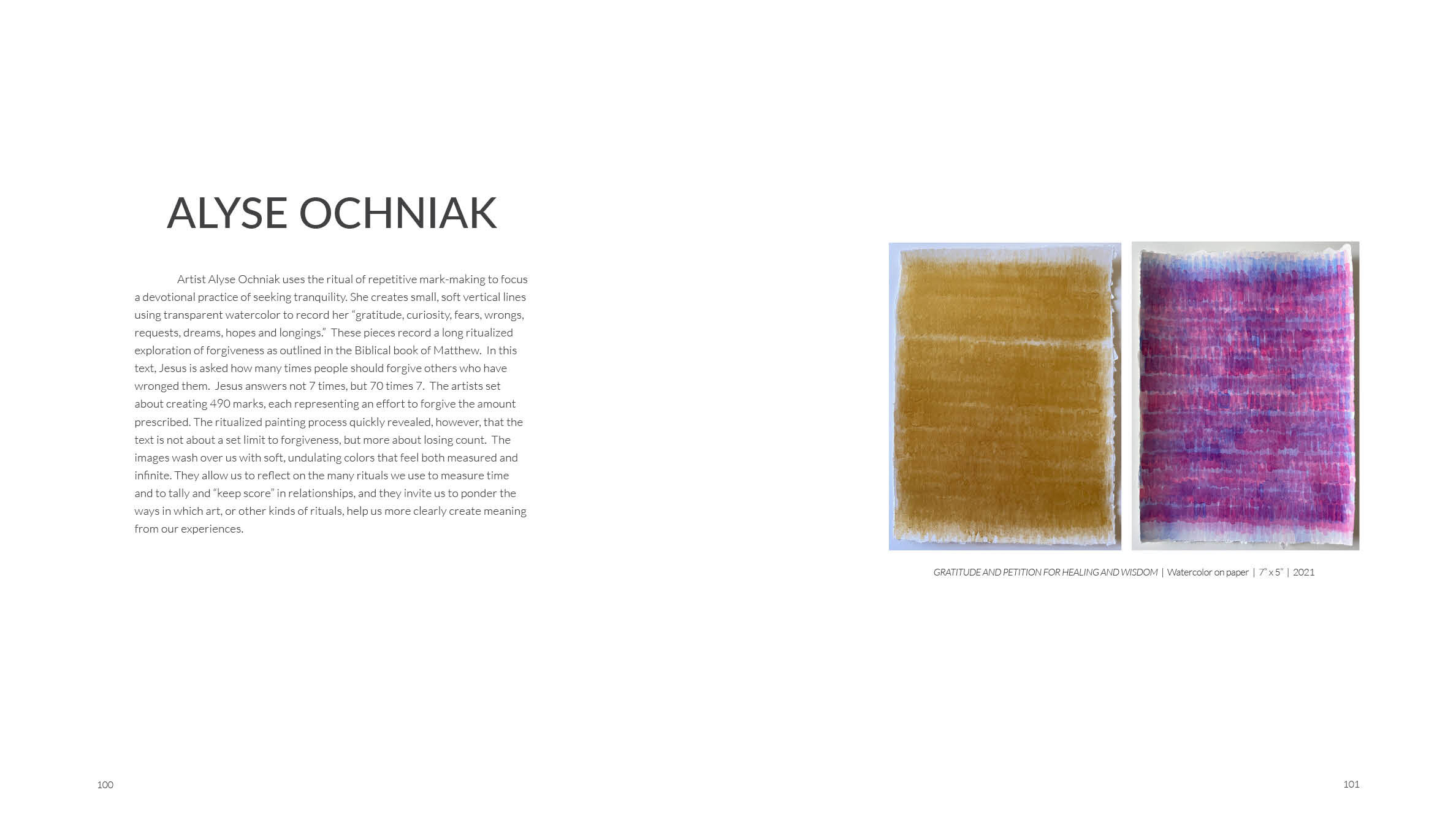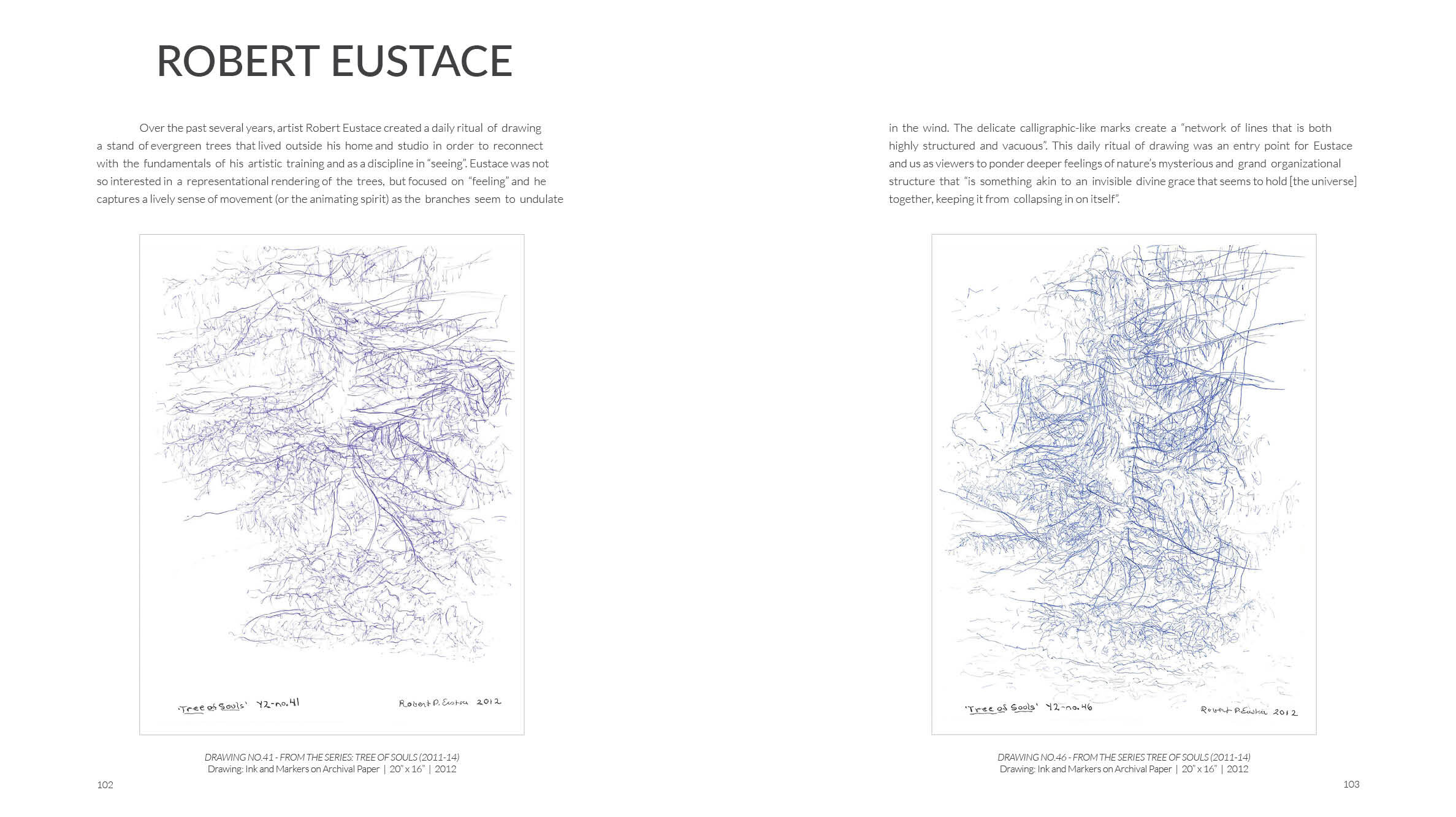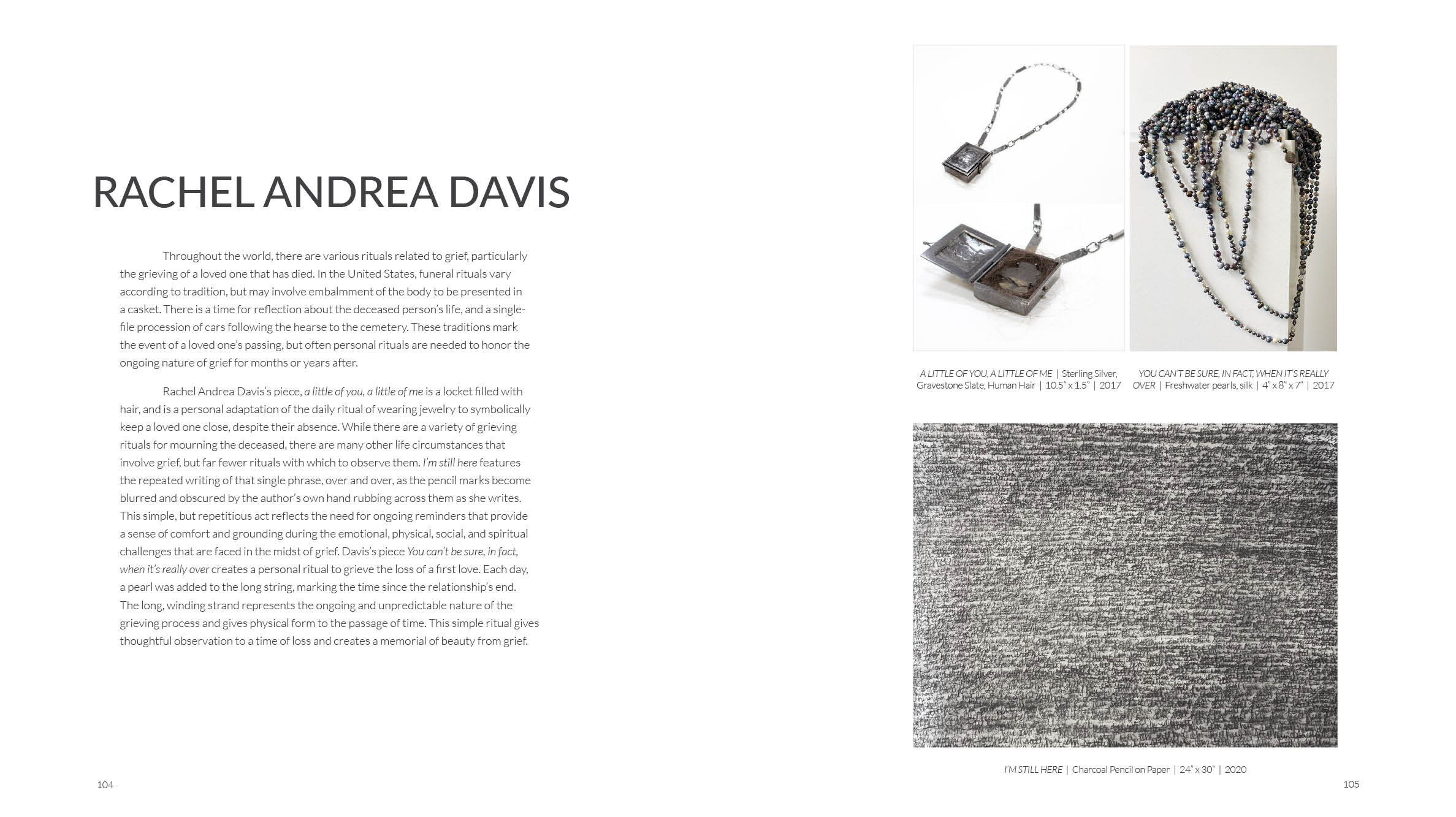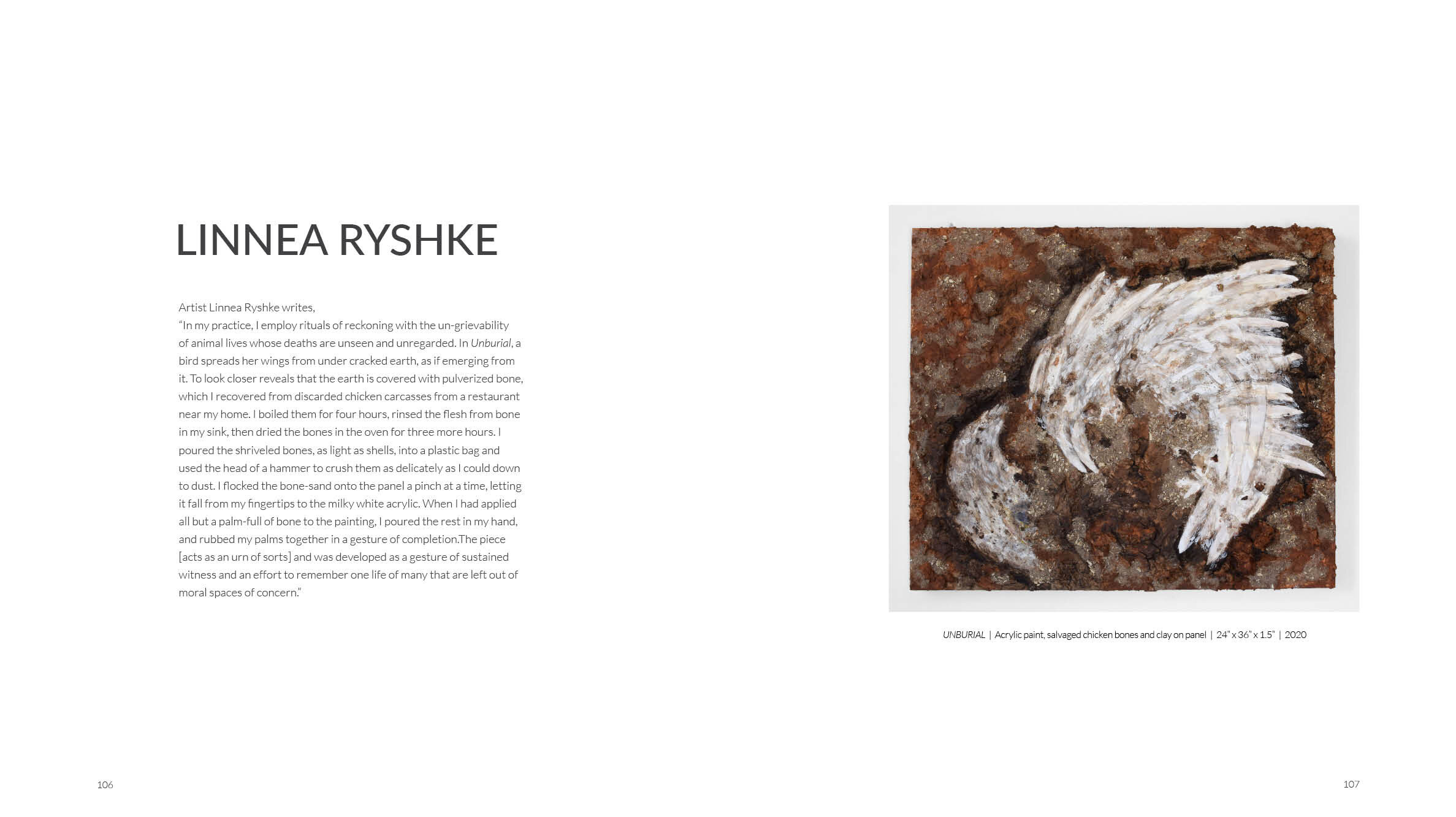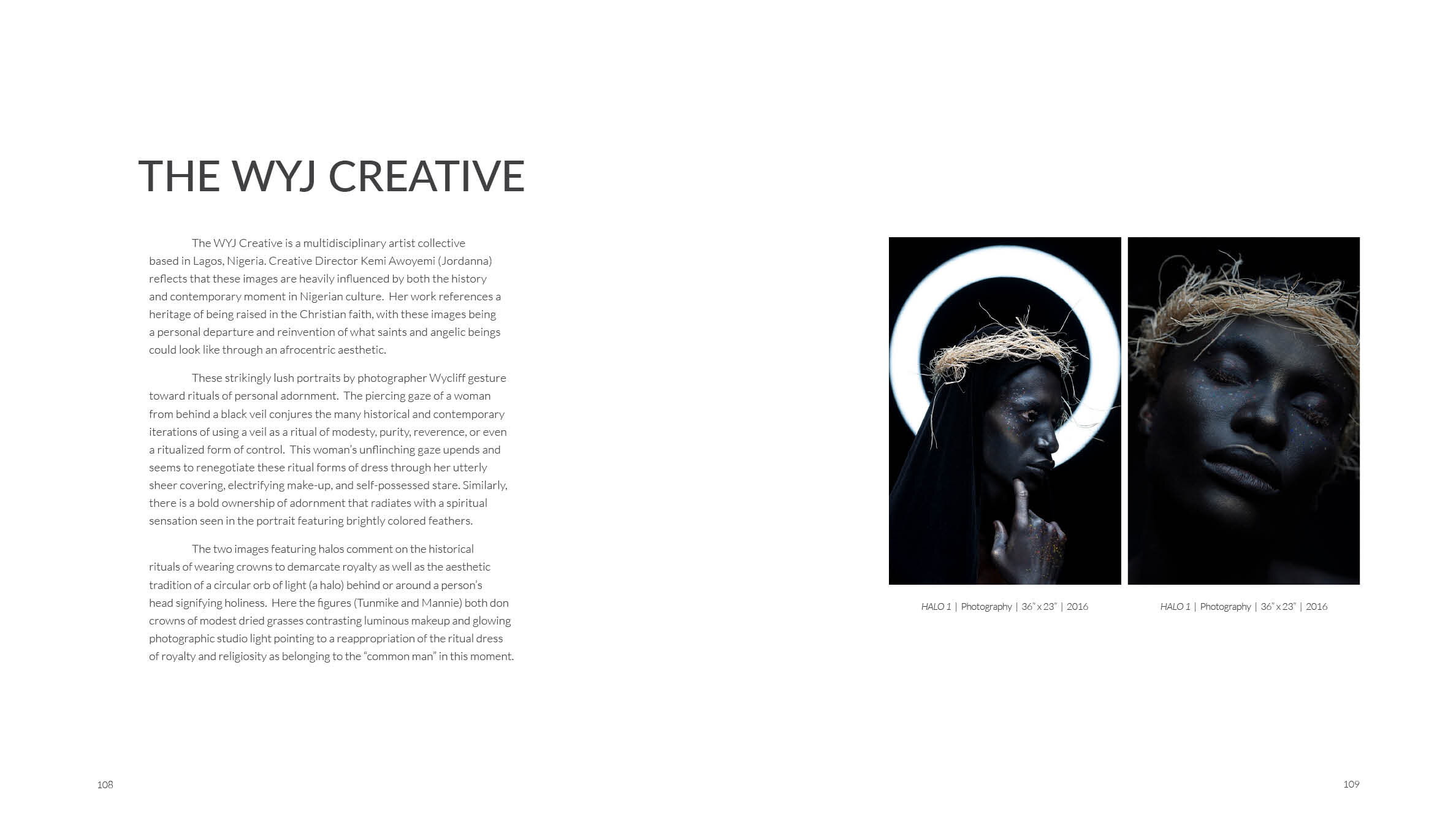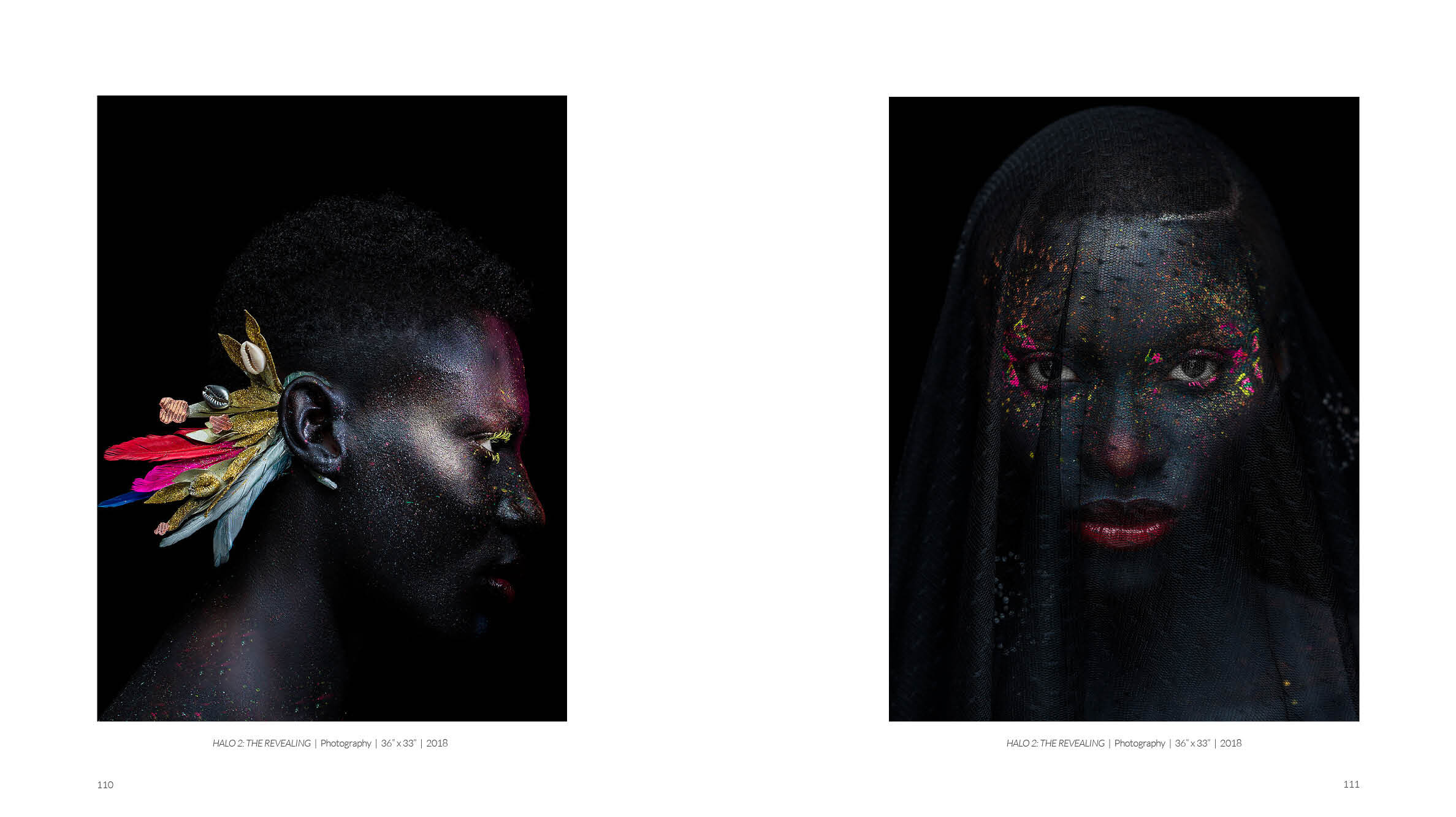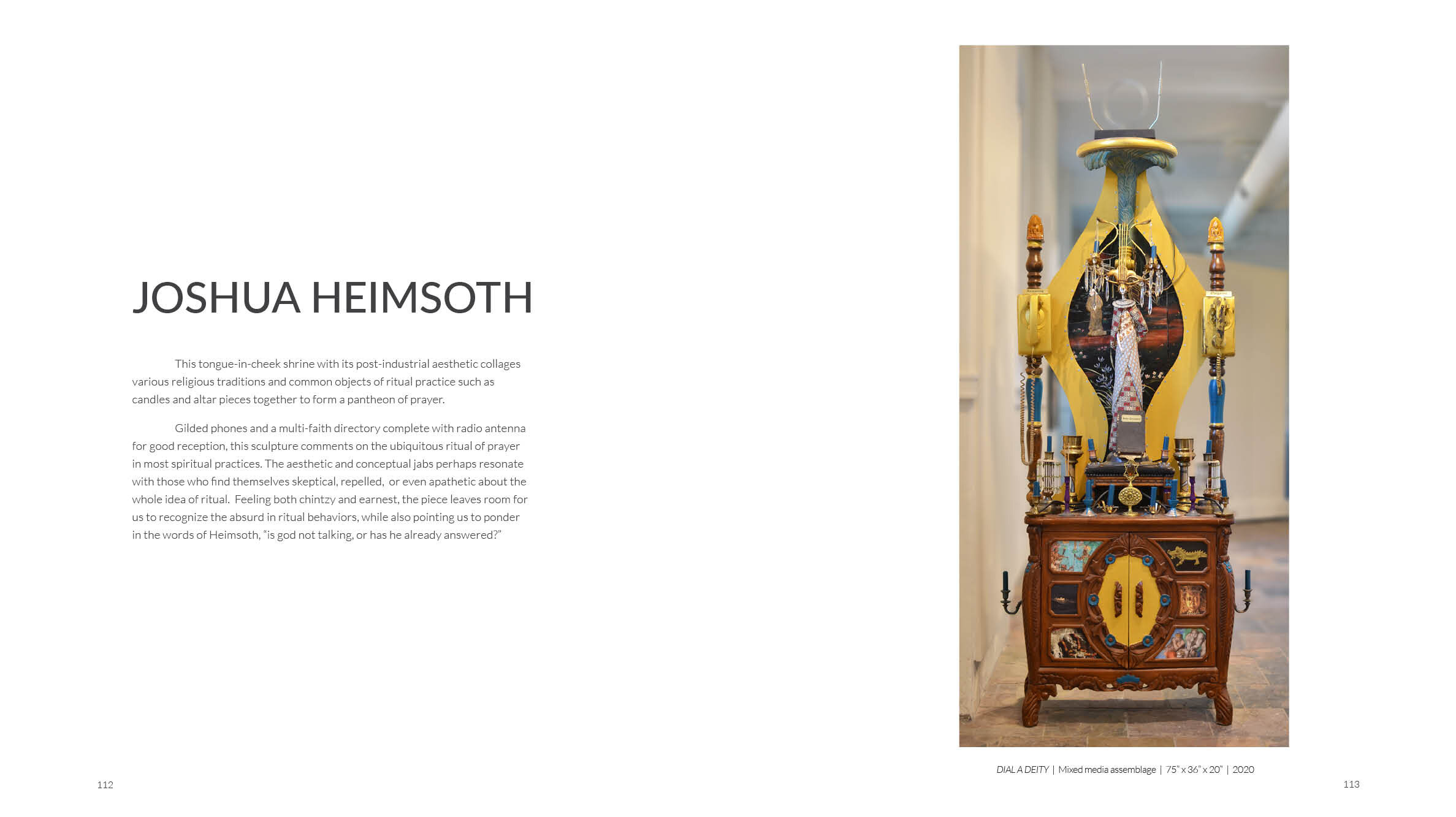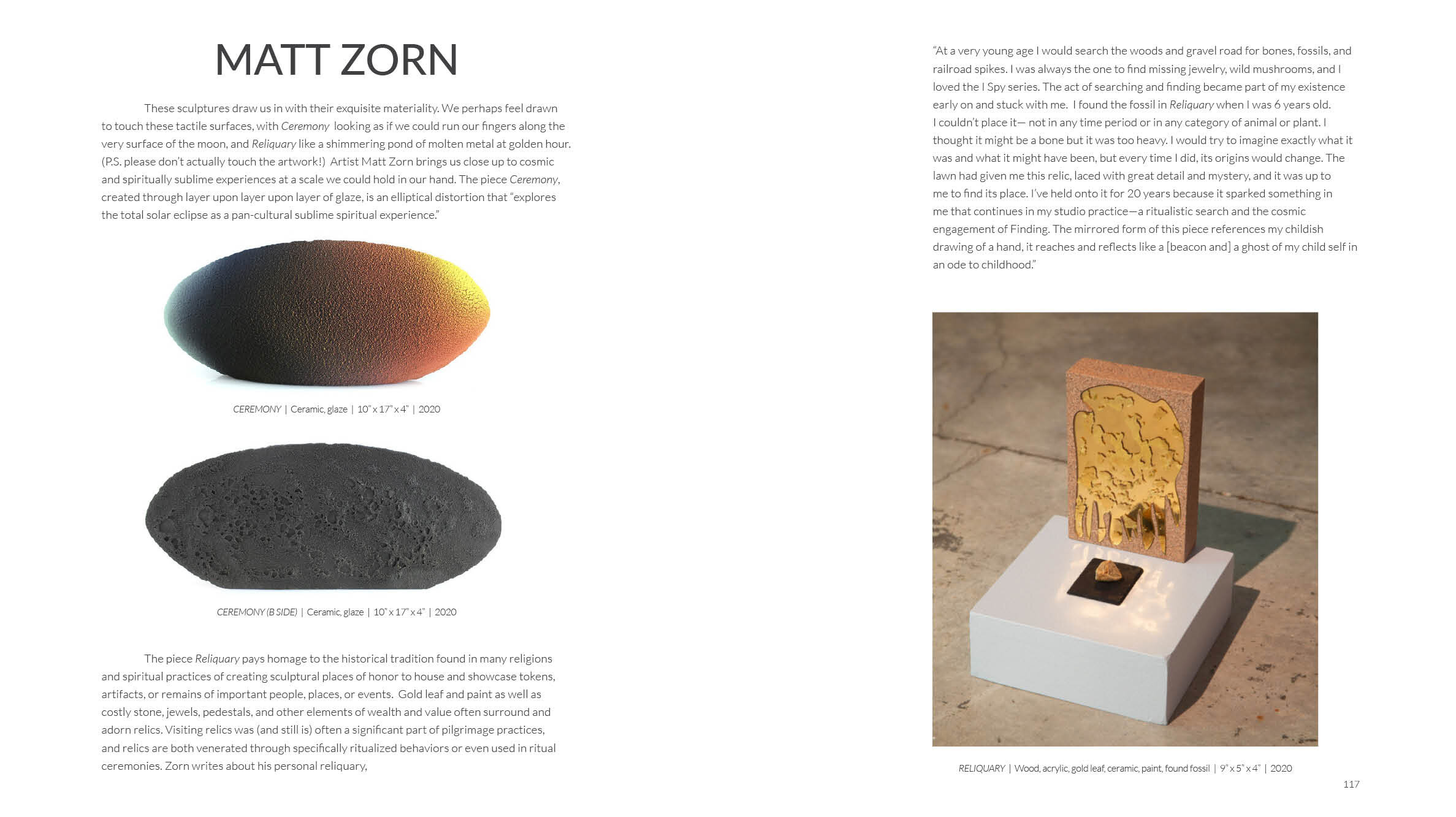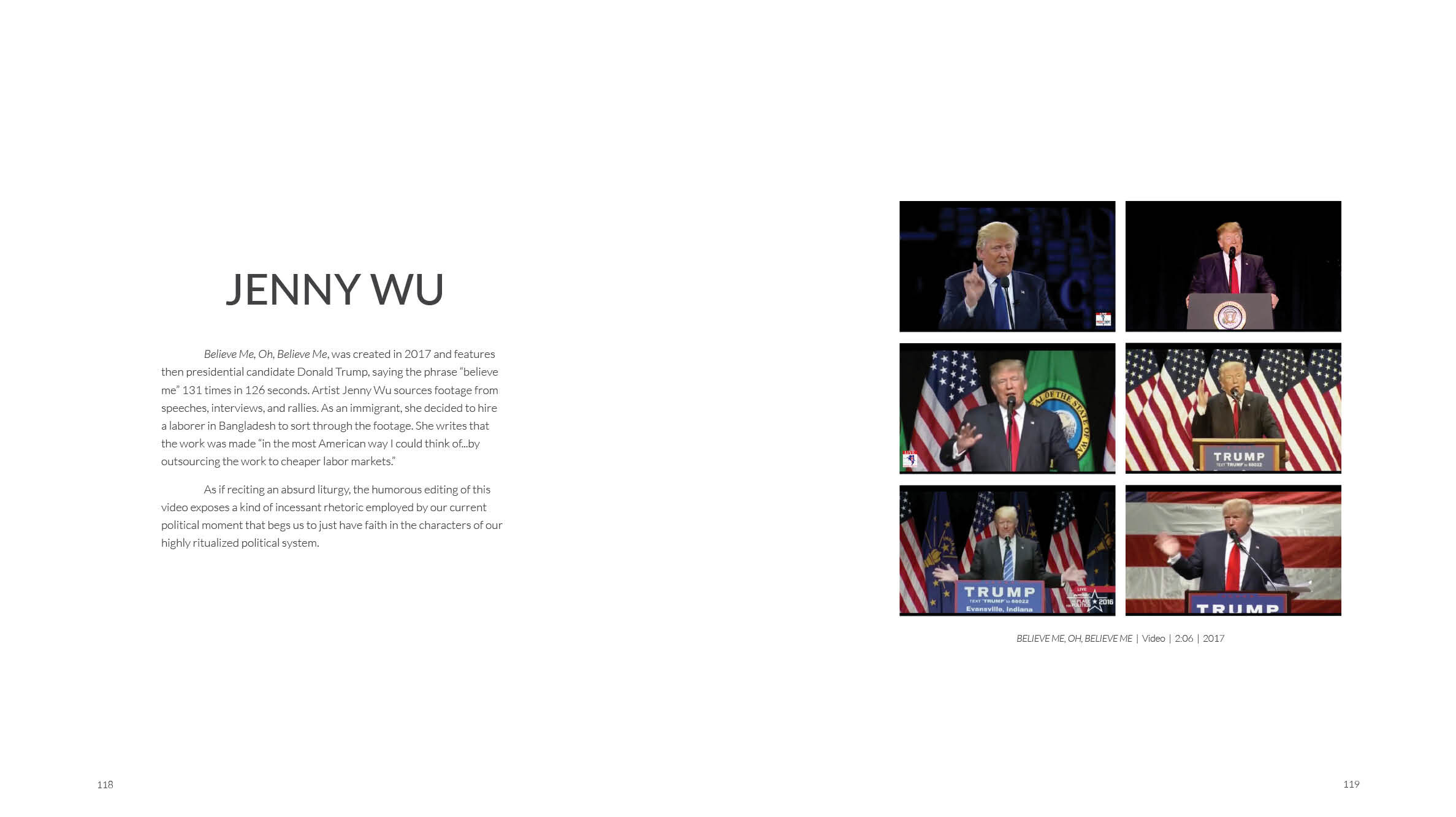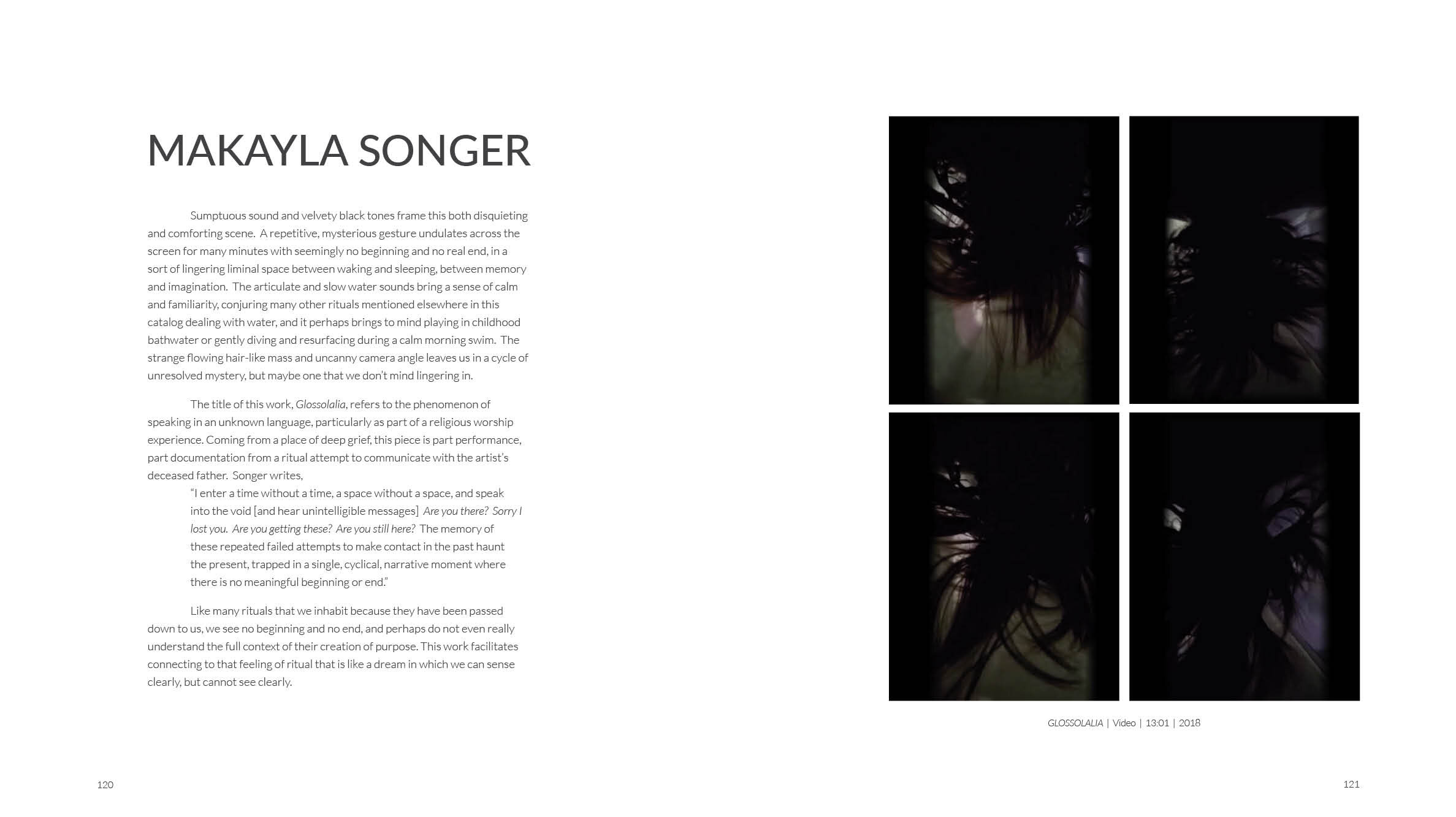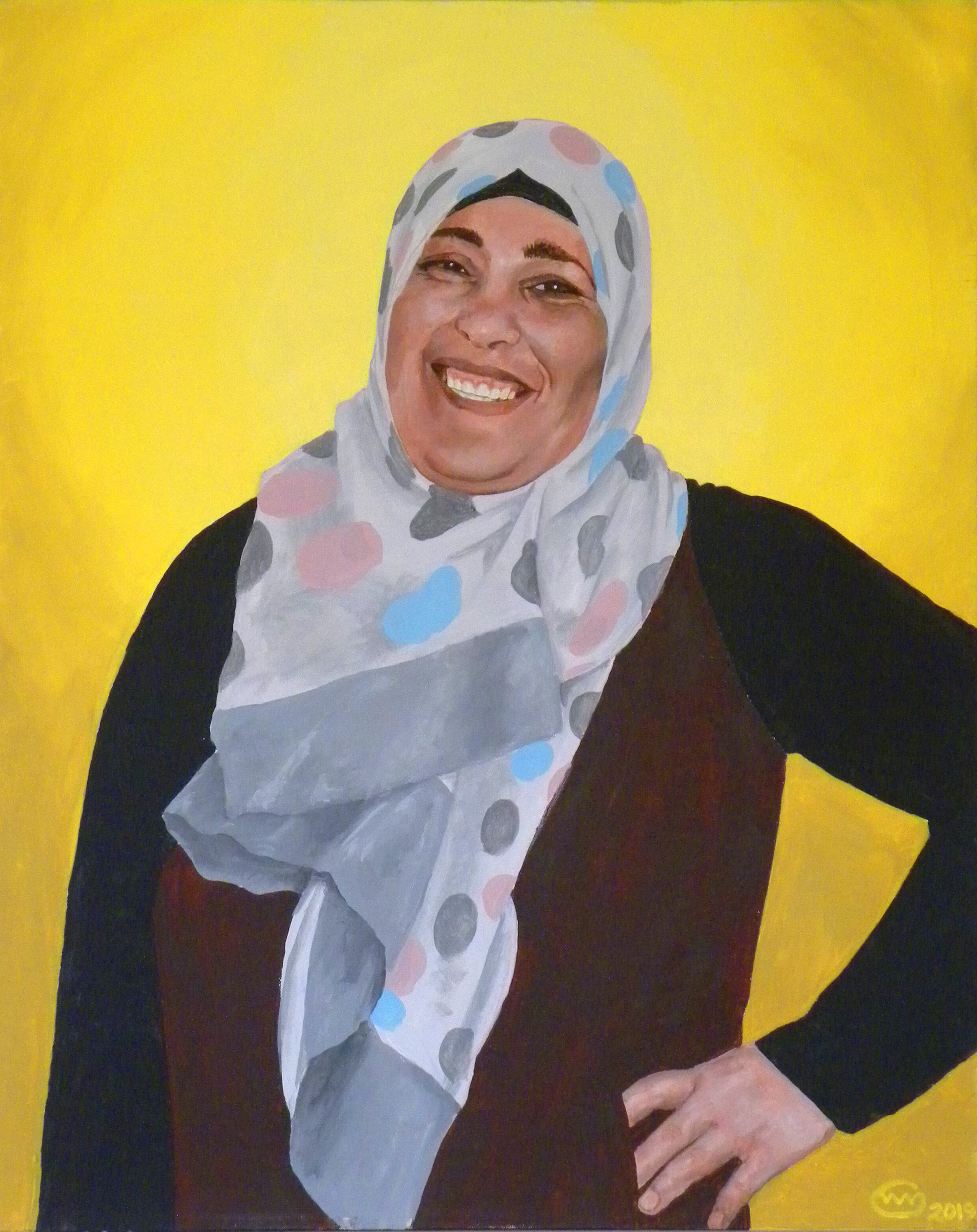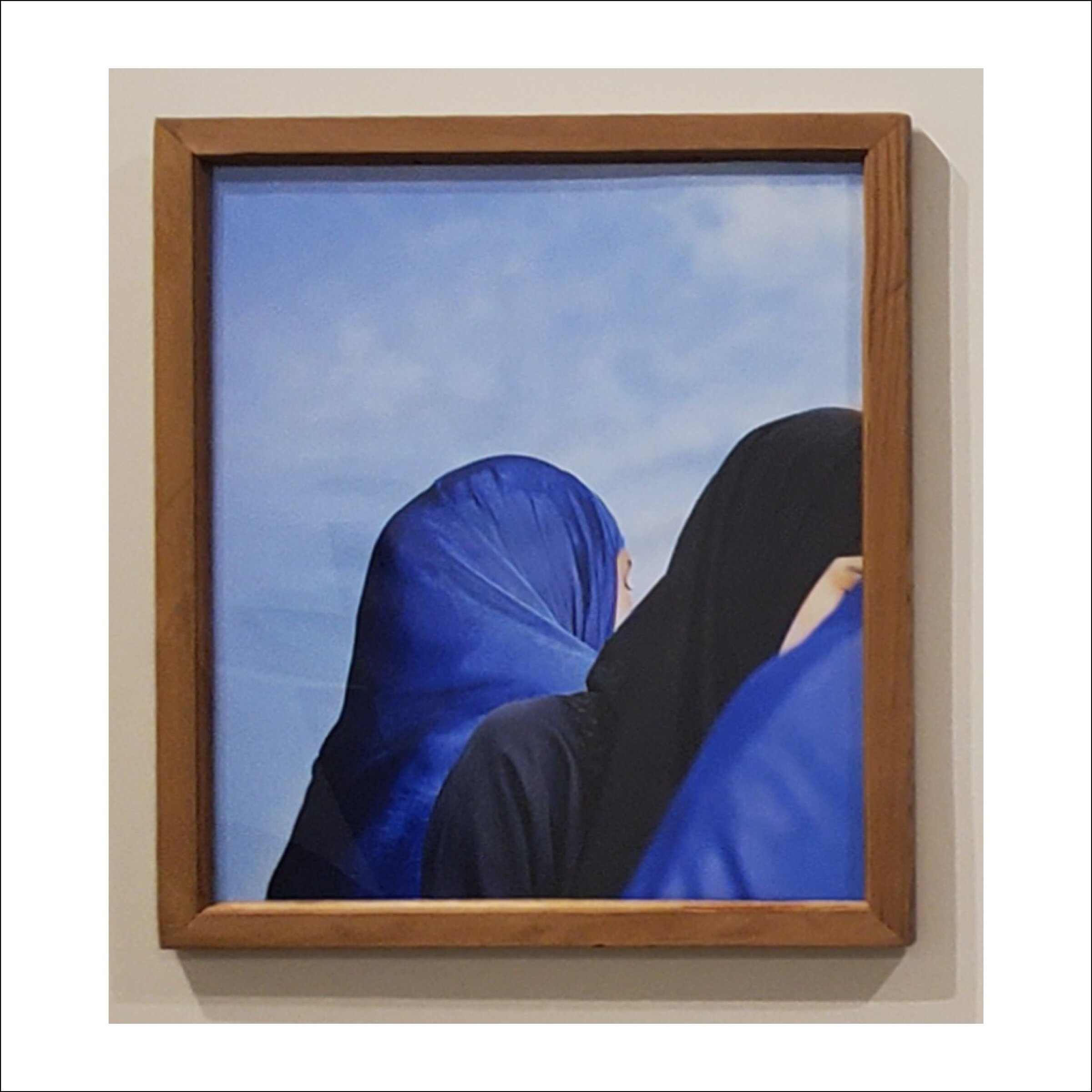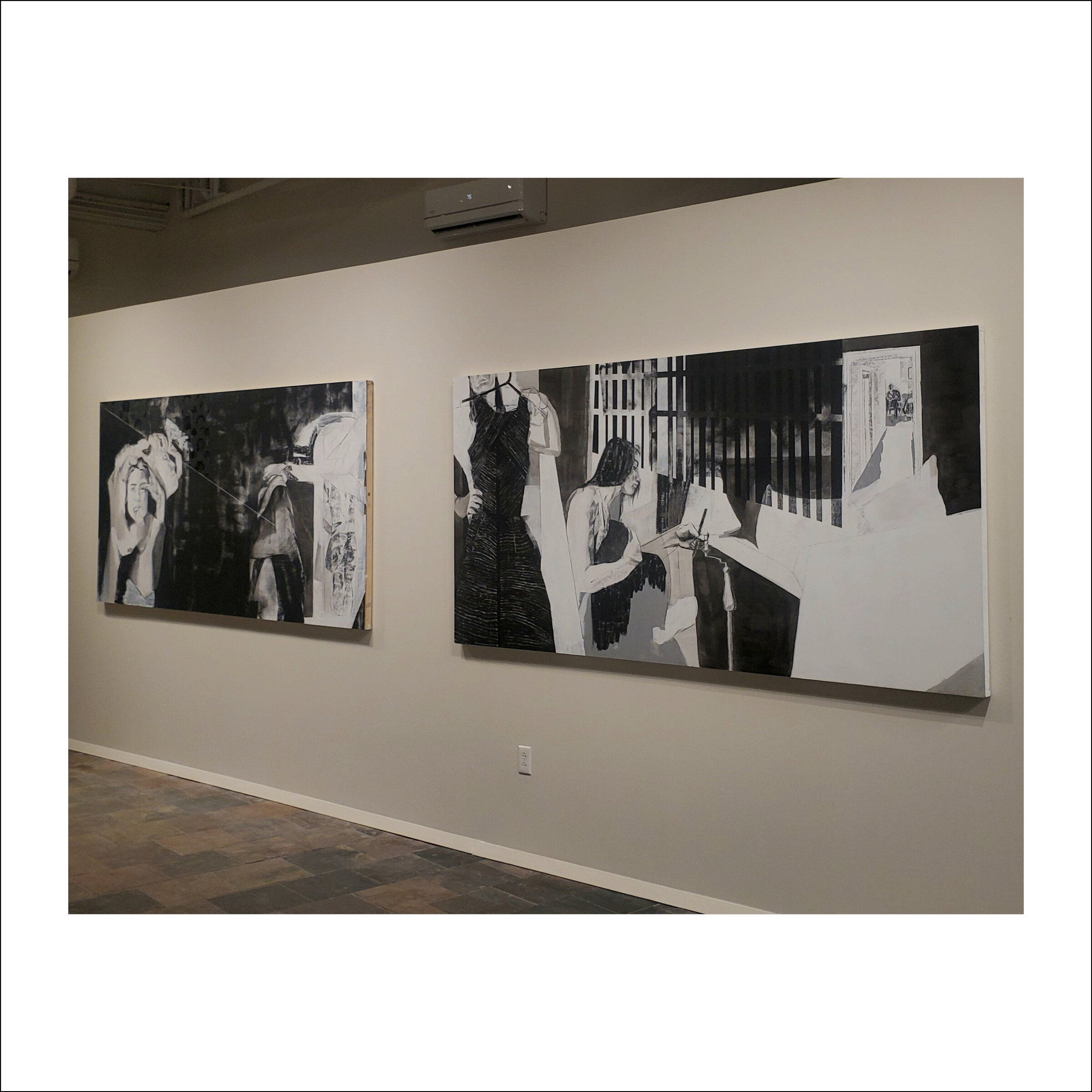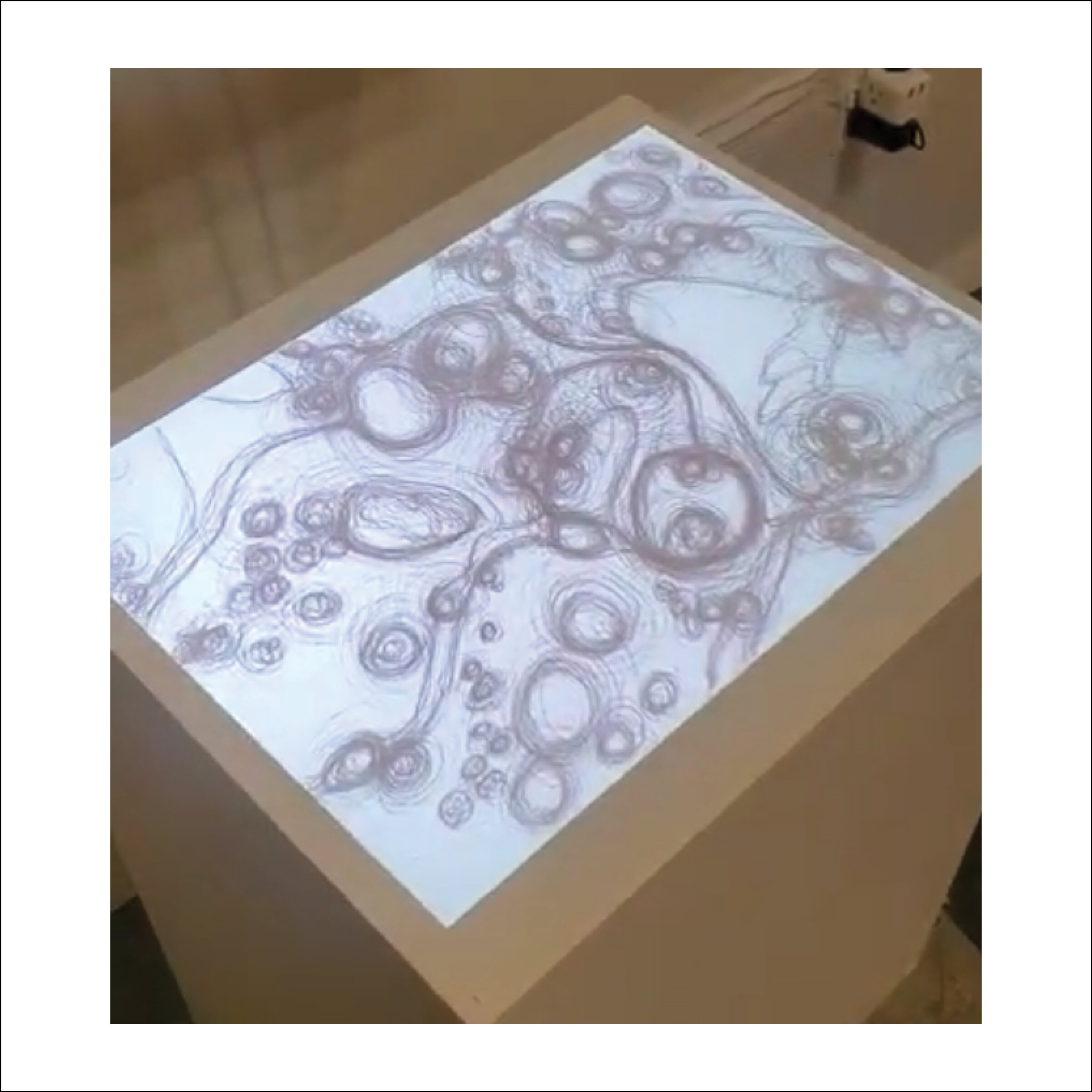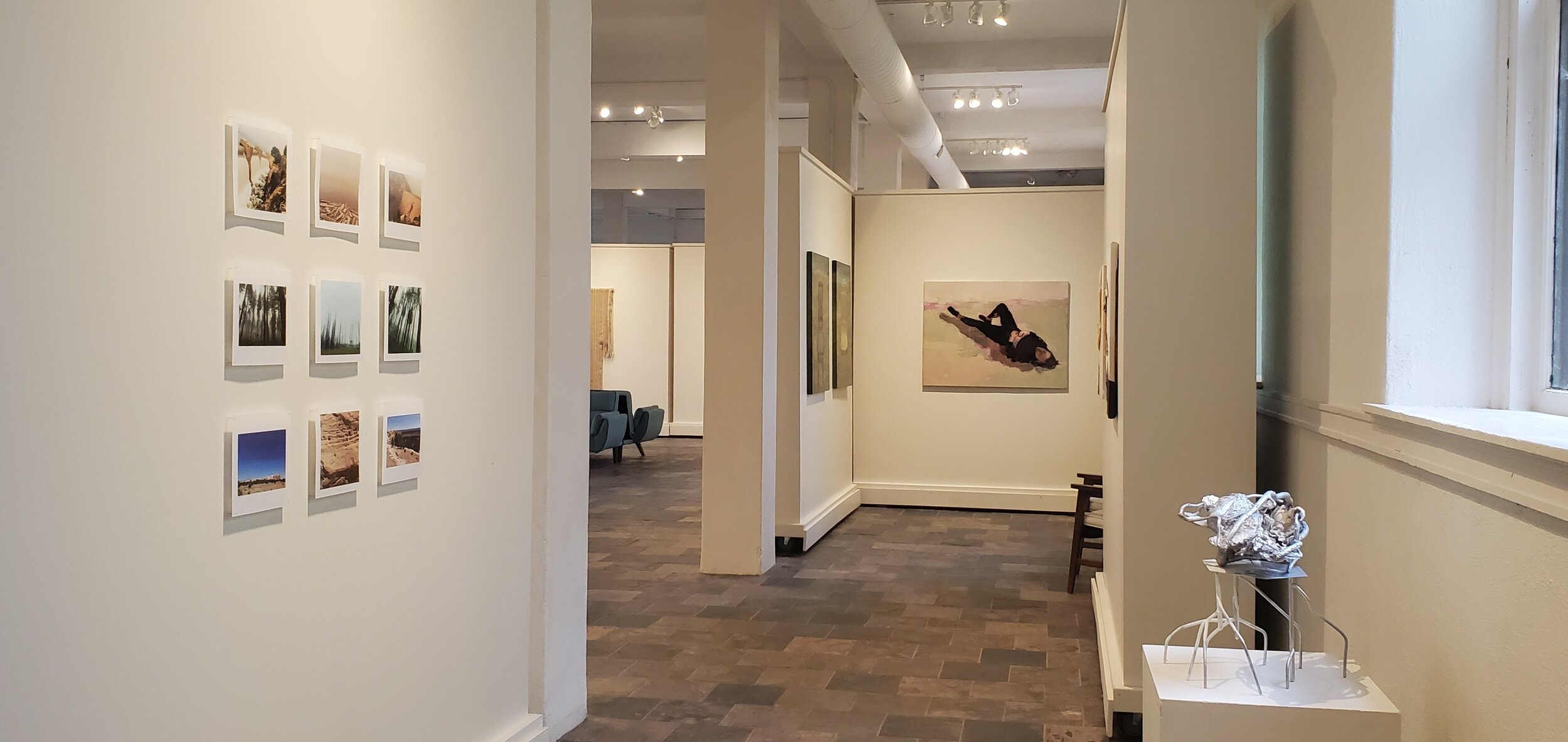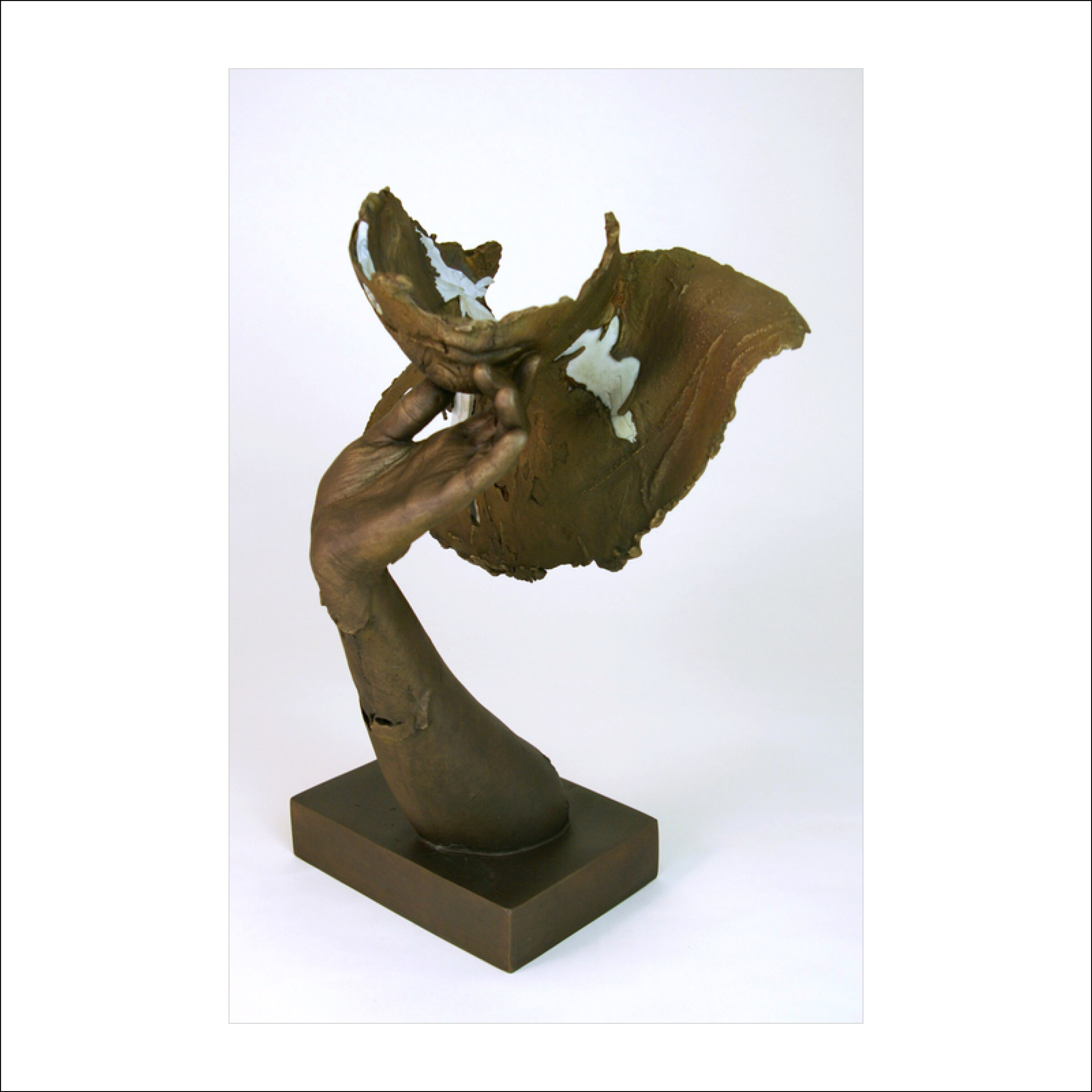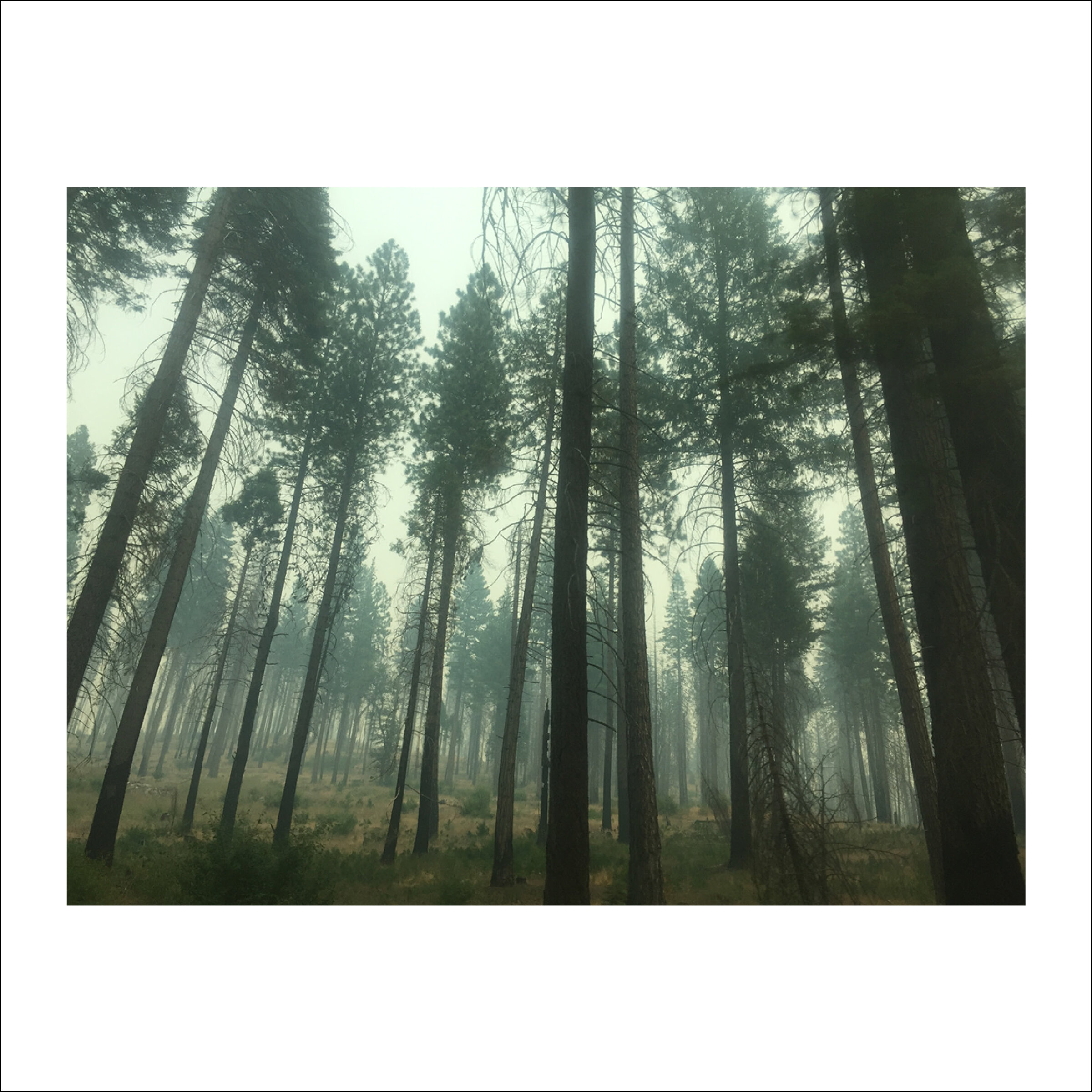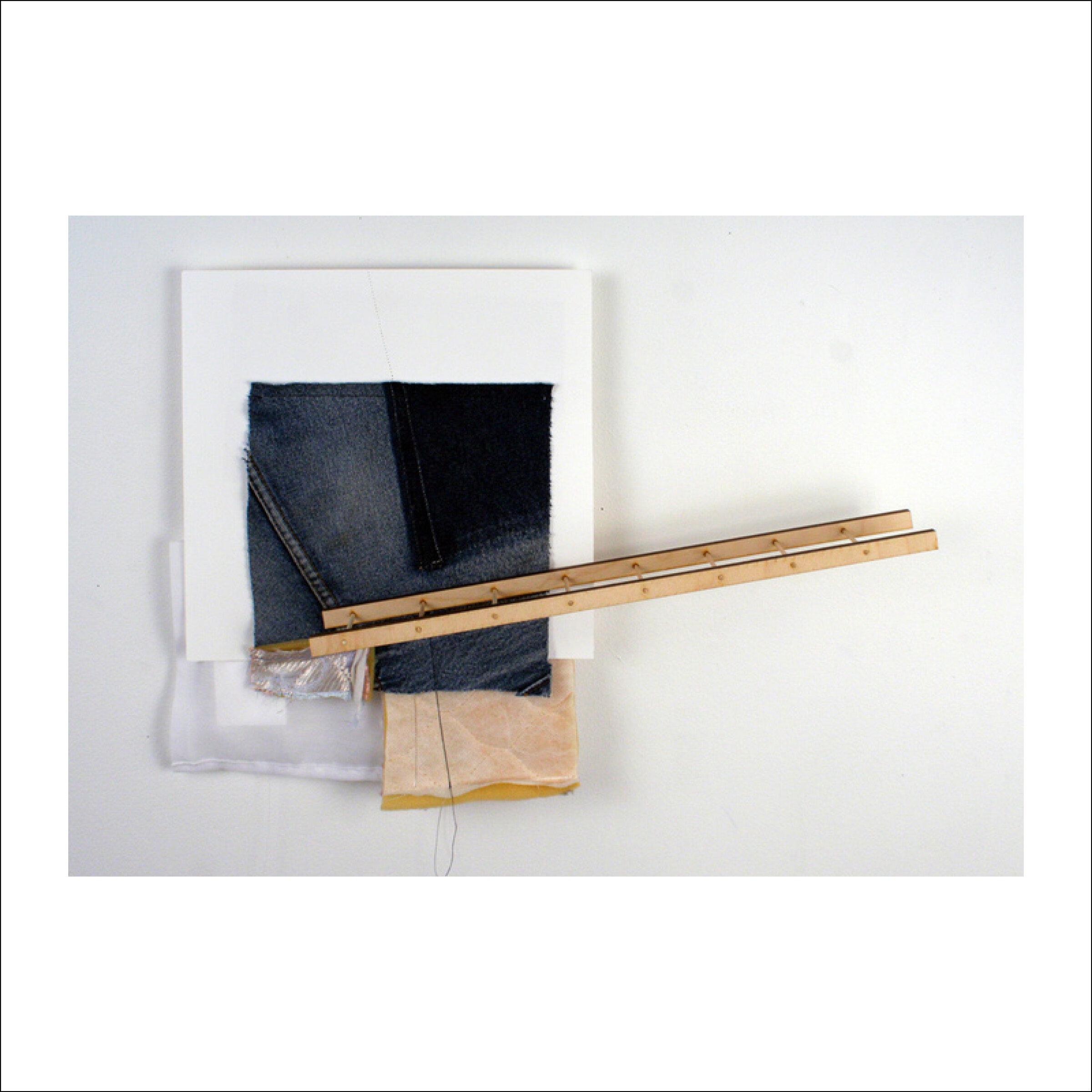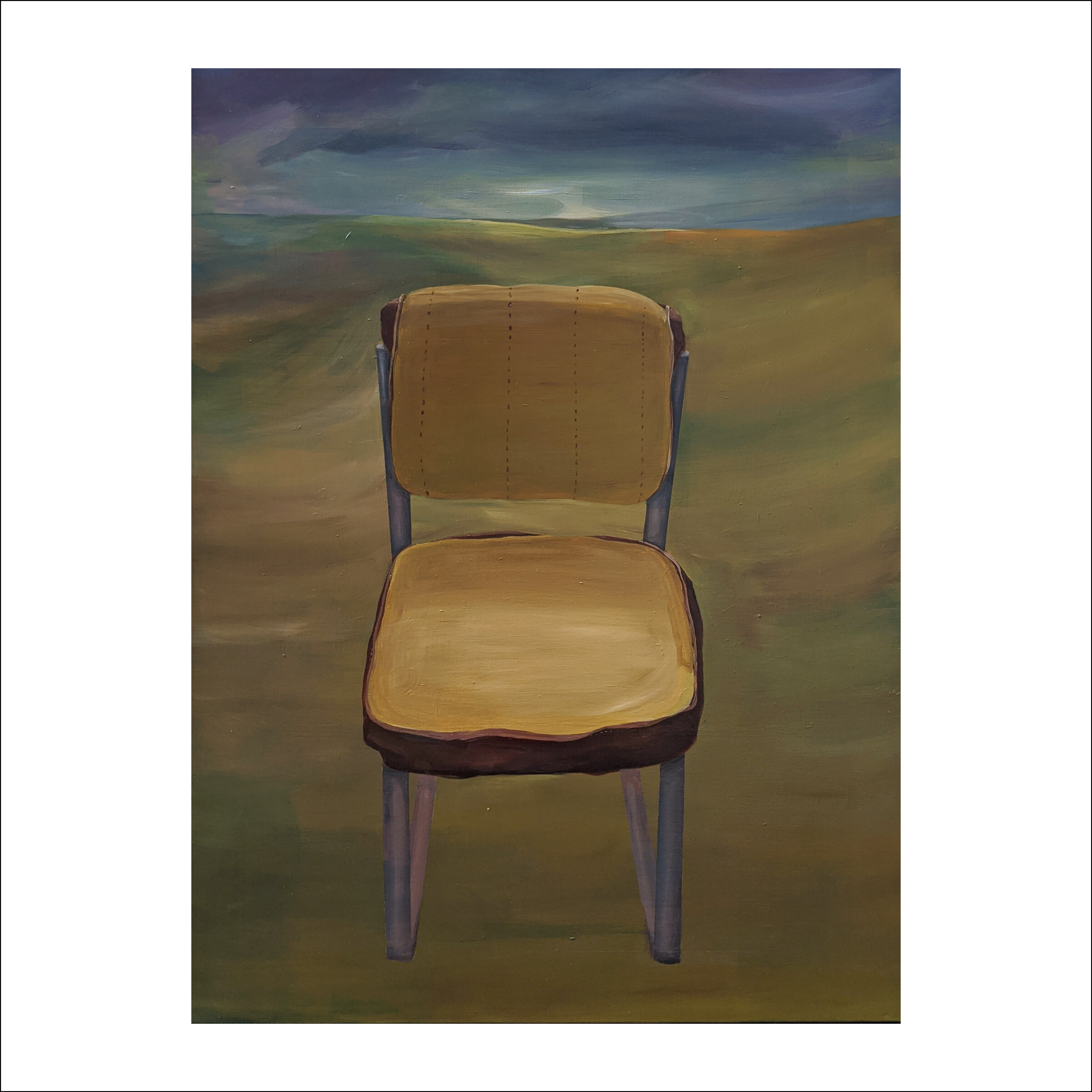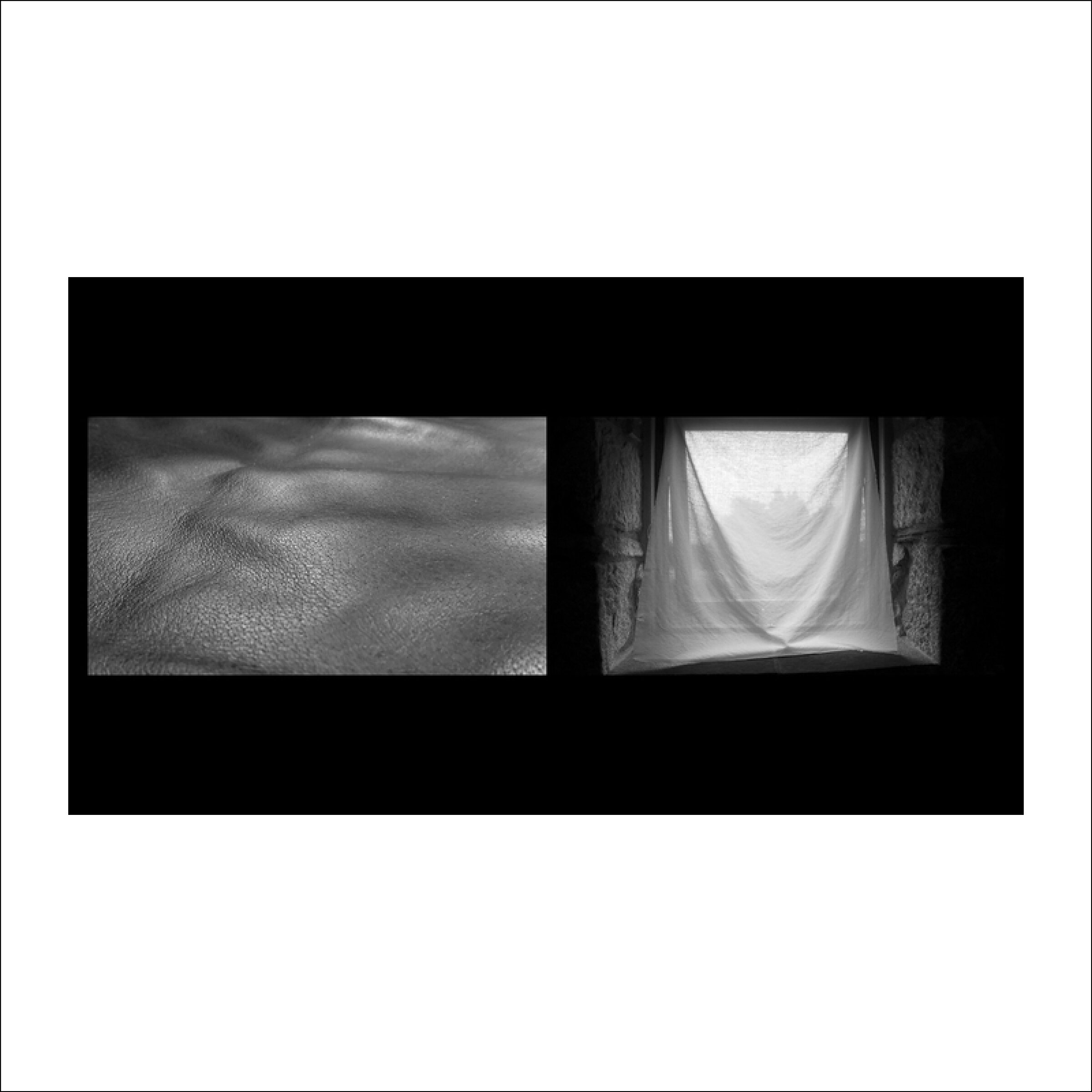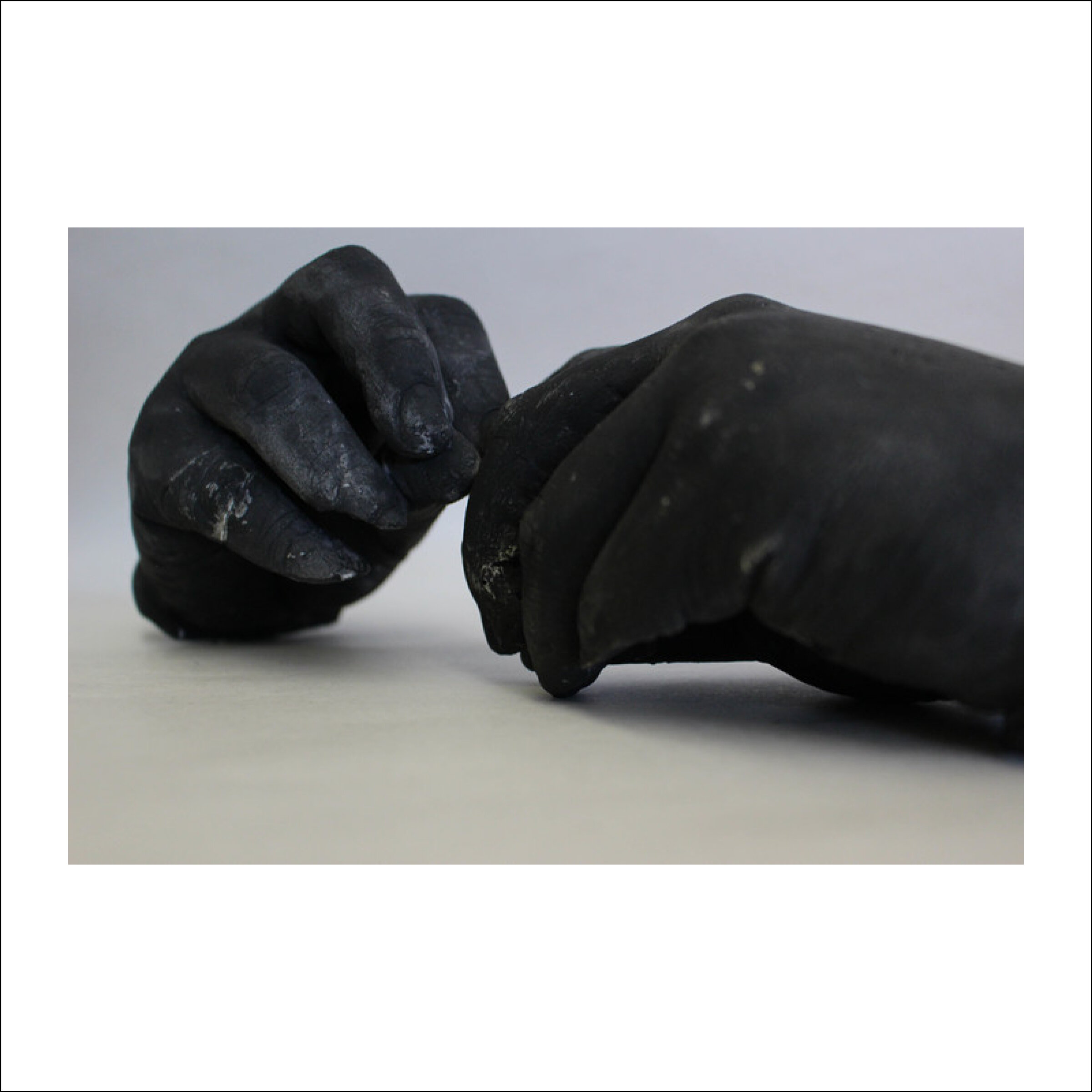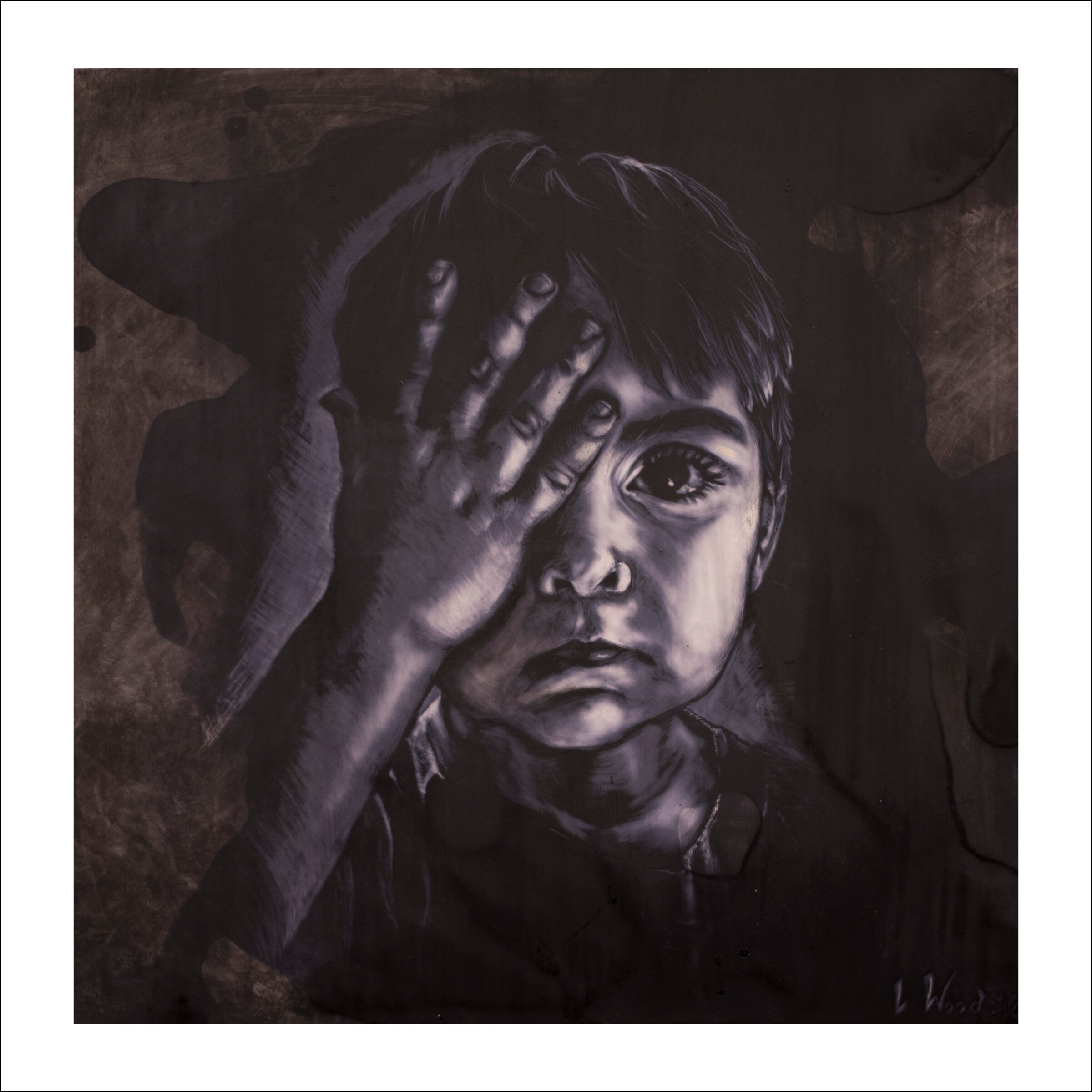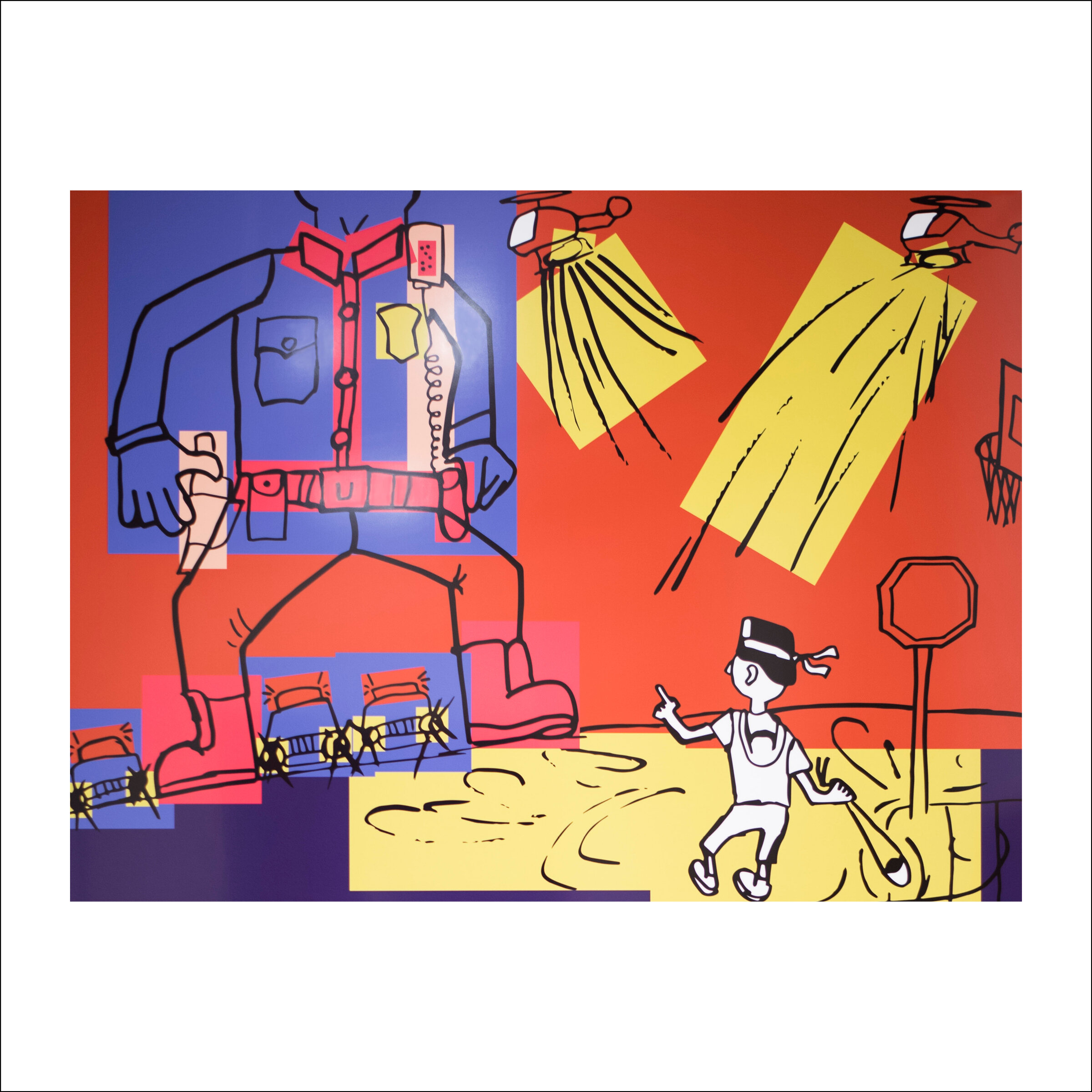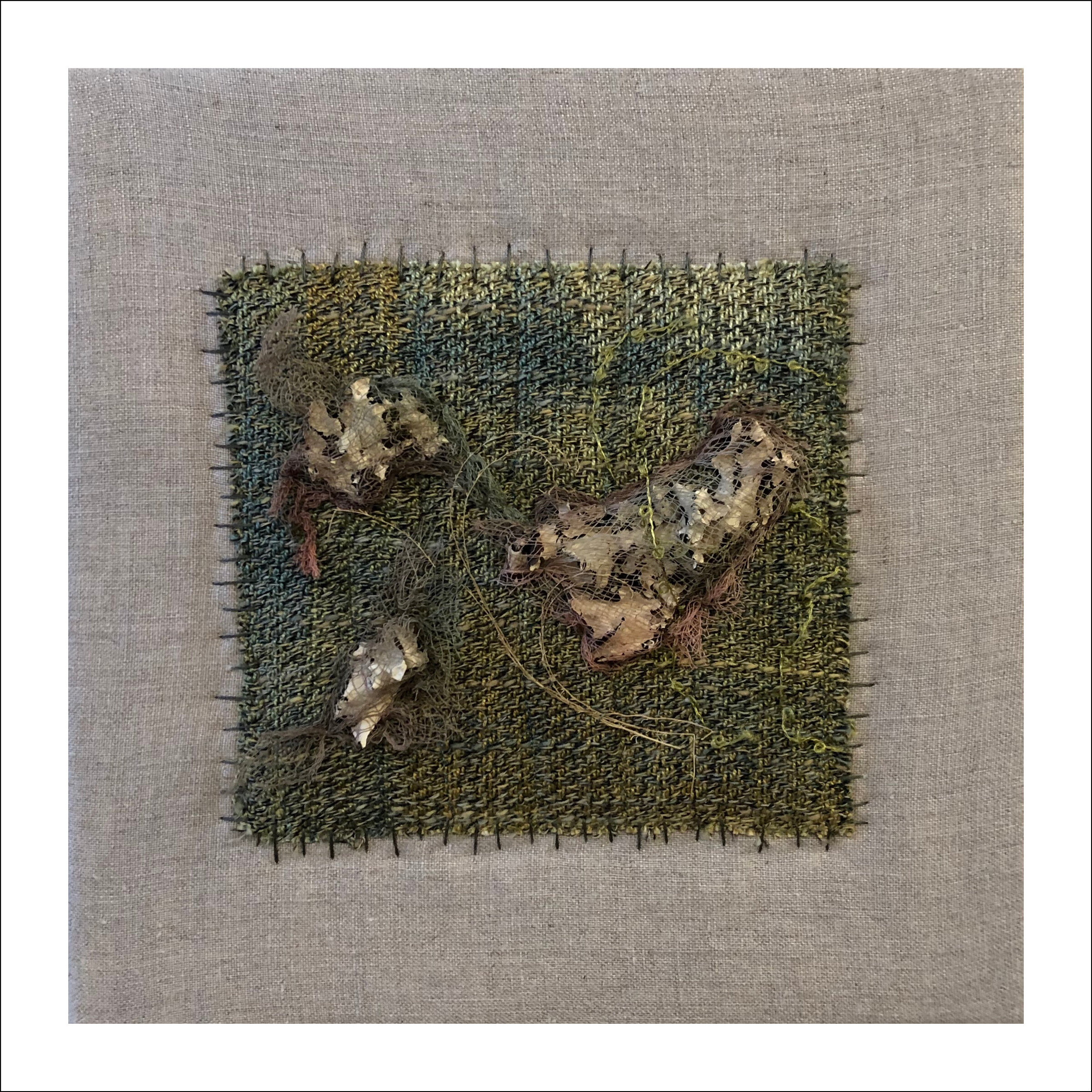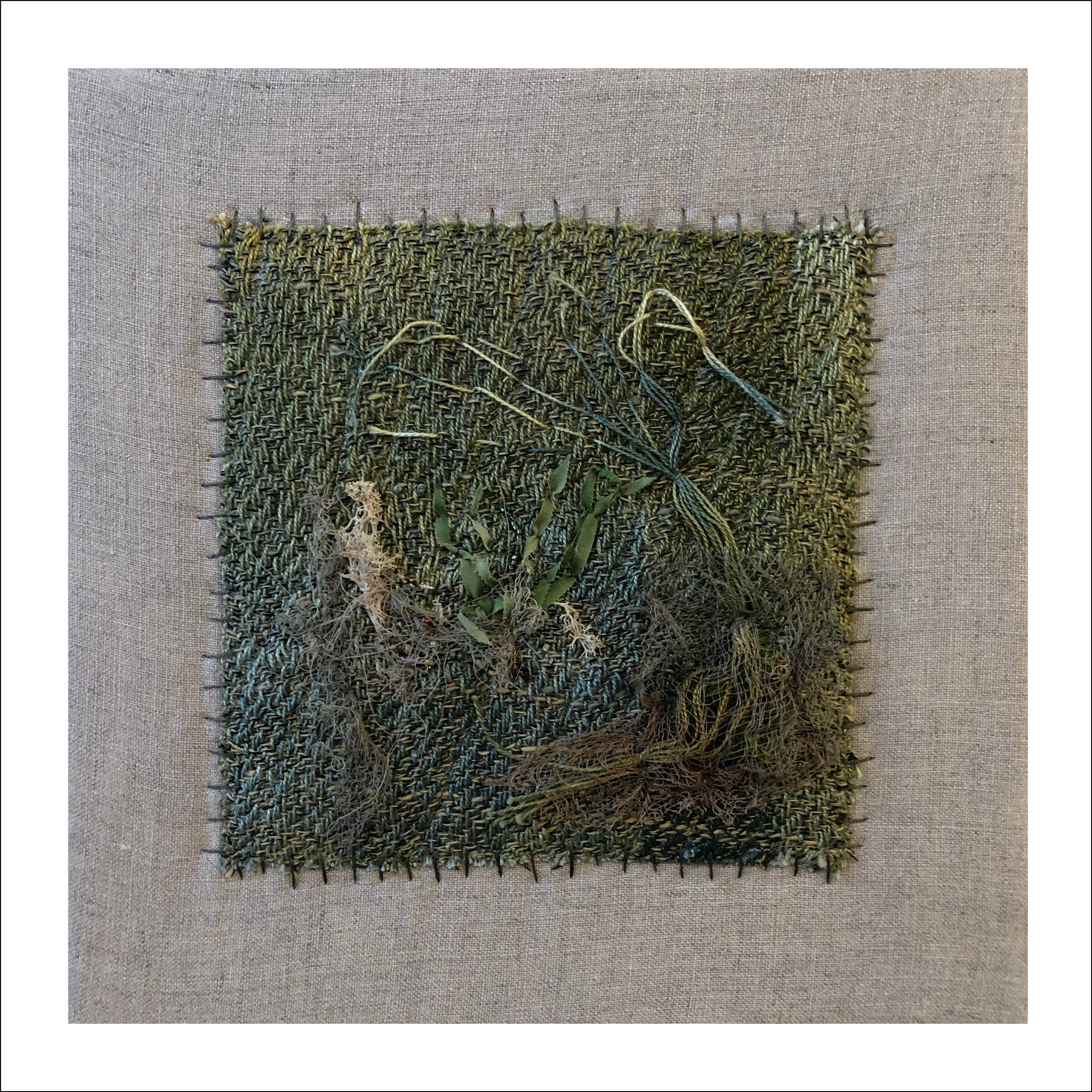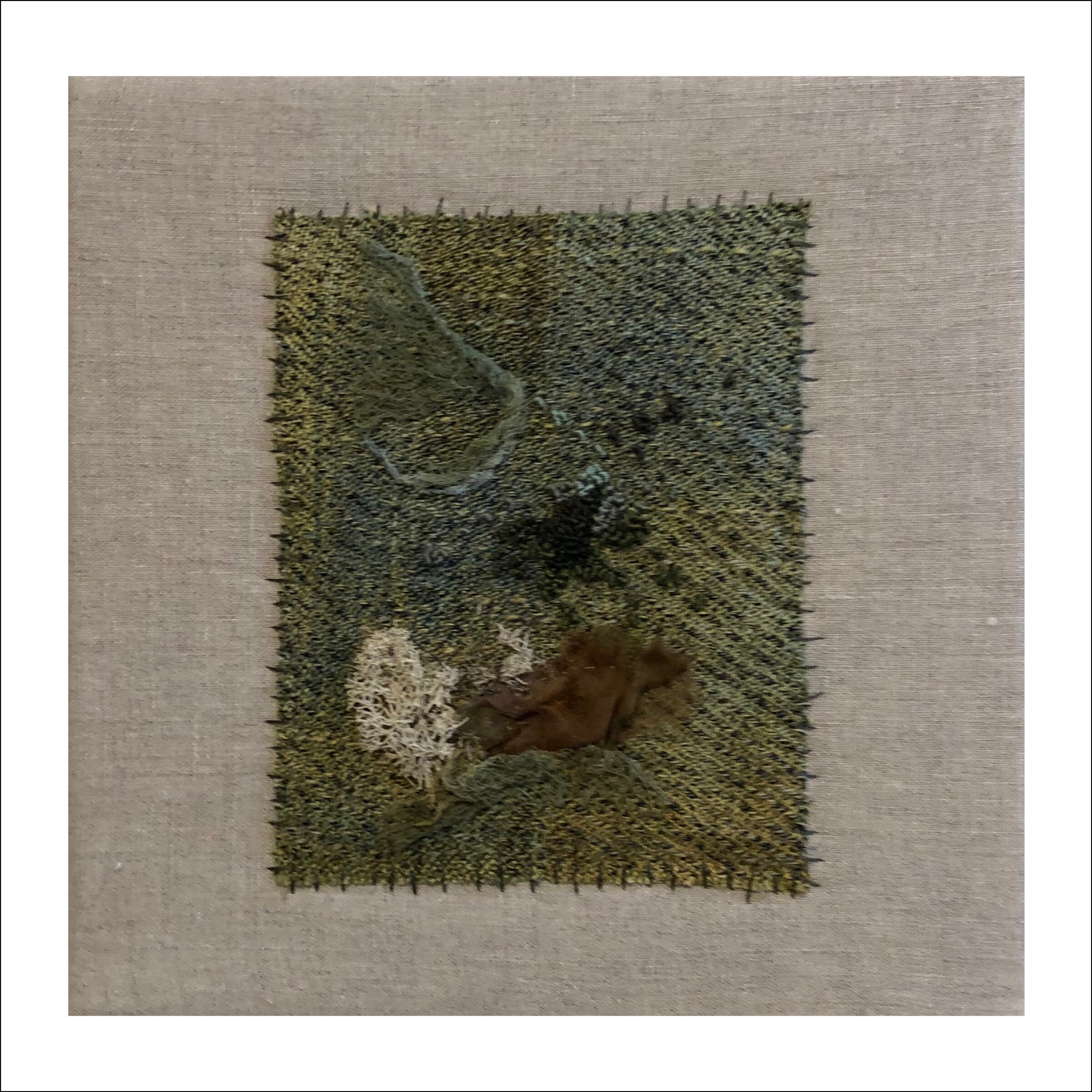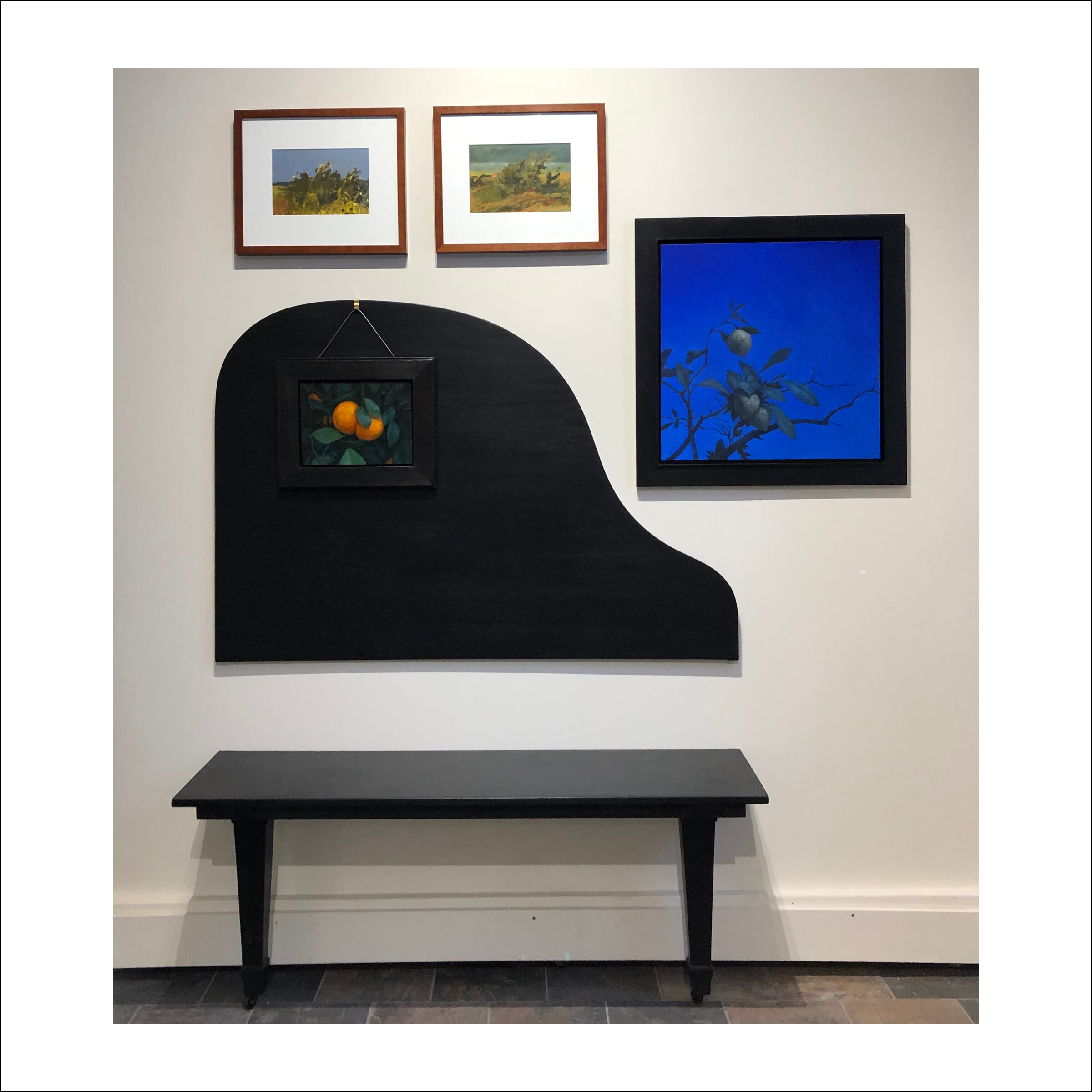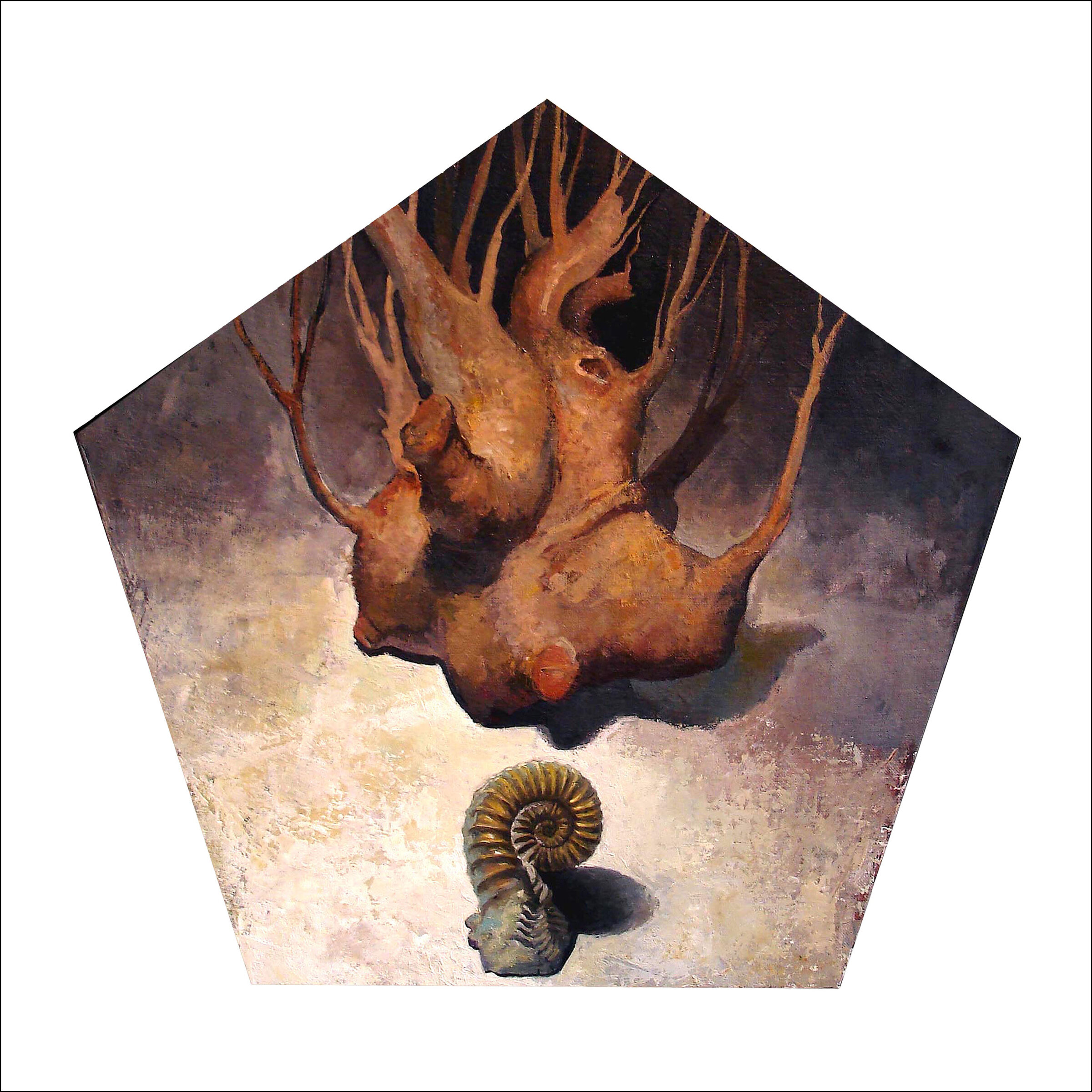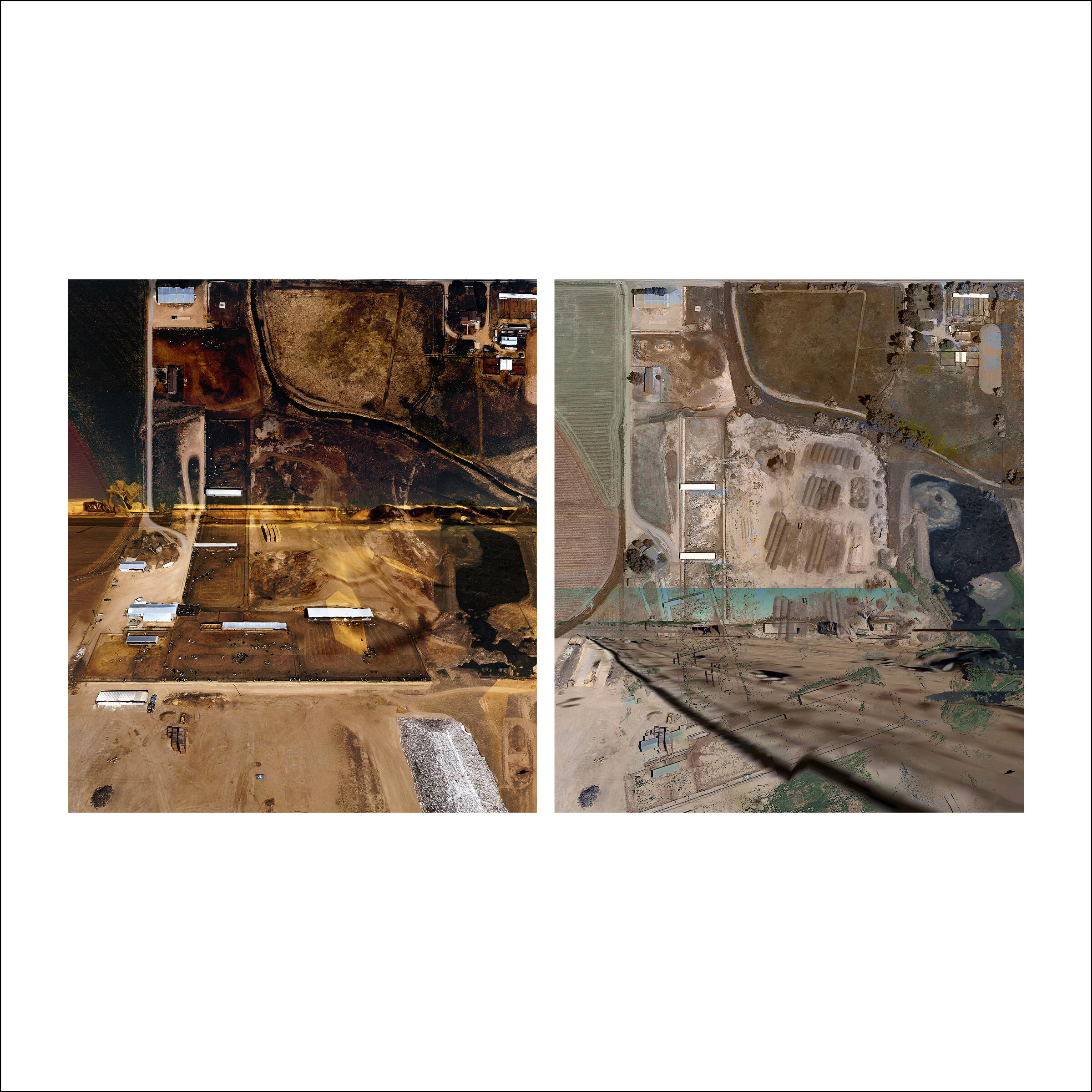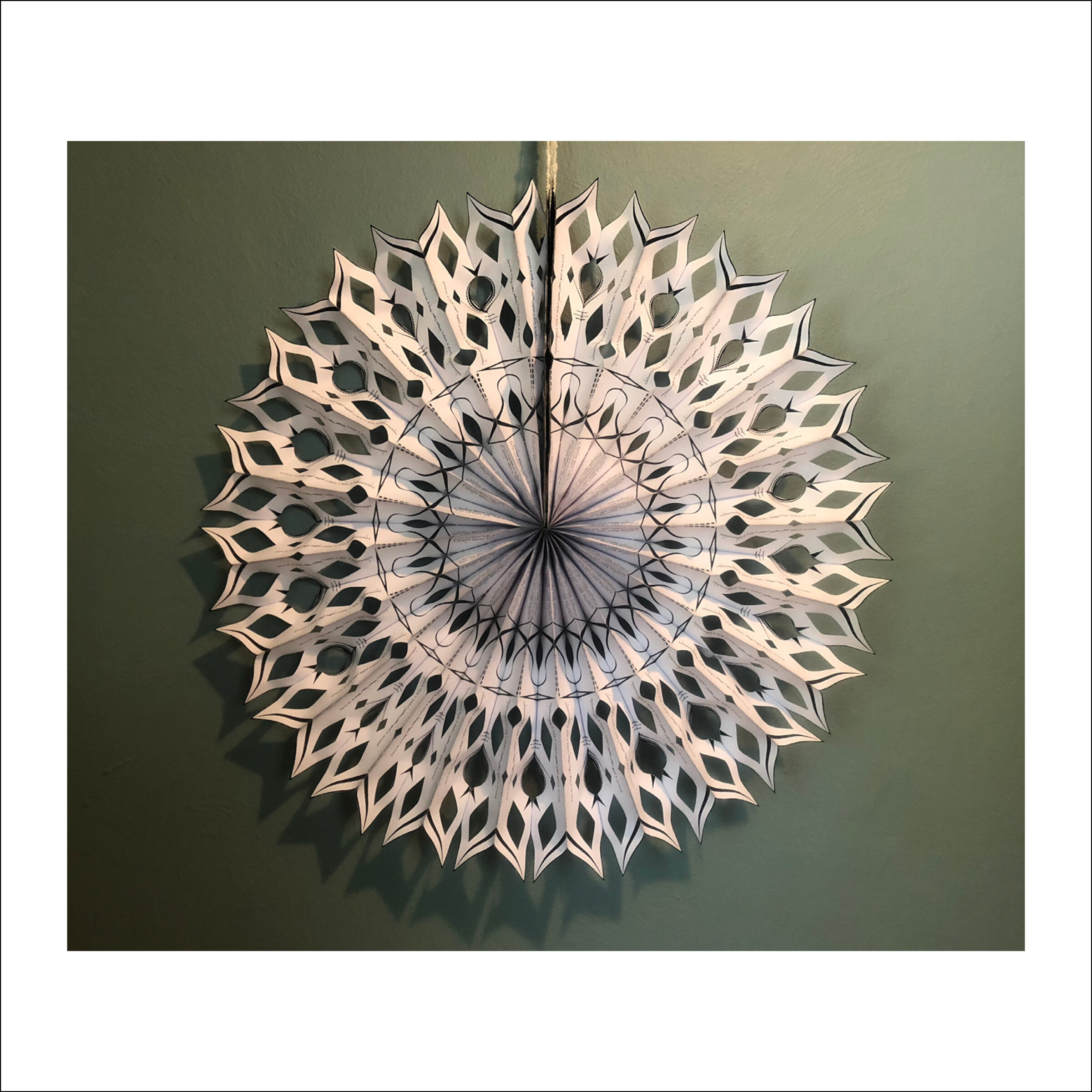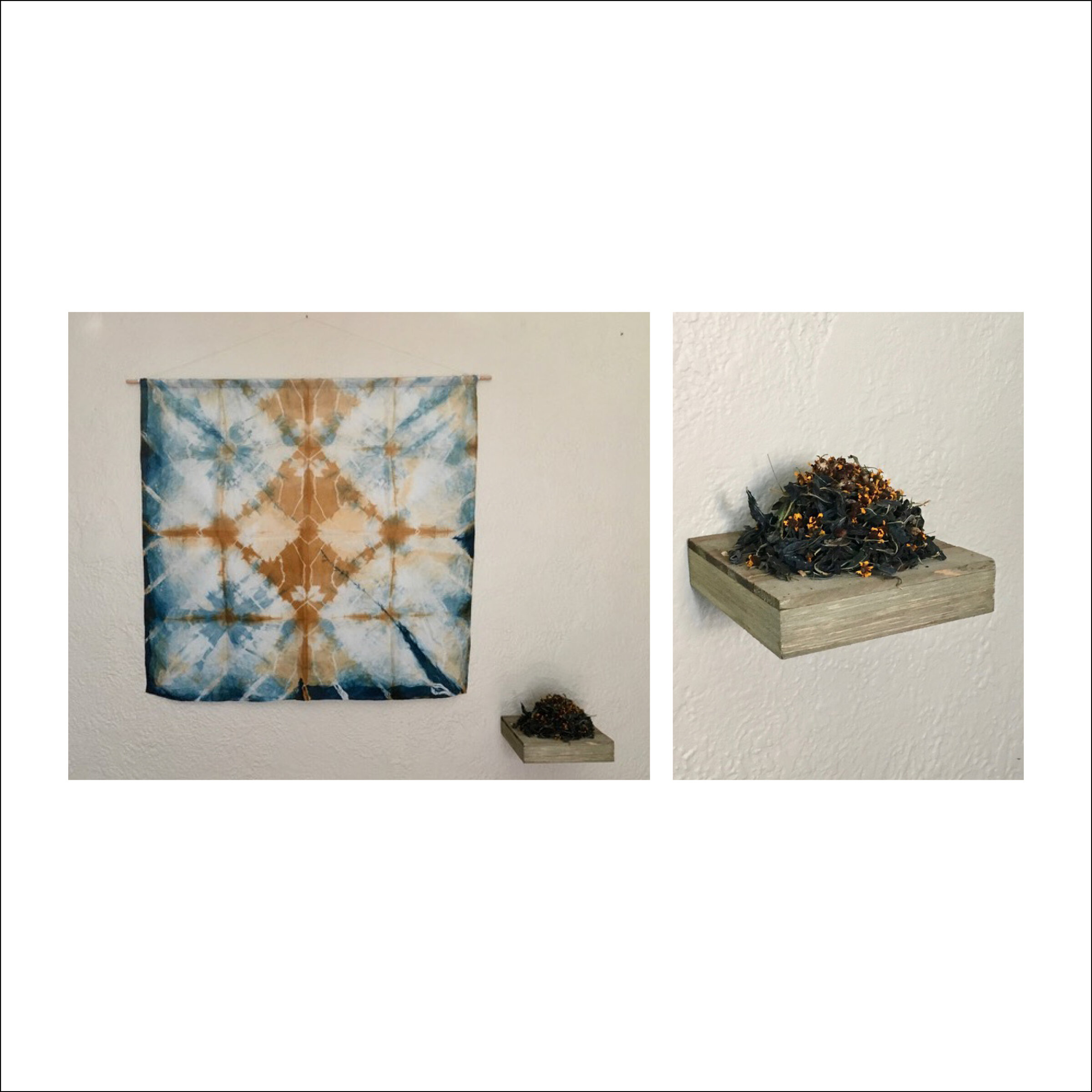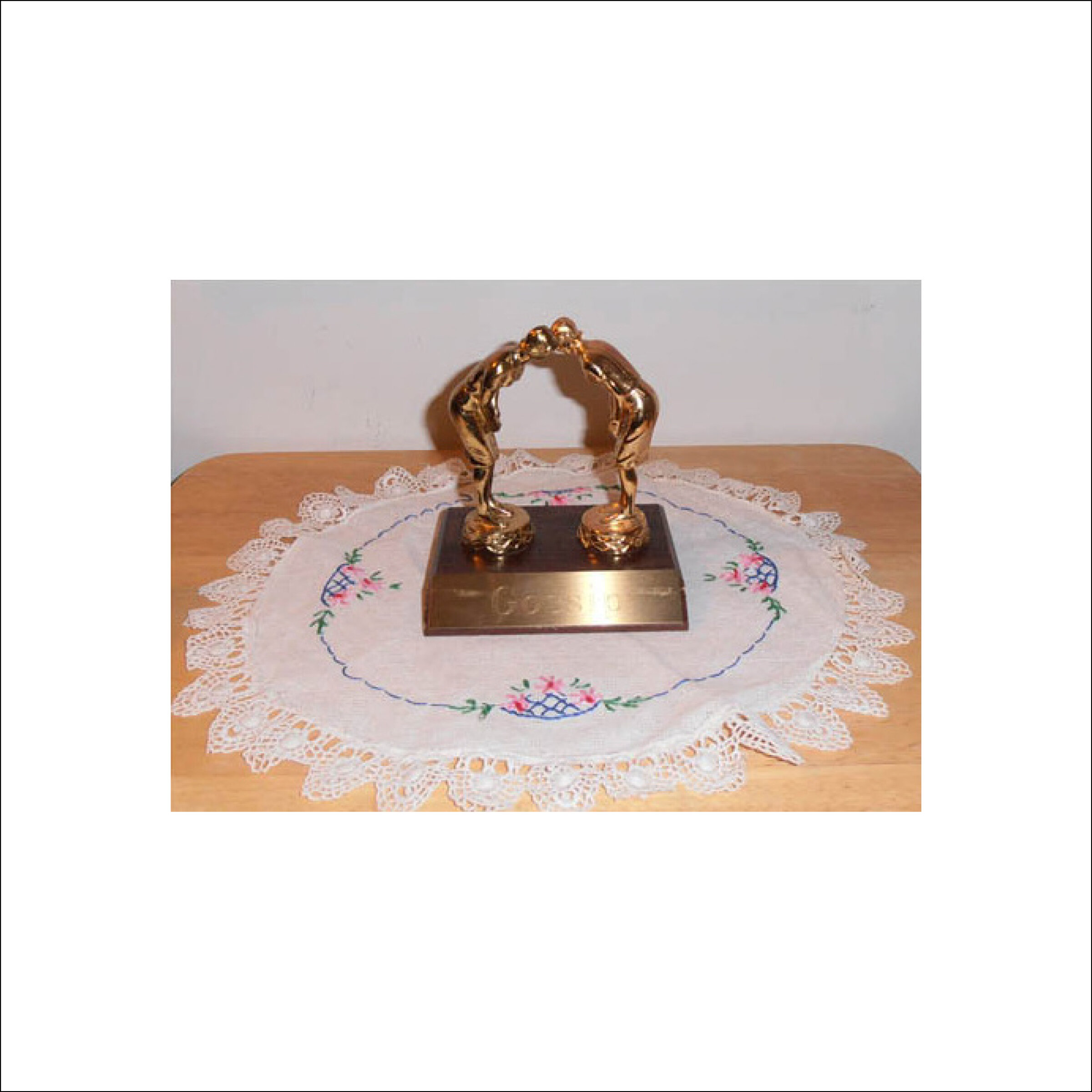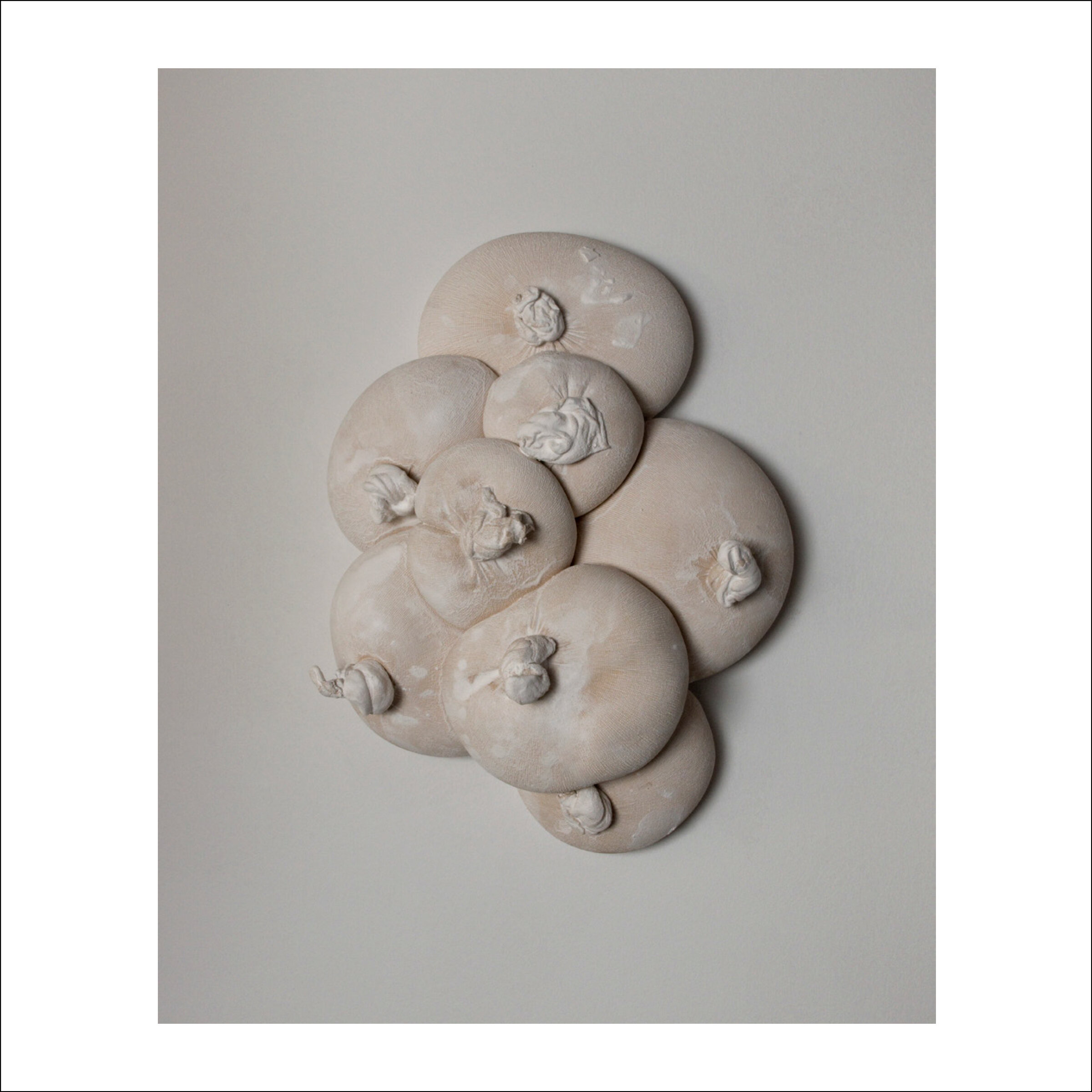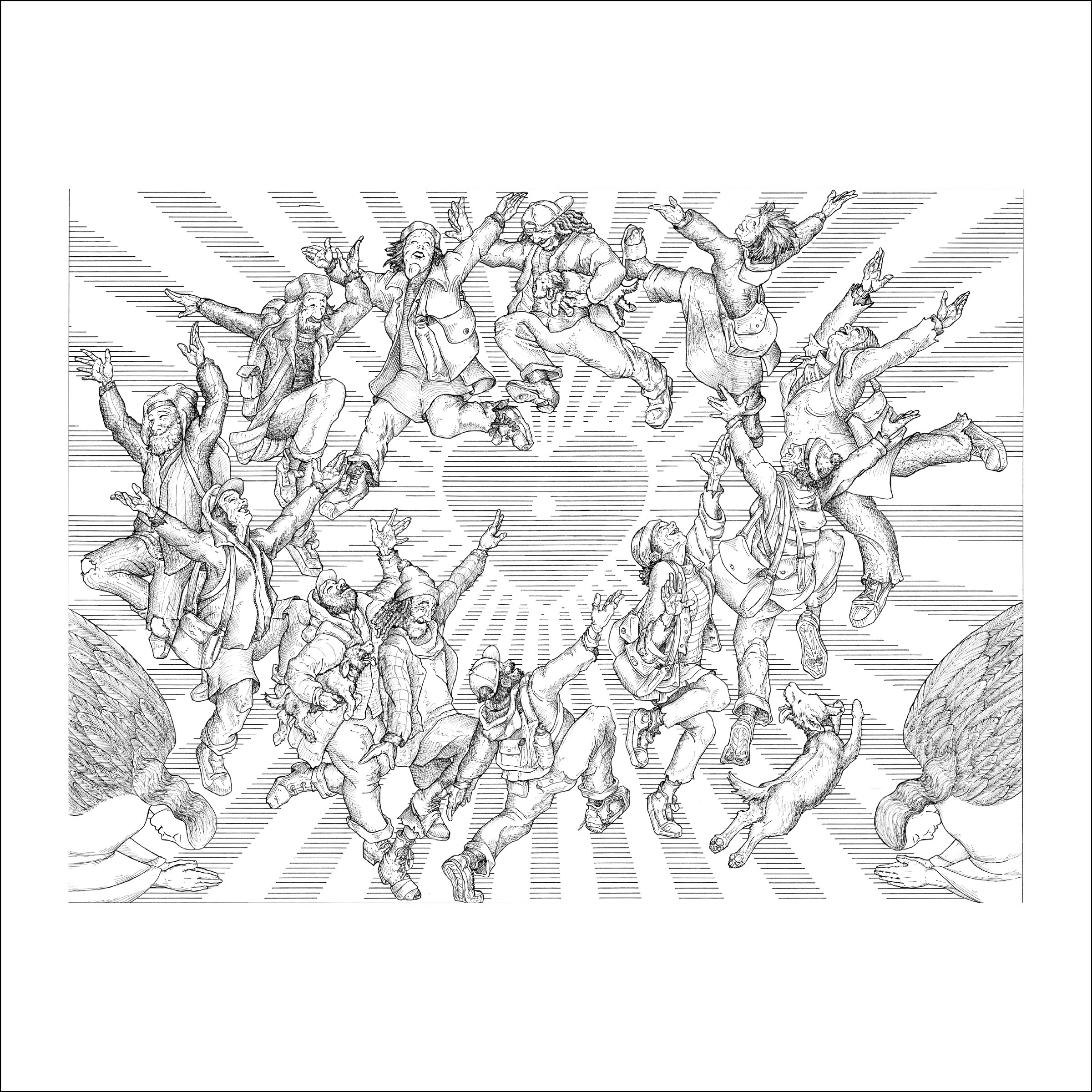Background Image: Scar Comparison, Dylan Mortimer
Back in 2018 (let’s say there abouts) a medical discovery was made about a new organ, the interstitium. You may or may not have heard of it by now. In layman's terms, the interstitium is a fluid-filled “highway”, a space between all our tissues that interconnects every part of our body. The discovery opened completely new ways of thinking; for instance about how our organs are protected during daily activities, or how breast cancer can suddenly metastasize to a far reaching extremity like the knee.
To make a slight correction to the information above, the interstitium was discovered in 2018 in Western medicine. Traditional Chinese Medicine has been harnessing the knowledge and effects of the Interstitum since something like 1027 through practices like acupuncture. Western medicine arrived late at the interstitium party because of how we look at slides under the microscope. With this practice of looking at a part in detail, the interstitium, being a fluid filled canal, collapses on a microscopic slide, rendering it essentially invisible. With the use of a scope, in real time, looking at the interstitium is seen easily, once you know to look for it.
Where do we draw the lines between what is art, and what is a medical image, what is an icon, or propaganda, or marketing? Why do we create these categories? In what ways can a particular genre of imagery, methodology of inquiry, or context of presentation help us see differently or recognize something previously unknown to us? With countless ancient and modern approaches to caring for the body, how can an artist's interpretation of the medical field(s) help us explore, cope, discover, and heal, in new ways that can impact our holistic wellbeing?
11 artists, using painting, clay, glitter, ink, lace, photos, and even brains, illuminate stories of the body, the many things it can do, the joys and sorrows of its limitations, and how we learn to care for it with love.
Interstitum opens to the public for regular viewing Tuesday, September 16, 2025 through March 22, 2026. Our gallery hours are Tuesday-Saturday 11am-5pm. The Dovetail for Interstitium will happen Tuesday, September 30th, from 6-8pm.
Interstitium is curated by Sarah Bernhardt and features work by:
UPCOMING EXHIBITIONS
April 10, 2026 - May 9, 2026
Opening Reception: April 10, 2026
SIX IMPOSSIBLE THINGS
Image Credit: Aida Hasanovic
May 20, 2026 - August 22, 2026
Dovetail Event: TBD
THRIFT
September 8, 2026 - October 31, 2026
Dovetail Event: TBD
PAST EXHIBITIONS
Image courtesy of Megan Kenyon
To Know This Place (detail), Michele Heather Pollock
The Swarms / Songs of praise (detail) by Kelly Kruse
All My Sorrows by Erin Shaw
Open Door : Natalie Christensen
Take a Left at the Silos (detail), Aly Ytterberg
The Way Back, Kristin Nalesnik
Halo 2: The Revealing : The WYJ Creative
Dovetailing2021 : Juliet Gutch, Clare Dearnaley & Sally Beamish
Wooded Vibrations : David Blow
Bone Stone I : Linnea Ryshke
Shhhhhhhhhhhhhh : April Parviz
Enlightment... (In Autumn) : Robert Eustace
Red Chair : Aida Hasanović
Muna by Bill Perry
Thank You : Margaret Nicholson
Untitled (anti) Landscape : Allana Ross
Pleasant to the Sight : Delro Rosco
Olivea : Philip Padilla
Flaming Hot Monolith, Lindsey Lochman and Barbara Ciurej
We Are What explores our complex relationship to food from a number of perspectives. The artists in this show share winsome portraits of American farmers, contemplate the weight of domestic food culture and legacy, comment on consumption and preservation in our ecology, and ponder how food is infused into the heart of our stories both secular and sacred.
Food is fuel.
Food is joy.
Food is a struggle.
Food is life.
Food has tremendous power to unify, and tremendous power to divide.
In a globalized world, as much as we would like to believe our food preferences only affect our own personal taste buds, the artists in this exhibition help us unpack our relationship to the rippling effects of food through a deeply interwoven world. We are of course not only what we eat, but the intricate and massive surrounding systems, people, places, beliefs, and behaviors that are part of the fundamental sustenance that sustains us all is in fact what we are.
Curated by Sarah Bernhardt, We Are What features work by:
plus historic and contemporary art selection from the Sandra Bowden Collection, Come! The Table is Ready
Curator Lunch and Empty Bowls Fundraiser, Sunday, August 10, 2025 from 12:00-2:00 pm at Intersect Gallery, 3636 Texas Ave, St. Louis MO 63118
Save the Date for our next curatorial tour event! This time we are partnering with Empty Bowls, and the ceramic studio members here at Intersect to raise money to fight hunger while giving you a chance to encounter the show, ask questions, and learn more about the artwork featured!
Learn more and register for the event by clicking the button below.
And don’t forget to save the date for our next Dovetail event! The Dovetail event for We Are What will be on Tuesday, July 29th from 6-8pm…learn more and get tickets using the button below.
Untitled (detail) by Allison Luce, St. Louis, 12.7.24 - 12.8.24 (detail) by Anna Schenker, Shiner and Sailor (detail) by Carmen Ribaudo, Barn Owl (detail) by Linnea Ryshke, Towards Futurity by Summer Zah
The Mark ran Feb 17th - April 5, 2025
Thousands of years ago, human beings went deep into a cave in Indonesia. Using earthy red pigments, they made expressive marks on the walls of the cave, carefully depicting three human-bird type characters surrounding a large pig. Using simple colors and marks that now seem distant , these humans told a story, recording something important they wanted to mark, to remember, to celebrate, to see. A phenomenon not isolated to a singular Indonesian cave, this kind of mark-making appears in ancient spaces all over the world. In southern France a stampede of animals dance across rock walls. In Egypt figures swim through some prehistoric lake now only desert. We see realistically rendered buffalo in Spain, abstracted cattle in Somaliland, a multicolored rave in northern Australia. In Argentina a throng of stenciled human hands reaches out across 9,825 years; in those marks spray painted through bone pipes we see our own humanity, not so distant. This desire to mark continues; across place and across time, artists everywhere still use simple lines, complex shapes, textured movement to create marks that draw our attention, marks that memorialize, marks that can connect us.
The five artists featured in this show mark time, they mark caretaking , they mark memory. They mark with the strokes of a brush, rubbings of a crayon , moulding out of clay, and imprints from press and plate. Similar to scripts, fonts, and handwriting, these artists craft a kind of visceral vocabulary that helps them communicate ideas in new ways. Interpreting these marks tells us something about what each artist sees, what they care about, what they ask us to observe and reflect on.
Curated by Sarah Bernhardt and Megan Kenyon, The Mark features work by Allison Luce, Anna Schenker, Carmen Ribaudo, Linnea Ryshke, and Summer Zah.
Mom by Bobby C Martin, All My Sorrows by Erin Shaw, and Hughes County: The Allotment (detail) by Tony Tiger
Altars of Reconciliation, features work by three Native artists Bobby C. Martin (Muscogee Creek), Erin Shaw (Chickasaw-Choctaw), and Tony Tiger (Sac & Fox, Muscogee, Seminole). Their work wrestles and reckons with the history of colonization of Native tribes in the South-Eastern part of the United States, the role Christianity played it that history, and how the artists, who are Christians, have reconciled their faith, their history, and their identity.
We will have a Dovetail event for this show on Tuesday, January 28, 2025 from 6-8pm, and you can learn more and purchase tickets using the link below!
Curated by CIVA
Bliss by Grace McGinnis, The Swarms / Songs of praise (detail) by Kelly Kruse, and Cramer Lake (detail) by Christina Schempf.
Gallery hours : T-F -> 10:30am - 4:30pm & Sat. 12 - 6pm
Don’t Hesitate
by Mary Oliver, 2017
If you suddenly and unexpectedly feel joy,
don’t hesitate. Give in to it. There are plenty
of lives and whole towns destroyed or about
to be. We are not wise, and not very often
kind. And much can never be redeemed.
Still, life has some possibility left. Perhaps this
is its way of fighting back, that sometimes
something happens better than all the riches
or power in the world. It could be anything,
but very likely you notice it in the instant
when love begins. Anyway, that’s often the
case. Anyway, whatever it is, don’t be afraid
of its plenty. Joy is not made to be a crumb.
The Call for This Art
April Parviz, February, 2024
Today I went to the doctor. On the sign-in station there sat a small snowman made from an old salt and pepper shaker. His head was a little styrofoam ball. His hat was the lid of the shaker, and inside his little bottle tummy were a bunch of what looked to be miniature cotton-balls. As I waited to be checked in, I observed the fact that someone had made it. She didn’t have to. But she was perhaps feeling the joy of winter, and she wanted to share her joy. The snowman wasn’t sitting in her home, it was sitting here, for me to enjoy. And I did enjoy it. The reflection that she had experienced joy in making it, and the fact that she had done it selflessly, with no expectation of thanks, brought me joy.
After my reflection on the sweet little snowman, I began to see evidence of someone else’s joy, intentionally being shared with strangers, everywhere I went. The person in the house five doors from mine, has a little jar of complimentary dog treats out on a bird feeder hanger in their yard, right by the sidewalk. People have lovely seasonal wreaths hanging on the outside of their front doors, not on the inside. Painted rocks are mysteriously left in people's gardens by strangers. I’m sure that now I'm aware of this, I’ll be seeing evidence of joy everywhere. And strangers will discover footprints of my own joy, making their footprints joyful too.
When I look at the current world of art, I feel like I see a lot of evidence of many inspiring things, but not always so much joy. I know in my own art practice, I am often fueled by loud palpable emotions like pain and confusion. Perhaps if I begin practicing using joy as fuel, I will begin to do it more habitually. Perhaps if we practice seeing joy more we can become habitual joy detectives.
- - - - - - - - - - - - - - - - - - - - - - - - - - - - - - - - - - - - - - - - - - - - - - - - - - - - - - - - - - - - - - - - - - - - - - - - - - - - - - - - - - - - - - - - - - - - - - - - - -
June 29,
I can NOT wait for you all to see the joy pouring out of our gallery doors through this exhibition. (-April)
Featuring visual and written works by, Sarah Armbrust, Lisa Asagi, Sarah Bernhardt, Morgan Johnson Burton, Diane Bush, Katie Calfee, Tiia Corzine, Debra Disman, Susan Ferguson, St. Francis of Assisi, Jenny Gastler, Katherine Gastler, Ross Gay, Teresa I Getty, Patrick Greenwald, Michelle Gomez, Sarah Guthrie, Melissa Gwyn, Ellie Harold, John Hendrix, Bryce Holt, Jean Howard, Kelly Kruse, Jill Katherine Kuanfung, Jill Kyong, Bernadette Lamb, Sara Maichel, Lori Marble, Grace McGinnis, Brian Mitchell, Henry Moyerman, Mary-Jo Okawa, Mary Oliver, April Parviz, Benjamin Parviz, Stone Peng, Delaney Rogers, Delro Rosco, Rachel Rose, Théa Rosenburg, Gary Rubin, Christina Schempf, Friedrich Schiller, Stephen Schubert, Michelle Schwengel-Regala, Peg Shaw, Camille Silverman, Ted Washington, Hannah Wieting, and Taylor Yocom
EVIDENCE OF JOY EXHIBITION CATALOG:
Curated by April Parviz
Foliose by Hollie Regalo, Sky Containers by Anna Schenker, Color Swatch by Katie North, Blaze (Grid #01) by Michael Winters
Instructions for living a life:
Pay attention.
Be astonished.
Tell about it.
—Mary Oliver
Field Guide is an exploration of the ways in which we discover and exchange knowledge that transform our experience of looking at the world. Field guides transfigure the invisible to the seen, the foreign to the familiar. A field guide helps us differentiate and identify what is valuable from what could be dangerous. In an era of ever-shortening attention spans, art can be a field guide to help us pay attention, to help us be astonished.
Featuring work by Scott K. Adams, Maddie Aunger, Morgan Bakaletz, Xavi Bou, Kyle Brandt-Lubart, Casey Lance Brown, Ned Bustard + Every Moment Holy, Jennifer Colten, Joe Cory, Jessie Donovan, Aaron Ellison + Eric Zeigler, Carlynn Forst, Brittany R. Gilbert, C. Annie Hart, Sophia Hatzikos, T. Joy Hitchcock, Joanna Hoge, Bryce Holt, Adriane Honerbrink, Thomas Kiefer, David Lancaster, Sophia Mason, Katie North, Patricia Palmer, April Parviz, Michele Heather Pollock, Christopher Reiger, Hollie Regalo, Mike Roth, Anna Schenker, Natalie Schorr, Lynne Smith, and Michael Winters
Curated by Sarah Bernhardt
Field Guide Exhibition Catalog:
We invite you to come experience Field Guide by attending our Dovetail Reception on Tuesday, February 13, from 6-8pm!
Images courtesy of artist Megan Kenyon
The Women’s Chapel is an interdisciplinary art exhibition created by artist Megan Kenyon and a collaborative group of evangelical women. They are creating an incarnational space, one embodied in this community of people deeply hurt by evangelical Christian spaces but who continue to practice their faith in Jesus despite that hurt.
Inspired by feminist consciousness-raising groups and art installations from the 1970s, The Women’s Chapel shows up as the experiences shared in the group, and in artifacts of that sharing, which form the art exhibition. Using incarnation as an active verb, Kenyon and her group explore how prophetic imagination expresses itself in rage, lament, humor, and hope to illuminate and challenge the places where patriarchy lurks in church practice and co-opts the Gospel.
The work in this show predominantly takes the form of photography, collage, found sculpture, and text, making visceral the testimonies shared. The show features self-portraiture, as Kenyon wrestles with her own faith and response to uncovering patriarchy in institutions she trusted. It also features work created by the group through facilitated workshops and work Kenyon created in response to things shared by this group. Their work stands as a critique from the inside, and the exhibition, The Women’s Chapel becomes an open invitation to anyone who is willing to come and see.
In the spirit of our Dovetail receptions, Intersect Arts is partnering with Washington University’s John C. Danforth Center on Religion and Politics to host a panel discussion in conjunction with the exhibition The Women’s Chapel. Artist Megan Kenyon will be one of the guest speakers, and you won’t want to miss it! Click below to find out more and register for the event!
Work by Jessica Hunt, Josh Steinbauer, Tina Borchet, and Michael Fleishman
Dovetail Reception is October 3, 2023 from 6-8pm
From the Curator:
"There is nothing like a gleam of humor to reassure you that a fellow human being is ticking inside a strange face." –Eva Hoffman
From physical humor to surreal absurdity, deadpan satire to macabre hyperbole, from low-brow to high-brow, puns or parodies, there are so many diverse outlets for this important function of human society, humor. But apparently humor is no joke. Research demonstrates its powerful capacity to create empathy and stimulate self-reflection. Humor, tied to the specifics of culture and combined with individual personality, creates a sharp double-edged sword that can—in one swoop—unite, and in another divide, at times bridging and at times delineating social boundaries.
Art museums and galleries parade as pantheons of preciousness and prestige—places where humor has not always been welcome. The art world has always thrived on creating in and out groups. Those who can and can’t. Those who get it, those who don’t. Those who play the game, those who undermine, and those who don’t give two hoots. From the historical relegation of artistic humor to political cartoons, to a contemporary palette for only irony and mockery, can we have a real, even joyful, laugh and still call something serious art? Viewers and artists alike may struggle to navigate the line between sensitivity and not taking themselves too seriously. Can we find ways to experience art and humor as connective, rather than divisive?
This collection of artworks playfully explores various modalities of humor as artists engage a wide variety of topics in their pithy practices. Many artists invite you into challenging topics that might hit that funny bone. Did you laugh? Great. You didn’t laugh? That’s ok, that’s not necessarily the point anyway. Whether you “liked” a particular style of humor or not, observe how the humor in that piece affected your posture towards considering the artist's deeper purpose. Observe how humor, no matter how feeble, or dumb, or witty, or strange, connected you to someone else.
And please—do us a favor, even out of pity—laugh out loud just a little.
Funny Bone is open from September 9 - November 4, 2023
Curated by Sarah Bernhardt
#funnyboneIAC
From the Curators:
Clothes: they unite us and distinguish us. Whether professionally required, functionally necessary, economically constrained, historically informed, or just for the love of the look, we end up developing our own style - a personal uniform. Our uniforms weave a visual language, composing an autonomous identity while aligning ourselves with like-minded peers and communities. We are also observers, deriving meaning from viewing someone else’s clothing. We draw from a rolodex of memories and experiences that influence our stereotyping. What role does a viewer’s opinion play in the construction of our own identity? Does observation cause us to hide behind a uniform and instead project what we think people expect to see?
uniFORMity investigates the principles of style and these questions through the examination of five uniforms. To commemorate the last five years in this space, five fashion designers connected with five individuals who represent key partnerships integral to Intersect’s growth since its beginning in 2013. The designers collaborated with these individuals to create new uniforms inspired by their own traditional uniforms, professions, interests, and backgrounds.
Fashion is not limited to a brand name or the price tag but is a billboard of personalized expression. A quick glance at an outfit can become an exploration, uncovering beautiful complexities held by the wearer. As we attempt to better understand our relationship between clothes, observers, and wearers, we find that we FORM a unique community unified by our participation in style.
curated by Kasper Woldtvedt and Sarah Bernhardt
Exhibition Runs June 10th – August 20, 2023
#IACfashion5
Untitled by Stan Chisholm, Better Living Through Chemistry by Katherine Gastler, Balloons in the Park by James Spell, and Pretense I - Nightfall at Negro Bill Canyon by Tobias Greene
May 1 - May 26
DOVETAIL RECEPTION : May 9TH | 6 - 8 PM
Here//Now is an intimate look at what kind of work is being produced in this place at this moment in time. Rather than being joined by any thematic concept, or media parameters, or (perhaps most importantly) professional ambitions, this exhibition asks what happens when work is brought together by physical proximity, of place, of being made next to one another here...now. Artists who make and think and create in all the kinds of ways that contribute to the larger ecosystem of creative practices can find themselves segmented and segregated into the various niche markets and worlds. We perhaps find ourselves rarely occupying the same spaces at the same times with the same kinds of audiences. With work from artists all within the 63118 zipcode, the exhibition asks what sorts of learnings can come from a moment when we dismantle perceived hierarchies in the art world, to exist simultaneously, here and now.
Curated by Linnea Ryshke and Sarah Bernhardt
#herenow23
January 23 - March 30
DOVETAIL RECEPTION : february 28th | 6 - 8 PM
The Night Watch by John DenHouter
After the spectacle of the sunset and before the promises of sunrise, the world is gradually cloaked in shades of blue. Blue hour. Neither night, nor day. Neither here, nor there. Both. And. This exhibition explores times of transition, liminal space, and metamorphosis. Change is one of the surest experiences of the human condition, and the hovering poetic moments both in and out of time, the blue hour, offers us a space to be fully present in the in-between.
Works from over 50 artists across the country invite us to consider and connect with varied experiences and interpretations of the Blue Hour.
Featuring work by Brian Alexander, Marilynne Bradley, Madeline Brenner, Sally Brogden, Michele Borgarelli, Charles Bosco, Katie Calfee, Trevor Campbell, Youyun Chung, Bettina Cousineau, Jessica Curning-Kuenzi, Elaine Daily-Birnbaum, John DenHouter, Matthew Derezinski, Mark Dierker, Lauren Douglas, Andrea Ernest-Sheehan, Robert Eustace, Tracy Finn, Gigi Florek, Gloria Gale, Suzanne Glémot, Philip Harper, Emma High, Linda Jurkiewicz, Tom Koken, Kristi Kuder, Jordan Lienhoop, Craig Lloyd, Mia Loia, Justin M Millar, Lori Marble, Jeanne Marklin, Marjorie Jane McClelland, Brian Mitchell, Sara Nordling, Mark Pack, Magda Parasidis, Keith Pitts, Bill Russell, Jeff Schofield, Gayathri Seetharaman, Heather Sparkman, Barb Stahl, Richard P Stevens, Benita VanWinkle, Ed Whitmore, Rachel York & Ariel Zhang
Curated by Sarah Bernhardt
#bluehour23
DOVETAIL RECEPTION : february 28th | 6 - 8 PM
Dovetail Reception : december 06 | 5 - 8 PM
In the history of the human race has there ever been an individual who has not drawn some simulate of a head or a face? From the Neolithic Plastered Skull found in Jericho, Jordan to a child’s earliest markings in the 21st Century it is the face that captures the attention as we try to make sense of our world. HEADS, FACES, AND SPIRITUAL ENCOUNTER draws on this fascination of the human heart and mind.
From noted artists such as Henri Mattise, Marc Chagall, Otto Dix, David Alfaro Siqueiros, Paul Wunderlich, Bernard Buffet, Georges Rouault, Eric Gill, Giovanni Castiglione, Karl Schmidt-Rottluff, Werner Drewes, and Leonard Baskin to self-taught artists such as Elder Anderson Johnson and Rodney Charles Hardee to anonymous African artists from Ife, Nigeria and the Dan Peoples with many known and lesser-known artists of high quality in between, this exhibition offers a thoughtful and enjoyable glance at the mystery of the human face.
It is hoped that in these forty some-odd works, differing in conceptions, styles and media, the viewer will find not only something that will arrest their attention aesthetically but also will intrigue them emotionally and intellectually. Furthermore, we dare hold the aspiration that after seeing HEADS, FACES, AND SPIRITUAL ENCOUNTER that the viewer will never again take the faces of family, friends and those around them for granted.
Atmospheric Perspective
September 12 - November 6th
Dovetail Reception : October 22 | 6 - 8 PM
Image credit : Prism of the Sky by Annieo Klaas
Atmospheric Perspective, a historic painting term, refers to the effect the atmosphere has on the appearance of an object as it recedes into the distance. As distance increases, contrast and detail decrease, and colors of the object become less saturated and hazy. In this group exhibition, contemporary artists from all over the U.S. contemplate this idea as some render the landscape in a traditional sense, and others posit atmospheric perspective as metaphor for thinking about our environmental moment from varied vantage points.
Come celebrate and grieve and contemplate and wonder at these many visual perspectives and join the conversation about what living in and caring for our world, together, can look like.
FEATURING work by:
Carl Aspenberg, Brandin Barón, Michael Baum, Raymond Bonavida, Joseph Canizales, Joe Cory, Jacob Cotton, Preston Craig, Thomas Crawford, Robert Creighton, Peter Cullum, Mark Dierker, Kendall Dorman, Jessica Dunne, Gigi Florek, Joan E. Gardner, Brittany Gilbert, Nick Gripp, C. Annie Hart, Annieo Klass, Arthur Koch, Cindy Konits, Gregory Lookerse, Kaitlin Merchant, Kristin Nalesnik, Mark Neumann, Michelle Paine, Collier Parker, Nancey Price, Britt Sondreal, Michael E. Stern, Jeff Tamblyn, G. Jackson Tanner, Eduardo Valdes, Emily Wilker, Michael Winters, Stefan Zoller,
Curated by Sarah Bernhardt.
Regular Gallery Hours: M-F, 12-6pm
Exhibition runs through November 6th
DIGITAL CATALOG
(Physical catalogs available for free as a thank you gift to all visitors to the gallery)
Dovetail Reception : October 22 | 6 - 8 PM
“No settled family or community has ever called its home place an “environment.” None has ever called its feeling for its home place “biocentric” or “anthropocentric.” None has ever thought of its connection to its home place as “ecological,” deep or shallow. The concepts and insights of the ecologists are of great usefulness in our predicament, and we can hardly escape the need to speak of “ecology” and “ecosystems.” But the terms themselves are culturally sterile. They come from the juiceless, abstract intellectuality of the universities which was invented to disconnect, displace, and disembody the mind. The real names of the environment are the names of rivers and river valleys; creeks, ridges, and mountains; towns and cities; lakes, woodlands, lanes, roads, creatures, and people.”
— Wendell Berry
From the curator
To Love Home
I’m thinking of you, my love. You linger, always, brimming in that space that feels like an ungraspable cloud at the back of my head. Sometimes you rise and preoccupy the front of my thin gray cortex, sitting right atop the bones of my eyebrows, catching my eye, igniting my imagination, your presence looming. Sometimes you swell in my chest, squeezing the left side beneath my breast with clutches of wonder and affection. Sometimes you travel deeper and lower and stir in me a worry, and a hope. Sometimes you grip the calloused and tender soles of my feet against the firmness and softness of your own body, of which I am a part, to which I belong, to which I want to tend well.
My love, I am not a scientist who understands the spectacular patterns of your design, the character of each molecule, or the cold calculations and equations that compose your rhythms and idiosyncrasies. I am not a scholar who can recite your many names in Latin, or recount your eons or epochs, nor a philosopher to expound on your cosmology. I am not a politician with an agenda to prescribe or policy to enact. I am not a poet, nor really much of an artist able to articulate the matters of your profound beauty. But I am a human. And all humans have love. As I do for you. And love letters are the place to say that love can change the world.
So my love, I have gathered for you, for us, this collection of memorials and musings—a collection of love really, that has been given form. These forms sing my admirations, investigations, ponderings, confessions, longings, and commitments. These materialized visions that touch the sweeping arc of our intricate love story are assembled here in this small corner of time and space to be shared with all those who also occupy this place with us, right here, right now.
I shall always love recounting first falling. I love basking in those early feelings of your overwhelming presence. My eyes blurred with the rose-colored light of your shocking, radiant beauty. Ten thousand tiny sparks, drawing me in closer, each one a unique and clear artifact waiting to be discovered, to be seen. The grand vision of really knowing you was ungraspable then, and still, I know you will fascinate my curiosity until my last breath. As if through a window I gazed upon you, a guarded interior built around me, mediating the exterior knowing of your ways. And how shall I know you? How shall I learn every chamber of your heart, your loves, your needs, your desires?
Ecologists and psychiatrists chase objectivity as a way of knowing, but how can understanding ever be complete without this messy subjectivity of feelings, of culture, of beauty? Without this hazy perspective of falling in love? What if art and science linked arms to bring into focus, to melt away this dialectic of inside and outside, to nurture the depth of our relationship into a symbiotic place of deeper knowing?
Your beauty is undeniable. Serene. Graceful. Powerful. Your subtle shifting moods, plush verdant fertility, your grandeur, your hidden ways waiting to be discovered stir in me a thirst, a longing, a dream to be close to you. Even the smallest details of you are sublime, like the succulent droplets on my window, each one a crystal ball containing and reflecting your whole self and myself contained within you. And the wonders of what cannot be seen!
The profound mystery of your inner-workings, your minutia draws me to you like Cupid’s arrow to its bullseye. How my mind works and turns, studies, and seeks your transcendence. Not even one can deny your splendor; all are arrested by your beauty. Does your idyllic nature have some fundamental, some universal essence to it? Surely not only I who adore you. Certainly, the “idyllic” must be a mutable notion, the western canon only painting a narrow picture of your many beautiful faces. And what is this notion of the ideal? A space uninterrupted, undisturbed? One of Homeostasis? Homogeny? Diversity? Balance? Reciprocity? Is there some sort of fundamental way that I belong to you, inside of you, not to exploit your rich resources, but to help steward them? Your appeal is so deep and broad I need only ask another, to listen and to learn what it is that moves them, to in turn discover new ways of living to love you.
Even as I have adored you, I must confess I have not always cared for you thusly. I have filled you with a foreign light unlike the sun as you long for rest. I have made you run dry and exacerbated the storms of your fury like a lover scorned. As I have studied your essence at my feet or…
…the expanse of your wonder, you filter through my own impediments and interruptions.
Your uncontained wildness contained in the grid of my own understanding, my own existence, my own convenience, my own gain and profit. I have compartmentalized and dissected and neglected and interrupted. I have oriented you to myself, until there is hardly a scrap of space left for you in my design. I can feel your absence as my presence grows; you are relegated like some impossibly perfect portrait, a relic on my desk of your younger, more beautiful years past. I have not tended you as the part of my own soul that you are, even when you have fed me and held all of my flourishing. You have never stopped loving me, despite my unfaithfulness. Forgive me, my beloved.
I long for our restoration. To live in dissonance with you is a heartbreak I cannot bear. I first conceived of this love letter at 30,000 feet from within a fraught metal torpedo hurling through your incredible space. Alas, love is never uncomplicated. These images capture how it feels when I am above you, your crystalline wonder, sharp and uninhabitable, receding in hazy perspective stretched before me, a more magnificent creation than I can fathom. And I am small. And I wonder, how can I listen and learn to speak your language, to nurture ideals around preservation, caretaking, and mutual flourishing? I must find small ways to return to gratitude. Small efforts to create fertile ground from my own refuse. Small ways to humbly connect myself back into your essence, to rekindle, to bloom with affection.
I’m longing for the day when the fine wrinkles across your forms appear to me like the holy shimmering of gold leaf, clinging like the very skin of heaven. A day when memories of the care I have taken to preserve and conserve and celebrate your beauty–to recognize with gratitude your Creator–collect like the small tender threads of a precious cross stitch . fine translucent layers of fog, a slow accumulation of effort and love over time. A day when I have patiently come to know you deeply and from that knowing have learned how to care for you. A day when these many questions have perhaps not found answers, but have left legacies of love for our children and children's children.
I have hope for our love story, my darling. I’m so grateful for you, my magnificent wonder.
Love,
Sarah
“You have been given questions to which you cannot be given answers. You will have to
live them out - perhaps a little at a time.'
And how long is that going to take?'
I don't know. As long as you live, perhaps.'
That could be a long time.'
I will tell you a further mystery,' he said. 'It may take longer.”
— Wendell Berry, Jayber Crow
More Thoughts:
To Love Home - A Letter from Sarah Bernhardt, Curator and Director - Intersect Arts Center
In the Peace of Wild Things: And Other Poems – Wendell Berry
Braiding Sweetgrass – Robin Wall Kimmerer
Take a Left at the Silos, Aly Ytterberg
What first comes to mind when you hear the word “negative?”
Contradiction? Rejection? Something upsetting? Something bad?
What about negative space? What is it about that dance of light and dark, of filled and unfilled space that can be so incredibly radiant? Positive space cannot exist without its inverse.
But what if negative space is not so negative? What kind of radiance could negative space in daily life generate? What kind of discovery could boredom yield? What kind of emptiness can facilitate fullness?
Featuring work by April Behnke, Sarah Bernhardt, Kai Brisk, Tyler Brumfield, Elaine Buss, Leo Compliment, Ben DiNino, David Engbritson, Michelle Graf, Melissa Gwyn, Marcella Hackbardt, Thomas Hays, Sungchan Kim, Danice D Marshall, Ursula Minor, Brian Mitchell, Henry Moyerman, Emily Mueller, Greg Mueller, Stone Peng, Russell Prather, Katie Ries, Delaney Rogers, Gary Rubin, Kelly Schumacher, Michelle Schwengel-Regala, Peg Shaw, Matt Vars, Kaitlin Wilfing, Jeff C Williams, Dontavius Woody, Taylor Yocom, & Aly Ytterberg
Curated by April Parviz.
Exhibition runs : June 6 - August 28 | M-F 12-6
Dovetail Reception : August 16th | 6:00 - 9:00pm
More information
Exhibition Walk-Through
FEATURING:
Natalie Christensen, Connie Flores, Carol Lara, Brea Youngblood, Tiffany J. Sutton, Aïda Hasanović, and April Parviz
March 28 - May 22, 2022
Gallery hours : Monday - Friday : Noon - 6PM
Seven remarkable women all pondering the work of “de” and “re” in some way have come together for this exhibition to share the poetry that is this lifelong, generational process of doing and undoing and doing.
Of unlearning and remaking.
Of leaving and becoming.
Of holding cultural histories dear and forming new cultural contexts.
Of building new communities of individual and shared identities.
This exhibition of photographic work is an invitation to ponder the kinds of constructions that compose every aspect of our lives. This artwork is an invitation to wonder at our abilities as humans to deconstruct those things which do not serve us or our communities well, and the even more remarkable tenacity we have to reconstruct new possibilities for our future.
Curated by Sarah Bernhardt
Catalog
Welcome!
Seven remarkable women all pondering the work of “de” and “re” in some way have come together for this exhibition to share the poetry that is this lifelong, generational process of doing and undoing and redoing.
Of unlearning and remaking.
Of leaving and becoming.
Of holding cultural histories dear and forming new cultural contexts.
Of building new communities of individual and shared identities.
This exhibition is an invitation to ponder the kinds of constructions that compose every aspect of our lives. This artwork is an invitation to wonder at our abilities as humans to deconstruct those things which do not serve us or our communities well, and the even more remarkable tenacity we have to then reconstruct new possibilities for our future.
Artist Natalie Christensen offered the title the “deconstructed self” for her series of photographs included in this gallery. The title alludes to her modernist aesthetic approach of “deconstruct[ing an image] to color fields, geometry, and shadow.” Her restrained compositions and minimalist presentation make way for saturated colors that flatten space and feel difficult to grasp in scale and context, leaving us to explore a more psychological kind of space. Christensen writes, “Sometimes I get a glimpse of the sublime in these ordinary places.” And indeed, a heaving sidewalk paver, the curve of a tube-metal bike rack, a red painted curb, a utility exit, and empty window, all appear surreal, even hyper-real, seemingly constructed, “photoshopped” under the magic of that southwestern light and deft artistic eye. While the color and light in these images have a certain sense of exuberance, these spaces exude a feeling of isolation. The kind of solitude that perhaps does not feel melancholy, but resolute. The kind of solitude we feel when we recognize that at the end of the day we are the only one who can occupy our own mind. These surreal (but real) spaces ask questions of the viewer that could be answered in a myriad of imaginative ways in true Derrida-ian form. “What could be around that corner? Through that door? Up there? On the other side? As we think of them as metaphor, they ask us to wonder and hope, and recognize the work of social and emotional deconstruction, that is understanding the implicit frameworks and underlying assumptions within which we operate. Those questions, that work which society has been doing all throughout postmodernity, is an internal one that we must continue to take up within ourselves.
Brea Youngblood’s large installation to the left as you enter the gallery is brimming with images that resonate with Christensen’s in their saturated pigments, surrealist illusions, and focus on the individual’s experience. However, all restraint is surrendered in these buoyant images of release. Christensen’s work asks almost clinical questions that lead the viewer often beyond the confines of the space she has defined in her photograph, whereas Youngblood’s images draw us in, leaving us intoxicated in the textures and ripples and gestures of the “often unattended ‘now’ .’’ Christnesen asks us to enter a psychological space through the use of architectural metaphor, and Youngboold’s work shift’s us into a palpable ritual of embodiment. We feel as if we could occupy the wetness of this water, be swept into the present of this cathartic letting go. A small circular mirror repeatedly appears across the installation, and captures the imagination with its possibility. On the far left the object shines like a brilliant diamond over an otherworldly landscape, a floating beacon like a shimmering celestial body. To the right we see it appearing like a portal of juxtaposing yet harmonious elements, ground and sky, earth and water, the camera’s depth of field playing with our expectations of the “real”. One present reality soft, the small reflection of another reality perspective clearly focused. And finally at the top right we see the small eternal form, mystically reflecting back the image of a true and clear, yet cautiously shrouded self, reminding us that the work of release is both sumptuously beautiful and a tender, formidable process.
Centered in the gallery, Carol Lara’s sweeping yet intimate series of a woman in traditional costume performing the La Bamba from Veracruz, Mexico. The costume’s history is an example of cultural de- and then reconstruction as it was adopted from the colonial Spaniards. Originally black, the dresses eventually changed to white due to the heat in Veracruz.
These images illustrate how dance, like many cultural art forms, has a unique blend of grit and grace, of individual and collective expression. It’s such a wonder that humans create movements and architecture and sounds and garments that construct a universe of meaning. The black and white palette reminisces of a time past, yet as the dancer’s portrait is held fast to the paper, she seems present and pervasive even in this moment, reminding us of the deep collective cultural bones every individual and society’s present is built upon.
Lara’s single image of a young dancer curving backward, black tulle billowing from her chest nods to her work as a commercial photographer. Photography as a form occupies a myriad of constructed identities, from commercial, to fine art, to medical, to scientific, to personal, etc. This show works to gently deconstruct some of those boundaries and reconstruct the ways that we disseminate different “types” of photography and celebrate its multiplicity.
Opposite Lara, Connie Flores’ three images explore a mix of personal and broader cultural expressions. The obvious connections to de/reconstructed self explored in the portrait of the young woman applying make-up at first glance appears to have somber or restrictive undertones with its monochromatic palette, serious expression, stark lighting, and masking tape guides. This image perhaps sparks connections to decades of protest against the expectations of make-up and professionalism, or of unattainable airbrushed beauty standards. However, Flores’ accompanying artist statement explores the delight of cultural and creative expression that women can choose to enjoy as they use make-up to enhance, experiment, and reconstruct their appearance.
The electrifying green of the Mexican sweets shop provides a grounding counterpoint to Christensen’s vacuous environments. Cluttered with neon nostalgia, this place feels real and vivacious and culturally present. Flores’ document of this shop touches on the ways in which even places we visit temporarily, and certainly the foods that we enjoy (whether regularly or occasionally) become building blocks for the construction of our familial and cultural identities.
Finally, the unassuming, yet poignant portrait of the “26” balloons floats against a spacious sky, tethered to something or someone unseen. The evolving, yet still sensitive issue of age for women is evoked by the playful balloons, their glistening pink conjuring the spring of girlhood, yet they ascend into an atmosphere of maturity that feels decontextualized, unknown, even lonely. This image so aptly captures the conundrum of celebrating life’s moments as they continue on against the backdrop of global crisis. It embraces the inherent grief that accompanies deconstruction, whether that be an active undoing of our ancestors’ (or our own) systems, ideologies, habits, buildings, or simply the undoing that comes naturally with loss, of time passing, of aging, of inevitable change. That grief ascends alongside hope into the new constructions we create as an atmosphere to be held, simultaneously, with the joy of new possibilities.
Tucked in the north end of the gallery, Aïda Hasanović’s work reads like a memoir of loss and love. Hasanović crafts images that document the generational aftermath of deconstruction caused by war and displacement. Aesthetically, her work bridges between the modernist spaces of Christensen’s images and the portraits of Lara, Sutton, and Youngblood. Like the birthday balloons, the portrait of three women float against a brilliant and surreal blue sky. Feeling untethered this cluster of women project a sense of displacement, yet the brilliant colors emit a sense of solidity–a saturation of identity. The group find solace in the closeness of their company, even while they each turn to slightly different directions.
The physical spaces Hasanović documents emanate a sense of both familiarity and foreignness. The cobbled together ‘homesteader’ bird house, a basketball courtyard covered with prayer rugs, the stark whitewash of new construction against the backdrop of aging cinder block, a chain link locked tennis court, a figure standing in the borderland of suburbia all feel neither here nor there, yet the evidence of resilience and inhabitation are undeniable. Hasanović so successfully suspends our sense of belonging in these images, we can start to empathize with the challenging and unique experience of reconstructing an identity between places, cultures, homes, that are both worlds apart, and simultaneously internalized by the grief and remarkable tenacity of the refugee experience.
Wrapping around the South side of the gallery are the layered portraits created by Tiff Sutton. Sutton’s multiple exposures create images that have both a feeling of time-based work as the figures blur and multiply in space, while also distilling that multiplicity into a singular still frame, an essence of a moment or person frozen in time and space. Sutton’s portraits remind us of the incredible intricacy that every human being is, and this new series of group portraits points to the complexity we encounter when coming into relationship with one another. The figure’s permeable substance allows the surrounding environments and other women to become a part of one another, seeming to exist in a sort of trans-dimensional or diachronic kind of space. The groups of black women pictured throughout the St. Louis Art Museum appear to become part of the installations, paintings, and sculptures, placing them into the canon of art history. Their strong postures undoubtedly declare their belonging, co-ownership, and participation in such cultural institutions, yet their translucent gazes questions the precarious access and inclusion black women continue to experience.
Finally, bringing us back to the front of the gallery space, April Parviz’s tender collaborative installation fills to the brim a single 8 ft. wall. A collection of personal images sourced from her instagram feed, this work felt like an essential piece of the curatorial arc for this exhibition. As a group of all female photographers organically came into focus for this show, the experience of motherhood, of nurturing one’s own DNA into a new life, seemed a fundamental and essential expression of deconstructing and reconstructing oneself. Parviz images harken to Christensen’s as they include architectural spaces, but Parviz aesthetic inverse of Christensen’s formalism is snippets of the domestic; windows, tables, floors, gardens, and churches filtered through contemporary photographic edits of a very present and ephemeral aesthetic moment. From Christensen’s sleek and flawless prints and frames, Parviz work departs, highlighting the informal tactility of the paper, celebrating a child’s evocative drawing on the walls, clothespin hangers stirring an underlying conversation of what kind of work (and whose) has been traditionally constructed as “professional” and worthy of gallery walls. Christensen self-proclaims the spaces she photographs as banal, and likewise the substance of Parviz images might be considered so, but both artists use the lens to transform the “banal” into spaces of wonder.
Parviz nests the viewer into these intimate moments of daily life and seasons passing, the child’s form often unaware and engrossed in her activities of running, spinning, looking, touching, embracing….allowing us a moment to pause time and reflect on the routine, yet spectacular, ways in which we construct a home, a family, a life. As Annie Dillard so deftly wrote, “How we spend our days is, of course, how we spend our lives”…eating, spinning, looking, loving.
I pray this invitation to look and listen, to delight, and grieve, and to wonder has opened even a small space within you to consider the constructions in the interior of your own psyche, the exterior of your communities, and the larger sphere of social, political and physical constructions that may seem far outside your control. I pray that we can take to heart Dillard’s quote, and that artists like these remarkable women have nurtured us toward reflecting on the ways in which we can build our days to construct more beautiful lives.
Sarah Bernhart
Curator
Window with Cloud
2018 | 31”x 21” | $2750 | Edition 1/6
Archival pigment print on premium luster paper, matte UV laminate, aluminum dibond, white shadow box frame.
Natalie Christensen
In 2014 I moved from the state of Kentucky to New Mexico leaving my lifelong home and my 25-year career as a psychotherapist behind. While it was an exciting moment it was also a time of questioning and reflection.
Like many artists who have come to New Mexico, I was immediately drawn to the distinctive Southwestern light. The beauty of the natural environment is evident to most people; however, my interest was to explore the more banal peripheral landscapes that often go unnoticed by the casual observer. I began by photographing color fields and geometric shapes. I was interested in the way light and shadow could spark complex narratives, and I quickly became aware that these isolated moments in the suburban landscape were rich with metaphor. Closed and open doors, empty parking lots and forgotten swimming pools drew me to a scene; yet it was my reactions to these objects and spaces that elicited interpretation and projection.
As a psychotherapist, I learned the art of asking the question – in many ways these photographs are an extension of that work. The symbols and spaces in my images are an invitation to explore a rich world that is concealed from consciousness. And the scenes are an enticement to contemplate narratives that have no remarkable life or history yet tap into something deeply familiar to our experience; often disturbing, sometimes amusing… unquestionably present.
On Shaky Ground
2017 | 14 ½” x 14 ½” | $1600 | Edition 1/1
Archival pigment print on premium luster paper, matte UV laminate, aluminum dibond, white shadow box cube frame.
Go Deeper
2017 | 13 ¼” x 9 ½” | $1100 | Edition 1/8
Archival pigment print on premium luster paper, matte UV laminate, aluminum dibond, 2 sided white shadow box cube frame.
Stuck between what we have done and what we’re going to do
2019 | 61” x 41” | $4930 | Edition 1/2
Archival pigment print on Italian cotton rag, matte UV laminate, aluminum dibond, white shadow box frame.
Autumn grasses with grey block
2018 | 21” x 41” | $3300 | Edition 1/1
Archival pigment print on premium luster paper, matte UV laminate, aluminum dibond, wall wrapped white shadow box frame.
Two cameras
2017 | 14 ½” x 9 1/2“ | $1090 | Edition 1/8
Archival pigment print on premium luster paper, matte UV laminate, aluminum dibond, 3-sided white shadow box cube frame.
Open Door
2017 | 13 ½” x 13 ½” | $1400 | Edition 1/1
Archival pigment print on premium luster paper, matte UV laminate, aluminum dibond, 2-sided white shadow box cube frame.
I Waited
2018 | 55” x 37” | $4930 | Edition 1/2
Archival pigment print on Italian cotton rag, matte UV laminate, aluminum dibond, white shadow box frame.
Tree shadow and Door
2018 | 26 ½” x 18” | $2180 | Edition 1/6
Archival pigment print on premium luster paper, matte UV laminate, aluminum dibond, 3-sided white shadow box cube frame.
Black Hole
2018 | 26 ½ “ x 25 ½” | $2800 | Edition 1/1
Archival pigment print on premium luster paper, matte UV laminate, aluminum dibond, 3-sided white shadow box cube frame.
Grey Wall with Shadow
2017 | 41” x 27” | $3600 | Edition 1/6
Archival pigment print on premium luster paper, matte UV laminate, aluminum dibond, white shadow box frame.
Sometimes We Collide 1
2021 | $1,750 | Digital photography
Brea Youngblood
“Sometimes we collide” is a series of images taken with a dear friend just minutes after my car was totaled in a collision with a deer in the almost-morning mist.
We were doing healing work together – an embodiment session to make the immaterial manifest in symbol and picture, using photography as a medium to help one truly see oneself.
We are always shaping and rearranging. We are organic matter, always reaching, always becoming. In one sense, we are learning through these transitions, but in another - and I believe truer sense - it is more about remembering, removing the barriers to the truth. The truth of who we are and what the ever-unfolding, though often unattended “now” is.
Richard Powers says “never forget what you were born knowing.”
Sometimes we collide. Sometimes that is required for our remembering to take root, whether gently or no-so-gently settling us into our truest true. And sometimes, the collision makes way for an unruly beauty that we could never have imagined had we not brushed so closely with our almost ending.
Sometimes We Collide 2
2021 | $1,750 | Digital photography
Sometimes We Collide 3
2021 | $700 | Digital photography
Sometimes We Collide 4
2021 | $700 | Digital photography
Sometimes We Collide 5
2021 | $900 | Digital photography
Sometimes We Collide 6
2021 | $700 | Digital photography
Sometimes We Collide 7
2021 | $700 | Digital photography
Sometimes We Collide 8
2021 | $900 | Digital photography
Sometimes We Collide 9
2021 | $1,500 | Digital photography
Untitled
2019 | 11” X 14” | $225 | Photography
Carol Lara
The soulful energy that is created with dance is the essence of what I’ve captured with these images and the viewer should feel their own emotions rumble within as they imagine themselves experiencing the same release.
Untitled
2017 | 8” X 10” | $125 | Photography
Untitled
2017 | 8” X 10” | $125 | Photography
Untitled
2017 | 8” X 10” | $125 | Photography
Untitled
2017 | 8” X 10” | $125 | Photography
Untitled
2017 | 8” X 10” | $125 | Photography
Untitled
2017 | 8” X 10” | $125 | Photography
26
2020 | 12” X 12” | $50 | Photo on mounting board
Connie Flores
26: This photo was taken at the height of national and global unrest; a few months after the start of the COVID-19 pandemic and the murder of George Floyd. My birthday was coming along in July and I was in the process of understanding some new shifts in my life. I was very fortunate to have a small and intimate celebration with my partner and step-son, but in my attempt to embrace the joy of the day, it felt as though I was ignoring another feeling of uncertainty and grief. The contemplative atmosphere in contrast to the bright bubbly balloons normally associated with festiveness helped me visually express a feeling of unsettling uncertainty that many were experiencing as they learned to balance new shifts in their lives as well. Trying to find pockets of peace where we can in a new world.
Dulce Recuerdo
2019 | 27” X 18” | $50 | Photo on mounting board
Dulce Recuerdo: My family and I would go to Mexico often in my early years. We’d go to see my mom’s side of the family in Hidalgo, MX and in my teen/adult years, we’d go see my dad’s side in Puebla, MX a bit more.
My dad was born in a small town called Zacapala, but he and two of his sisters moved to the city of Puebla in their early adult years for school. He said that he and his sisters would come by this shop called “La California” where they sell all types of sweets, but they’d be there to get some flan. So every time we visit family in Puebla, we always stop by. I’m not the biggest flan fan, but they have a lime flavored paleta to die for on a hot day.
I haven’t gotten a chance to visit as often as I’d like as an adult, but this was from my most recent trip in 2018 and thought I’d grab a quick picture of a warm memory to hold on to when I miss Puebla.
Imelda
2016 | 27” X 18” | $50 | Photo on mounting board
Imelda: This is my roommate Imelda. I lived with her and our other roommate when I decided to move off-campus for the first time in college. They were very down to earth, super lively and friendly. Most weekends, they’d spend time getting dressed up to go out and blow off steam from a long week of classes and work. Their style reminded me of my tia’s looks in the 90s with their earth tones and bold lips. But in this picture, I captured her getting ready for a halloween party.
Makeup didn’t feel like something that came naturally to me, and when I’d attempted it, I felt like a payasa (clown). Imelda always lit up a room by being herself and her make up made her shine even brighter. I love this picture of her because it reminds me of how she was always willing to try something new without taking it so seriously and just have fun.
While I don’t wear makeup often, I picked up a couple tricks while I lived with them and I’m glad to say I’ve mastered a mean and sharp eyeliner.
Red Chair
2020 | 20” X 16” | NFS | Inkjet print
Aïda Hasanović
I became a refugee at age five when my family and I, together with 70,000 migrants of the Bosnian Genocide, moved to the middle of America. From the moment we arrived, this vast American space demanded we analyze ourselves against its rules, its beliefs, its creeds. This included reckoning with the privileges of being read as white in America. We became Bosnian-American, grappling with each end of the hyphen in order to fit within this new homeland.
My work surveys the lives of Muslim refugees and immigrants from across the Balkan Diaspora. I contextualize the Bosnian-American relationship to the social, cultural and political identities inside xenophobic culture. I am interested in the construction of synthesized cultural identities as a result of the interplay between shared religious and political history with the effects of forced migration.
I often turn the camera on my family to create subject matter. I employ historical research, memoir interviews and a range of disciplinary perspectives to raise social, political and personal questions: How does sociopolitical trauma affect the way we narrate ourselves? How do unbalanced power relations and privilege affect the social production of space? How do our ideals and visions of democracy engage with our notions of belonging?
My work depicts the confluence of contemporary and traditional values decontextualized from place and time. The image “Red Chair” resides in a newly renovated mosque with features—such as the repeat-patterned carpet—produced to resemble ancient islamic aesthetics. Nearly hidden to the side, a camera mounted to the wall inspects the looker. I am inviting the viewer to consider the continuous re-contextualization of space: is it an American mosque, a foreign mosque in America, or prying WASP American eyes overseeing a mosque? Much like the juxtaposition of the identities around the hyphen, the images express an imaginary landscape of multiculturalism.
Mosque Basketball Hoop
2019 | 8.5” X 12” | NFS | Inkjet print
New Pavement
2019 | 16” X 20” | NFS | Inklet print
Blue Sky
2020 | 20” X 24” | NFS | Inkjet print
Broken Bird House
2019 | 16” X 20” | NFS | Inkjet print
Winter Migration
2019 | 16” X 20” | NFS | Inkjet print
Ripped Net
2020 | 16” X 20” | NFS | Inkjet print
Old Tennis Court
2019 | 16” X 20” | NFS | Inkjet print
Nude I
2022 | 20” X 20” | $250 | Color Photography
Tiffany J. Sutton
Working within the discourse of portraiture, my candid and documentary photography draw in the long tradition of historical figurative painting and historic film processes. Creating multiple exposure within a single photographic frame, my work explores the possibility of multiple meanings, dual perceptions, and limitlessness of the seemingly binary. Drawing repeatedly on Black feminist thought, I capture Black women with poise and naturalness that exudes a sense of soul. My figures occupy traditional studio spaces, neighborhoods, parks, museums, domestic settings etc. and each explore selfhood, personal internal landscape, and the relationships between others and environment.
Park I
2022 | 20” X 20” | $250 | Color Photography
Park II
2022 | 20” X 20” | $250 | Color Photography
Park III
2022 | 20” X 20” | $250 | Color Photography
SLAM I
2022 | 20” X 20” | $250 | Color Photography
SLAM II
2022 | 20” X 20” | $250 | Color Photography
SLAM III
2022 | 20” X 20” | $250 | Color Photography
SLAM V
2022 | 20” X 20” | $250 | Color Photography
SLAM VI
2022 | 20” X 20” | $250 | Color Photography
SLAM VII
2022 | 20” X 20” | $250 | Color Photography
Imperfect was perfect all along
April Parviz
Six years ago, my husband and I moved into our little house in Dogtown and I became a gardener. Gardening quickly began gently and kindly instructing me in the ways of life. It taught me how the world and time moves on, despite my sometimes debilitating perfectionism and constant need for control. In fact, it moves on in beauty, even moreso, growing over and choking out my inner weeds, the weeds that burrow deep into my soul to choke me.
Now my weeds are buried deep beneath the soil to decay productively, as they should.
Gardening taught me that I am capable of learning and holding knowledge in my mind for a longer period than just a year. It taught me that I learn best when I am alone, and then it taught me why.
Two years later I became a mother. I quickly realized how mothering is not much different than gardening. My mother is also a gardener. She planted many seeds in my heart over the years. The more they grow, the more I can see the abundance she has been planting my whole life without my even noticing. In fact, every day, it feels like another seed, planted by my mother long ago, is introduced to the light for the first time, and begins to grow.
Mothering and gardening now, together, hold my two hands all day every day, leading me gently and offering encouragement and confidence to continue learning the ways of this beautiful life.
I now understand that every part of life is not much different than gardening.
Everything needs light to live and to prosper.
What light shines on the little seeds buried in the hearts of my family and me? The light of Jesus Christ. Praise be to God for gardening and mothering and fathering and for light and for wonder and for children and for family and for seeds.
Praise God for these seeds.
Soli Deo gloria.
Here’s my heart, oh take and seal it
2021 | 14” X 17” | NFS | Digital Photography
When we’ve been there ten thousand years
2021 | 21” X 17” | NFS | Digital Photography
A poem to compliment April’s photography
By Emily Harris
We’re suffering from a broken heart
Since seeing a dandelion as the most stunning piece of beauty outside our own ponytail
A lot has happened
We didn’t lay down our dancing because we were tired of dancing.
We did it because there was work to be done, and we were the ones for the job
It was our beautiful sense of responsibility;
our capacity for compassion
We shouldered burden after burden, until we became burdened. We lost our connection to that dandelion and can’t find the beauty in our ponytail.
Both now, are weeds.
We look in the mirror in disgust at what we’ve ‘become’, without seeing the sacrifice, good intention and determined perseverance, that gave us our form
Return to play,
to again recognize beauty
About the Artists
Natalie Christensen
Santa Fe, New Mexico photographer Natalie Christensen’s focus is on banal peripheral settings. Influenced by 25 years as a psychotherapist, her photos favor psychological metaphors. She deconstructs to color fields, geometry and shadow. “Sometimes I get a glimpse of the sublime in these ordinary places.”
Christensen has exhibited in noted museums and galleries in the U.S. and internationally, was a UAE Embassy invitee for a UAE Architecture Delegation tour, has been invited as Artist-in-Residence to Chateau d’Orquevaux, France and a photobook, “007 – Natalie Christensen,” has recently been published by Setanta Books, London. She has guest lectured at the Royal College of Art and led photography workshops at The Royal Photographic Society, London and Meow Wolf, Santa Fe.
Christensen is the recipient of several prestigious photography awards, has work in permanent collections and publications include The Guardian, Creative Boom, The British Journal of Photography, Musee Magazine, Art Reveal Magazine and Aesthetica Magazine.
Website: www.nataliechristensenphoto.com
Instagram: @natalie_santafe
Aïda Hasanović
Aïda Hasanović is a Bosnian-American artist and writer currently based in St. Louis, MO. Her work explores how different issues of memory and migration interact in the re-construction of a synthesized cultural identity. Her practice weaves from working in photography, bookmaking and video. Aïda’s recent work and research investigates how sociopolitical trauma and historical circumstances affect our notions of belonging. Hasanović’s work has been exhibited locally and nationally including the Contemporary Art Museum in St. Louis, SRLBX in Columbia and Cherry Gallery in Richmond, VA.
Website: www.aidahasanovic.com
Instagram: aida_hasanovic_
Tiffany J. Sutton
Photographer Tiffany J. Sutton was born in 1981 in Rochester, NY, and was raised in suburban St. Louis, MO. She began documenting family and friends after receiving a Kodak camera as a Christmas gift in the early 1990s. While primarily a self-taught photographer, she also attended classes at Washington University in St. Louis and St. Louis Community College. Sutton has decided to work with black women exclusively, as a way to reconnect with herself and discuss social movements. Sutton works with digital, film, and instant cameras.
Website: www.tiffjtiffsutton.com
Instagram: @tiffanyjoy1955
Carol Lara
Carol Lara is an award winning artist whose self-described style of “Grace and Grit” is exemplified through her fine art portraiture. Creating intimate portraits, bringing forth each subject’s authenticity is where she shines. Her subjects describe it best, saying her work leaves them feeling “speechless, yet liberated”.
Website: www.carollara.com
Instagram: @carollaraphotography
Facebook: www.facebook.com/carollaraphotography
Connie Flores
Connie Flores is a visual and UX designer born and raised in Houston, TX. She completed her BFA in Communications Design at Syracuse University and is currently based in St. Louis. Outside of design, Connie explores the idea of reflection, memories, and motivation using photography, illustration, and content creation.
Website: www.ConnieFlores.com
Instagram: @konacan
Brea Youngblood
Brea Youngblood is an artist, mystic, nature lover and mother. Her practice includes poetry, photography, voice and ritual creation, healing work, and bringing into being many projects and organizations. She grew up in a rural area and was homeschooled from the age of six, allowing her to lean into her eccentricities and deep spiritual practice. Her most regular collaborators are her son, the trees, the sky and whatever is blooming around her. She believes that art is more about a way of living than an object one creates.
Instagram: @breayoungblood
Emily Harris
I CREATE comfortable, washable skirts that allow women to transition through their many roles, as I transition through my roles of mother, wife and entrepreneur. My original patterns are drawn by hand. My fabrics are sourced responsibly. My skirts are sewn in my home studio. I CHALLENGE traditional fashion culture, and encourage women to discover and protect the truest version of themselves… By constructing wardrobes thoughtfully and responsibly over a long period of time, by dressing in ways appropriate to their roles to increase productivity and by working through image insecurities as a method of facing larger self-esteem issues.
Website: www.MrsEmily.com
April Parviz
April is an on-again off-again sort of artist. The way a lot of artists seem to be. It looks like for now she may be on-again. She’s hoping to stay on for a while. But it’s hard when you’re a mother. It’s hard to pursue your own dreams and desires. Or at least we tell ourselves it’s hard. But if we stop telling ourselves that, we might open our eyes and see that we are in fact pursuing our own dreams and desires, we just didn’t recognize them. So… it seems April just is an artist. And you probably are too.
Website: www.AprilParviz.art
Instagram: @AprilParviz
About the curator:
Sarah Bernhardt is a St. Louis based artist, educator, curator, and administrator. She received her MFA from Washington University in St. Louis and taught at University of Missouri St. Louis, and St. Louis University. Bernhardt is the founder and executive director at Intersect Arts Center, an arts space dedicated to increasing accessibility to the arts and nurturing opportunities for people to care for one another across diverse communities.
Website: www.SarahBernhardtArt.com
JANUARY 22 - MARCH 11, 2022
Gallery hours : Monday - Friday : Noon - 6PM
“Porous: Works from the Field,” features three series of artworks by visual artist and writer Linnéa Ryshke, which she created in response to visiting sites of human-animal interaction. The subsequent paintings, drawings, objects and poems are material records of her empathy with the animals whom she encountered. Concerned over the wellbeing of animals whose lives humans disrupt, exert control over, and exploit for economic gain, Ryshke tasks her work in reconciling the alienated human-animal relationship and restoring respect and reverence for the animals with whom we live.
The show features works from her recently published book, Kindling, which centers on her experience working on an organic meat farm. In Kindling, Ryshke writes, “Art can seem frivolous when faced with unending assault on animal lives that has reached exponential proportions. Art will not save these lives or stop these systems. But it will do the quiet, slow, subterranean work. Art seeks, makes and shares meaning between us humans.” In engaging with her work, she invites us into this task of meaning-making, to participate in conceiving other ways to relate and care across species lines.
When will we wake and realize these walls were, all along, only skin?
Bone-Stone I
Bone-Stone II
Bone-Stone III
Bone-Stone IV
Bone-Stone V
Burned Back to Air Too Soon
Her Imprint on My Palm Lingers
Temper
Tendering
Soft, of Fur, of Skin, of Voice, of Touch, of Hair, a Whisper, Barely There
Host
To Say Their Own Names
Speak
Remains
Exhibit I
Exhibit II
Exhibit III
Exhibit IV
Exhibit V
Exhibit VI
Exhibit VII
Exhibit VIII
Exhibit IX
Exhibit X
Linnéa Ryshke (American, born in 1993) creates mixed-media paintings, drawings, sculpture and poetry that seek to restore the value of nonhuman animals as kindred beings worthy of our adoration, respect, and empathy. She creates art objects that invite other humans to honor the enigmatic subjectivity of the fellow creatures with whom we share this earth-home. With her B.F.A. from Pratt Institute and M.F.A. from Washington University in St. Louis, she has been exhibited nationally and recently published her first book Kindling with Lantern Publishing and Media in September 2021.
www.reembodimentproject.com | Instagram: linnea_ryshke | Facebook Event
Kindling by Linnéa Ryshke
currently available for purchase in our gallery.
About the Kindling :
A collection of beautifully poignant and moving poems and artwork from a talented artist who spent a summer interacting with the animals on an organic meat farm.
In the summer of 2019, artist and poet Linnéa Ryshke worked as a laborer at an organic meat farm. She transformed what she saw, as well as the specific and acute interactions she had with the animals, into a series of poems, photographs, and artwork. Ryshke’s intimate, honest, and poignant account reflects what it means to confront the lives and deaths of individual creatures who are valued commodities. Through image and text, Kindling profoundly evokes experiences with animals that will leave a lasting impression on the reader.
Again and Again by CIVA
DECEMBER 1, 2021 - JANUARY 14, 2022
From Perspective of Gratitude by Gerald Kern
Intersect Arts Center Gallery hosts a traveling exhibition curated by CIVA called, Again and Again. It runs December 1st thru January 14th. Gallery hours are Monday-Friday from noon to 6:oopm. (December 20-23 hours are 9-3. Gallery closed December 24 - January 2.)
Again and Again is a photography exhibition that invites recurring and fresh contemplation of the ordinary and extraordinary through the seasons of the Christian liturgical calendar.
Dovetail
SEPTEMBER 18 - NOVEMBER 14, 2021
Mobiles by Juliet Gutch from the Dovetailing collaborative art project
The dovetail joint is ancient carpentry technique that predates written history. The technique, while simplistic, is extraordinarily strong, aesthetically elegant, and can provide the structural framework for anything from a wooden drawer to an entire building.
For this exhibition, the dovetail joint functions as a metaphor for exploring the work of collaborative makers. While the effort of collaboration can be simple or (more often) complex, when we create in reciprocity, the results can express extraordinary frameworks for stronger, more elegant ways of being, thinking, and appreciating together.
The exhibition features 26 works of diverse aesthetic sensibility and subject matter, all unified by the fact that they were created by more than one artist.
This exhibition is part of a larger series of programs at Intersect Arts Center that include partnerships with local chefs and culinary artists, musicians from the St. Louis Symphony, Leverage Dance Theater, and many others to create responsive interdisciplinary experiences that are accessible and inclusive of a very diverse audience.
About the curators: Sarah Bernhardt is the founder and director of Intersect Arts Center. She received her MFA from Washington University in St. Louis and teaches at St. Louis University. Christina Schempf is a classical musician who holds a MM from New England Conservatory of Music, and collaborated in curating this exhibition.
Exhibition runs September 18th - November 14th
Dovetail Culinary Reception - October 16th
In conjunction with the exhibition, Intersect is excited to present a culinary experience that pairs artworks from the exhibition with hors d’Oeuvres, pastries, and drinks created by local chef, Tai Davis. Gallery capacity will be limited to 50 guests per hour, and vaccination is required to attend. Tickets include admission to the Dovetail exhibition, 4 hors d’Oeuvres, 1 pastry, and 1 non-alcoholic drink and are available to purchase for $20 with an optional alcohol drink ticket for $10. Pay-what-you-wish tickets are available to EBT card holders, Intersect studio artists, and students. More information.
Ritual
MAY 17 - SEPTEMBER 5, 2021
Photography : Halo 2: the revealing by The WYJ Creative
Intersect Arts Gallery featured 117 works by 44 artists that explored the phenomenon of ritual. From the sacred to the mundane we contemplated rituals that were personal and corporate, ancient and contemporary, organized and completely of the artist’s invention, spiritual, religious, political and of daily life. We glimpsed rituals that referenced ideas of healing, connection, lament, promise, and protection. We saw rituals of repentance, resistance, and routine.
Rituals feel superfluous in many ways. They are not necessarily necessary. You can eat lunch without ceremony, and it will still nourish your body. Rituals can be practiced with a high degree of intentionality, or they may be absorbed into daily life by rote, carried on from the traditions of past generations. You may have rituals so ingrained in you from birth that you hardly recognize them as separate from your DNA. You may have developed new rituals during this time of Covid. You may love your rituals, you may loathe some of your rituals, you may roll your eyes at some forms of ritualization by others.
These things that we do, these rituals, with ceremony and with repetition, they are not just habits. Rituals are the embellishment of necessity, the soul of why we do what we do. They are the distillation of a universe of intricate and expansive ideas often surpassing comprehension into a tangible, enact-able structure of gestures, words, and objects. They not only nourish our bodies, but are vital to nourish our minds and our souls. Our thriving does depend on them, whether we are conscious of it or not.
Featured artists:
Baum, Christine | Bouie, Anne | Brock, Jem | Clutter, Tyrus | Coronado, Dani | Crook, Tia | Dashti, Ivy | Davis, Rachel Andrea | DeCaen, Andrew | Eustace, Robert | Foster, Tori | Garcia, Lindsay | Gastler, Katherine | Guynes, Jason | Haydon, Kalin | Heimsoth, Joshua | Hill, Alexis | Holzbauer, Paige | Khouri, Tania | Kiran, Mario | Lund, Curt | Manderson, Don | Mannas, Carol | Marek, Tonia | Mason, Sophia | Meszaros, Lena | McKinley, Cara | Nordling, Sara | Ochniak, Alyse | Ordway, Eric | Parisca, Mariana | Pinto, Shelly | Rose, Jamie | Rosenberg, Allan | Ryshke, Linnea | Songer, MaKayla | Serkes, Melanie | Smits, Victoria | Terrar, David | Wilder, Aaron | Wu, Jenny | Wunrow, Jeff | The WYJ Creative | Zorn, Matt
Curated by Intersect’s Executive Director Sarah Bernhardt | The original conception of this exhibition was developed by artist and educator Abby Bennett.
Gather I : Andrew DeCaen
Gather II : Andrew DeCaen
Gather III : Andrew DeCaen
Gather IV : Andrew DeCaen
Gather V : Andrew DeCaen
Double Conjunction : Andrew DeCaen
Place : Andrew DeCaen
Burn Handle : Andrew DeCaen
B I N G O : Kalin Haydon
Unwinding : Katherine Gastler
Dundas Square : Tori Foster
Downsview Station : Tori Foster
Cheese Balls in the Age of... : Lindsay Garcia
Habitual Detritus : Aaron Wilder
Work on Paper : Aaron Wilder
Imaginary Friends: Now I Lay Me Down to Sleep : Aaron Wilder
Neither Sand Nor Rock : Aaron Wilder
Neither Sand Nor Rock : Aaron Wilder
Day 1 : Victoria Smits
Day 2 : Victoria Smits
Day 15 : Victoria Smits
Day 16 : Victoria Smits
Detergent : Sophia Mason
Phone and Charger : Sophia Mason
Bandage Box : Sophia Mason
Coffee Readings : Tania Khouri
Penance : Tyrus Clutter
Genuflect : Christine Baum
Vessel for Offering : Jamie Rose
1,207 : Jamie Rose
The Pilgrimage : Mario Kiran
Praying East : Carol Mannas
The Celestial Rose : Circles of Sanctity : Robert Eustace
Shadow Rose : Robert Eustace
Delights of Meditation : Lena Meszaros
Sacrifice : Ivy Dashti
Table : Jeff Wunrow
Our Lady of the Snows : Curt Lund
Our Lady Undoer of Knots : Curt Lund
Stella Maris, Star of the Sea : Curt Lund
Nuestra Señora de los Milagros : Curt Lund
Behold : Curt Lund
Our Lady of Good Counsel : Curt Lund
Baptism : Paige Holzbauer
Hamsah: King David’s Psalm 23 : Allan Rosenberg
Holy Thursday Procession, St Paul’s Damascus MD : David Terrar
Bursting Forward : Shelly Pinto
Confetti Toss : Shelly Pinto
Greek : Jonah Brock
Hindu : Jonah Brock
Mezquita del Cristo de La Luz : Jason Guynes
Tempietto : Jason Guynes
Santa Costanza : Jason Guynes
Cadiz : Jason Guynes
Bleu Dogon : Tonia Marek
Masai Rouge : Tonia Marek
Masc : Dani Coronado
Broken Tools Still Speak and Still Serve : Anne Bouie
Protection Vessels : Anne Bouie
They Also Serve Who Stand and Wait : Anne Bouie
Roundup : Don Manderson
Notes About Color : Melanie Serkes
Suelo I : Mariana Parisca
Suelo II : Mariana Parisca
Suelo III : Mariana Parisca
Blanket 5 : Alexis Javellana Hill
Gratitude and Petition for Healing and Wisdom : Alyse Ochniak
Drawing no.41 : Robert Eustace
Drawing no.46 : Robert Eustace
A Little of You, a Little of Me : Rachel Andrea Davis
You Can’t Be Sure, in Fact, When It’s Really Over : Rachel Andrea Davis
I’m Still Here : Rachel Andrea Davis
Unburial : Linnea Ryshke
Halo 1 : The WYJ Creative
Halo 1 : The WYJ Creative
Halo 2: the Revealing : The WYJ Creative
Halo 2: the Revealing : The WYJ Creative
Dial a Deity : Joshua Heimsoth
Druid Special Stick Dear Mika Don’t Drink the Kool Aid : Cara McKinley
Ceremony : Matt Zorn
Beauty, Strength, and Courage Exhibition
MARCH 8 - APRIL 23, 2021
The Intersect Arts Center Gallery presents Beauty, Strength, and Courage, an exhibit of twenty-seven life size portraits of immigrant women living in St. Louis, painted by St. Louis artist Bill Perry.
The paintings celebrate the humanity of women who have come to St. Louis from a vast array of countries, including: Afghanistan, Bhutan, Brazil, Burma, Cambodia, Congo, Egypt, Ethiopia, Guatemala, Iraq, Ivory Coast, Lebanon, Mexico, Nepal, Pakistan, Slovenia, Syria, Ukraine, Togo, Uzbekistan, and Zimbabwe.
Perry embarked on this series of traditionally styled portraits, painting for over two years, to memorialize the fortitude, ambition, dedication, and resilience these women bring to the United States, and to St. Louis. The stories of steadfast resourcefulness, and determination are both inspiring and moving. This exhibition stands as an extended welcome to these women and their families, and all immigrants who find themselves here.
Bill Perry earned his B.F.A. in Ceramics at the University of Hawaii. He earned his M.A. and M.F.A. at Fontbonne University. Perry has contributed a full career to the St. Louis arts community, showing at local galleries, including the Intersect Arts Center, Art St. Louis, St. Louis Artists’ Guild, and the Kranzberg. Perry has playground sculptures for the College School of Webster Groves and local bike trails, worked with circus Flora, the Audobon Society and has published two children’s books.
In 1976, Perry was one of the founding faculty of Central Visual and Performing Arts High School, St. Louis city’s high school for the arts, where he still teaches drawing, painting, and art history.
Bill Perry lives in St. Louis with his wife and his two wonderful adult children.
This show was made possible by a grant from the Regional Arts Commission.
Beauty, Strength and Courage: An International Fashion Show
May 1 : 4:00 - 7:00
Located at Intersect Arts Center
This event is a celebration of the Immigrant Women of St. Louis and Bill Perry’s beautiful portrait show.
With live music by Christelle Mukendi, Shacko and Akim.
Fashion design from Sisters’ Collection and Brandin Vaughn Collection.
This event is produced by Revival Runway: a new collaboration of designers, photographers and models; and sponsored by Intersect Arts Center and Revival School with support from Philip Hamer Photography and Baby Lock Sewing.
This event is an indoor / outdoor event and COVID safe. Masks required.
Here//Now 2021
JANUARY 18 - FEBRUARY 26, 2021
Here//Now is an intimate look at what kind of work is being produced in this place at this moment in time. Rather than being joined by any thematic or medium parameters, this collection of diverse creations is brought together by a geographic presence of being made at Intersect Arts Center, in 2021, St. Louis, MO USA.
After facing months of highly virtualized existence, this show serves as a reminder of place and the people gathered together in a place who are making work around a vast spectrum of ideas and aesthetics. Please enjoy seeing a slice of life from 18 artists, here in this place, in this moment of now.
Flower All Year Pot, Pure of Heart mini vase, In Full Bloom Pot, Crown of Flowers Pot, Flower Power Pot, Dreamcatcher Pot, and Desert Dreams Pot : Brittney Carr
Blue Sky : Aida Hasanović
Red Chair : Aida Hasanović
“Untitled (A Note to Agnes)” : Liz Moore
“Are You Still Awake?” : Jessica Hunt
“You’re My Favorite Thing In The Whole World” : Jessica Hunt
“You’re Really Just Not Going To Say Anything?” : Jessica Hunt
Release : April Parviz
Harvest : Melissa Johanning
Ripple : Melissa Johanning
They/Cairn IV : Sarah Knight
Zenith/Nadir I : Sarah Knight
“to make your heart redder”
(whiter, bluer) : Marina Peng
Lying Naked for the Cosmos : Sonja Petermann
Quarantined : Leverage Dance Theater, Sky Pie Studio, Aligned Media
Healing Space : Simiya Sudduth
Thursday, May 12, 2020 (flowers) and Thursday, May 12, 2020 (scraps) : Taylor Yocom
Fugue in Graphite : Sarah Bernhardt
Swaddle Family & Living Room : Amy Reidel
A Black Landscape : Tiffany Sutton
brow to brow / head to head / we bow : Linnea Ryshke
the rock remembers / what we forget / daily forget : Linnea Ryshke
twlight’s chest burns / tender is the Other’s touch : Linnea Ryshke
The Beautiful
December 2 - December 23 2020
Intersect Arts Center Gallery hosted a traveling exhibition curated by CIVA called, “The Beautiful.” It opened Wednesday December 2nd and ran til December 23rd.
About The Beautiful
In his essay “The Weight of Glory,” C.S. Lewis suggests that beauty comes to us as “brightness, splendour, and luminosity.” We know that encounters with beauty are essential to human flourishing. Indeed, such experiences capture our imagination and animate our souls; they invite us to pause and consider the nature and meaning of our material world and the one who created it all. In the modern period, artists often had a conflicted relationship to beauty. On one hand, they were drawn to beauty’s sublime qualities. On the other, they realized that a superficial understanding of beauty could be either a means to avoid the world’s suffering or a charm that incites consumer desire. Nonetheless, our need for beauty remains. In the shadow of Adam and Eve’s fall from grace there exists what some describe as a “broken beauty” — beauty that still captures heart and mind but contends with the fallenness of our world. This exhibit gathers more than 35 contemporary works of art executed in a variety of media and genres that bear witness to beauty as it appears to us in the complex landscape of contemporary culture.
Juror
The juror for this exhibit is Mary McCleary, a long-time CIVA member, and contemporary artist currently living and working in Nacogdoches, Texas. Mary is the Stephen F. Austin State University Regent’s Professor of Art Emeritus. Assisting Mary in the selection process is Michelle Westmark Wingard, a current member of CIVA’s board of directors and Gallery Director at Bethel University, St. Paul, Minnesota.
RESERVOIR
FEBRUARY 8 - APRIL 3, 2020
“The man who is wise, therefore, will see his life as more like a reservoir than a canal. The canal simultaneously pours out what it receives; the reservoir retains the water till it is filled, then discharges the overflow without loss to itself."
- Saint Bernard of Clairvaux
The exhibition seeks to curate a compendium of collective wisdom, struggle, lament, reflection, suggestion, healing, and hope as we all live out this precarious counterpoise of work and rest.
Curated by Sarah Bernhardt; founder and director of Intersect Arts Center.
Domestic Flow4 at Ink and Clay43 : Meriel Stern
Lauren : Stephanie Cobb
Shhhhhhhhhhhhhh : April Parviz
Thmb. Lihlihl. Thmb. Thmb. Dohf. . . Thmb. : April Parviz
Hahhhhhhhhhhhhhhhhhhhh : April Parviz
The Road to Hetch Hetchy I : April Parviz
The Road to Hetch Hetchy II : April Parviz
The Road to Hetch Hetchy III : April Parviz
Time-Out Under the Birches : Fanni Somogyi
The Chairs of Pennington No. 1 : Cassaundra Sanderson
The Chairs of Pennington No. 2 : Cassaundra Sanderson
Labor of Love : Linda Witte Henke
Sabbath Rest - Sand, Sun, Sea : Linda Witte Henke
Archive of Endangered Languages : Amy Broderick
Ex Libris 2 : Amy S. Broderick
The Dream of Daedalus : Amy S. Broderick
Aquafauna Triptych : Travis Vermilye
Coral Beach : Travis Vermilye
Anxious (10 panels) : Susan Ferguson
On a Clear Day : Susan Ferguson
Past Perfect, Future Perfect : Allison Roberts
A Gift : Allison Roberts
Naming, Not Knowing : Allison Roberts
Finding My Way : Mark Pack
Daydreamin’ Blues III : G. E. Vogt
Stop : Steff Crabtree
Coercion : Steff Crabtree
from Root Babel : Levi Shand
Work Hard, Play Hard : Ashley Carroll
To Have and To Hold : Ashley Carroll
Jade : Emily Kay Rice
August : Emily Kay Rice
Hunger : Emily Kay Rice
(Hallway) Reckoning : Emily Kay Rice
(Entryway) Self Portrait : Emily Kay Rice
Heritage by Schuyler Dawson
A Reliquary for the Trees at 821 Quebec Drive : Sara Gray
Worked Into the Dirt : Quinton Ward
“Dusha” : Polina Isurin
Prism : Amy S. Broderick
Mates : Amy S. Broderick
ANEW
SEPTEMBER 7 - OCTOBER 4 2019
At the intersection of violence and healing there exists an opportunity to experience freedom through the possibility of new beginnings. In conjunction with the CommUNITY Arts Festival, Anew is situated at this intersection creating a space for dialogue, fresh perspectives, and call to action. Through juried call thirteen artists were assembled from the region to present the duality we experience every day, existing, between the reality of ever-present violence in our community and the ways we collectively address and support one another whilst making space for vision to see things anew.
The themes in Anew can be difficult to take in at times, as we all have felt the impact of gun violence, trauma, sexual assault, amongst other instances of violence. The ultimate goal within this exhibition is to address difficult topics while simultaneously providing a counter-image opportunity to even for a moment experience peace and optimism for our future.
Alexis Rivierre, MFA | Interdisciplinary Artist & Educator | Guest Curator
----------------------
This exhibition took place in collaboration with commUNITY Arts Festival, an interdisciplinary festival focused on Dance to activate conversations around community violence awareness and prevention.
ANEW Catalog
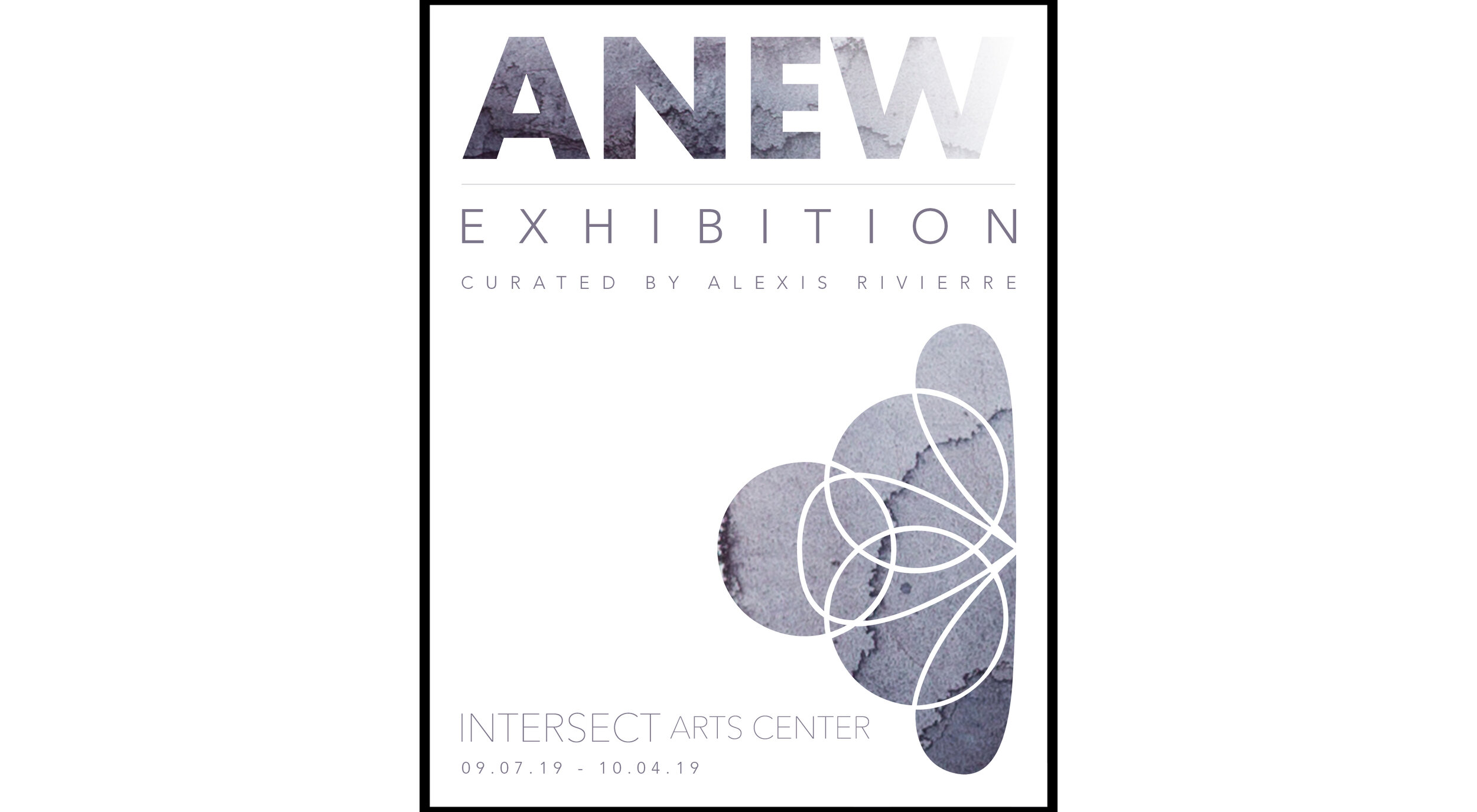
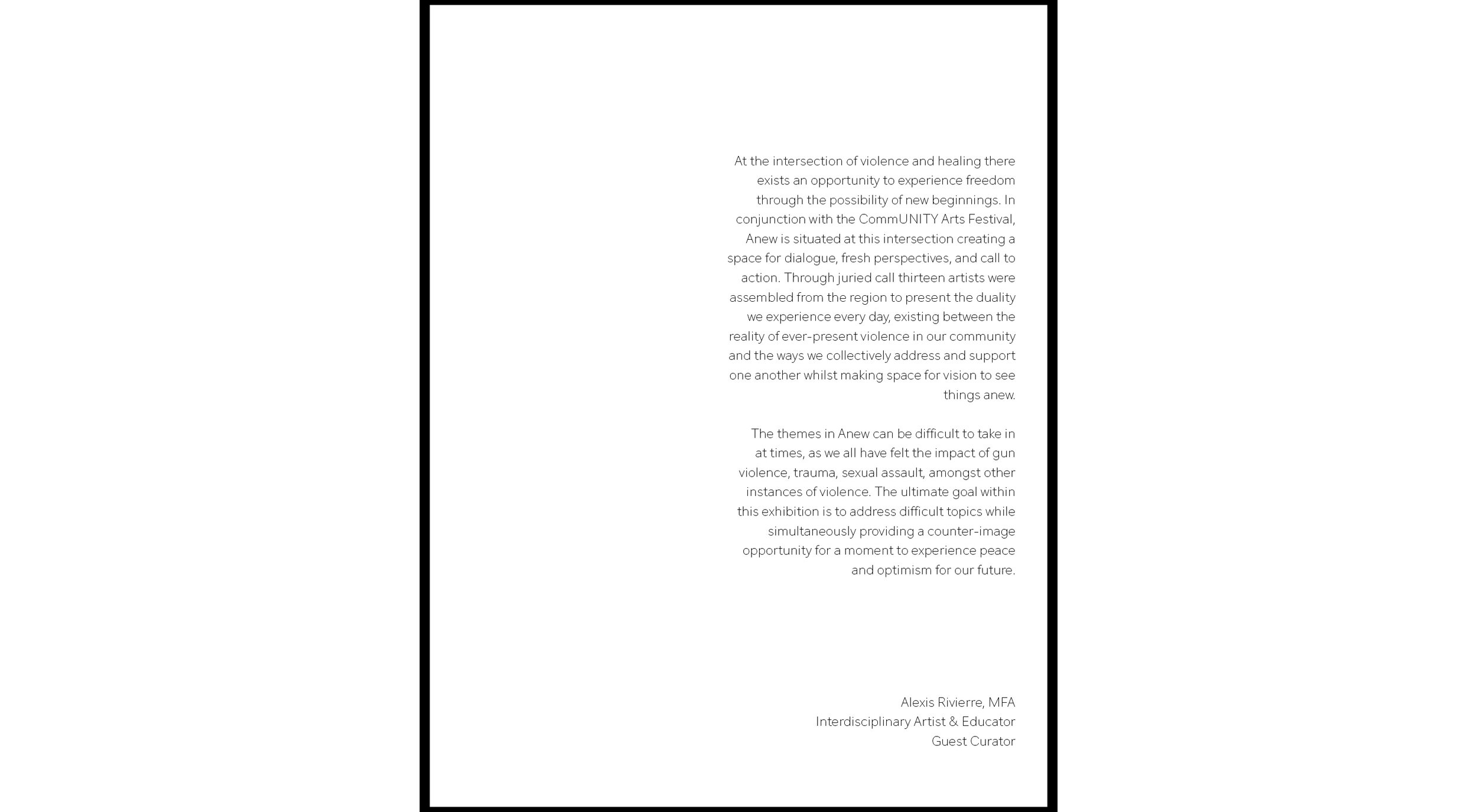
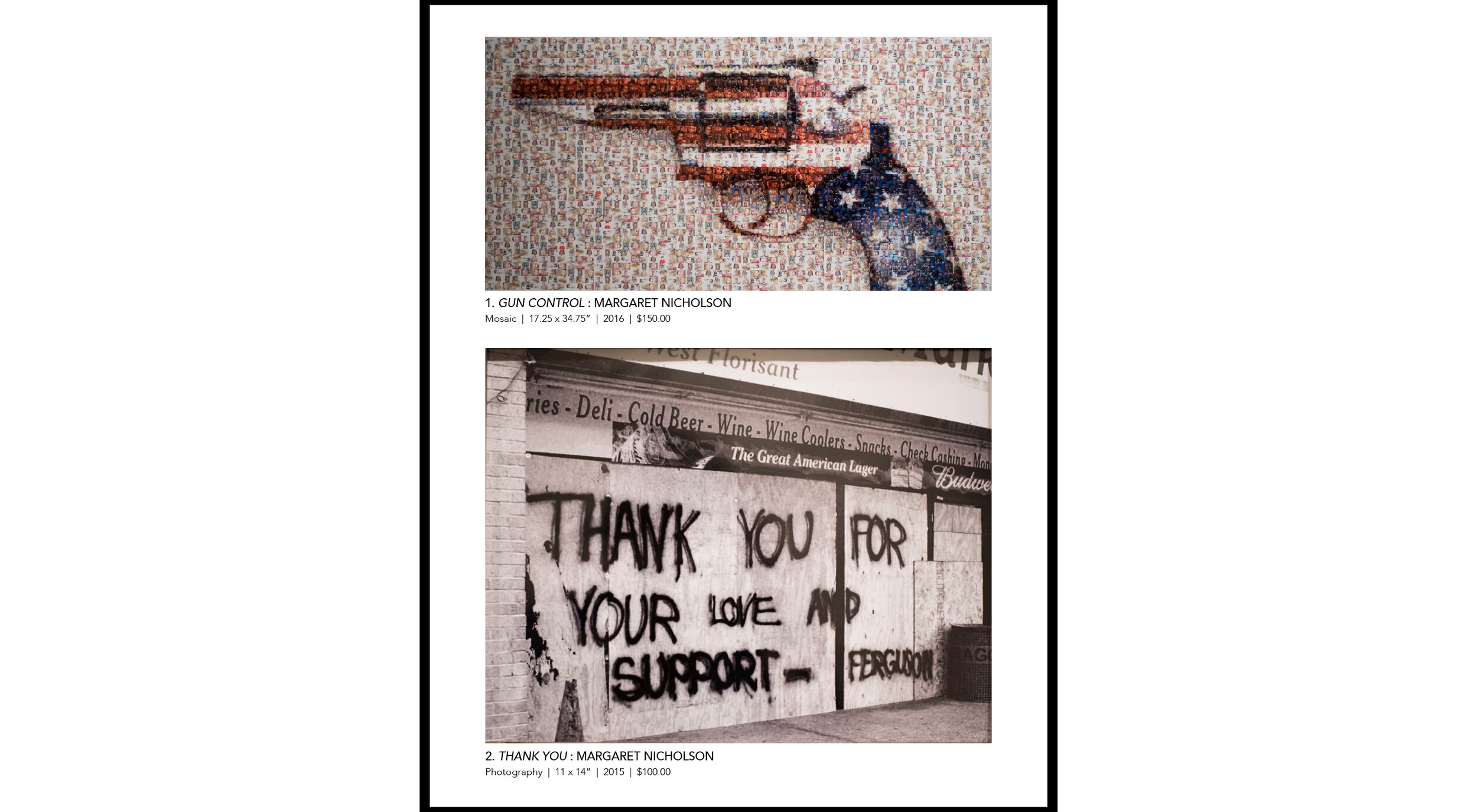
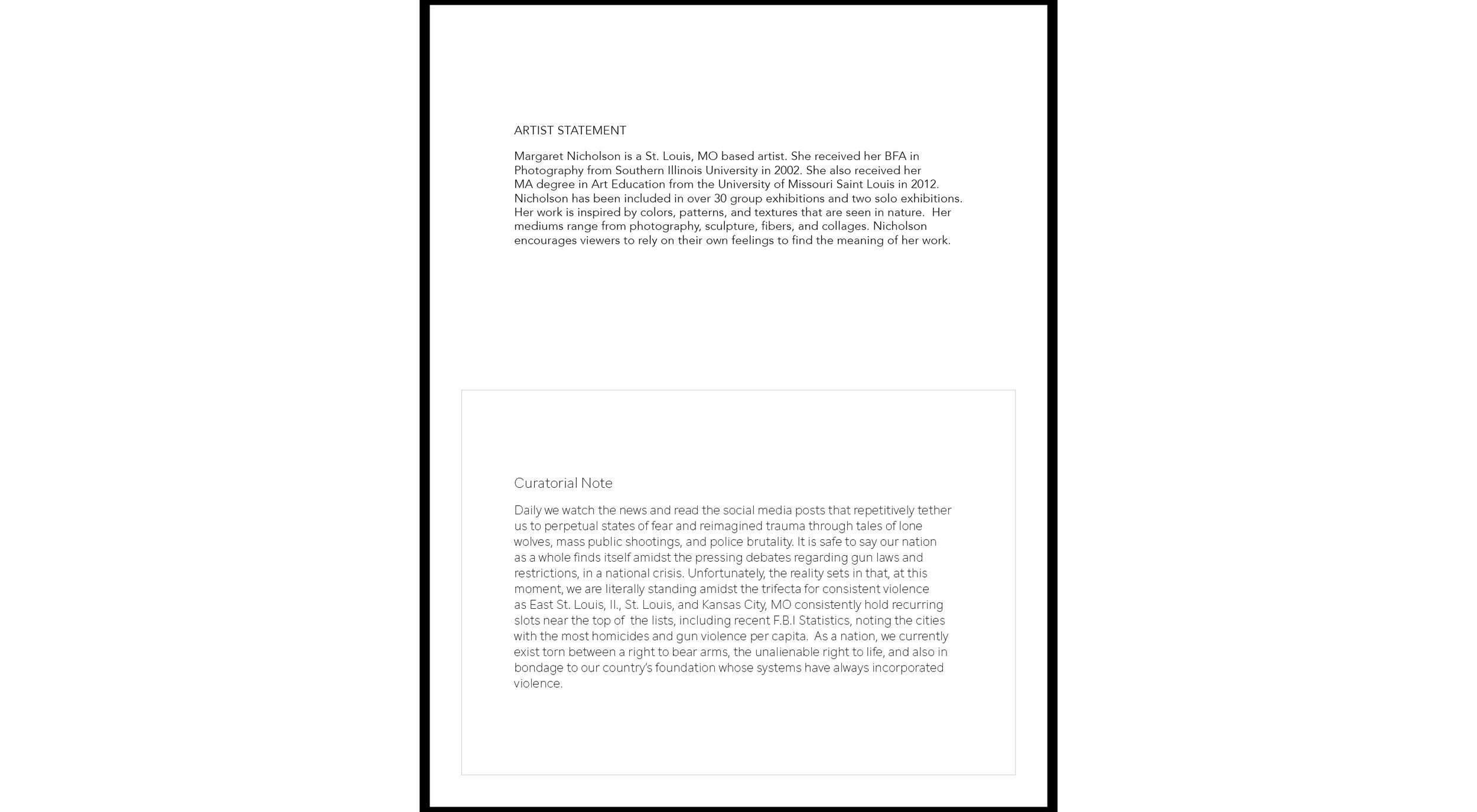
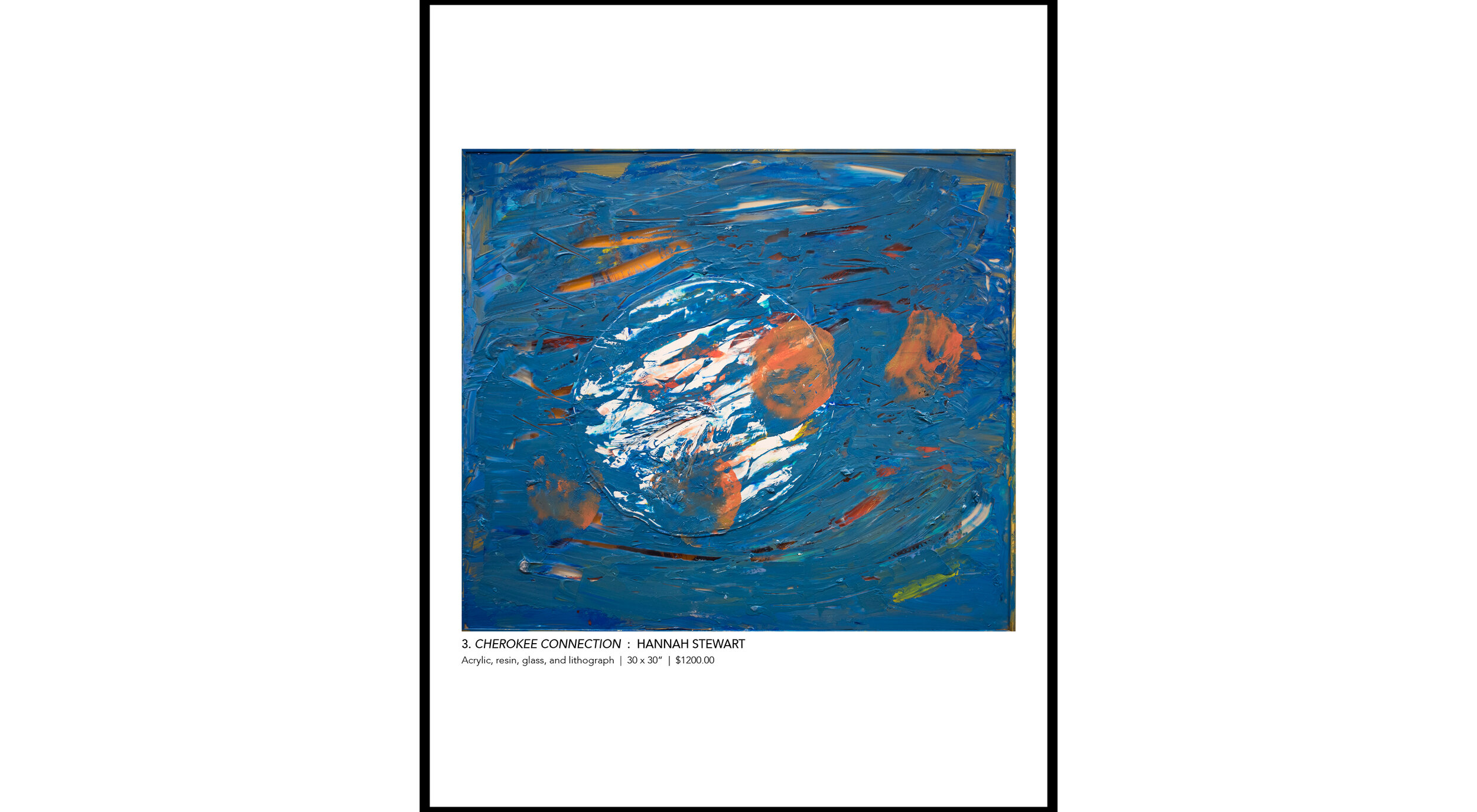
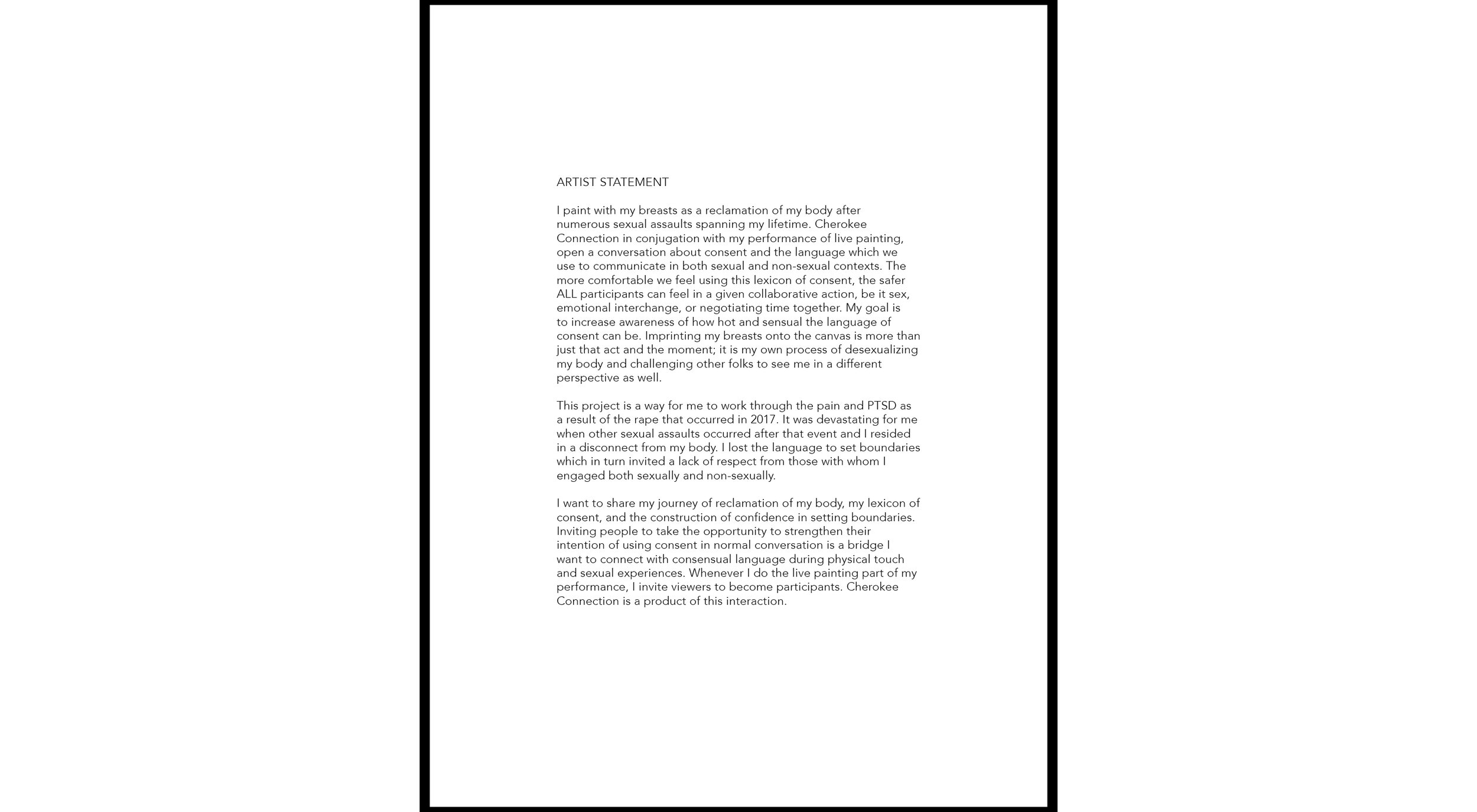
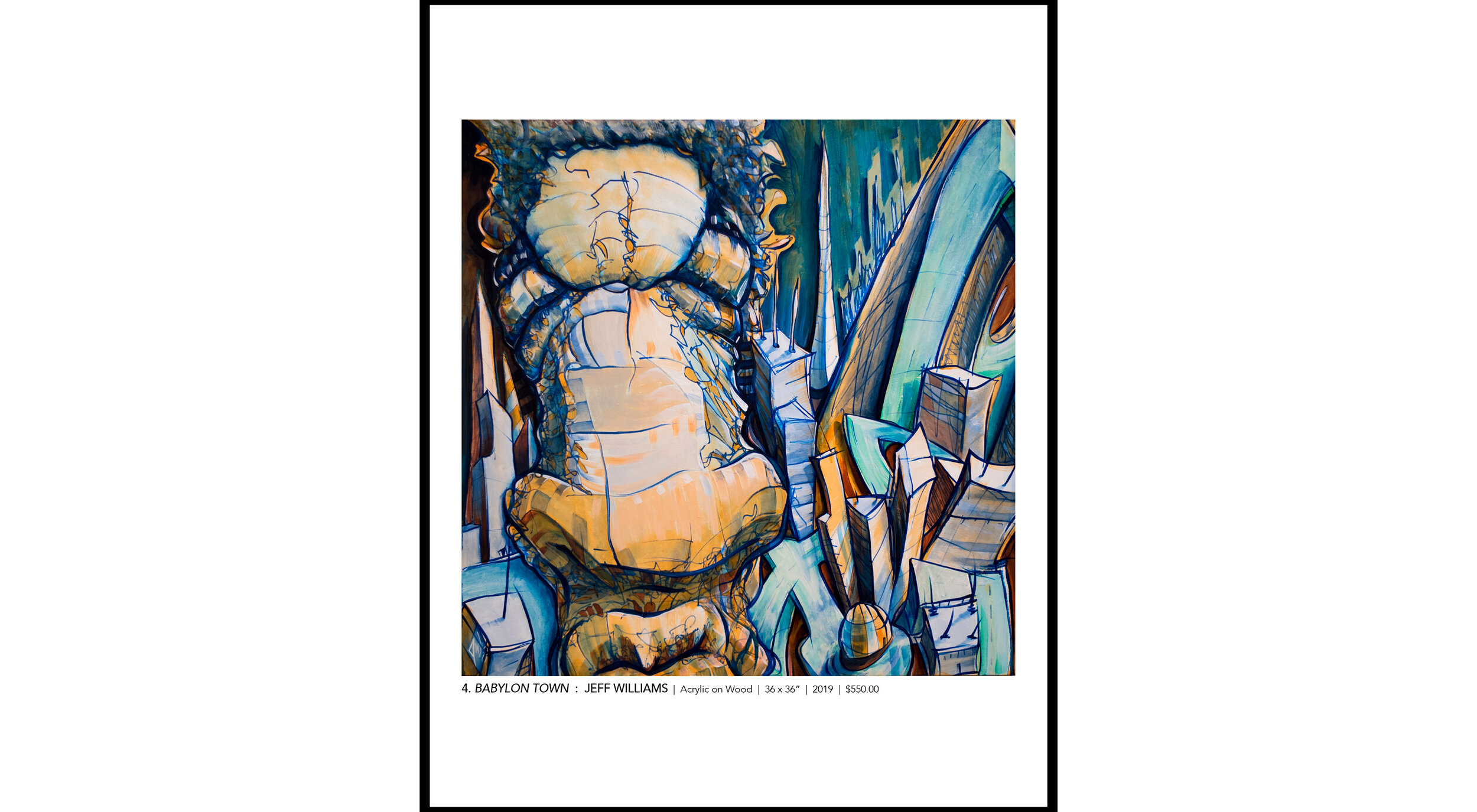
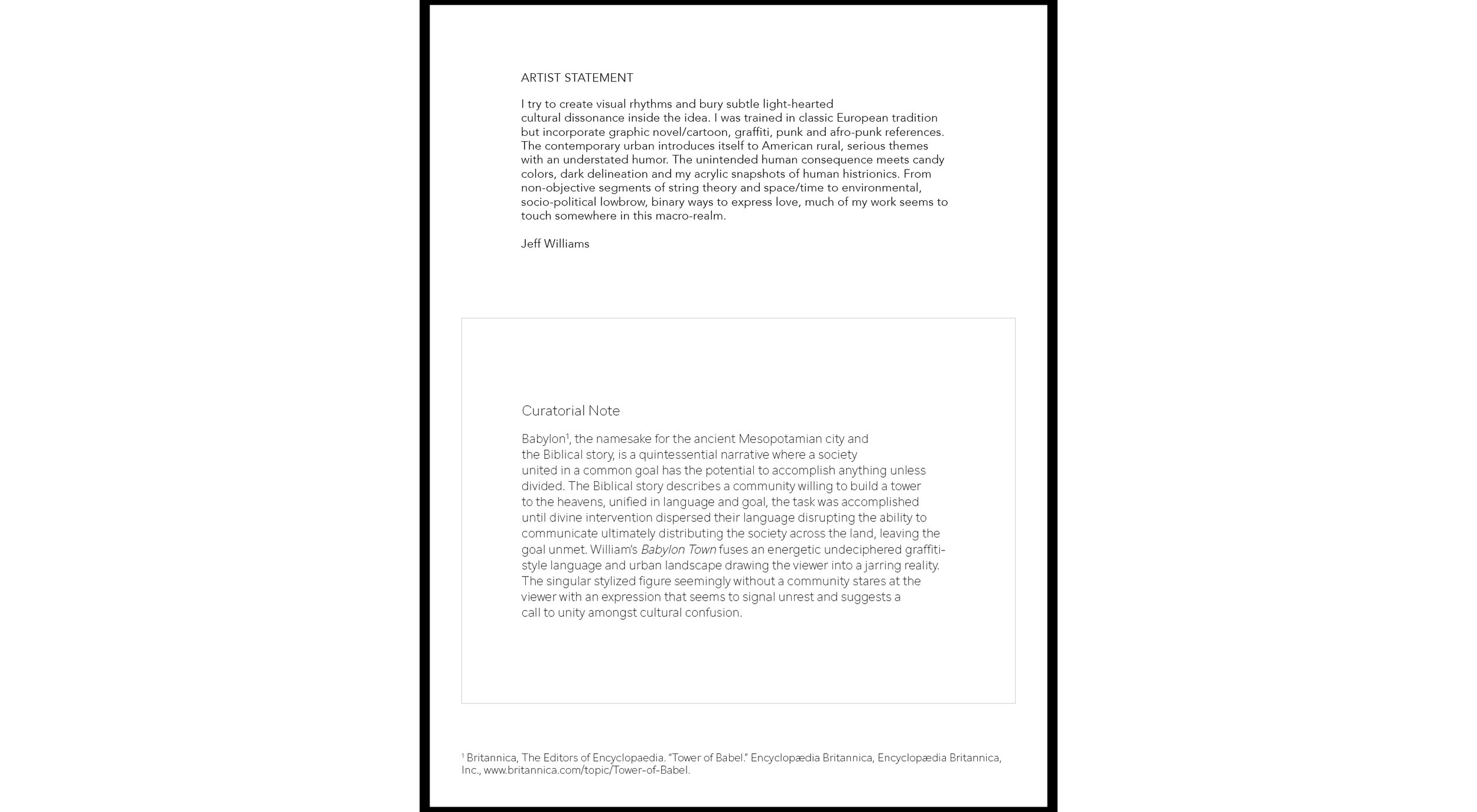
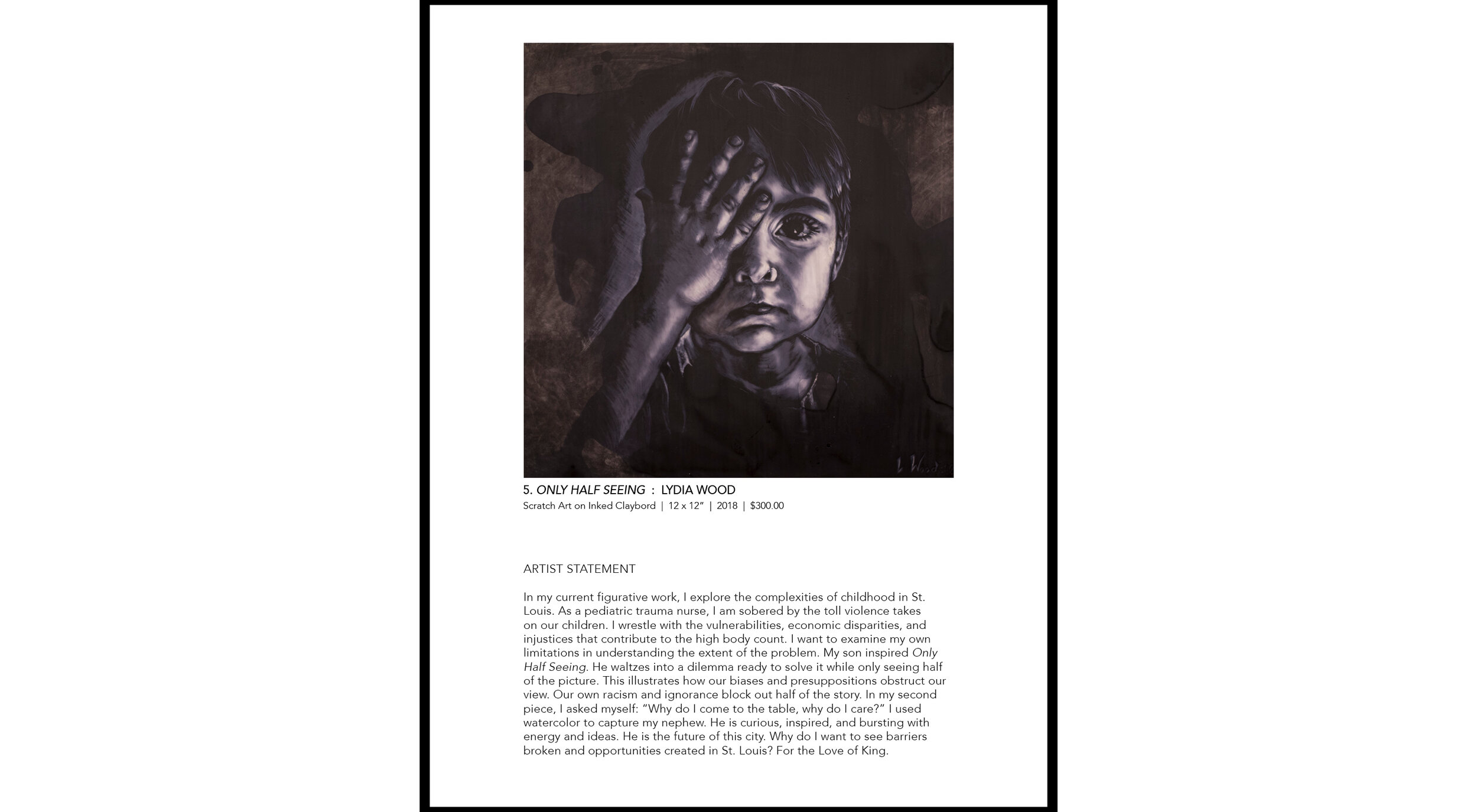
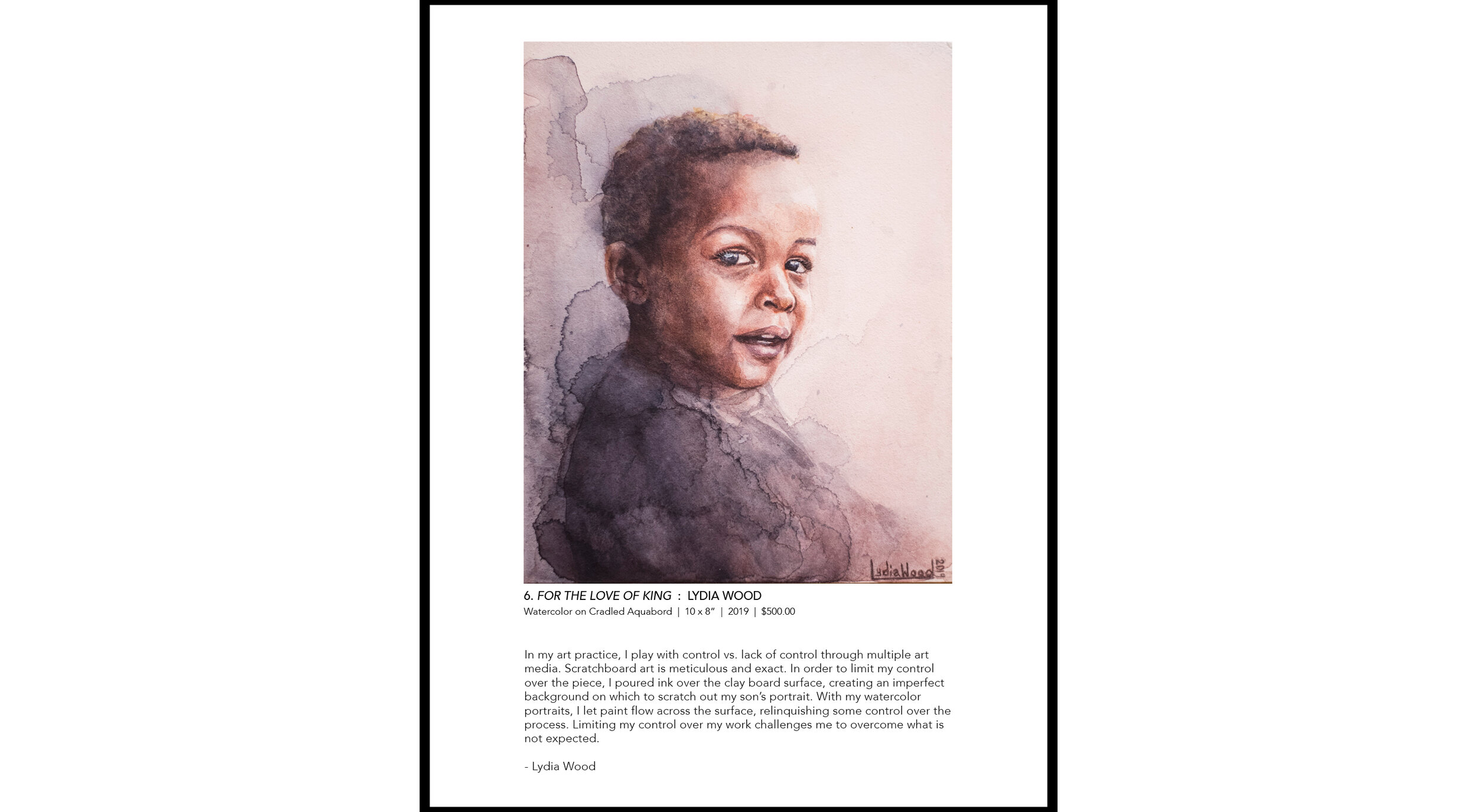
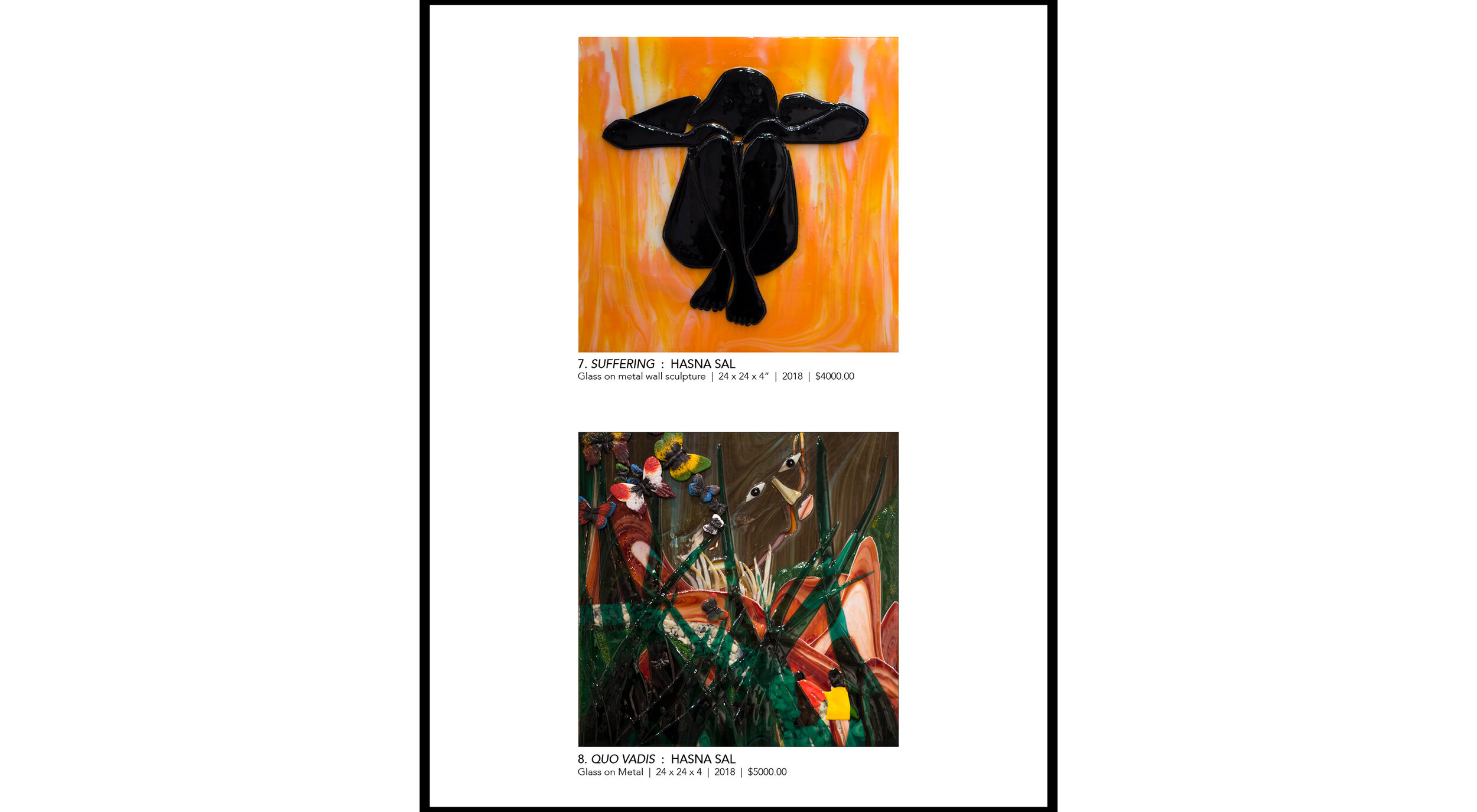
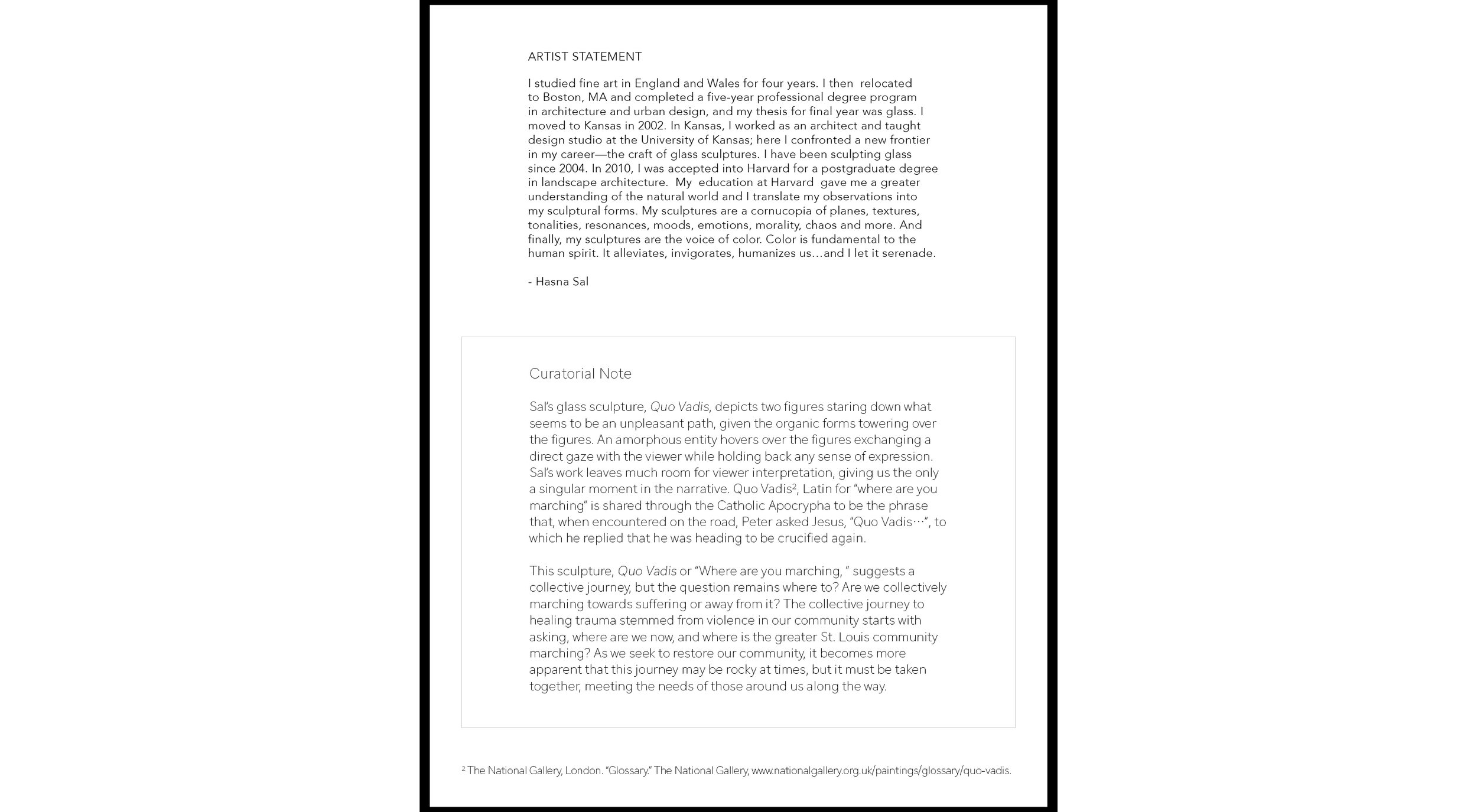
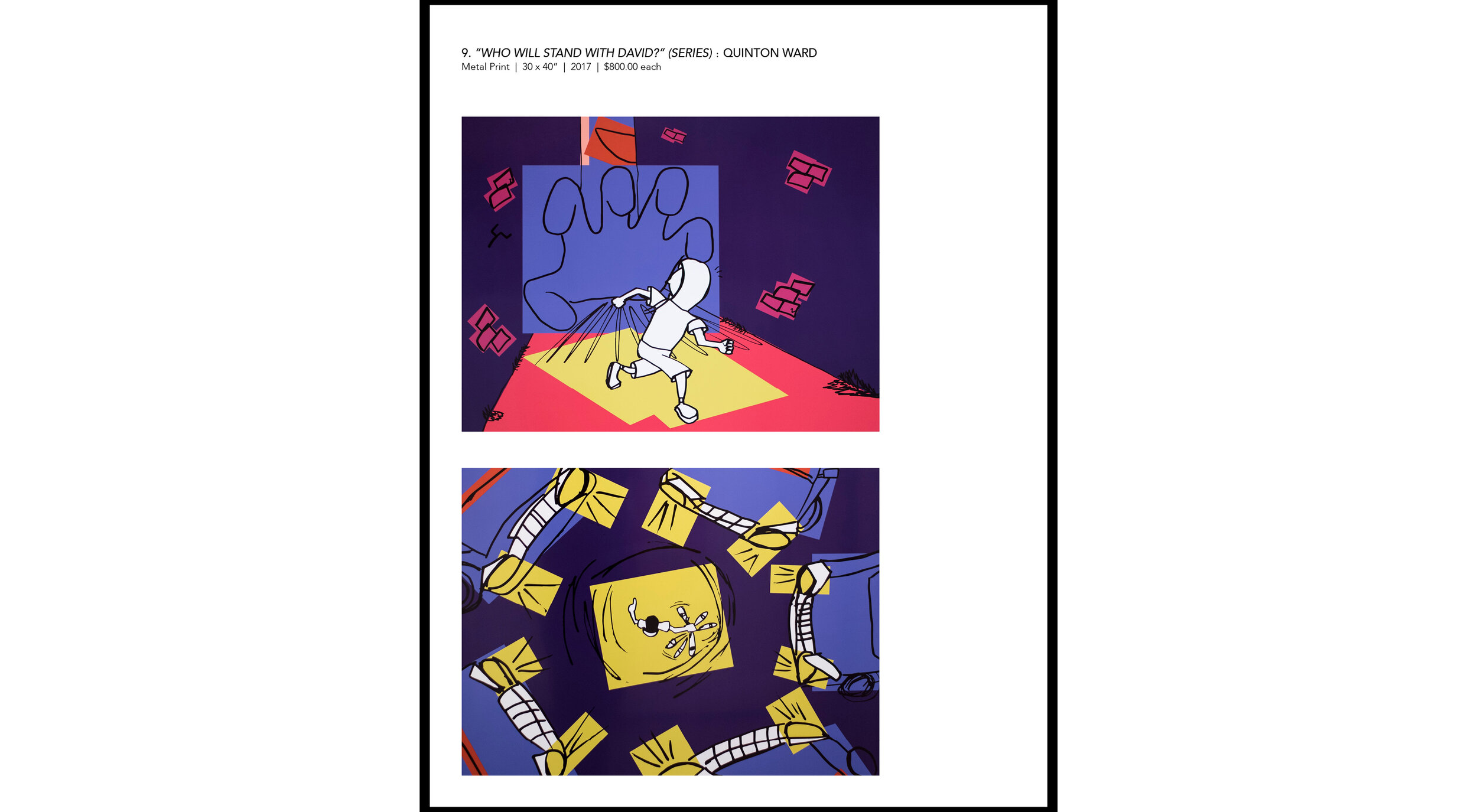
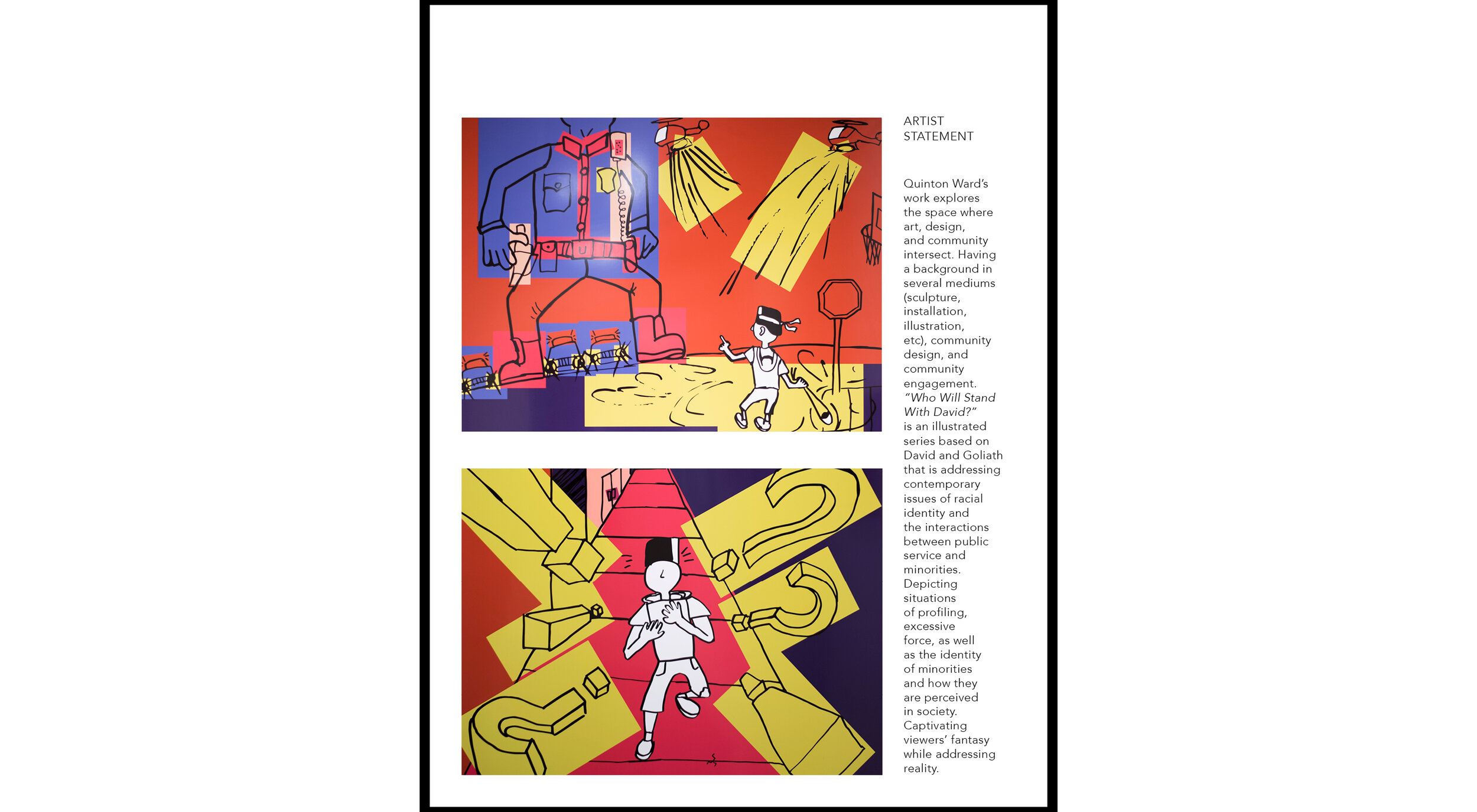
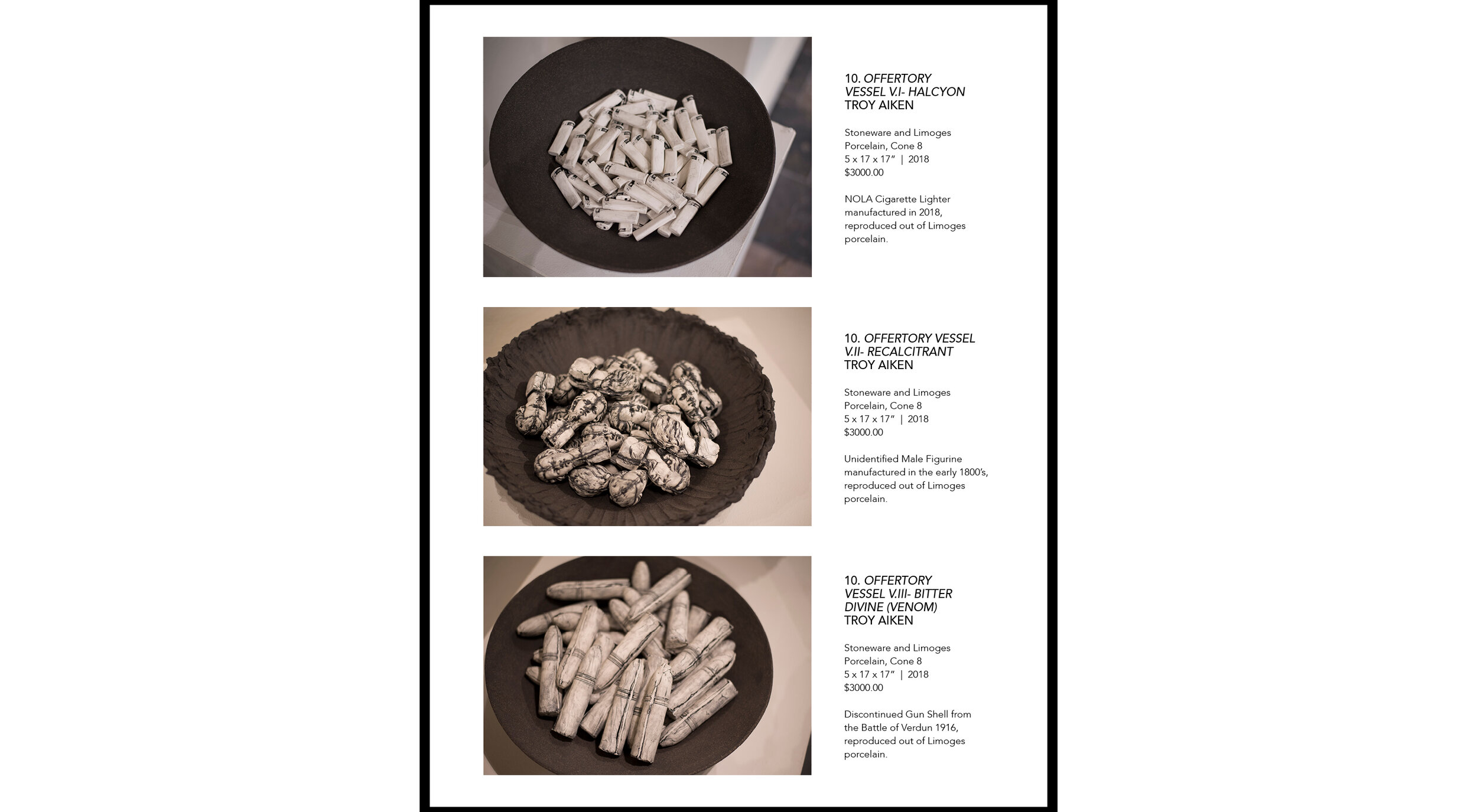
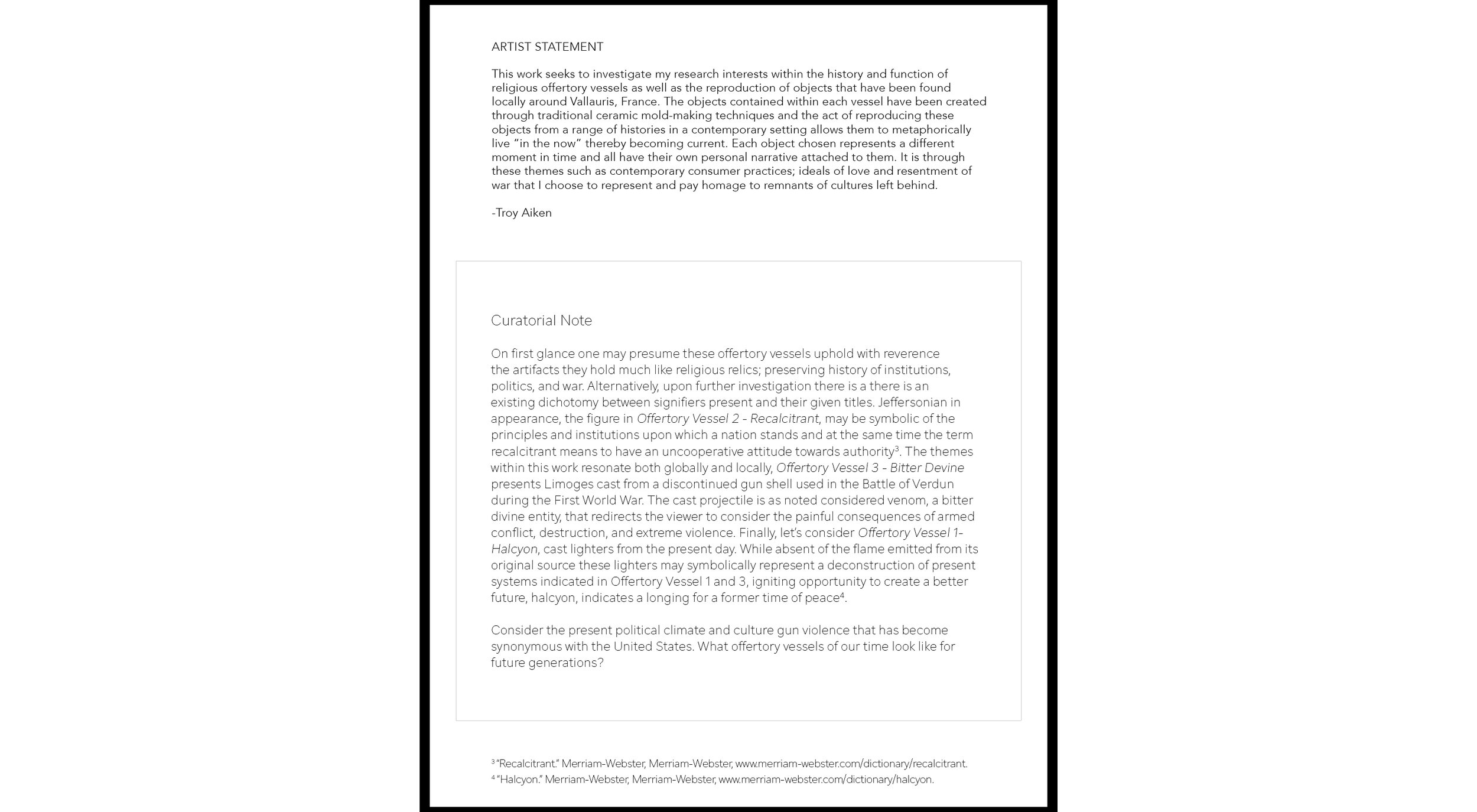
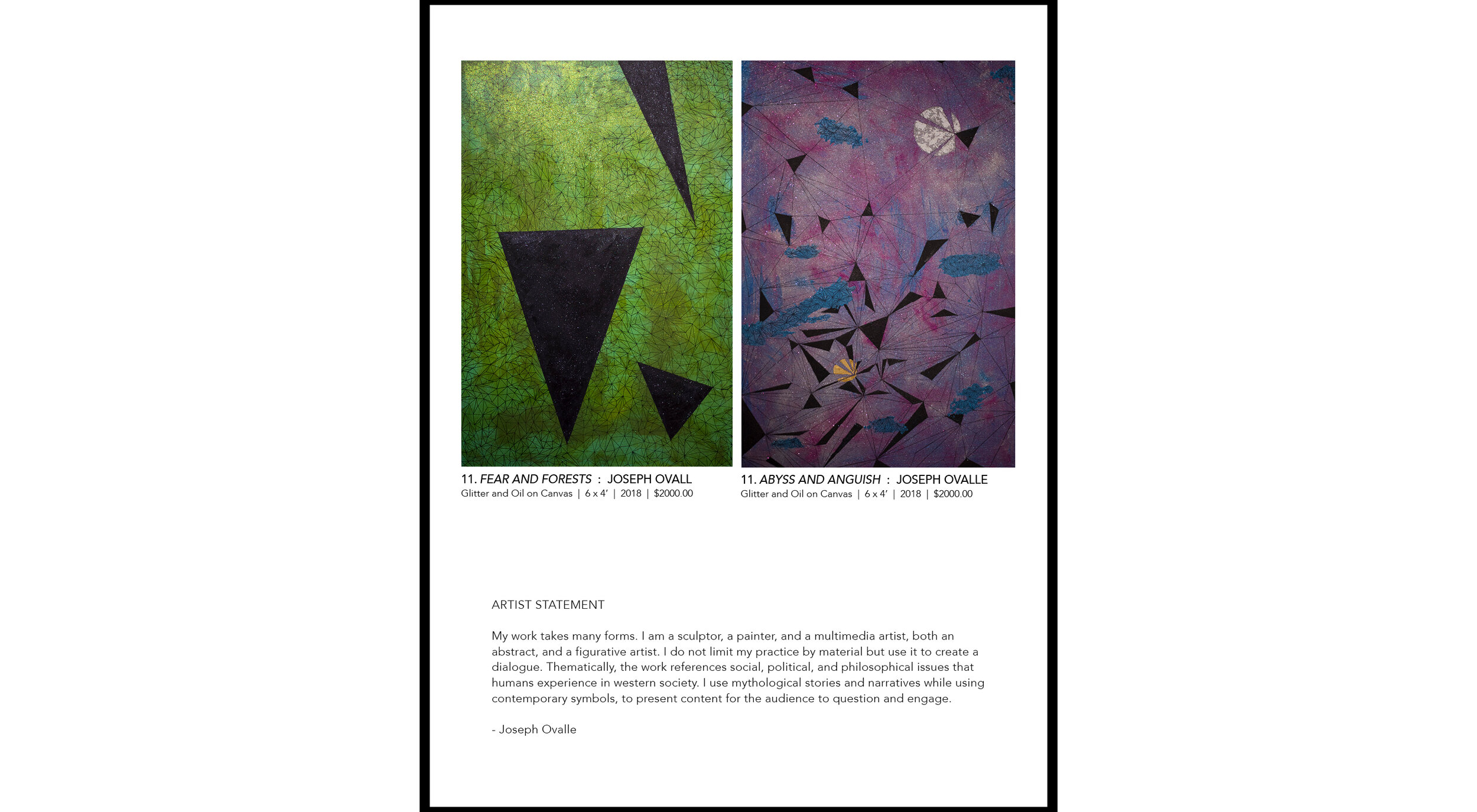
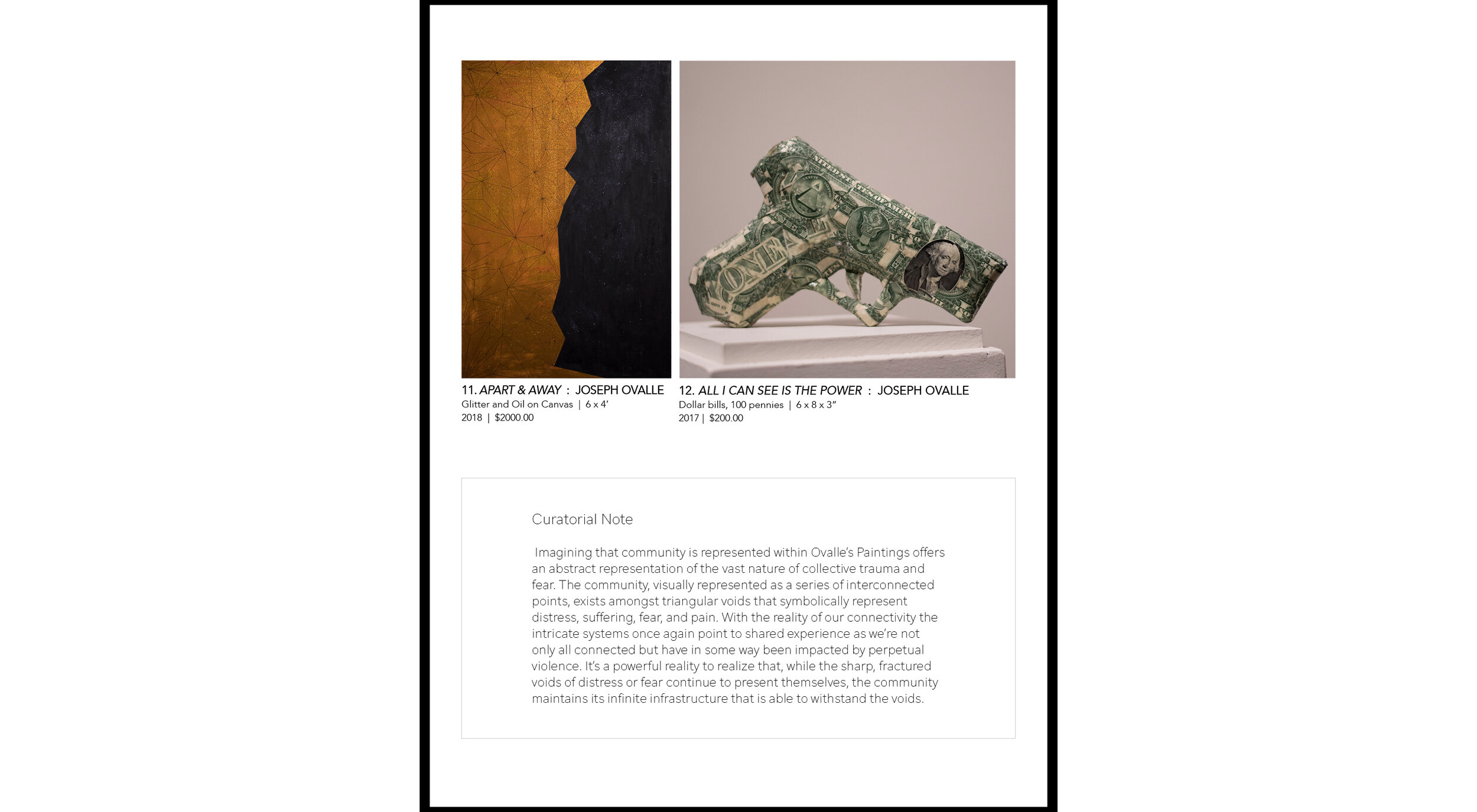
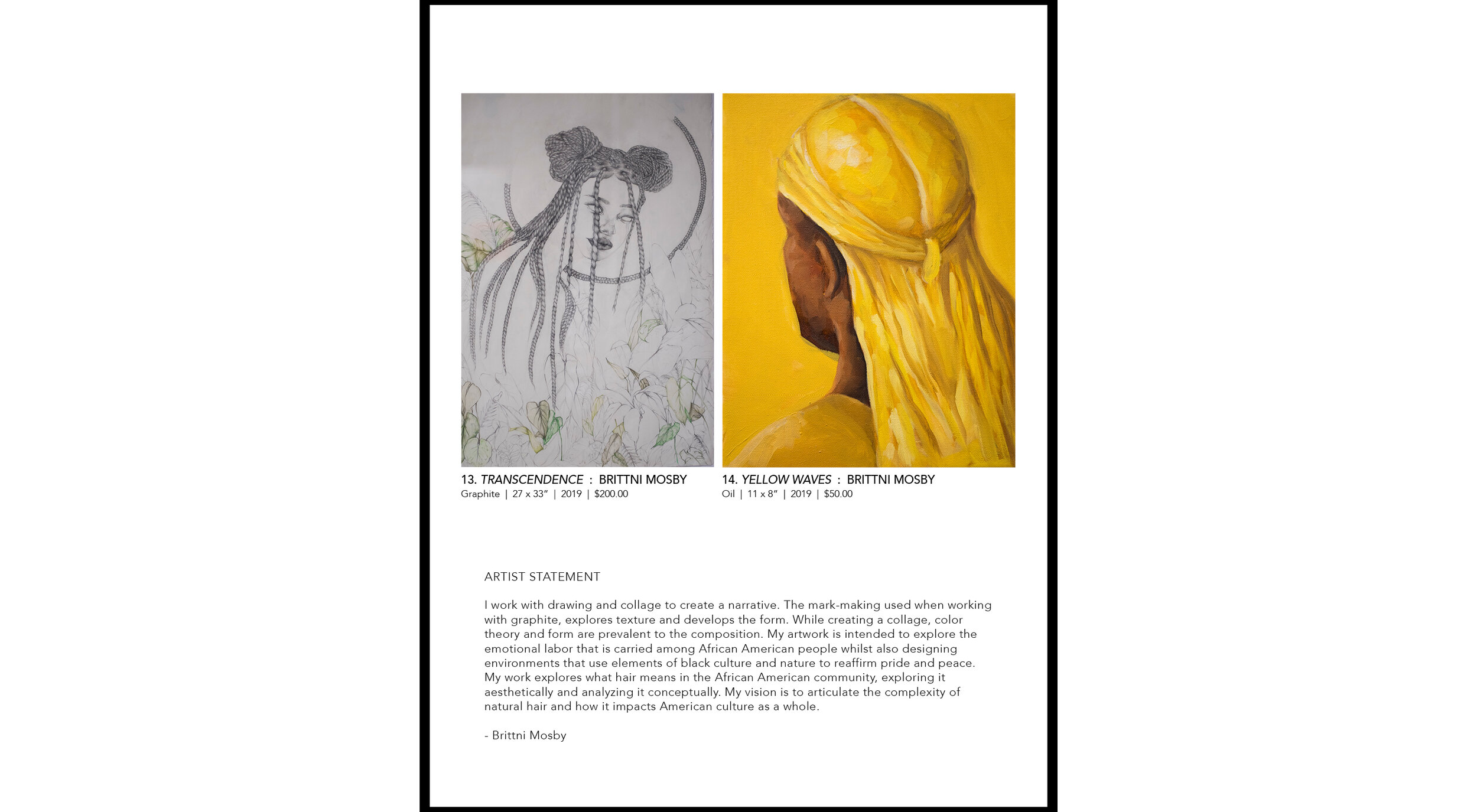
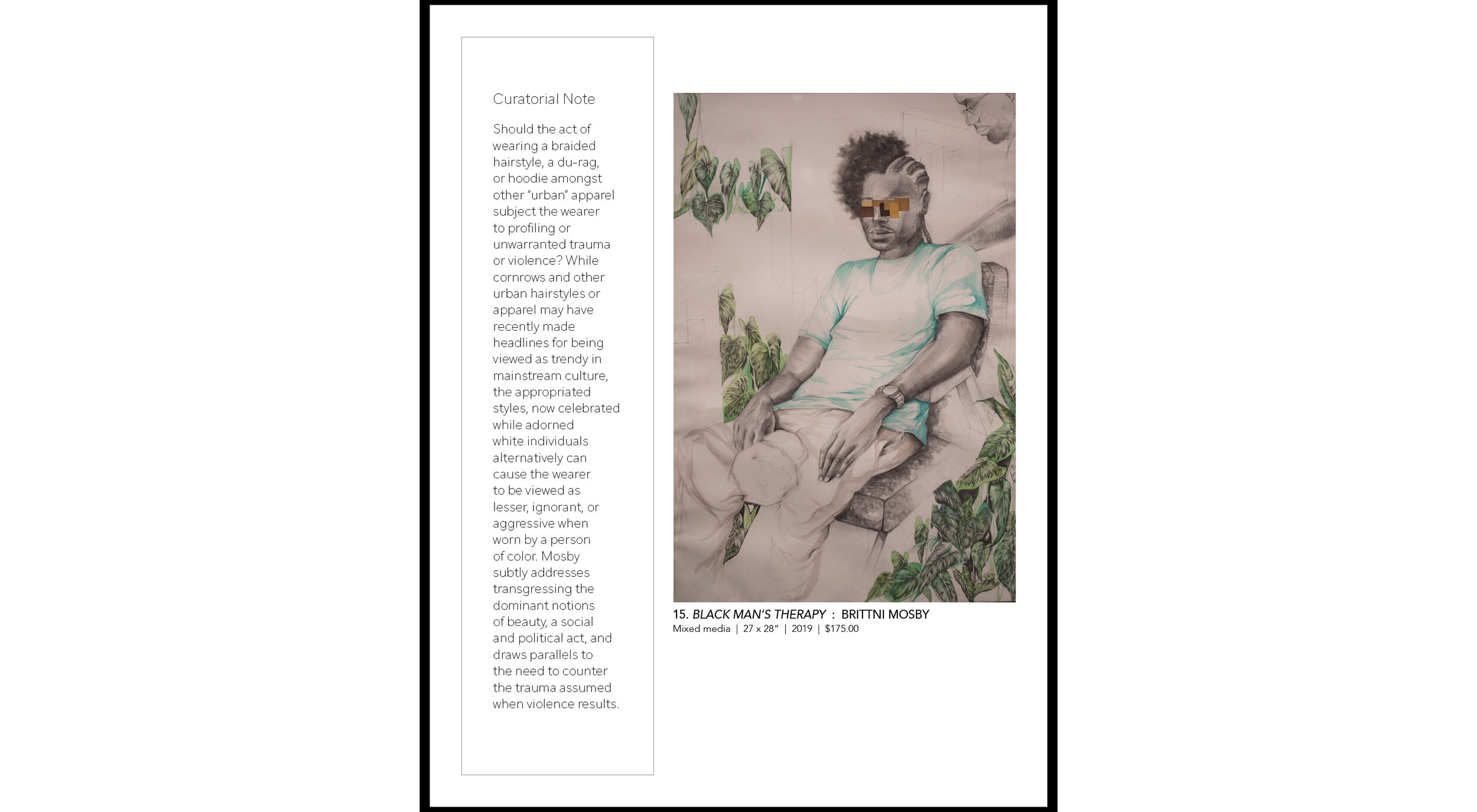
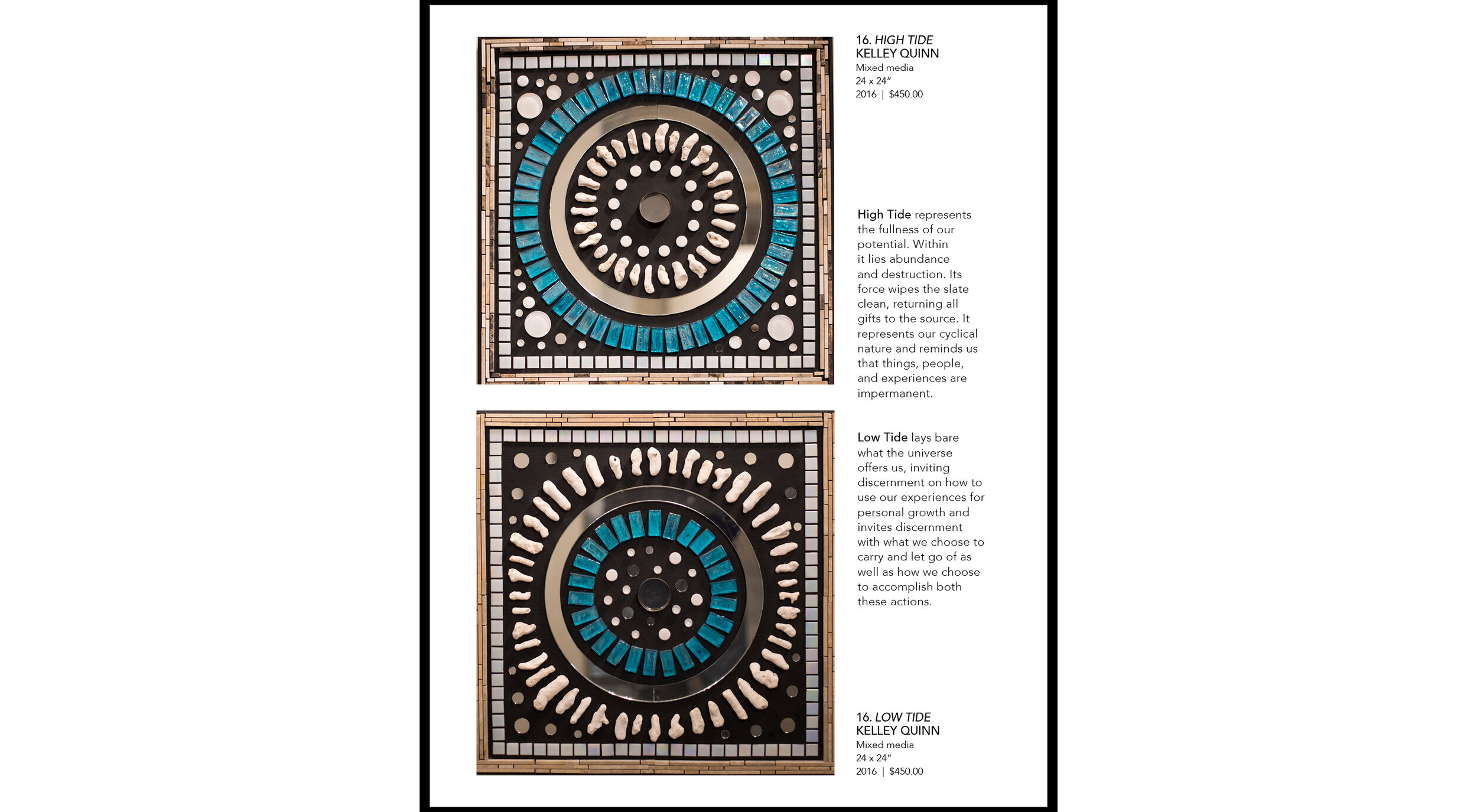
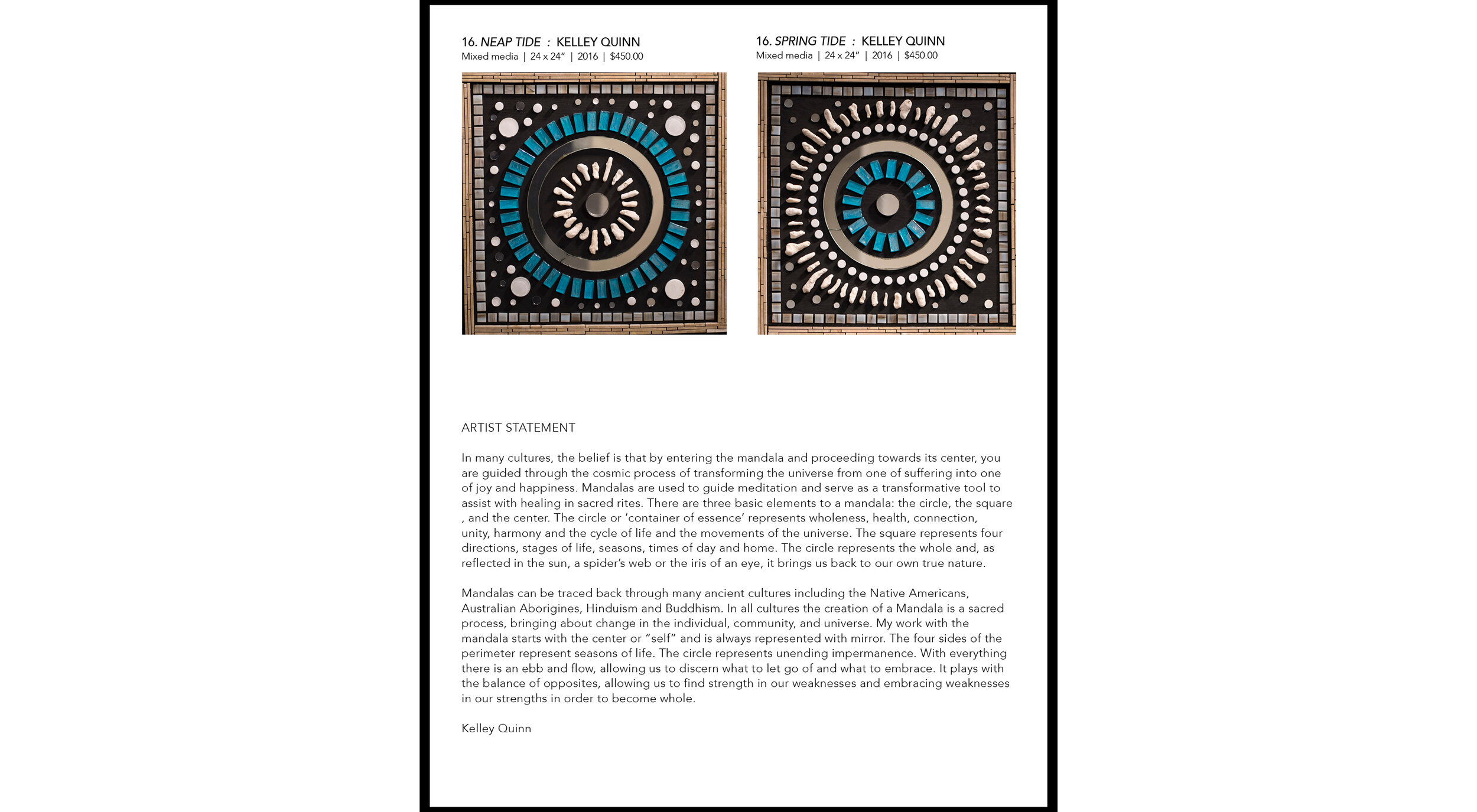
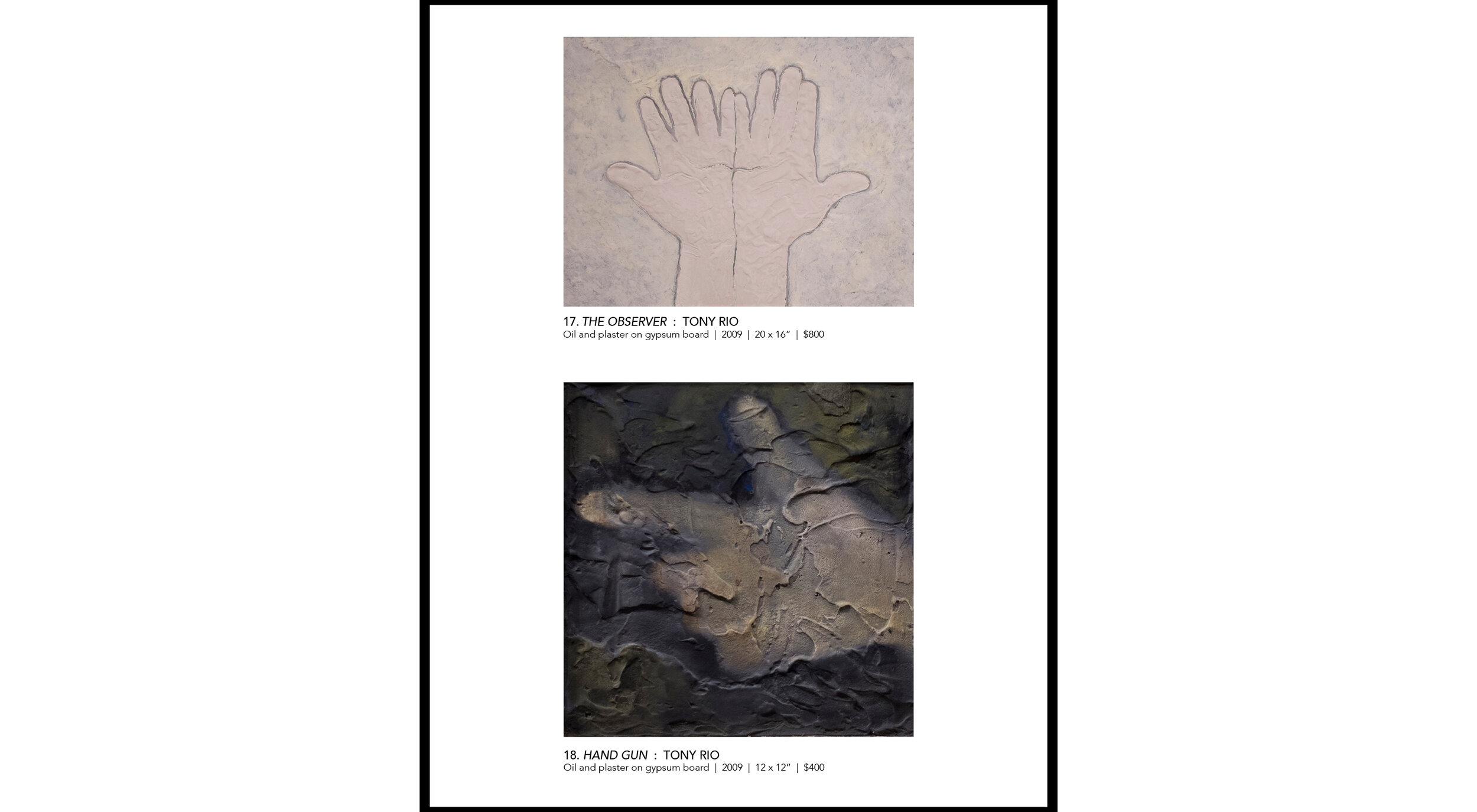
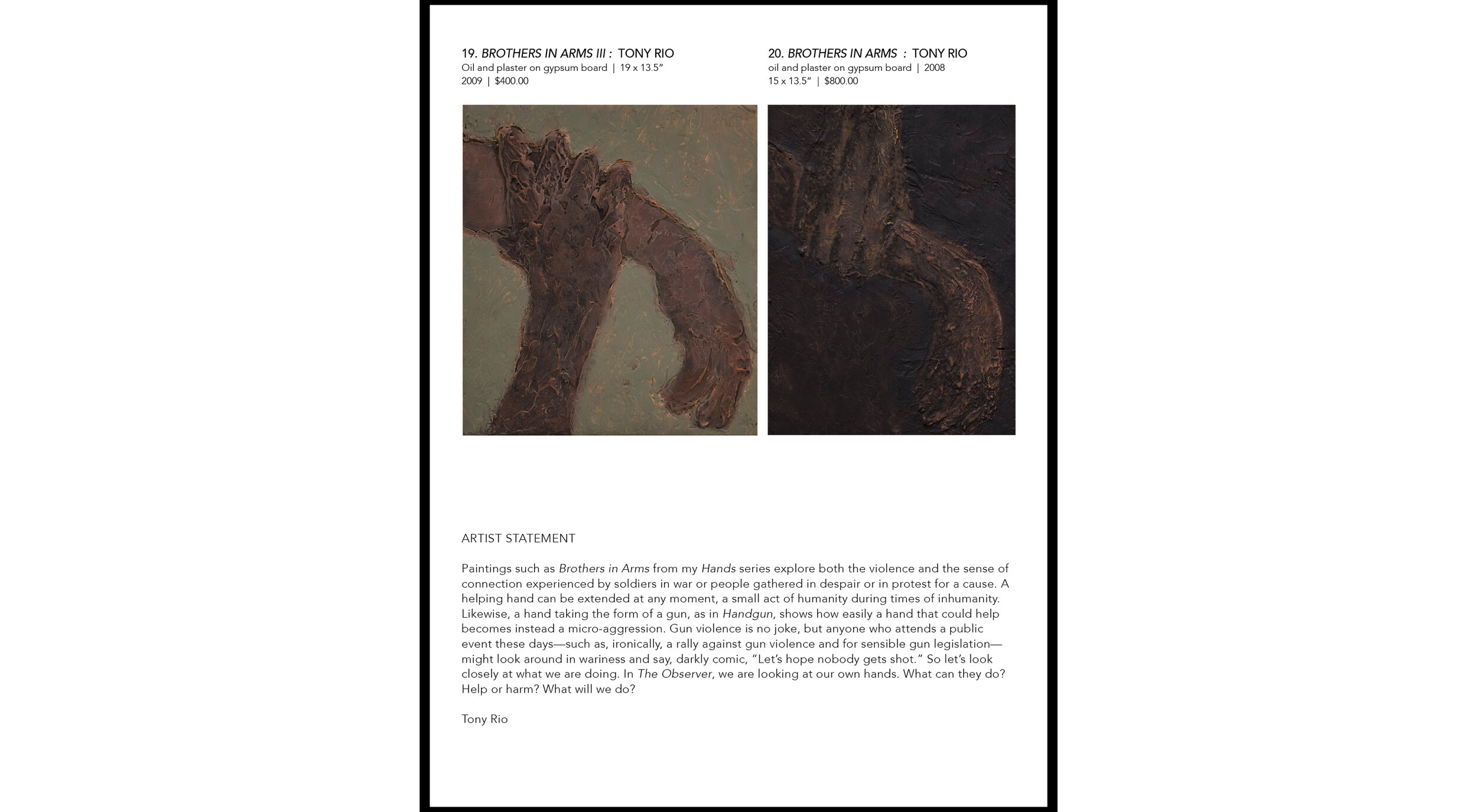
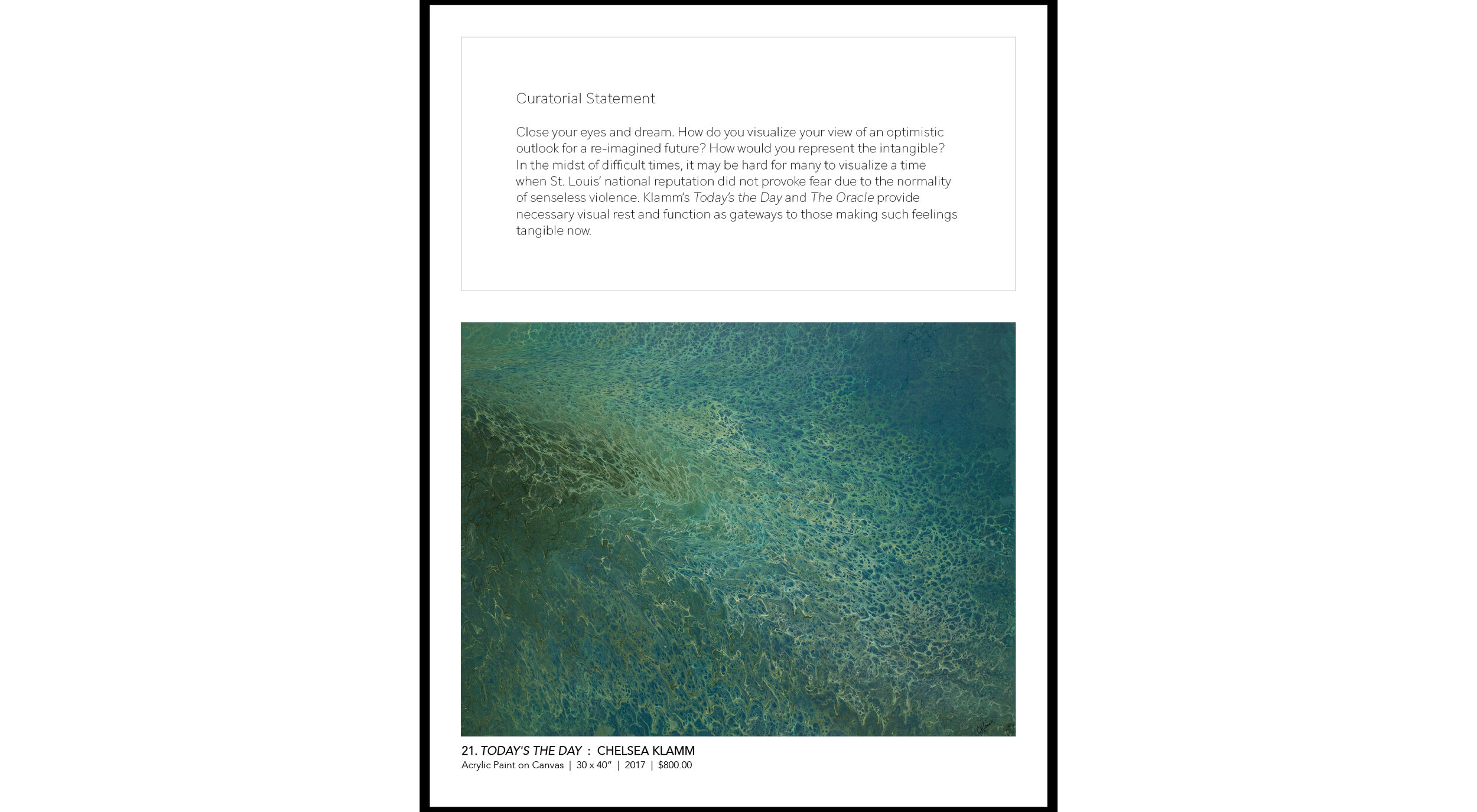
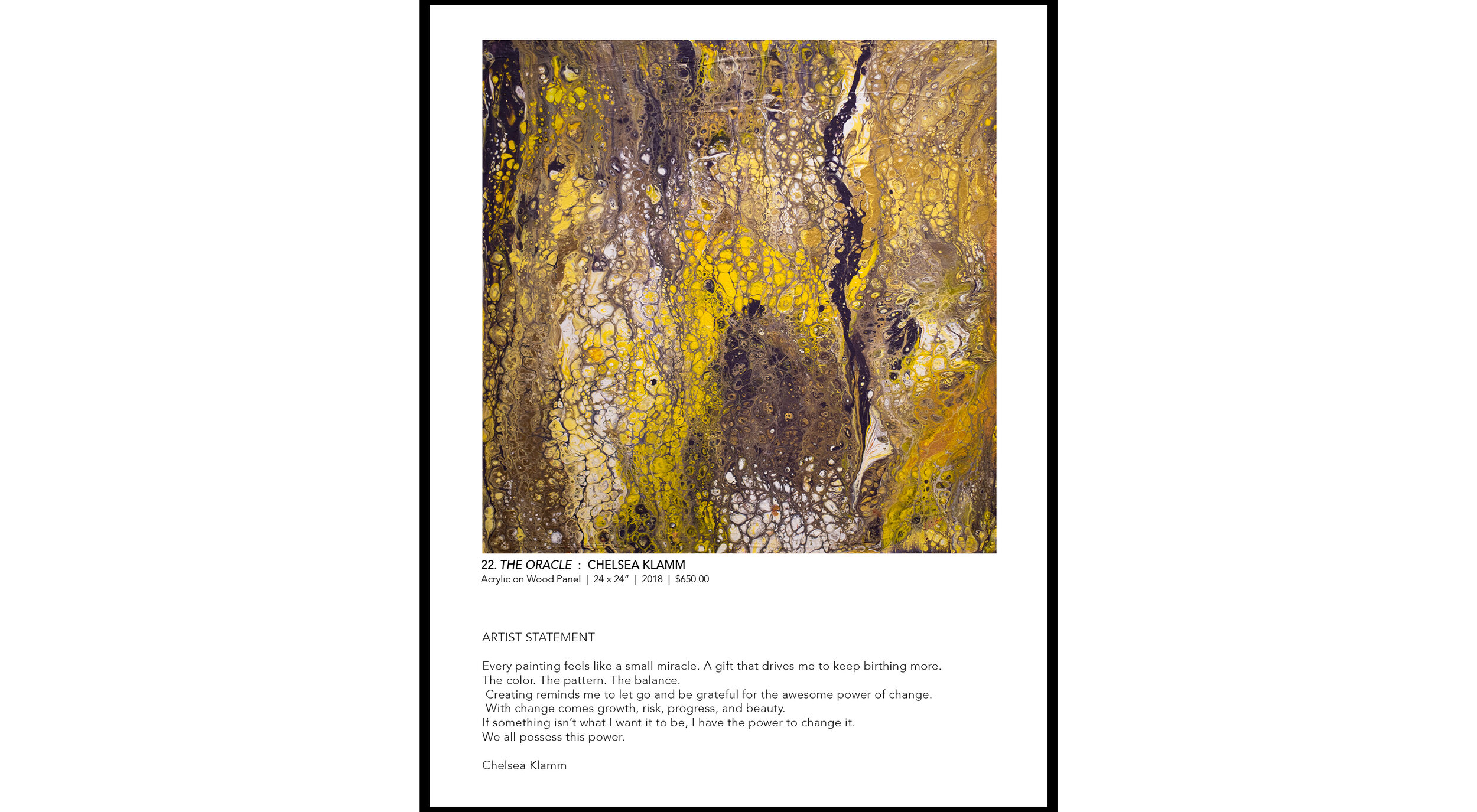
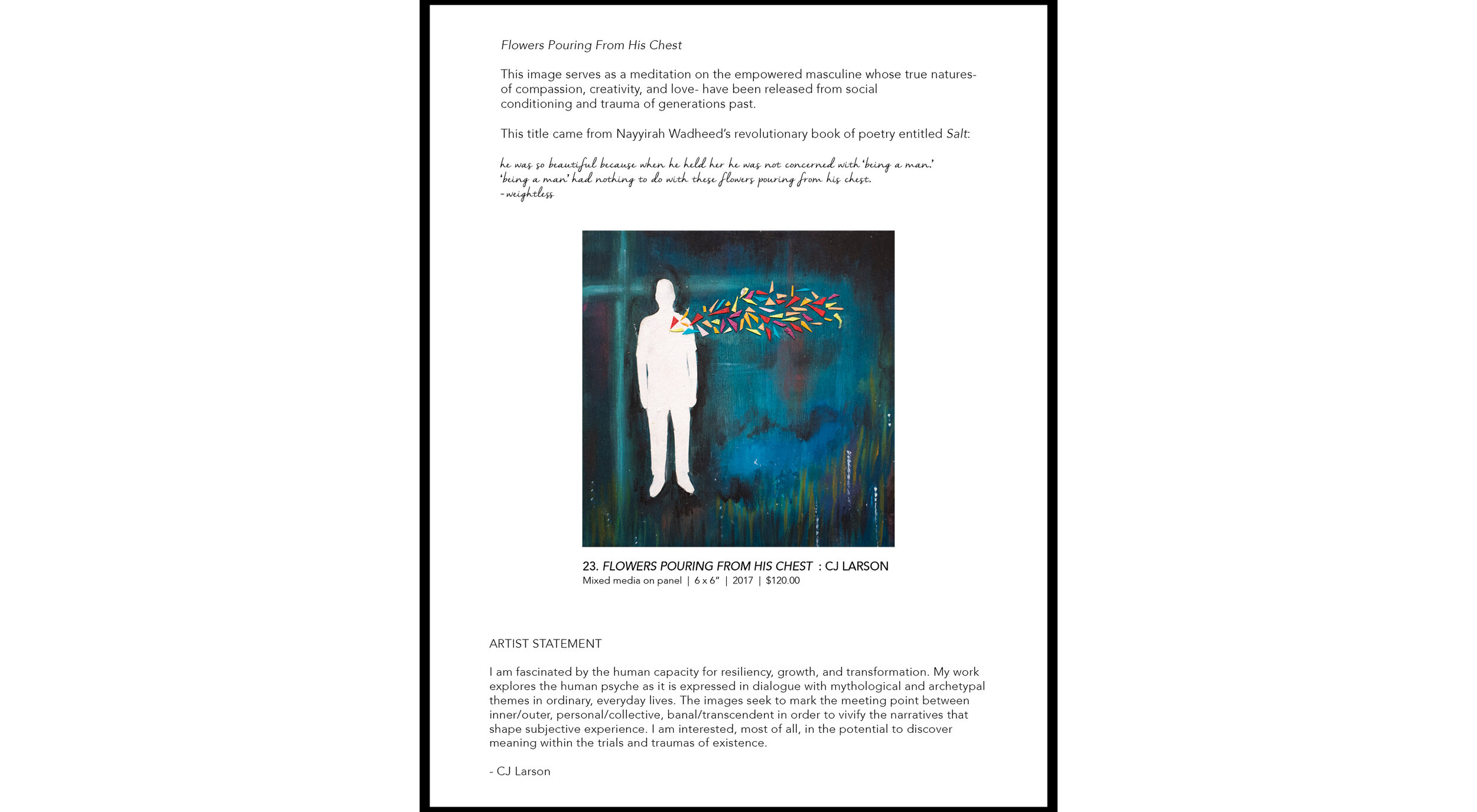
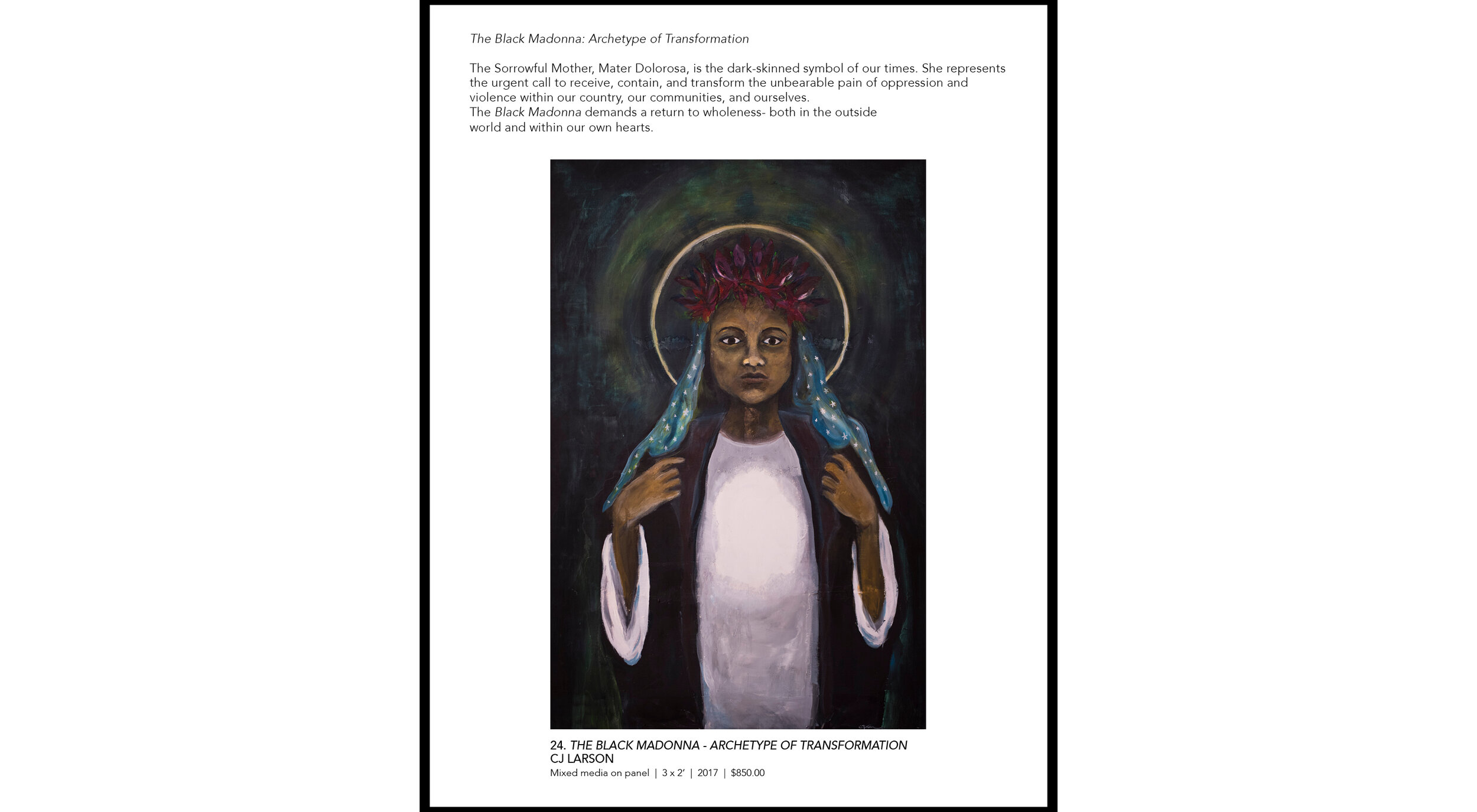
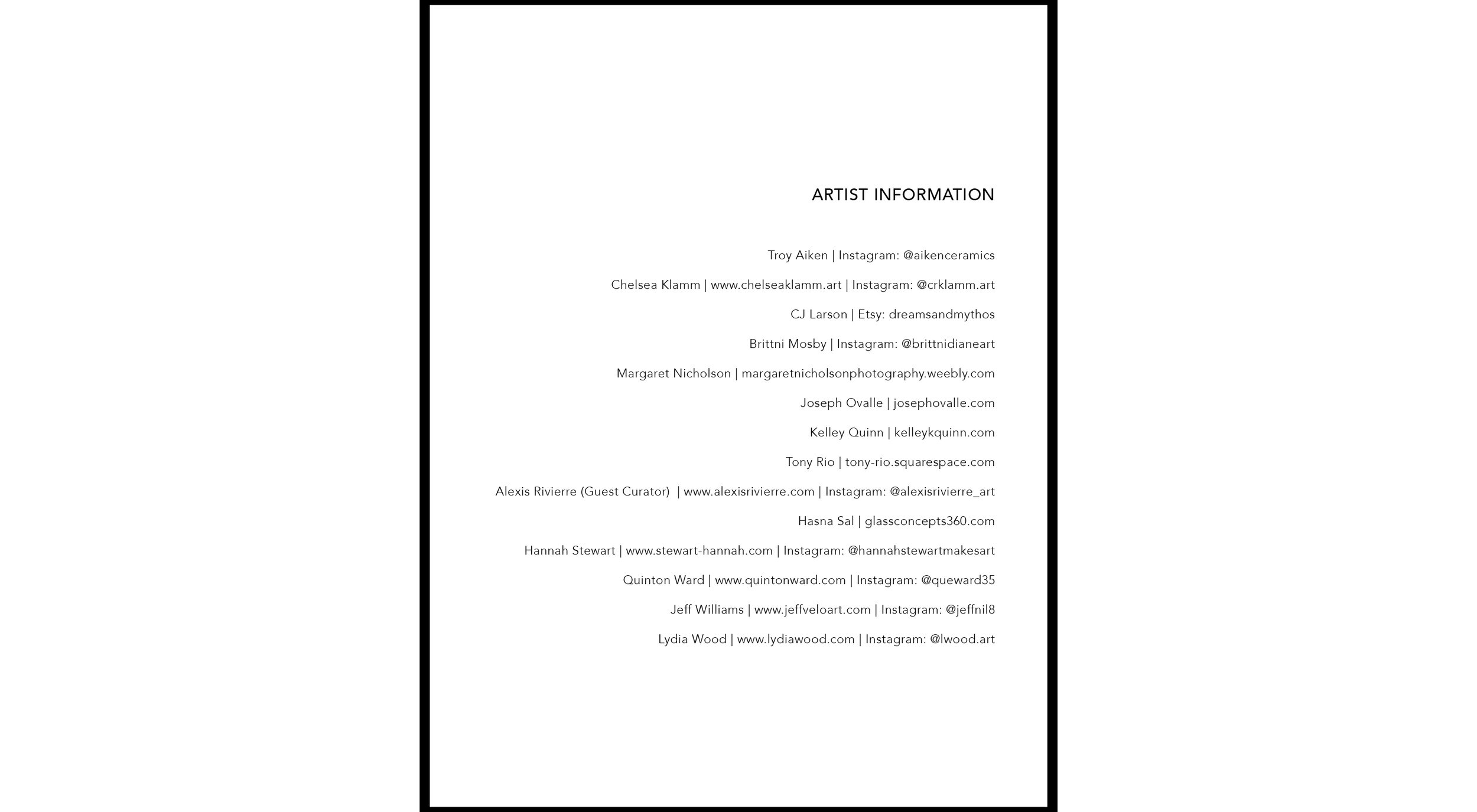
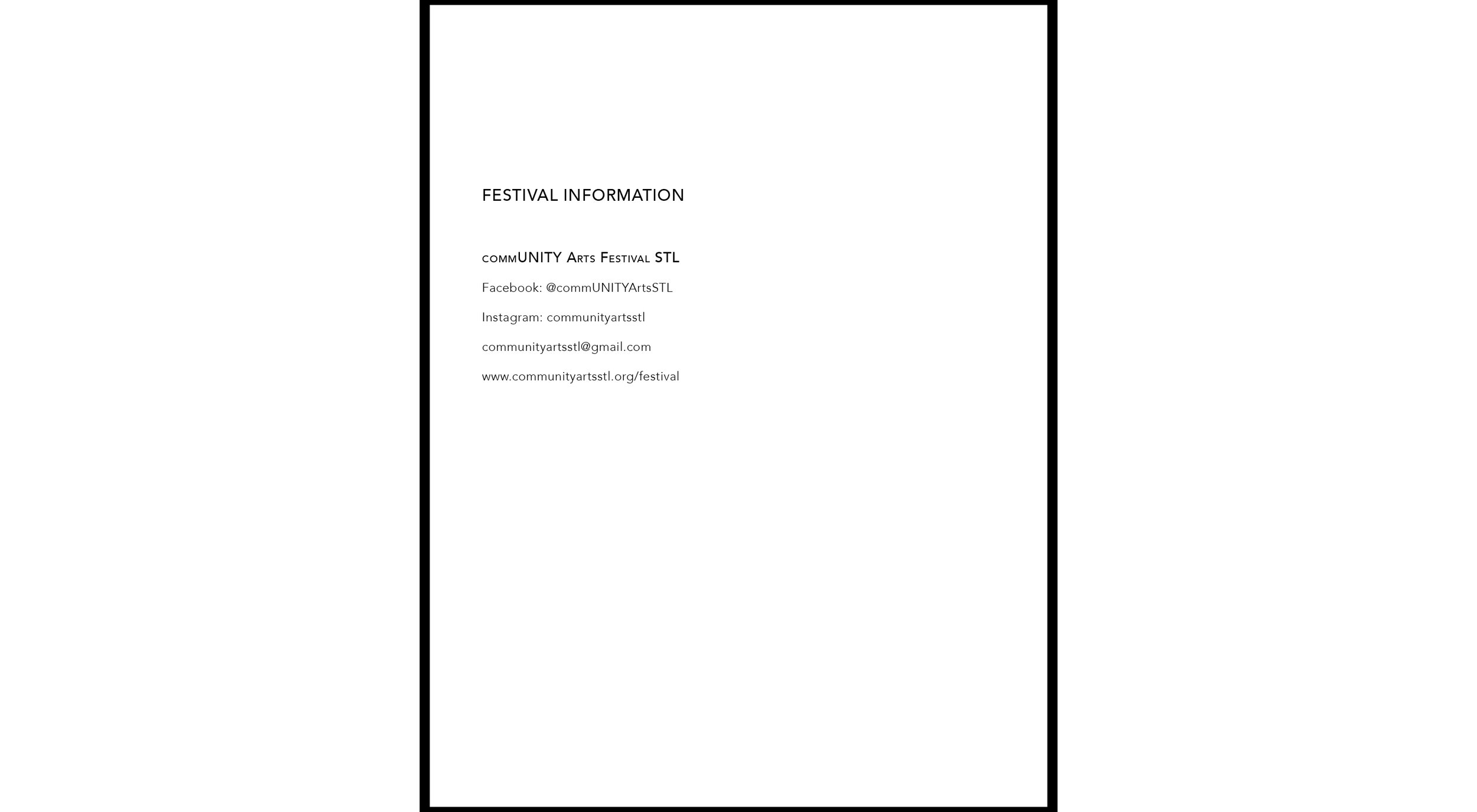
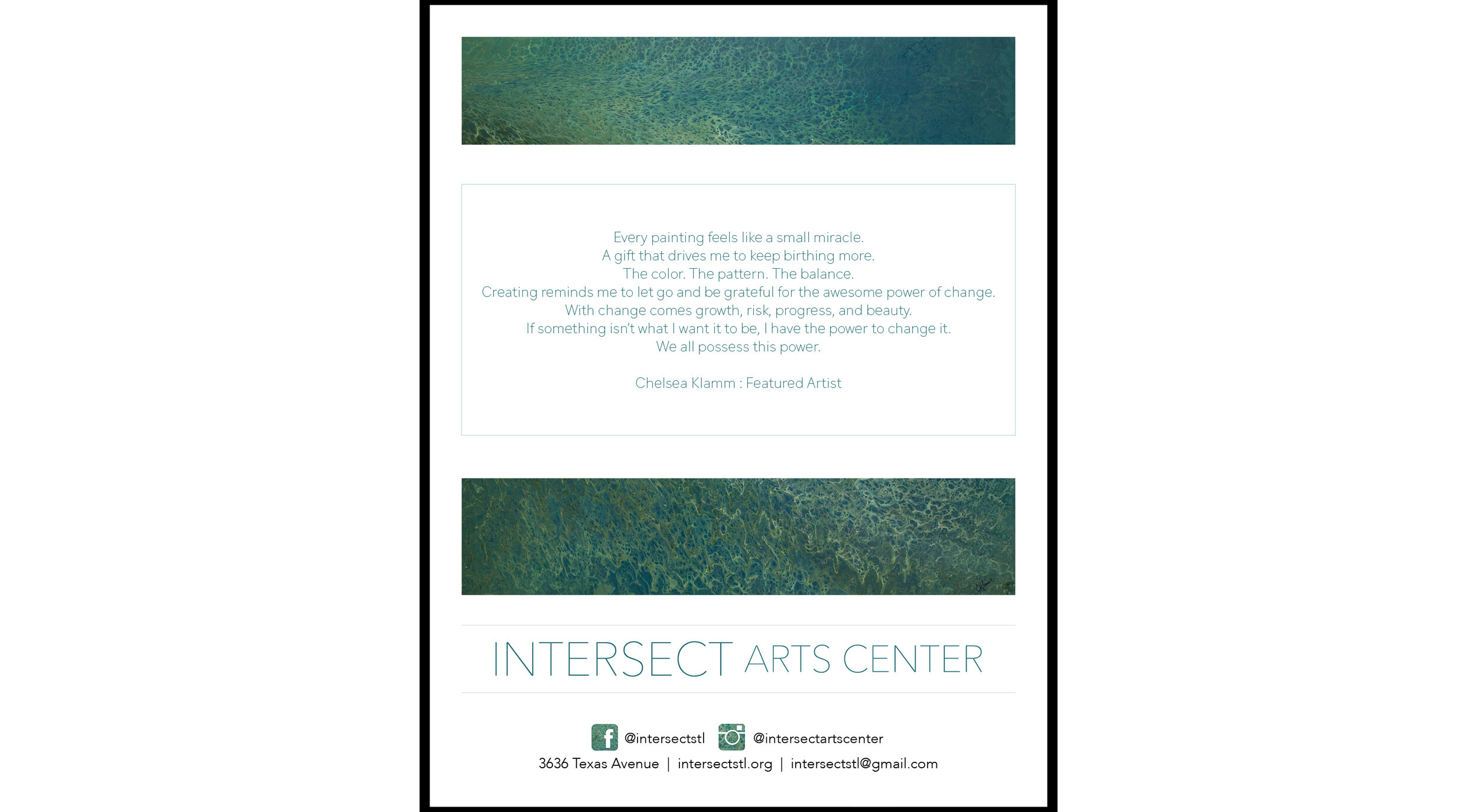
1. Gun Control : Margaret Nicholson
5. Only Half Seeing : Lydia Wood
9. “Who Will Stand with David?” (Series) : Quinton Ward
10. Offertory Vessel V.I : Troy Aiken
11. Abyss and Anguish : Joseph Ovalle
14. Yellow Waves : Brittni Mosby
16. Neap Tide : Kelley Quinn
19. Brothers in Arms III : Tony Rio
23, Flowers Pouring From His Chest : CJ Larson
2. Thank You : Margaret Nicholson
6. For the Love of King : Lydia Wood
9. “Who Will Stand with David?” (Series) : Quinton Ward
10. Offertory Vessel V.II : Troy Aiken
11. Apart and Away : Joseph Ovalle
15. Black Man’s Therapy : Brittni Mosby
16. Spring Tide : Kelley Quinn
20. Brothers in Arms : Tony Rio
24. The Black Madonna - Archetype of Transformation : CJ Larson
3. Cherokee Connection : Hannah Stewart
7. Suffering : Hasna Sal
9. “Who Will Stand with David?” (Series) : Quinton Ward
10. Offertory Vessel V.III : Troy Aiken
12. All I Can See Is the Power : Joseph Ovalle
16. High Tide : Kelley Quinn
17. The Observer : Tony Rio
21. Today’s the Day : Chelsea Klamm
4. Babylon Town : Jeff Williams
8. Quo Vadis : Hasna Sal
9. “Who Will Stand with David?” (Series) : Quinton Ward
11. Fear and Forests : Joseph Ovalle
13. Transcendence : Brittni Mosby
16. Low Tide : Kelley Quinn
18. Hand Gun : Tony Rio
22. The Oracle : Chelsea Klamm
LAYERED PLACE
FEBRUARY 9 - APRIL 19, 2019
Curated by Charis Norell
The traditional landscape painting often contains a horizon line, recognizable landforms, and an idealized representation of Nature. Looking deeper, the historic use of the landscape mirrors the inner-state of that society's relationship to the political, religious, economic, and natural world around it. "Layered Place" invites viewers to reevaluate their definition of landscape, and consider the multiple "layers" of the multi-faceted modern landscape. This group exhibition delves into humanity's tumultuous relationship with Nature, visual metaphors for Place, social and cultural identity, family heritage, and way-finding.
3. Respite Sequence : Jenna Bauer
6. Kitty White : Song Park
4. Gathering (Series) : Mandy Pedigo
7. conservatory : John Sarra
1. Water Cuts : Meghan Grubb
4. Gathering (Series) : Mandy Pedigo
4. Gathering (Series) : Mandy Pedigo
5. Checker-up! : Jon Young
6. bad kitty : Song Park
4. Gathering (Series) : Mandy Pedigo
2. Untitled (anti) Landscape : Allana Ross
Layered Place Catalog
On “Layered Place:”
Notes From the Curator
“All places are small worlds: the sense of the world, however,
may be called forth by art....”
Yi-Fu Tuan, Space and Place (1)
In planning this show, I often asked myself what constitutes “Place.” Is a place merely a physical “spot” in the surrounding landscape? Are places simply locations we visit, dwell in, vacation at, or return to? Could places be more than landmarks and points of reference? I began to think of the concept of Place as a state of mind--an element of our psyche. But if this is true, does Place then become a timeline-point of lived experience; a memory, a fiction? Yes. Yes to all and yes to none of the above. In each of the works selected for “Layered Place” lies an element of Place. Each artist, in their own way of wandering and wondering through making, presents a layer of Place and its irrevocable connection to being human.
I think certain places earn a capital “P.” For example, I could visit many places, but there is no Place like a home. Home is one of those capital-“p” Places. Home holds more than a physical dwelling place--even the word “home” itself cues certain sets of emotions to mind. Philosopher Dylan Trigg writes, “In a word, the places in which we live, live in us.” (2) Trigg tells of the role memory plays in ingraining a location into the mind. The physical place might weather, change, or disappear. Yet, in our memories of our experiences in that place, it remains “untouched,” and continues long after the physical place itself has changed. In a sense, Places are fictions we create; a for-better-or-worse “topia” within our minds. If Place can live inside of me through my memories, perhaps the place now becomes an irreplaceable part of my own experience of my identity in the world around me.
I am thrilled to have you join us at the Intersect Arts Center. As you walk through this exhibition, I invite you to listen and consider what layers of Place each work might be sharing.
————
(1) Tuan, Yi-Fu. Space and Place: The Perspective of Experience. Minneapolis: University of Minnesota Press, 1977, p. 421
(2) Trigg, Dylan. The Memory of Place: a Phenomenology of the Uncanny. Athens, Ohio: Ohio University Press, 2012, p 33.
Works:
3. Jenna Bauer | Respite Sequence (8 x 10, 4) | Oil on Canvas | 8” x 10” | 2018
“The Respite Sequence is a multidisciplinary body of work I’ve embarked upon since returning to St. Louis in 2014 to support my father after his ALS diagnosis. The interconnected nature of reality is implied in the surface of these paintings. They are meditations on the infinite number of things happening at once in our world that are inevitably intertwined. The paintings also exist to suggest the idea of pure landscape as devotional space. The essence of lush, bucolic landscapes provide aesthetic respite from a complicated world.”
1. Meghan Grubb | Water Cuts | Plaster, fabric, string, wood. | Dimensions variable | 2019
“As a product of an ongoing exploration between bodies and water – and the linguistic metaphors that link the two – the series water cuts imagines water-based landscapes in bodily terms. Heavy, fluid, saggy, soft and yet solid, the sculptural forms indicate the physical body and imply both violence and ownership, as if they are cuts of meat to be processed and purchased.
The water cuts originate from images of water found within, and carefully cut from, various newspapers published throughout 2017 and 2018. Each image is removed from its editorial context – place, time and human connection. Ranging from floods, to rivers, salt flats, algae blooms, luxury vacation destinations, fisheries, and glacial melt-waters, the original images in context suggest a complex and increasingly fraught relationship between humans and water-based landscapes. Out of context, printed on fabric, full and heavy, as bodies of water, the water cuts blur distinctions between the physical environment and are own human bodies.”
6. Song Park | Ophelia | Oil on Linen | 5’ x 6’ | 2017
bad kitty | Mixed Media | 30’’ x 40’’ | 2019
Kitty White | Mixed Media | 30” x 40” | 2019
“In Ophelia, I explored the process of seeking the interwoven images of woman framed by a woman’s gaze. In my work, with my body as a primary medium, I continuously create disorder within forms, and it eventually creates a female character in the psychedelic woods that represents my constraints of searching for images of women as a woman. The character undergo metamorphosis in the woods, creating repulsive images; yet, simultaneously, they adore, embrace, and liberate their own image. I also find myself torn between disgust for and celebration of these images. I blur the line between the gender stereotypes that determine which female body image is acceptable and which is taboo, thus, finding my own interpretation of images of female potential.
In Kitty White and Bad Kitty, I explored the gesture of materials by using objects that represents the stereotyped quality of femininity such as beads, artificial flowers rhinestones, fabric trims, and hello kitty resin charms. They are “seeded” in the ground of the painting which represents the “female body”. As the materials arranged/overgrown chaotically on the body, they lose their own gesture such as soft and precious, to create newly repulsive image such as disorder and cacophony, in turn, asking us to consider the fraught psychological and emotional landscape that is proposed to be inhabited by the female body.”
4. Mandy Pedigo | Gathering (Series) | Dried lichen, handwoven fabric, glass beads, linen, cotton, rayon and mixed fibers. | 10” x 10” | 2017
“My great grandparents came to this country from Finland, and in the span of one generation much of their culture and language faded from my family. Even in the effort to assimilate to American culture, traces of heritage remained to be handed down. Through the process of my making, I’ve realized this knowledge has passed unexpressed to me.
Researcher Pauline Boss studies the effects of immigration on families and the loss that results when one leaves home to travel and settle in a new place. She writes, “Homesickness was an essential part of my family’s culture. I think it may be true for all immigrant families, but it certainly was for mine. And it was even in the village because there were many immigrant families there.”
Much of my work functions as maps; maps tell us how to get to our destinations, describes the details of a particular place and how to orient ourselves to our surroundings. Maps evolve in response to changes to place, terrain and land use. Like maps, our memories change over time; the image we retain of a location seldom matches its actual character. The Finns have deep cultural connections with nature. It is no wonder that my family came to America and settled in an area that resembles Finland in many ways. My family carried a surname that translates from Finnish as “the land endures.” The work that I create echoes my family’s historic bond with land as well as the new ones I have formed in experiencing different places.
As weaving and stitching are all naturally slow processes, my work engages time. Working slowly is a direct opposite to the pace of our present culture. Slow allows for quiet, time to think, to meditate and to fully engage with tasks and ideas.”
2. Allana Ross | Untitled (anti) Landscape | Silk, wood, thread, dyes extracted from plants grown in contaminated soils, plant matter, American Bottom-grown corn, beaver-gnawed stick from Coldwater Creek, Southern Illinois coal, pen and ink, acrylic, photos of: West Lake Landfill, Weldon Spring Mound, Granite City Steel, Coldwater Creek, and Monk’s Mound. | Dimensions variable | 2019
“When Charles Dickens toured the Mississippi Valley he called it a “dismal swamp...a hotbed of disease, an ugly sepulchre, a grave by any gleam of promise: a place without one single quality, in earth, air, or water, to commend it.” (1) Even then, due to environmental exploitation—especially excessive logging to fuel steamboats—the Mississippi floodplain had become an anti-landscape, inhospitable to settlement and human life.
Today’s post-industrial environment is rife with “anti-landscapes,” a legacy of the dichotomy that casts nature as separate from humanity. An anti-landscape is a place that does not sustain life— while anti-landscapes can occur naturally, in the Saint Louis area, they are a consequence of human industry. David Nye defines landscapes as “humanly modified places where people live.” He posits that an anti-landscape is landscape’s inversion: “An anti-landscape is a man-modified space that once served as infrastructure for collective existence but that has ceased to do so.” (2) An anti-landscape gives expression to a new sense of environment. It is the echo of a productive, exploited place, an abandoned history. The story of our relationship to the physical environment is inscribed in the landscape: we have rendered it an inverse of itself.
So now what? We live at the confluence of three great rivers in a world facing a water crisis, but our soil is lifeless, compacted, contaminated, unproductive, unfit for growing edibles. What do we do with an anti-landscape? How do we re-implement infrastructure that supports collective existence? How do we come to recognize our dependence upon the physical environment?
Agriculture is more than food. Agriculture is a transaction between ourselves and the dirt. Pigment plants reestablish lost connections between ourselves and our neglected surroundings. Maintenance forges a relationship we forgot. Indigo and coreopsis thrive in gardens installed in post-industrial sites. They are processed into dyes, used in public workshops, and are maintained in acts that re-activate the anti-landscape, establishing infrastructure and maintenance relationships that render the land productive. What do we do with an anti-landscape? Learn from it, re-establish it as a landscape, and fall in love with the maintenance a relationship of interdependence demands.”
————
(1) Norris, Terry F. “Deforestation in the Mississippi Valley,” in Common Fields: An Environmental History of St. Louis. St. Louis, MO: Missouri Historical Society Press, 1997, p. 85
(2) Nye, David E. and Sarah Elklund. The Anti-Landscape. New York, NY: Editions Rodopi B.V., 2014, pp. 11-12.
7. John Sarra | conservatory | Mixed Media | 84” x 60” x 14” | 2018
“The title of this piece, conservatory, hints at the study of music while also referring to rooms where plants are collected and preserved. The windows of the conservatory, like the plants themselves, speak to the desire to pull the outside inside.
This piece is meant to be seen from across the room as an object before being approached and scrutinized as imagery. Finally, it presents an invitation for a viewer to sit, to inhabit the work even as they turn their view away from it. And in that moment the work directs a viewer outward toward “the scenic” or inward towards “rest”. Recently, I’ve been thinking of observation and creation as forms of listening. And while listening holds hearing as its purpose, sound is not guaranteed. The apprehension of silence, then, can be taken as evidence of the creative act. That silence becomes a representative of faith, a transformation of nothingness into emptiness—that is, the void is placed within a container and becomes fathomable without losing its immensity.”
5. Jon Young | Checker-up! | Saddle, Flocking, Iridescent Fabric, Sand, Wood | 8’ x 8’ x 4’ | 2018
“My practice centers around the development of language, visual symbols, and signage. In investigating these aspects, I appropriate symbols from various points in history; looking back to Paleolithic cave paintings and Greek pottery to contemplate visual language as well as pulling symbols from recent culture such as the line in the sand found in Western films and cartoons.
Using the American West as a backdrop, I ground the position of these works in histories and mythologies of new frontiers. The work stems from my personal experience of continuous travel that came with being a child of a military family and reflects on the cultural displacement of my Native American identity. I use textiles, sand collected from significant places of my nomadic life, and the languages of the “Arte Povera” movement to create works that act as signs to become points of orientation in an ever-shifting sense of place and time.”
My current work is an extension of a series of works that I began in 2016 entitled “Waymark Margins”. The iridescent fabric performs similarly to hallucinations in a desert; visible yet elusive, like a hologram. They flicker, shift, and move as the viewer changes their orientation to the work. The embossed pillowy surface of these works not only reaches out to the viewer, but also have reflective properties that create a disorienting sense of space within them. I repeat these disorienting signs to give a viewer recurring moments to consider their orientation among them.
FIRST FRUITS
JANUARY 14 - FEBRUARY 1, 2019
a Traveling Exhibition by CIVA
The entire Judeo-Christian narrative is filled with images of feasting, fruitfulness, and faithful labor. This exhibition explores the concept of “first fruits”, an ancient tradition of sacrificial yielding back to God the best portion of life’s blessings in gratitude. 24 Contemporary artists from around the country have undertaken the task of reflecting this idea in literal, metaphorical, personal, historical, and cultural contexts.
CIVA thanks Joel Sheesley for serving as the juror for this exhibition, a daunting task given the unusually large number of submissions. Sheesley is a painter and Emeritus Professor of art at Wheaton College. He currently works with The Conservation Foundation in northeastern Illinois, painting the Fox River Valley landscape, where he contributes a valuable aesthetic dimension to the foundation’s overall concern for environmental education. Joel’s paintings have been exhibited widely and upcoming shows for 2016-2017 include the Kalamazoo Institute of Arts, Kalamazoo, Michigan; the Lubeznik Center for the Arts, Michigan City, Indiana; and the Walford Galleries at Wheaton College, Wheaton, Illinois.
CIVA stands for Christians in the Visual Arts. It is an American visual arts organization working to enhance and explore the relationship between Christian faith and the visual arts. It was founded in 1979.
All that is Kept within My Heart : Rachel Durfee
Hearts : Matthew Ballou
Plateaus (blue) : Josh Smith
Eucharist : Kristen Van Mourick
Keep Them Close : Marcus Miers
First Fruits : Kelly Shehan Hazime
The Journey of the Painters, Poets, & Musicians : Coulter Prehm
Eulogy for Mammon #3 : Tyler Gathro
Milk & Honey : Vincent Hawley
Southern Indiana : Michael Winters
Dairy Farm, Weld CO, 1980 and 2014 : Kathy T. Hettinga
Untitled Measurement (Ultra Life) : Gene Schmidt
Leaves : Heidy Chuang
40 Days Forty Sacrament : Kari Dunham
Lengthening : Keith Barker
Pleasant to the Sight : Delro Rosco
The Sum of My Parts : Megan Murphy
Tree Parables (Generations) : Joseph Dibella
Abstraction : Sara Nordling
The Nurture : Robert Eustace
Good Morning : Sheila Ballantyne
Up Through the Endless Ranks of Angels : John Bergmeier
The Reinterpretation of the Full Armor of God : Lee Benson
Untitled : Allison Luce
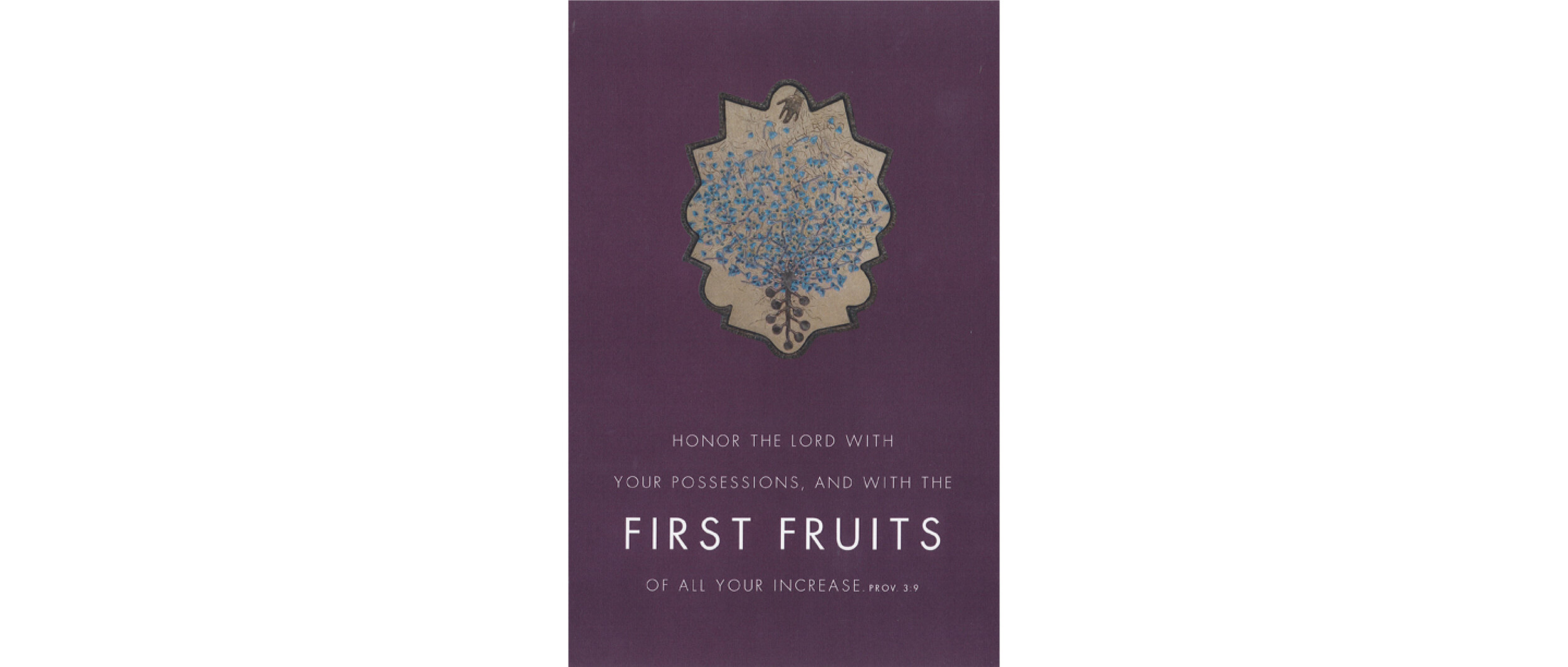
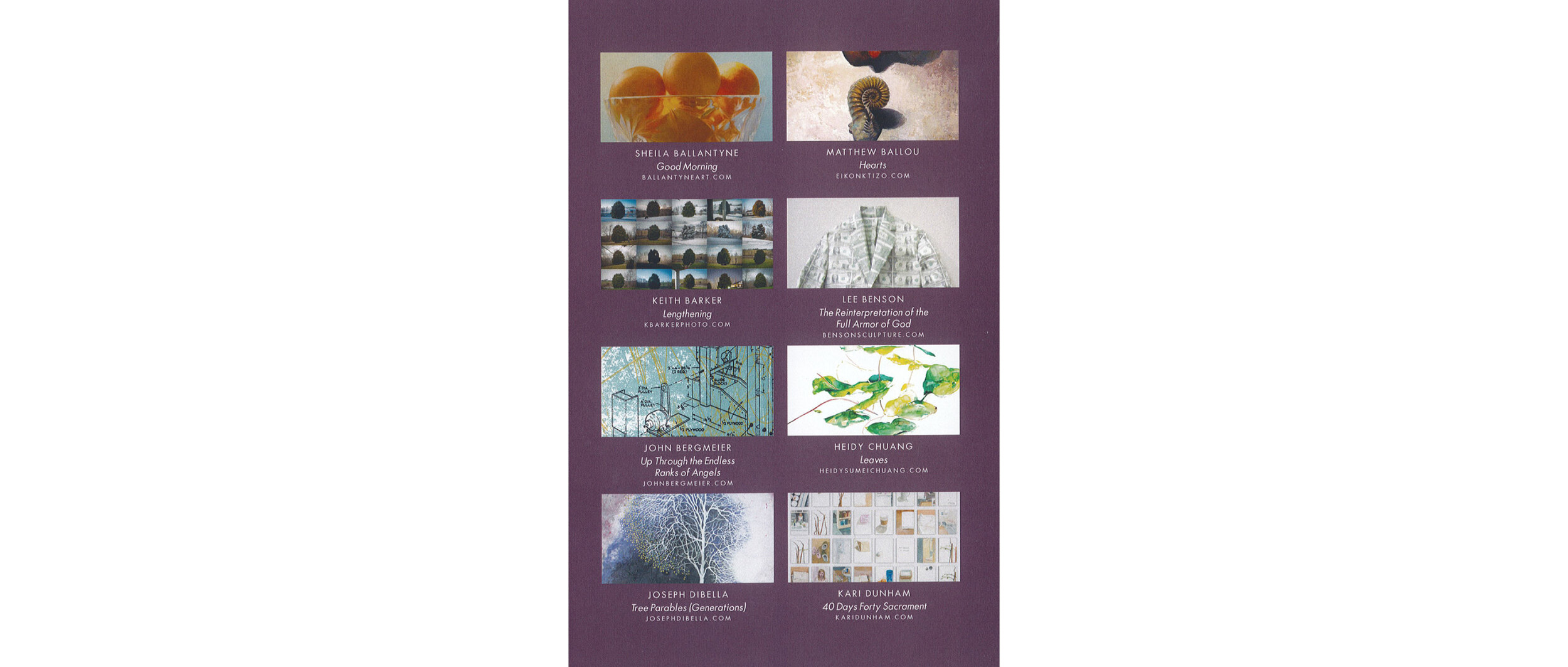
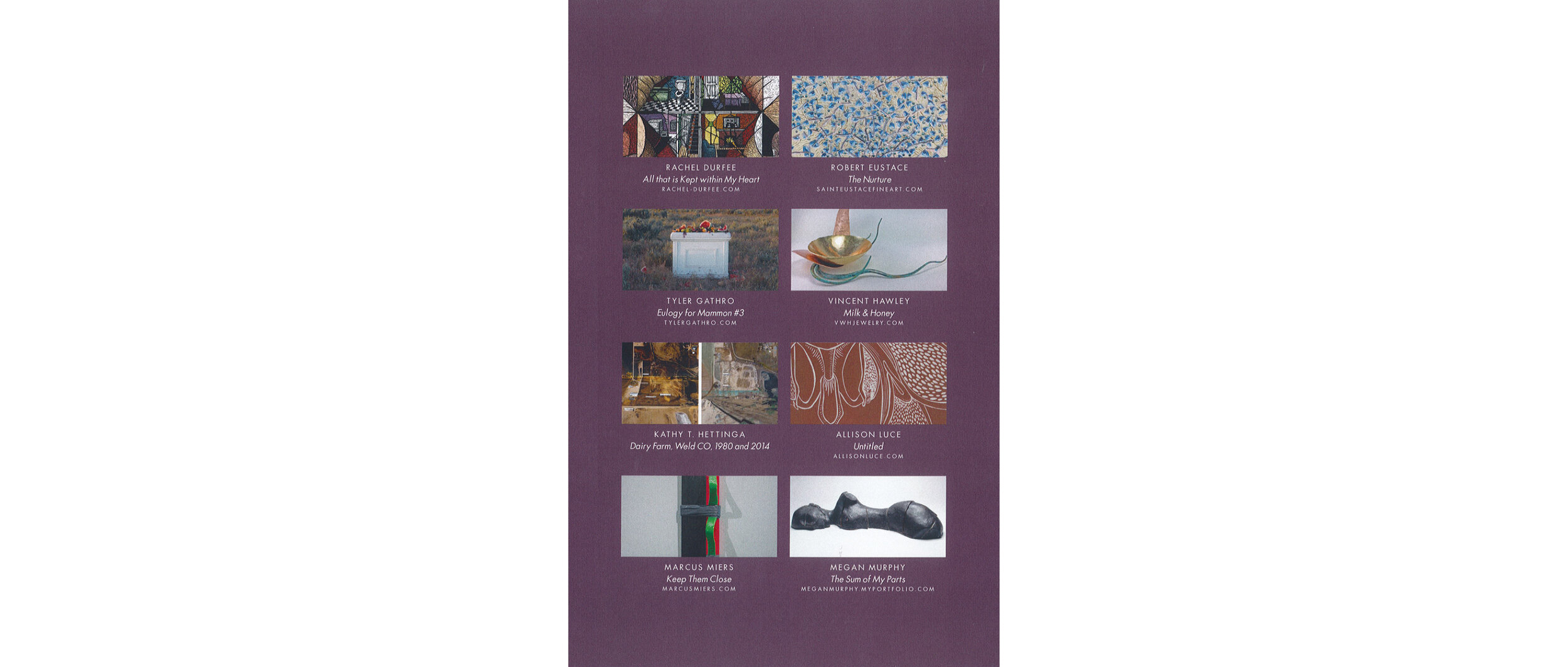
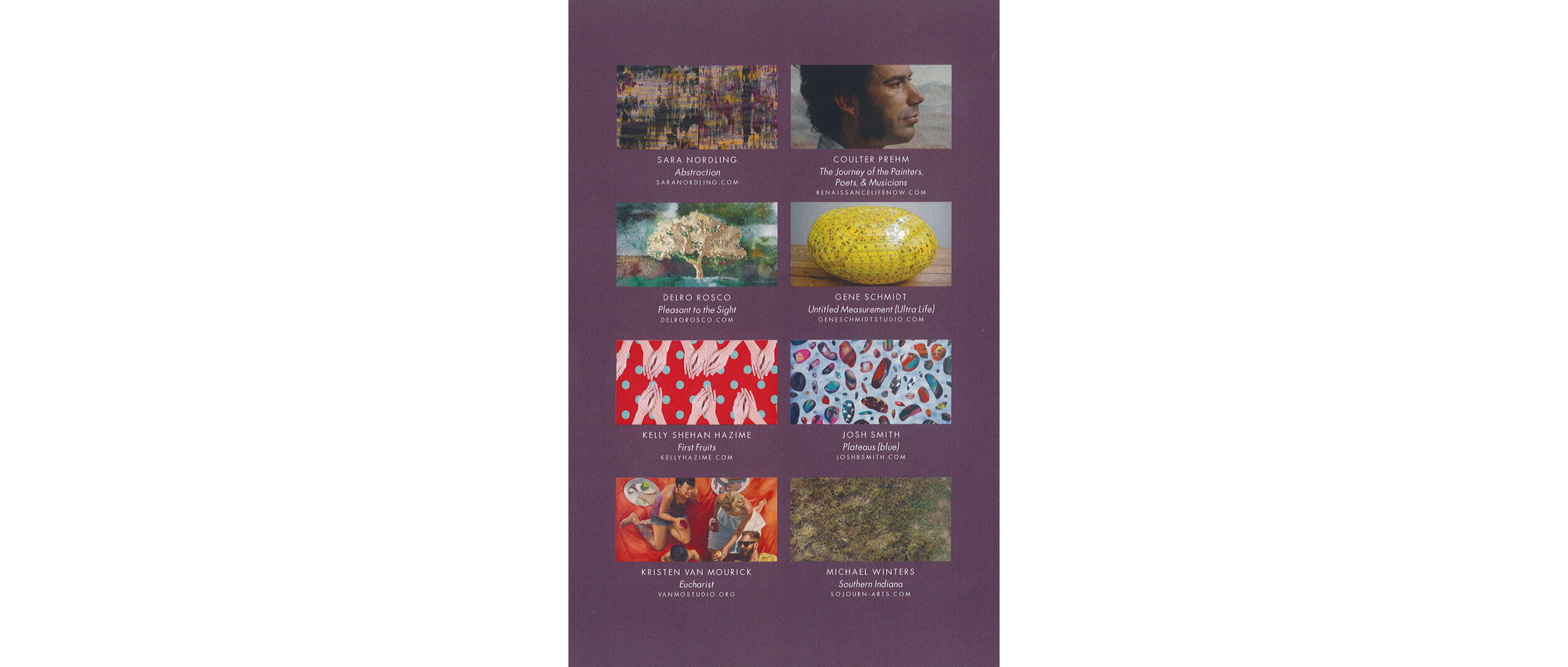
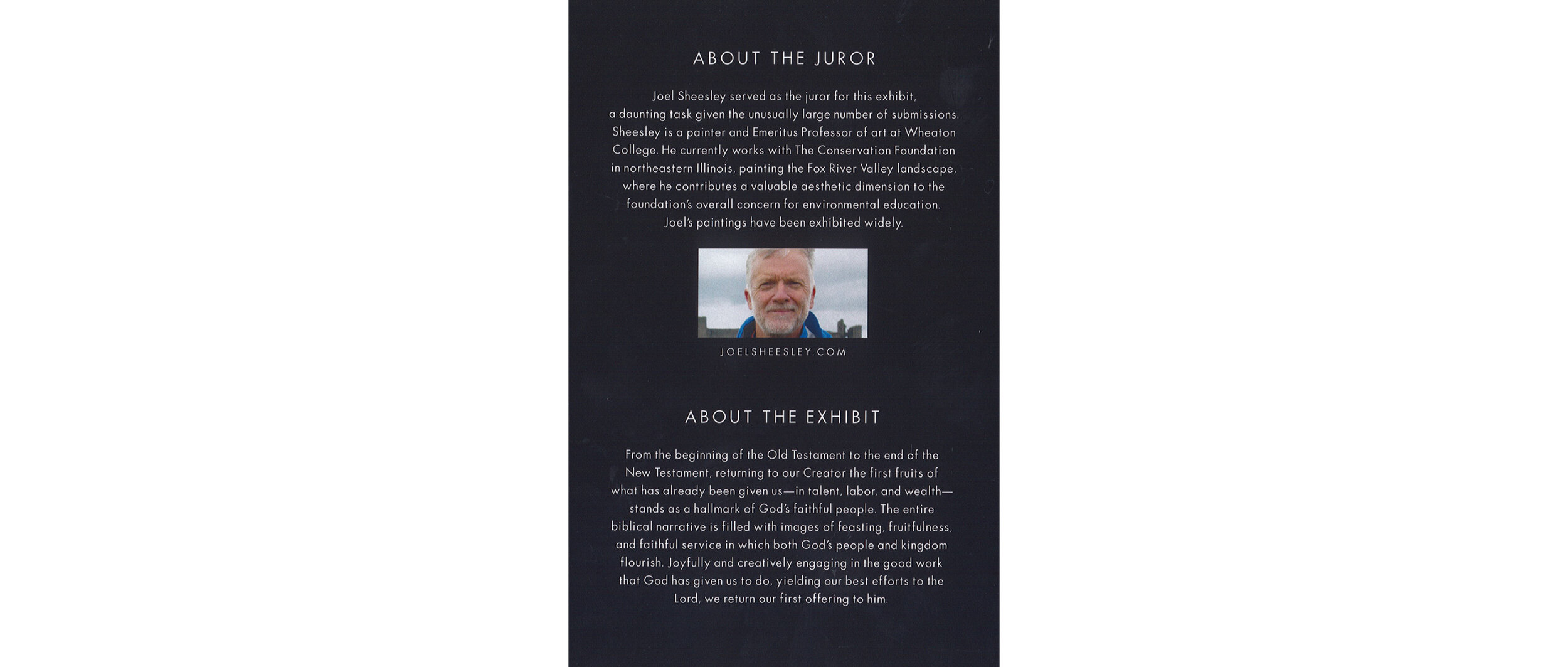
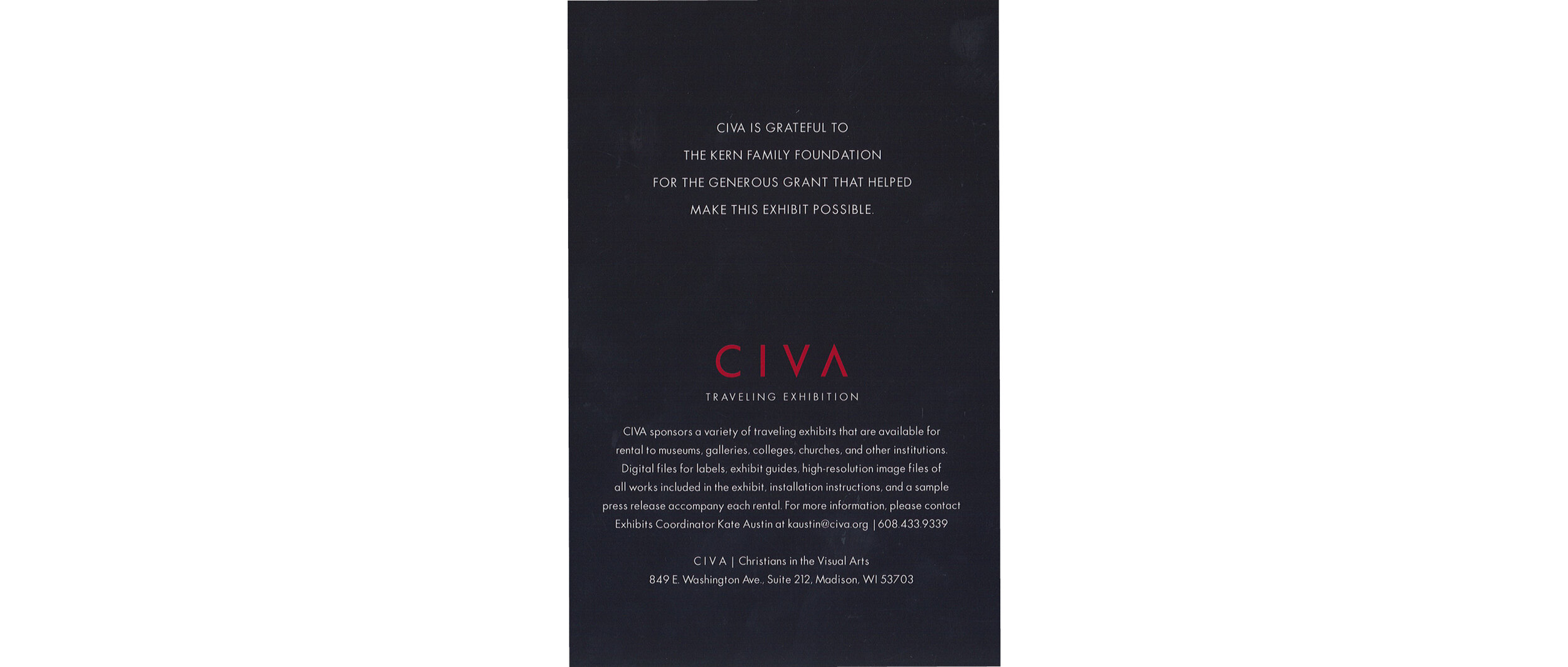
RESOLVE
AUGUST 3 - OCTOBER 5, 2018
We all want to find resolution to life’s challenges. I sought insights, perspectives, and artistic solutions to the dysfunctions and divisions which sadly and, ironically, unify every human being’s experience. Artists from St. Louis and around the country submitted work of remarkable depth and breadth, each with a unique interpretation of the theme Resolve. Packages rolled into the studio, the exhibition design ensued, and gradually the visual and conceptual connections started to thread together. Throughout this program you can read the artists’ own words narrating their content and intent. I’ve also offered a conceptual piece, a third-party interpretation of the art that can serve as a mediator. So often contemporary art can be elusive and confusing and we can feel foolish for not “getting it,” even for those of us professionally trained in art. The notes here are intended to reconcile you through that conflict, to experience the beautiful, challenging, and poetic ideas contained within each work of art here. Each color and material and choice the artist has made carries meaning, and my intention is to offer at least one perspective of how that meaning might be interpreted. Some works are more readily understandable than others, and others take patience, effort, and an investment of time and mental or emotional energy to gather the richness they have to offer. You may not agree with every perspective here, but we invite you into one of the fundamental aspects of conflict resolution: listening. Thank you for sharing these images with us, listening to the artists’ thoughts and perspectives, entering into conflict, and hopefully leaving with a more enriched and fuller understanding of resolution sought, aspired, and achieved.
Sarah Bernhardt | Exhibition Curator | Executive Director, Intersect Arts Center
RESOLVE Catalog
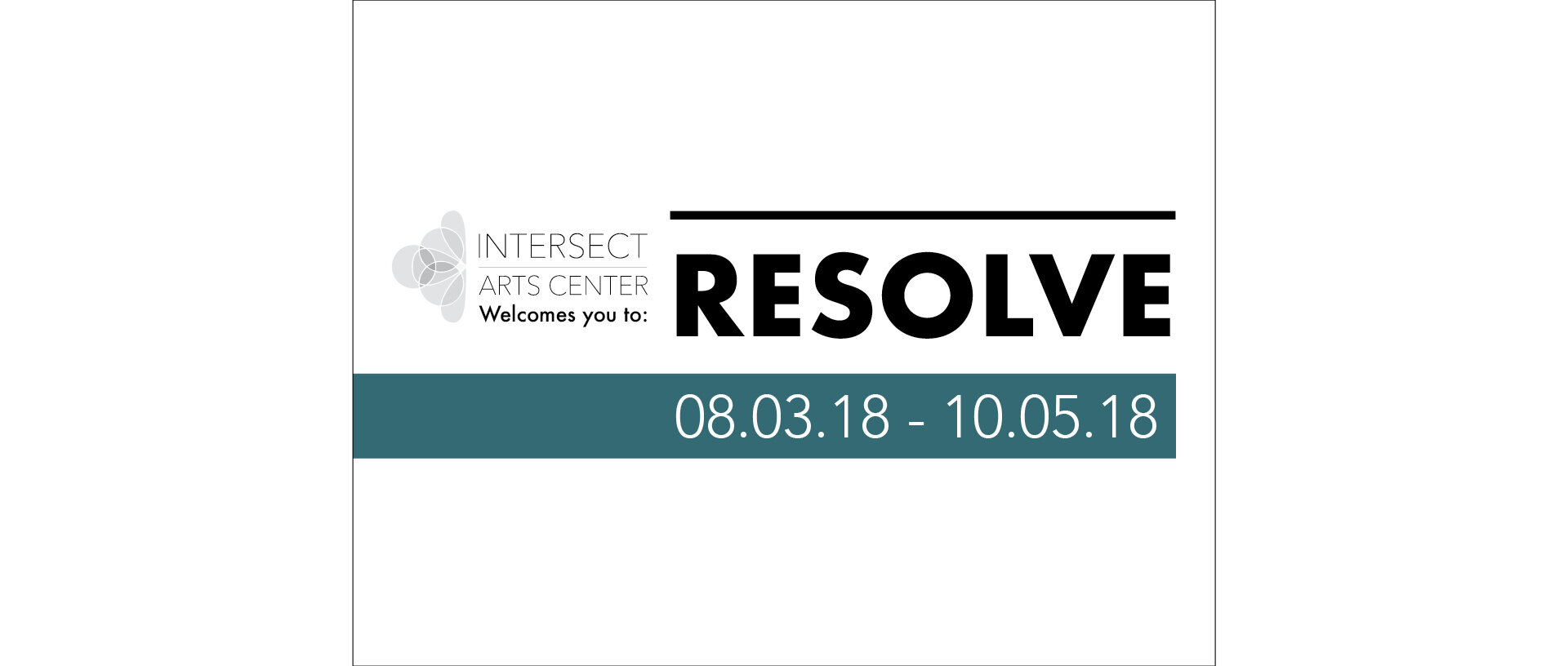
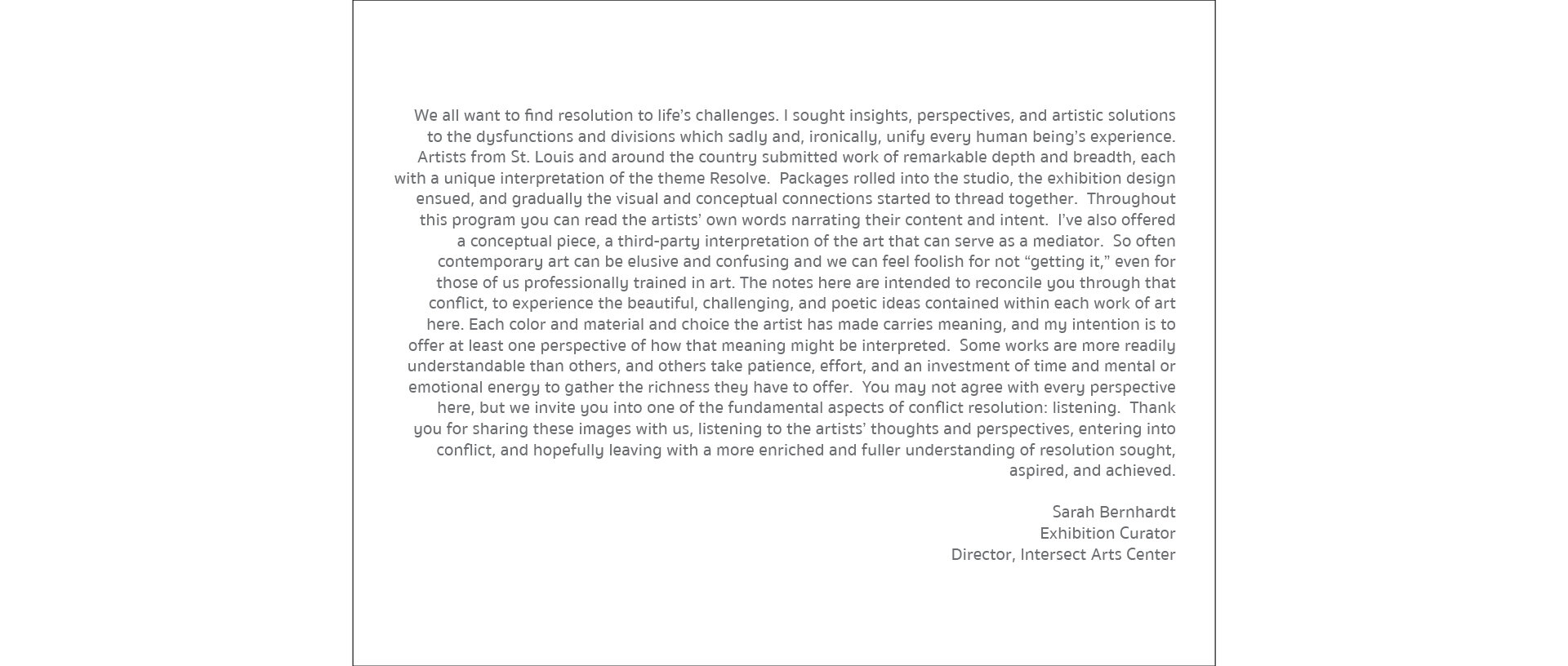
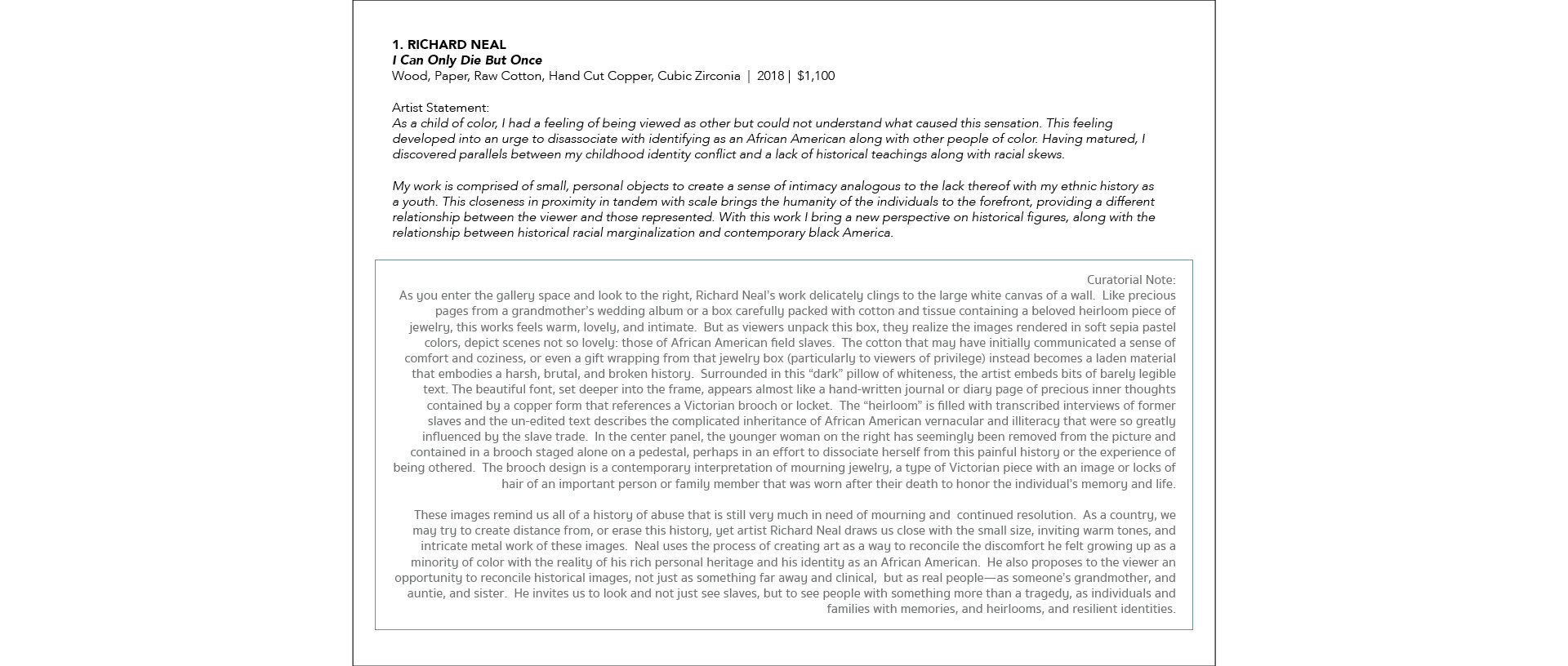
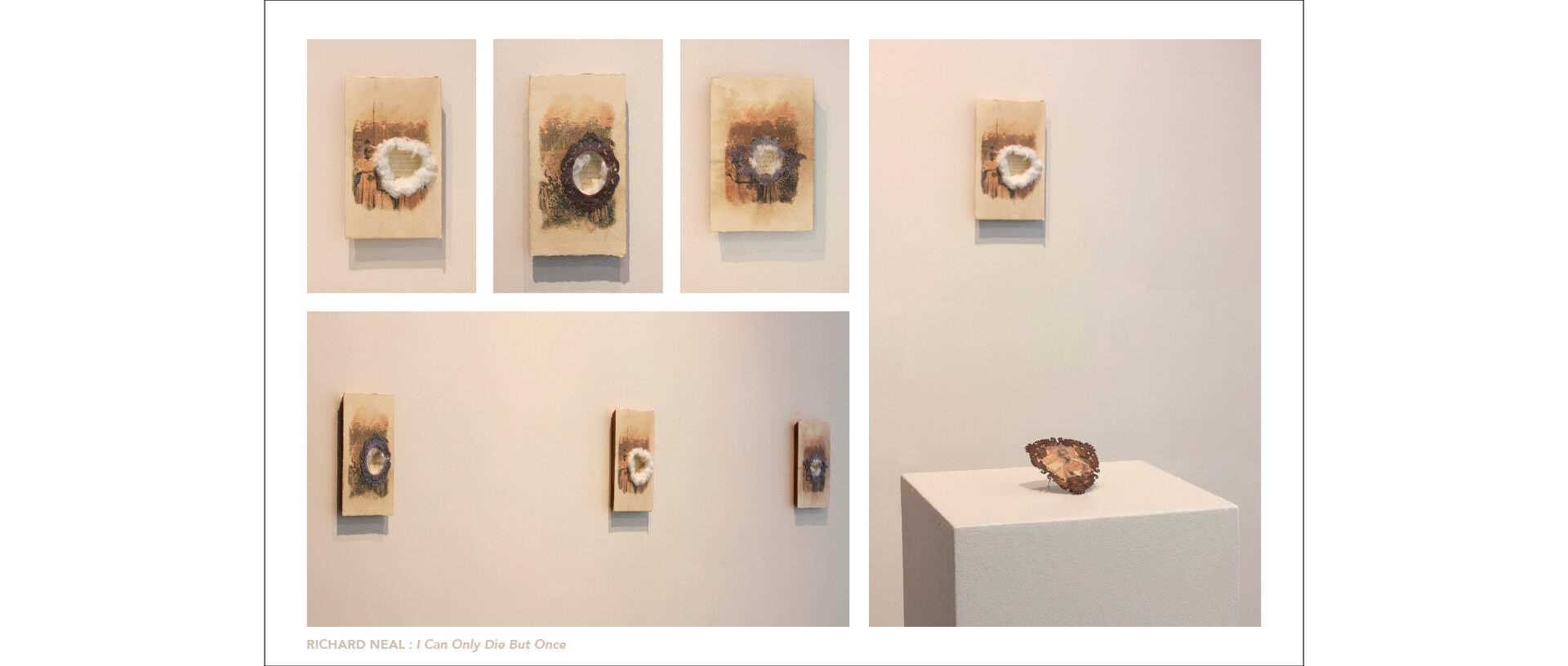
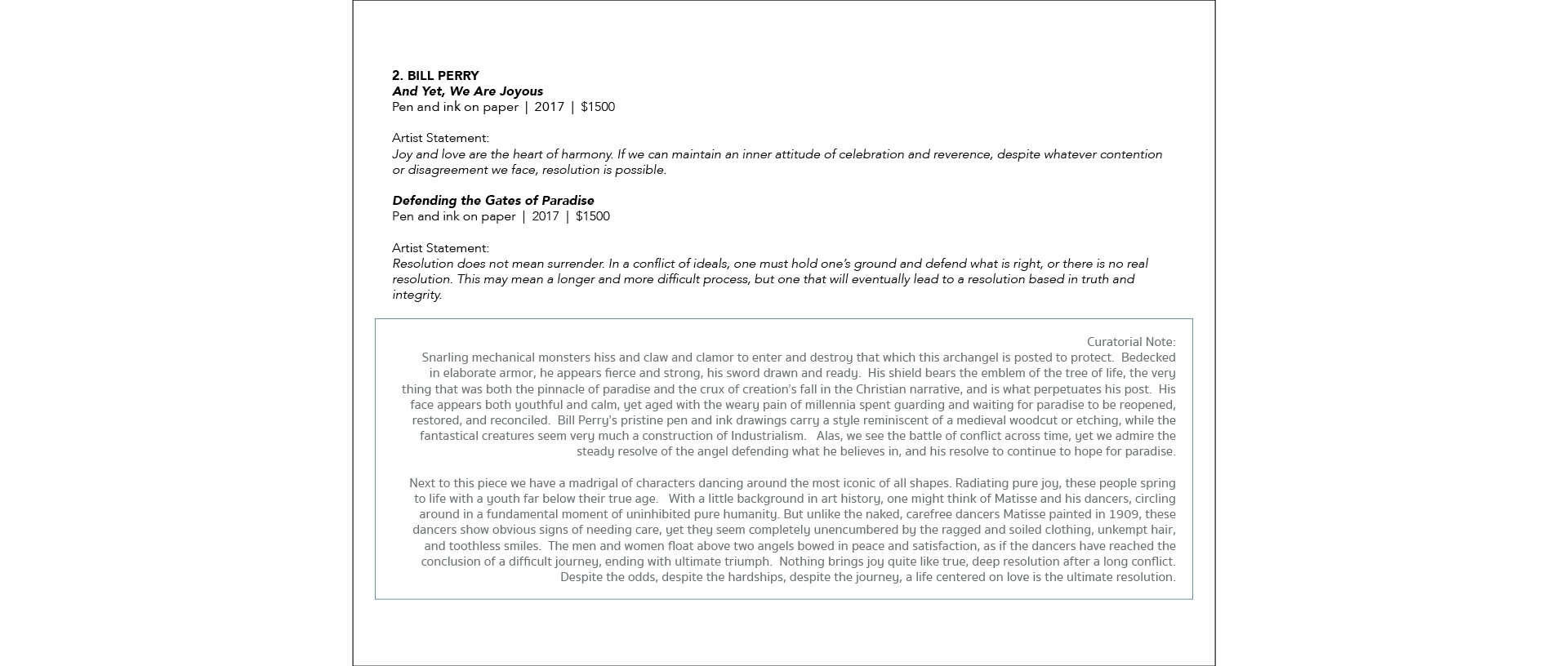
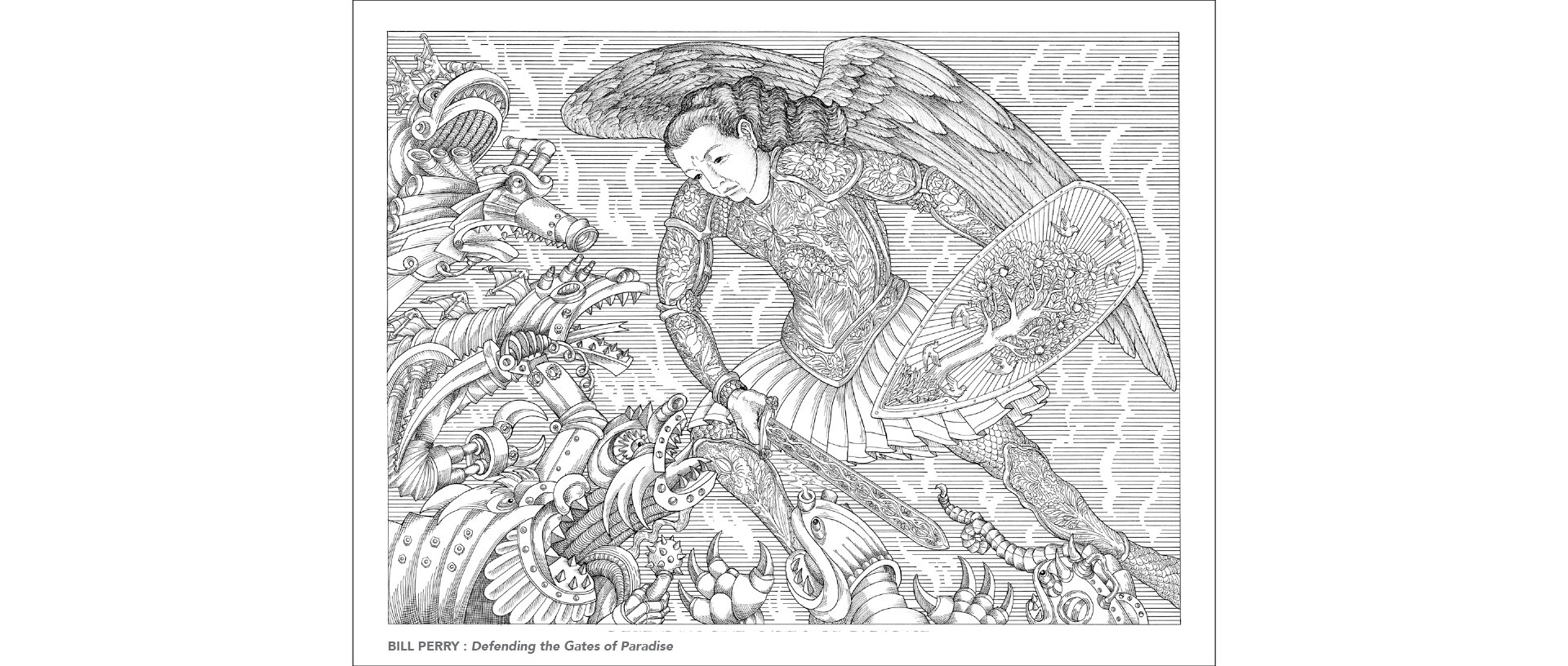

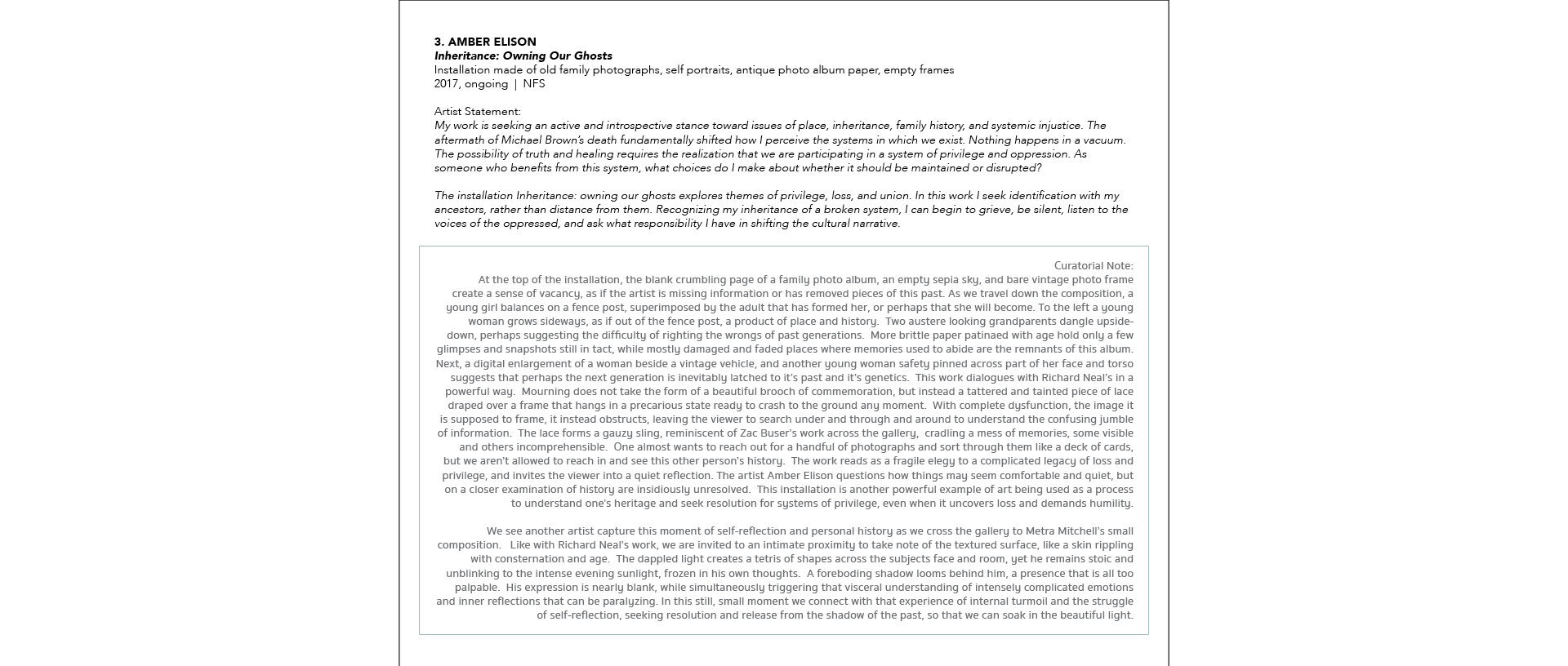
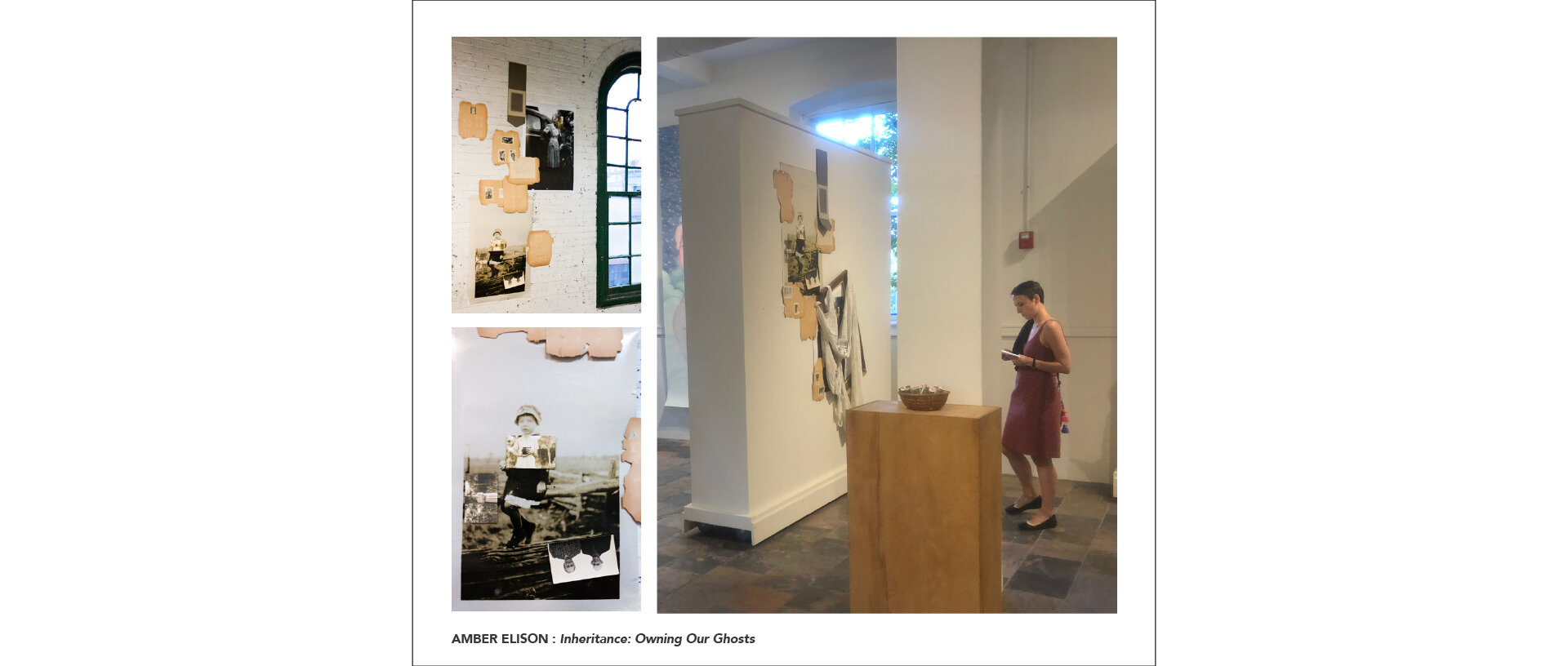
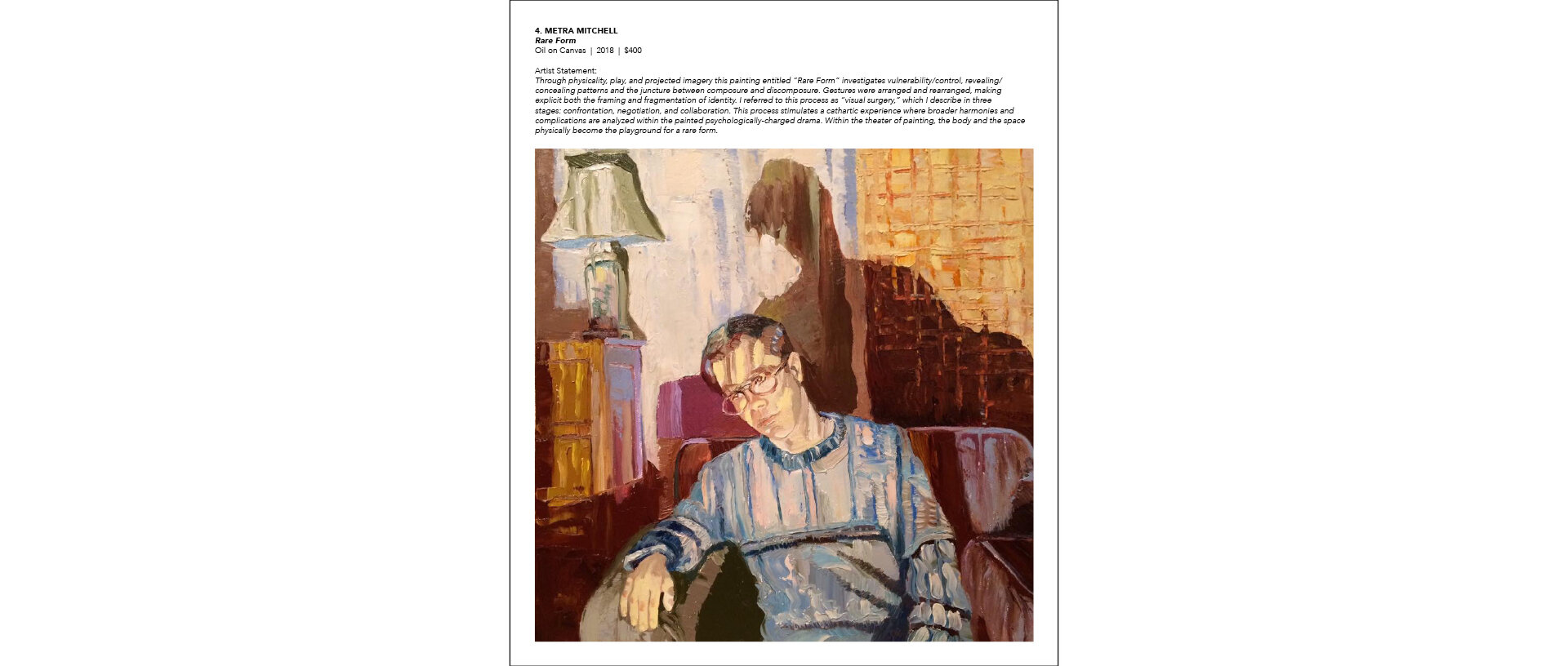
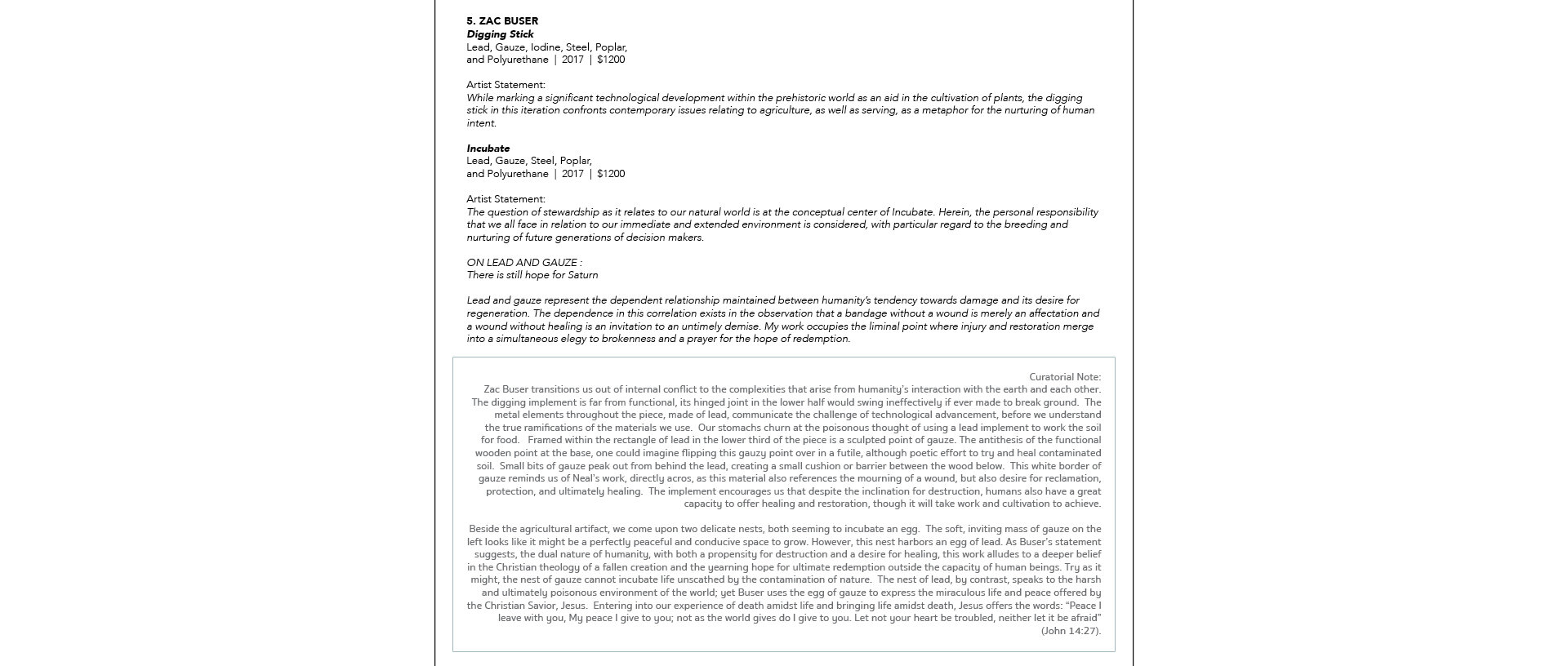
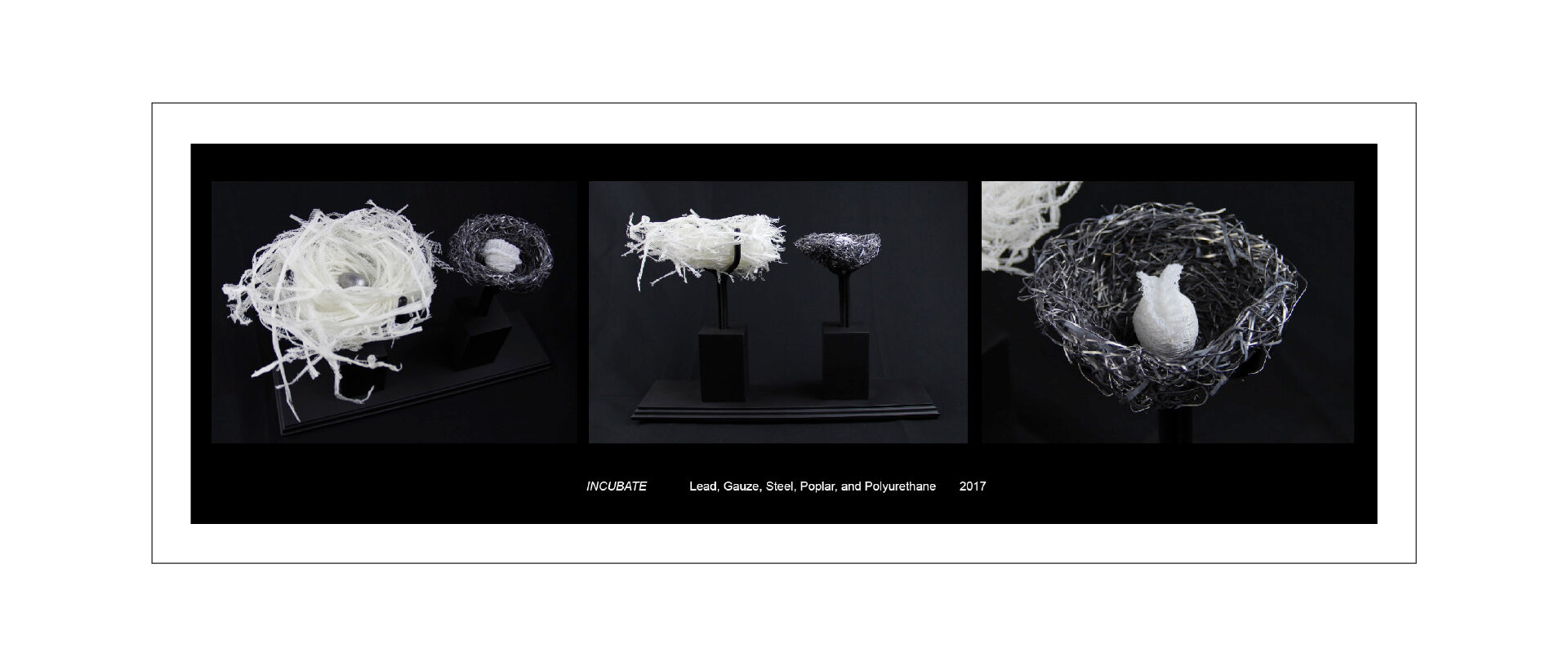
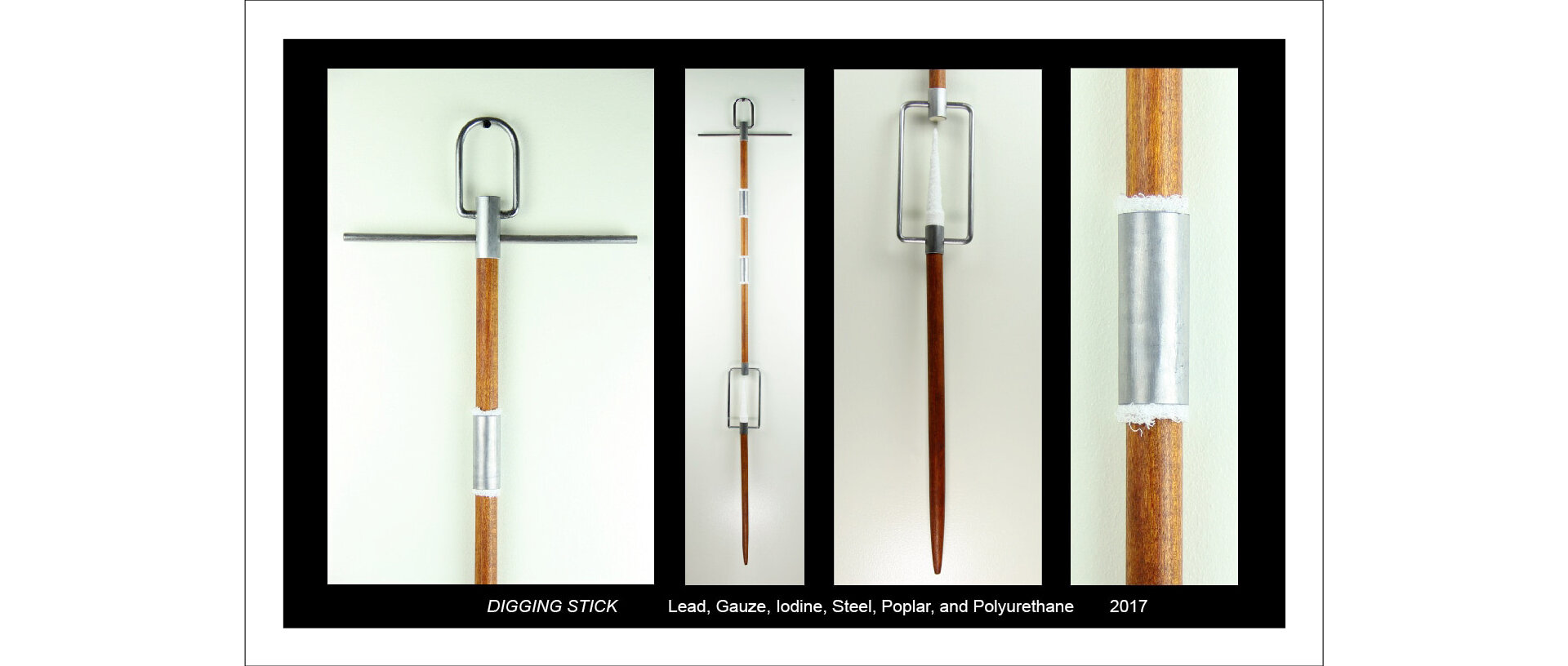
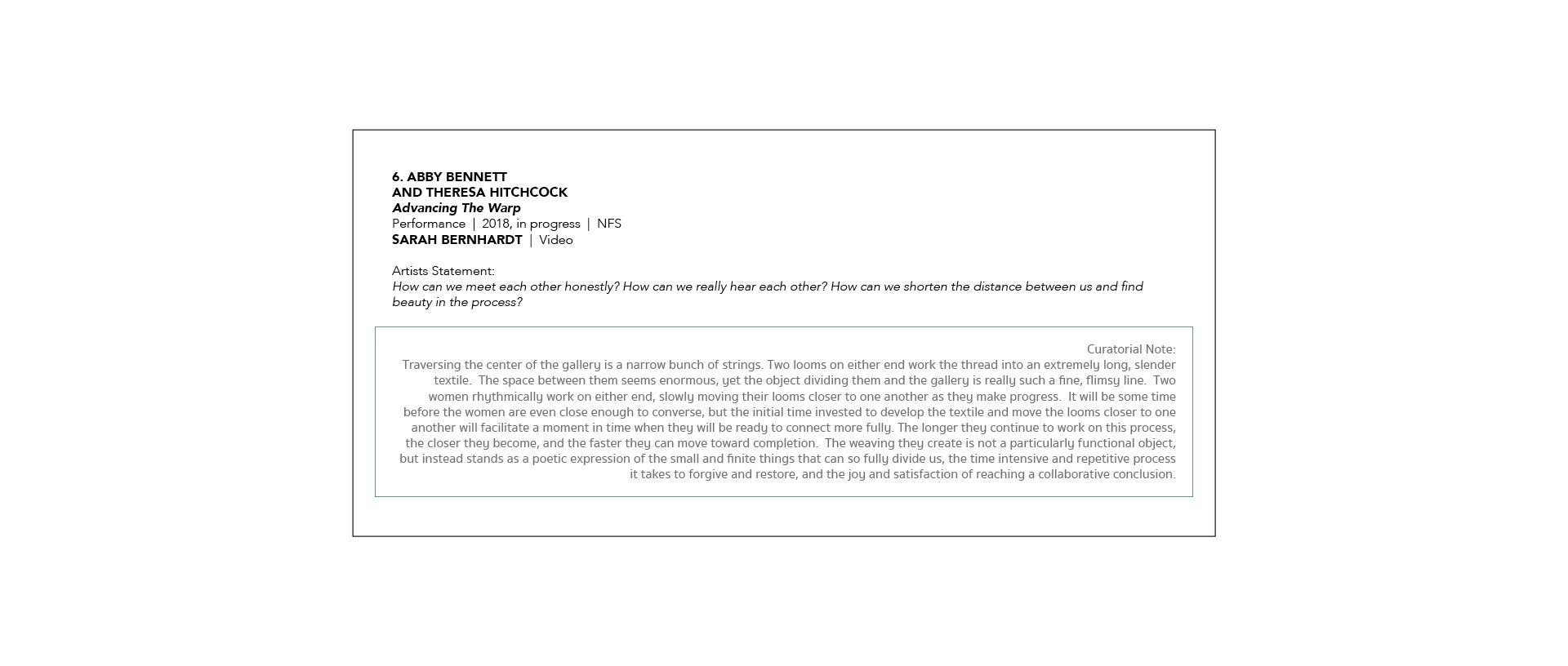
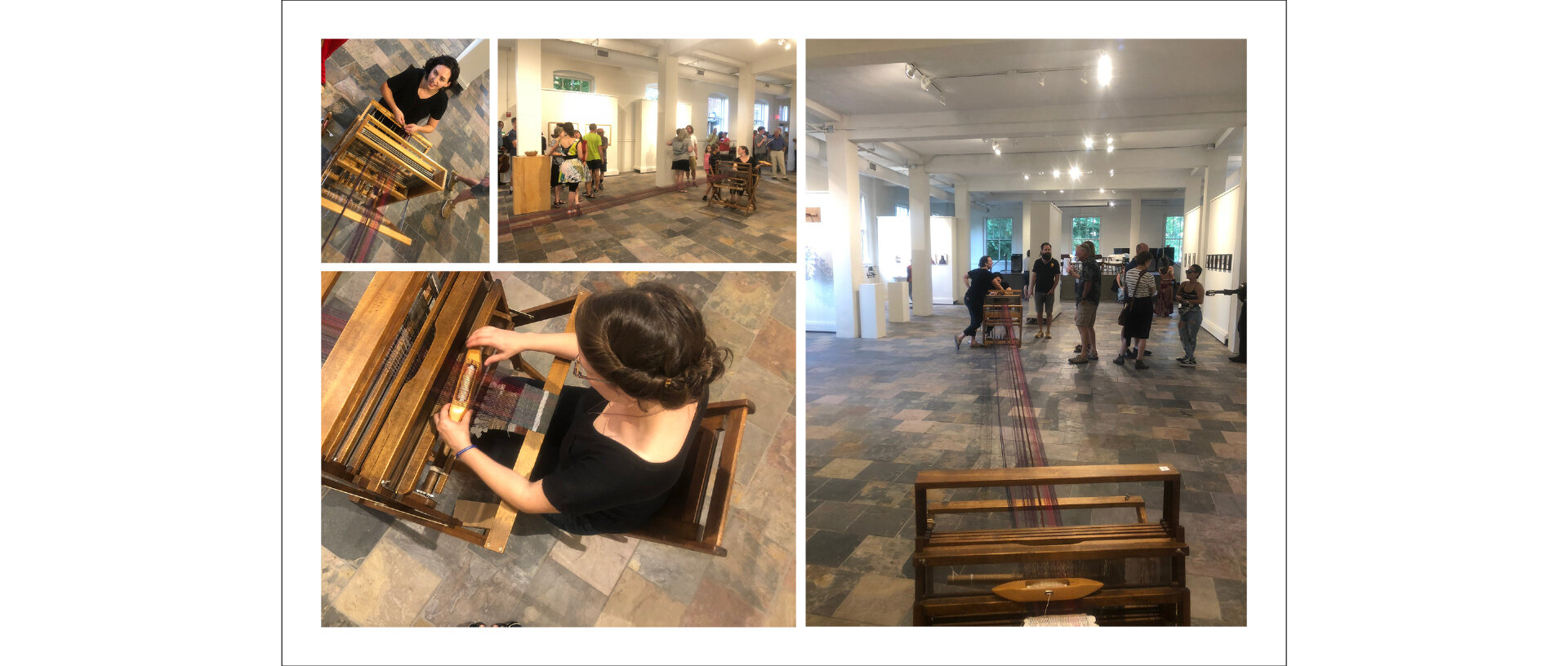
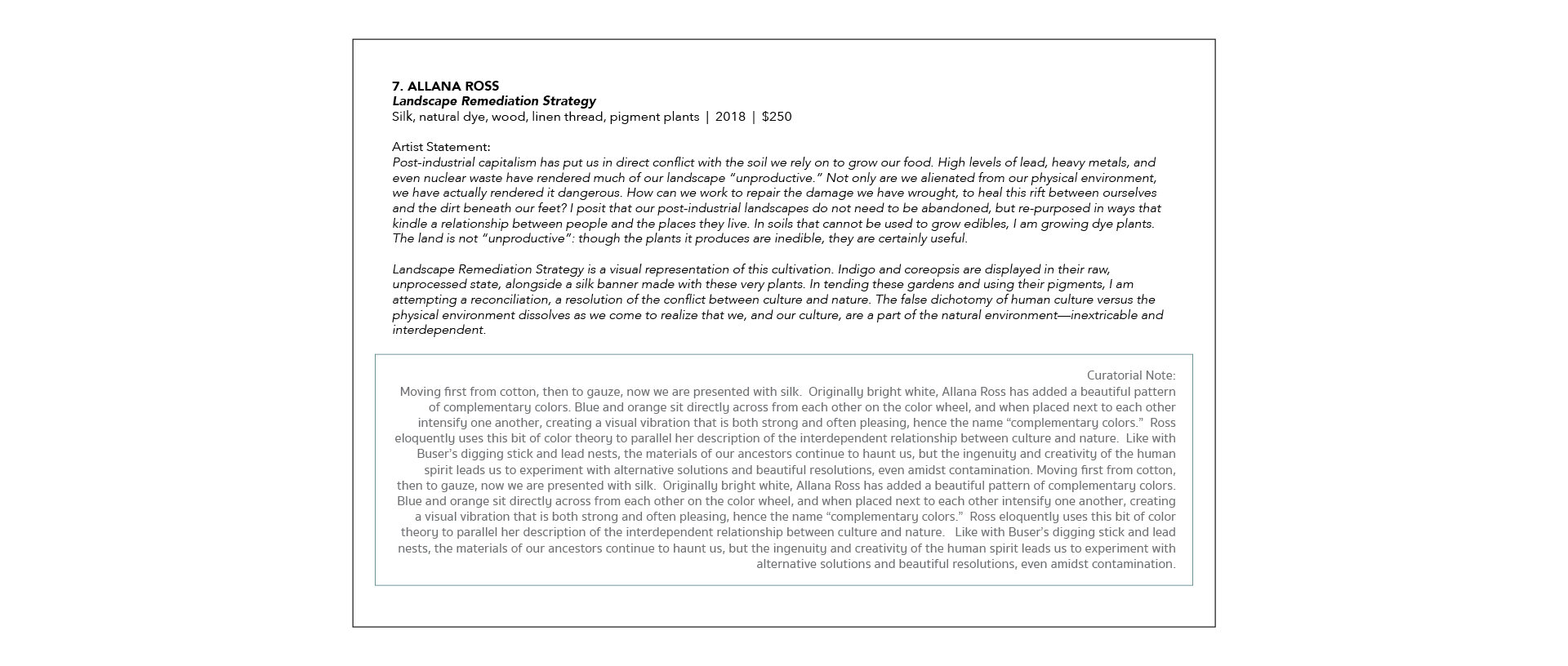
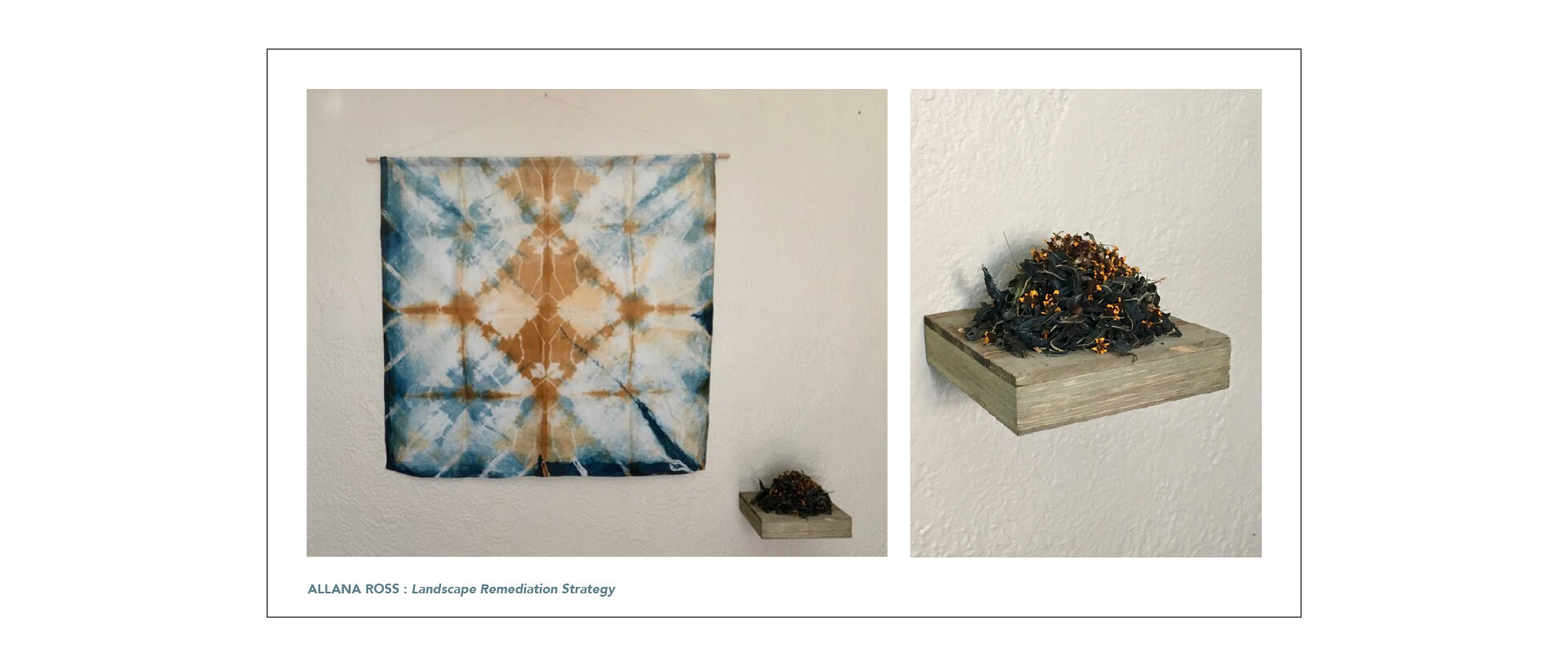
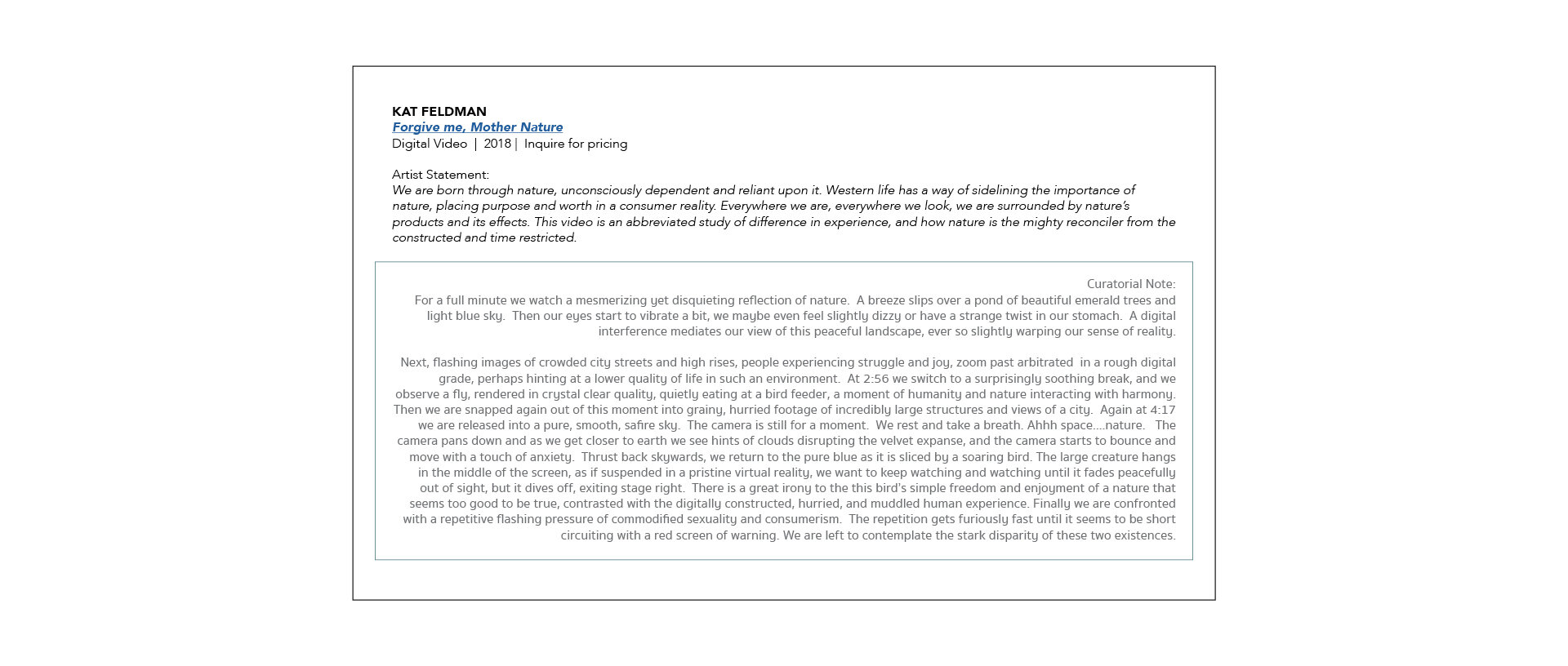
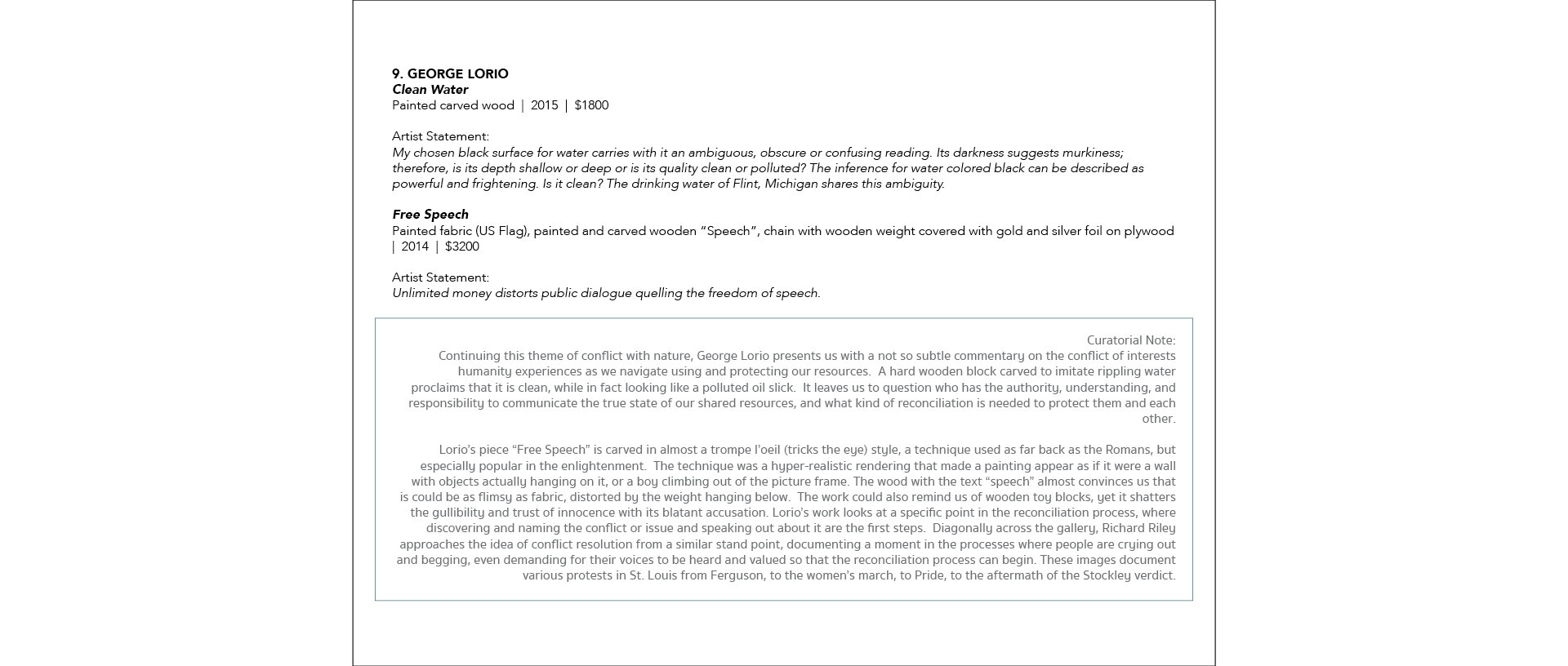
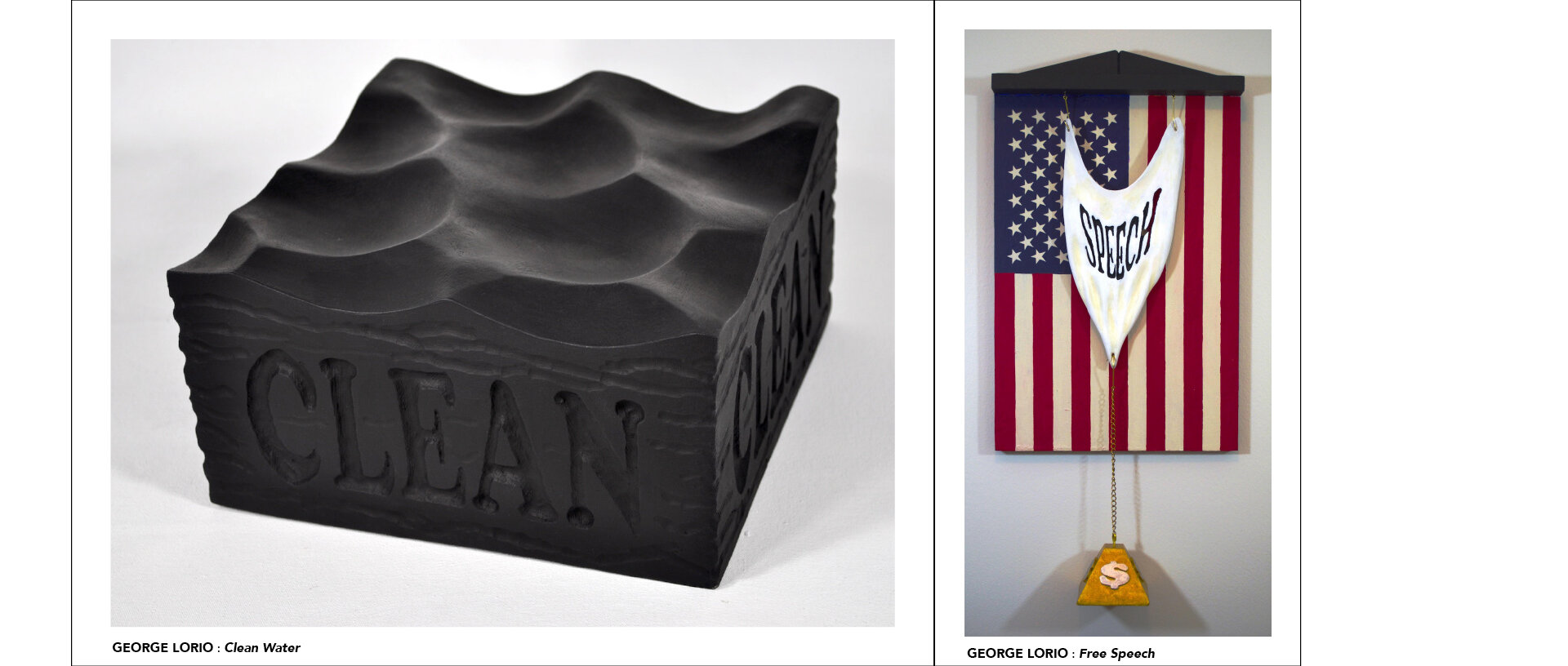
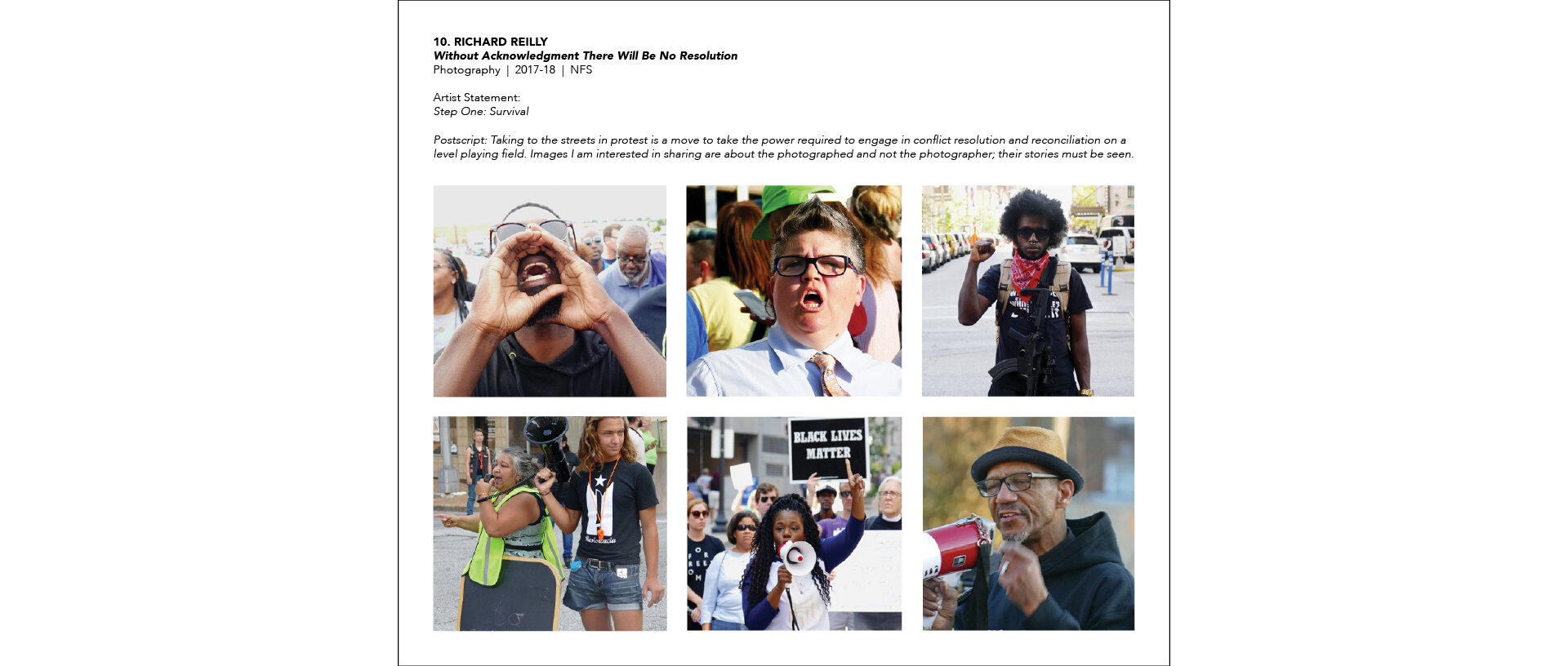
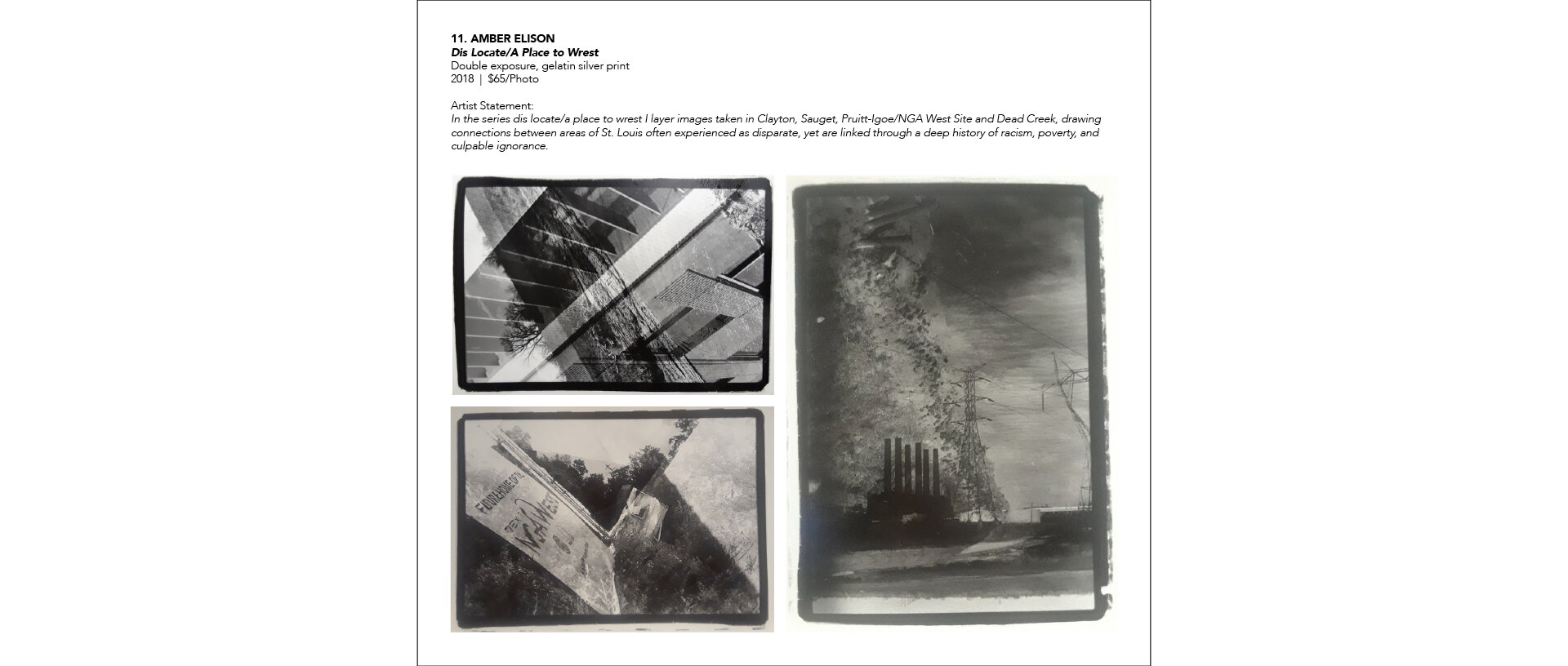
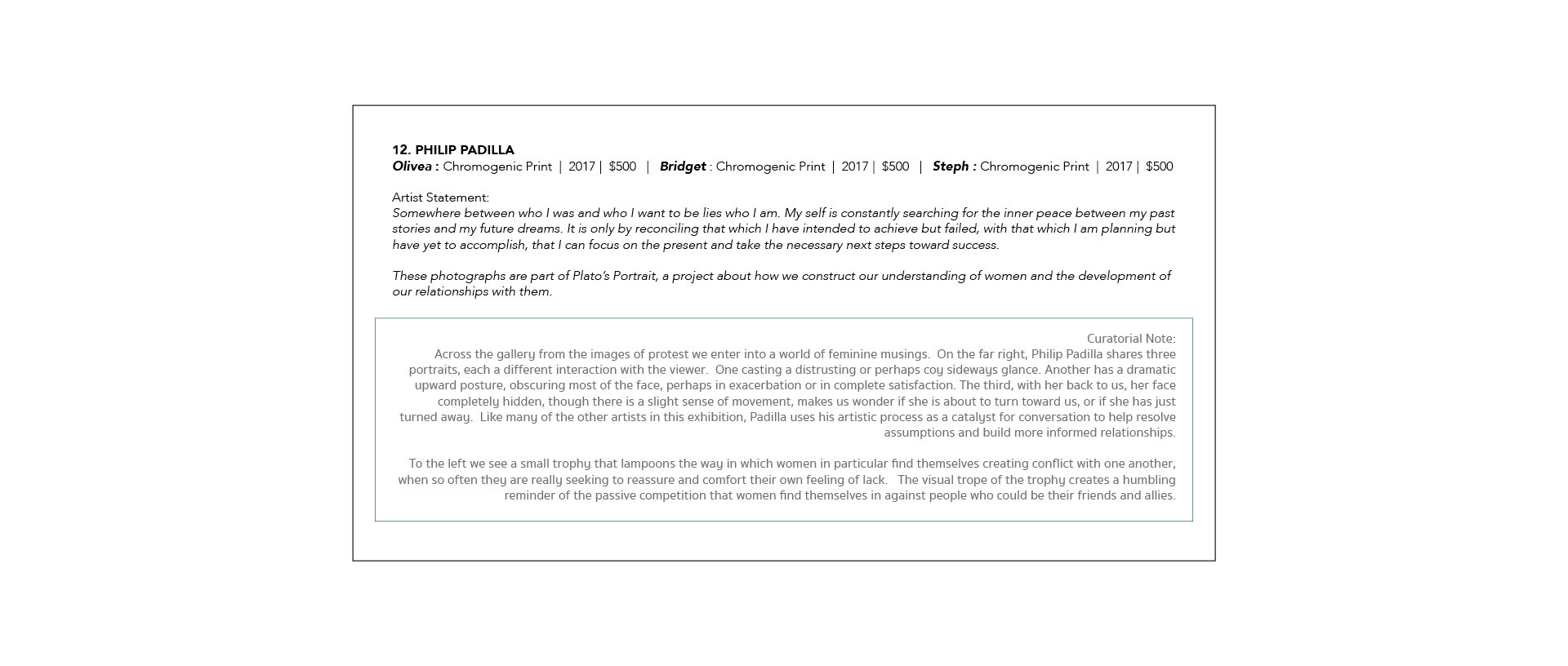

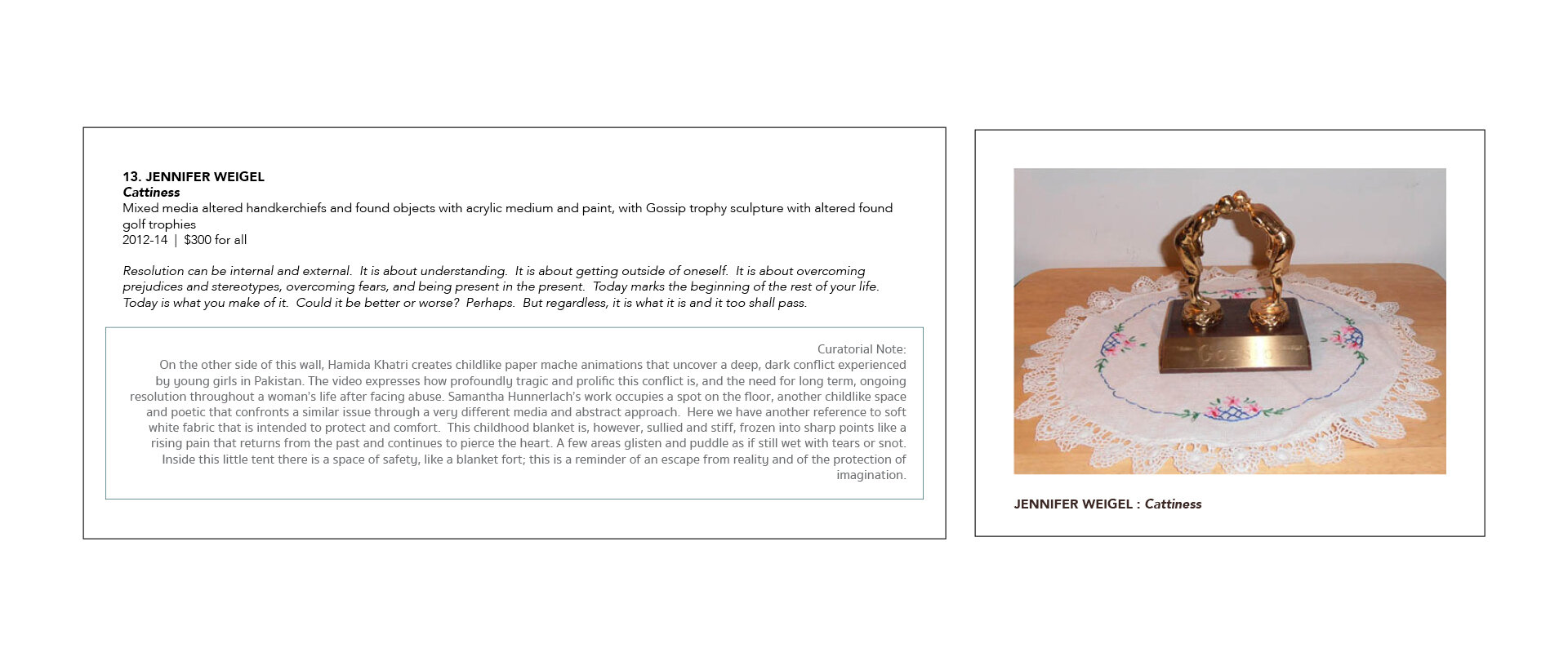
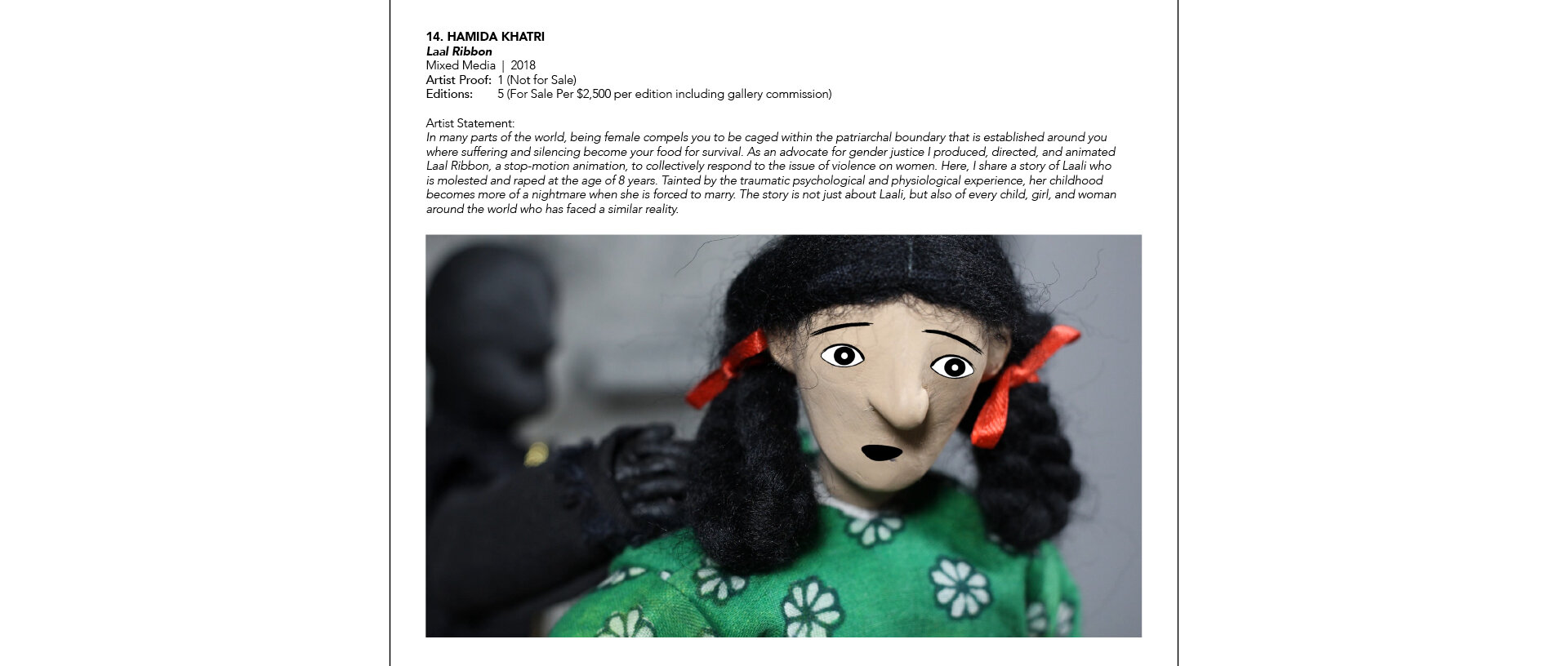
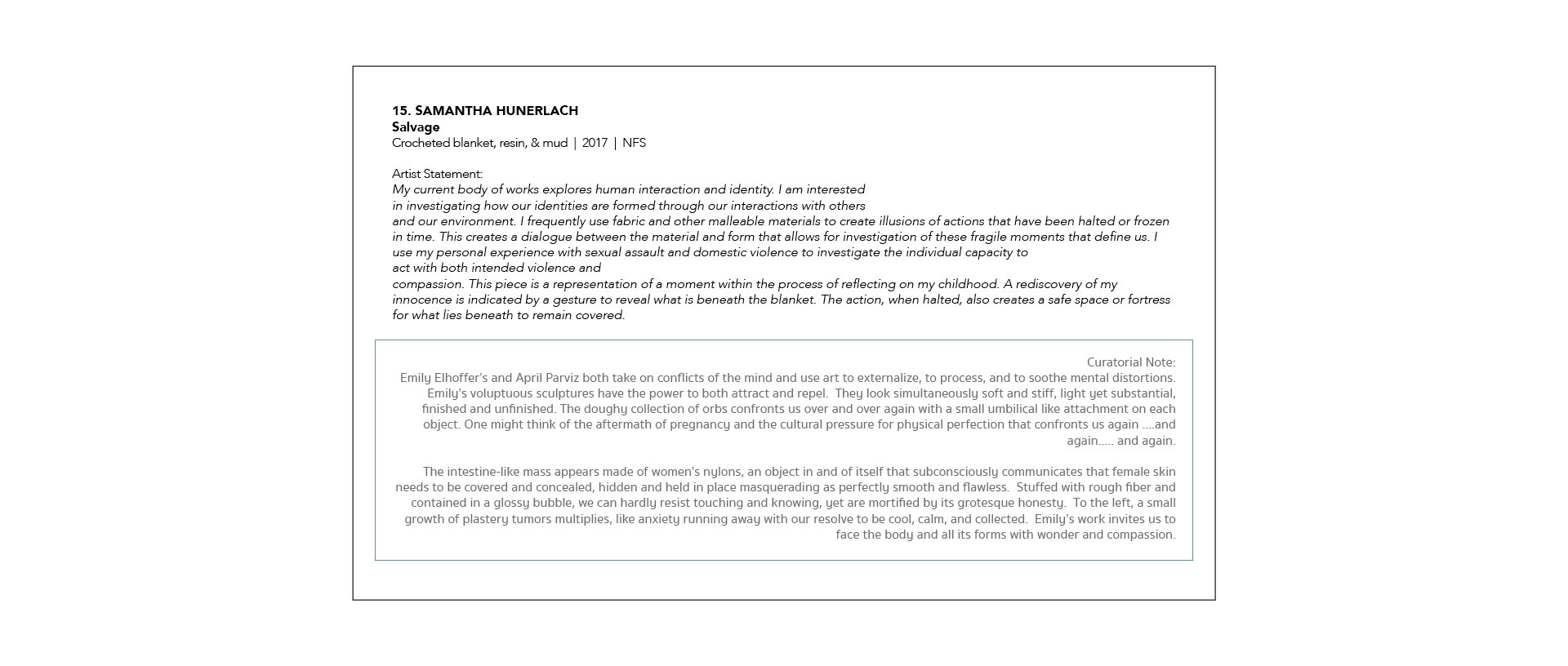
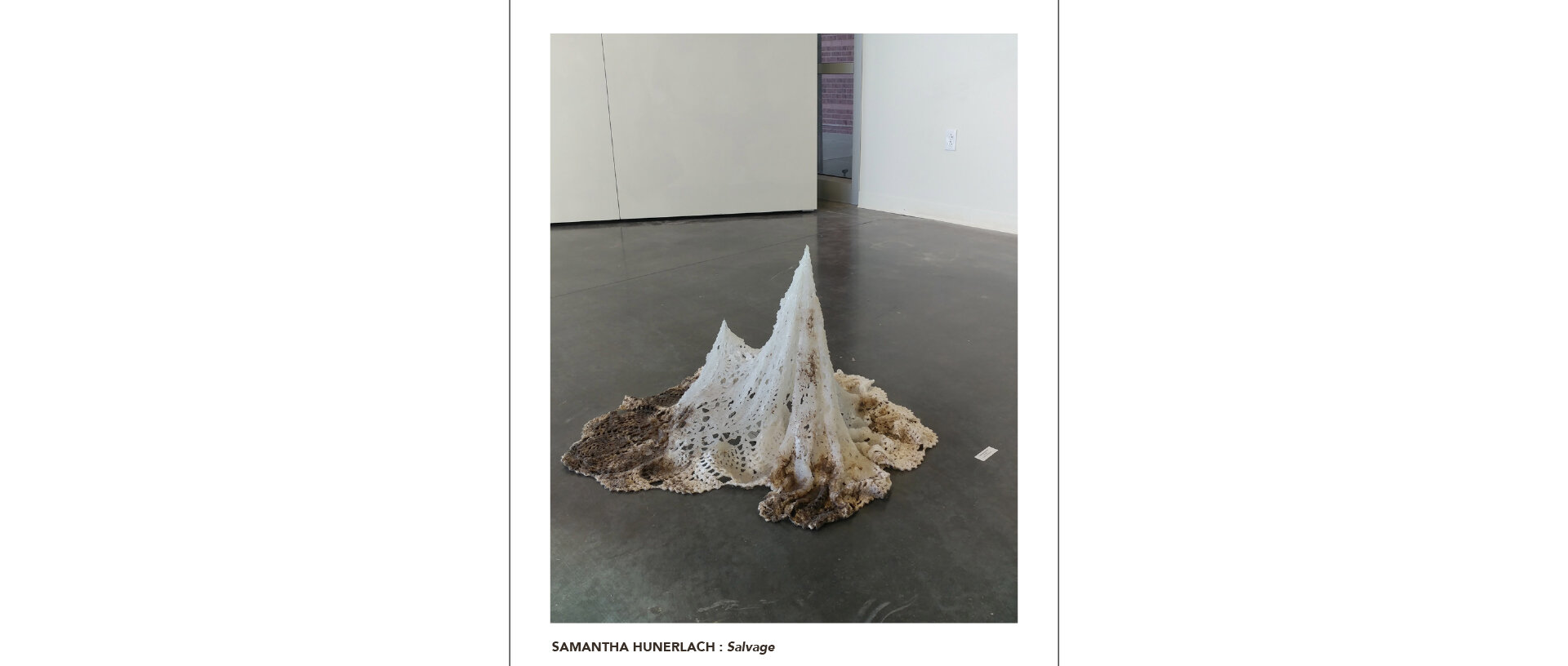

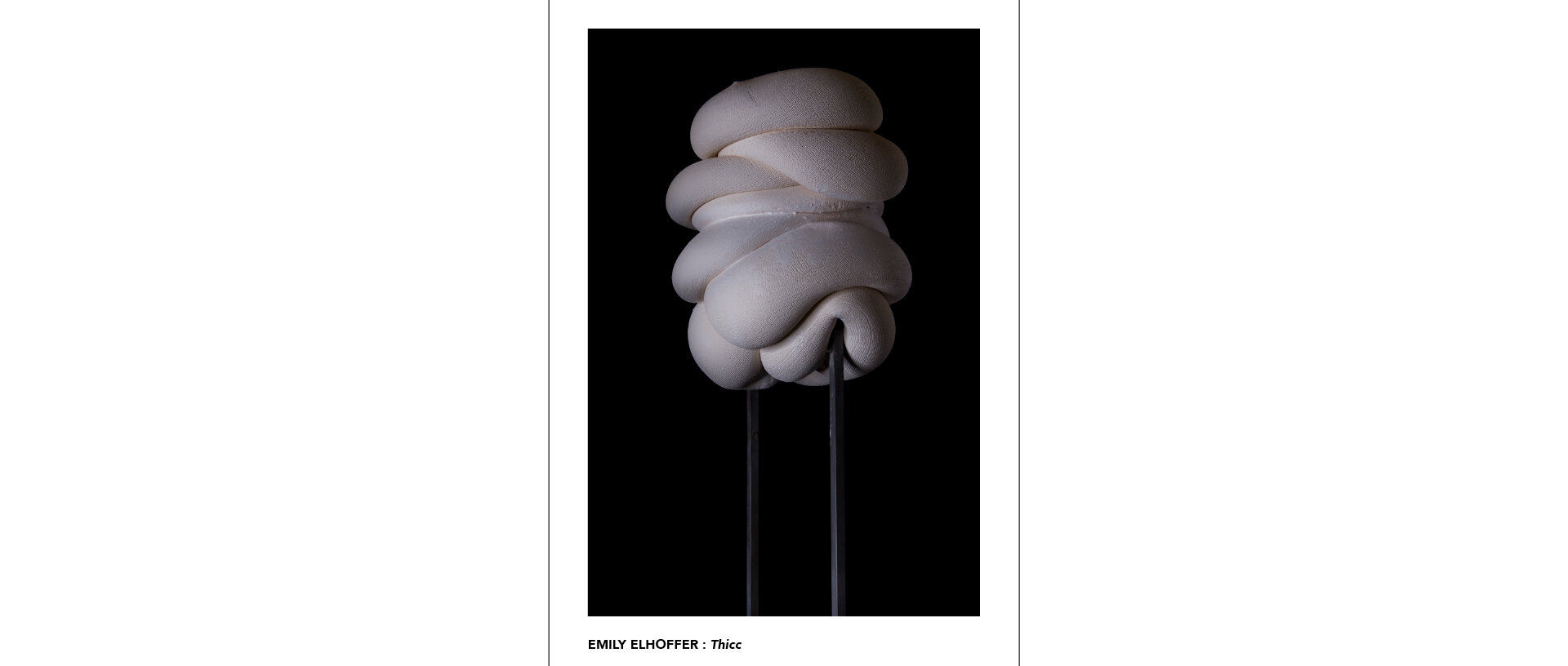
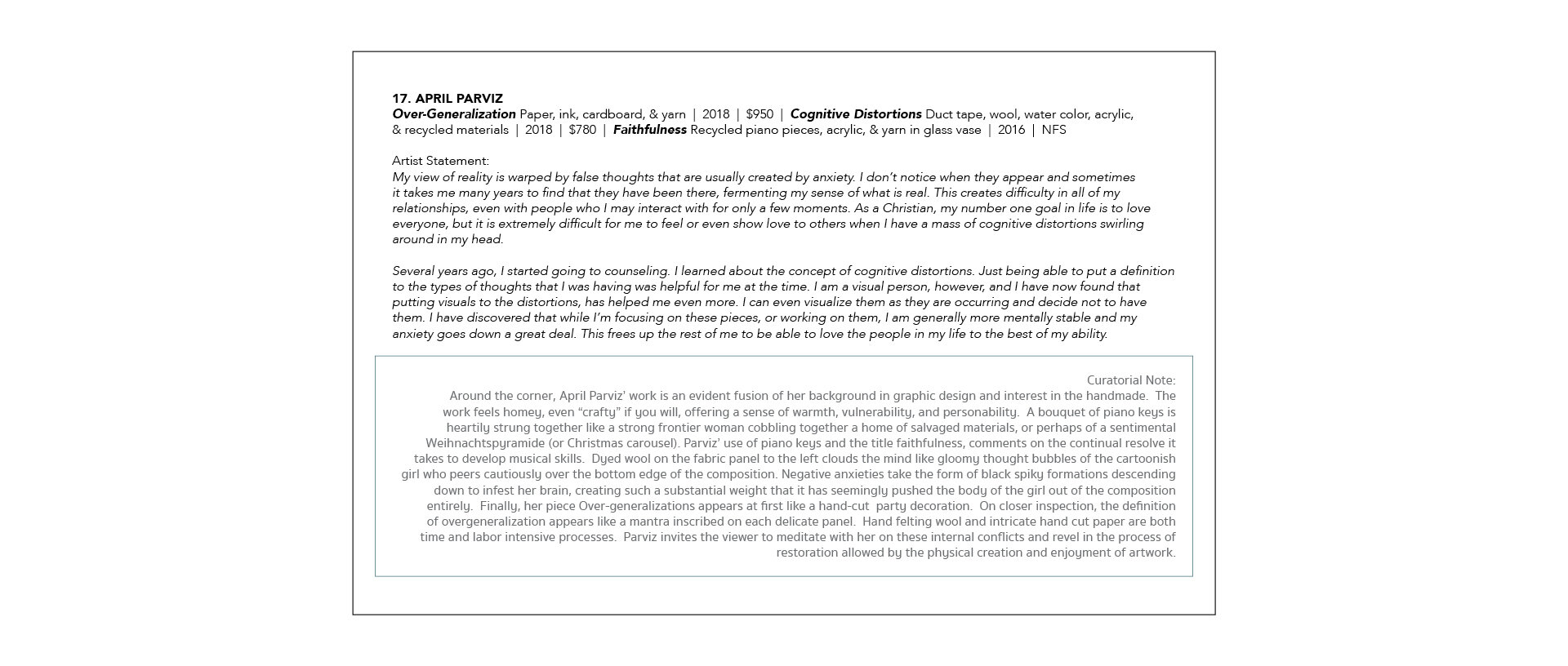
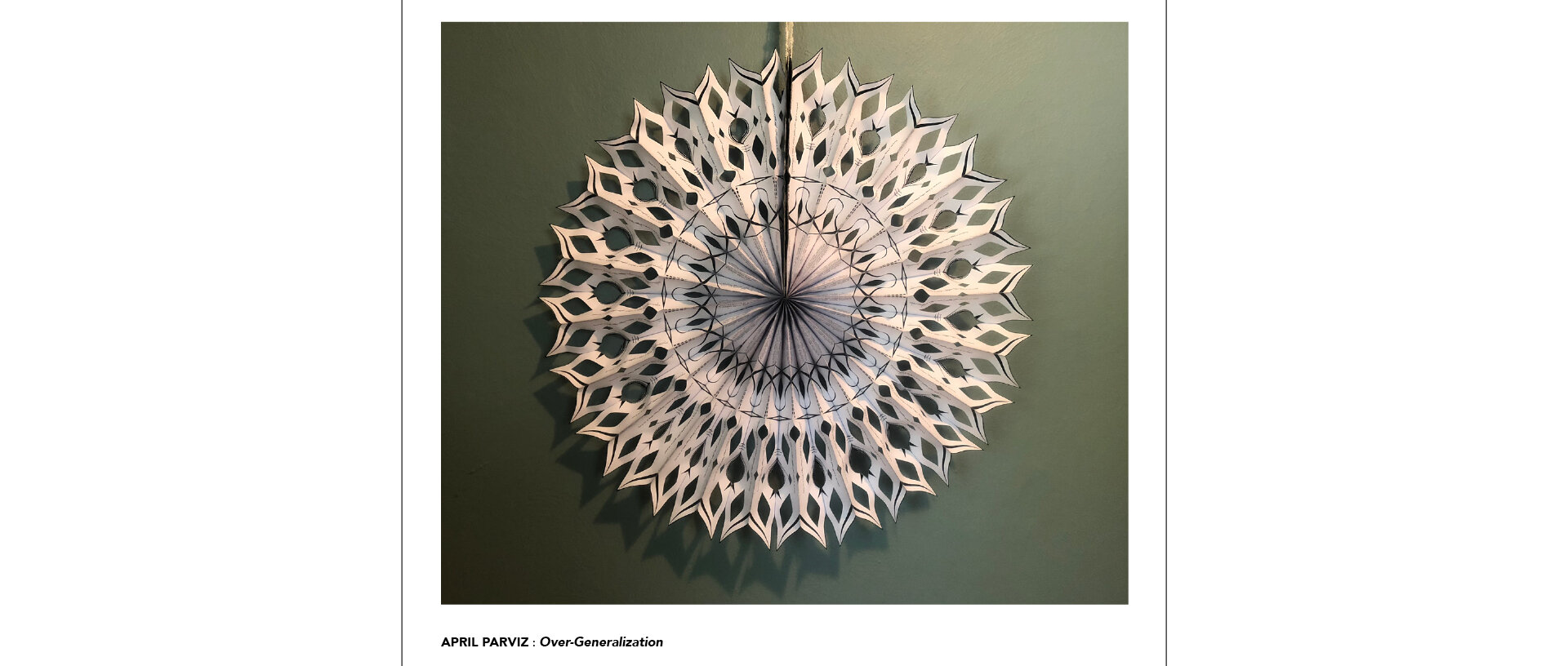
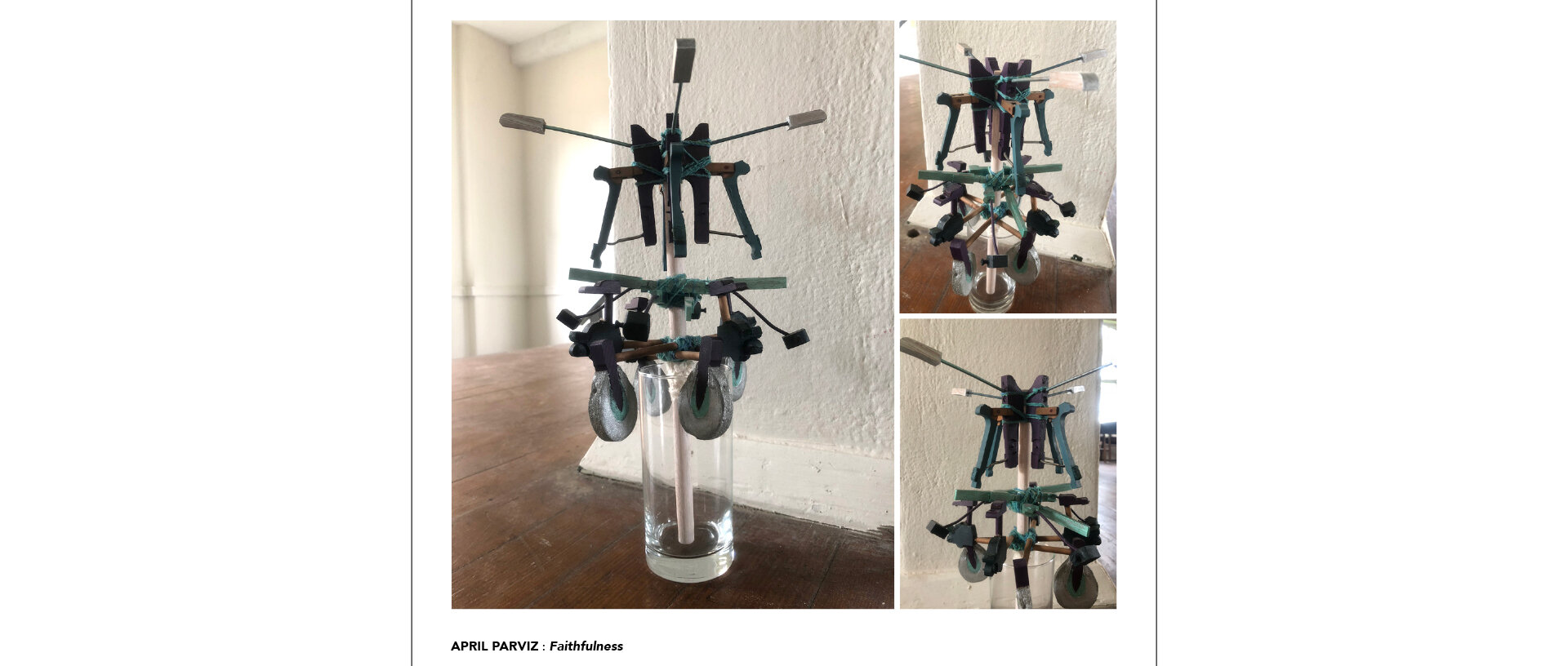
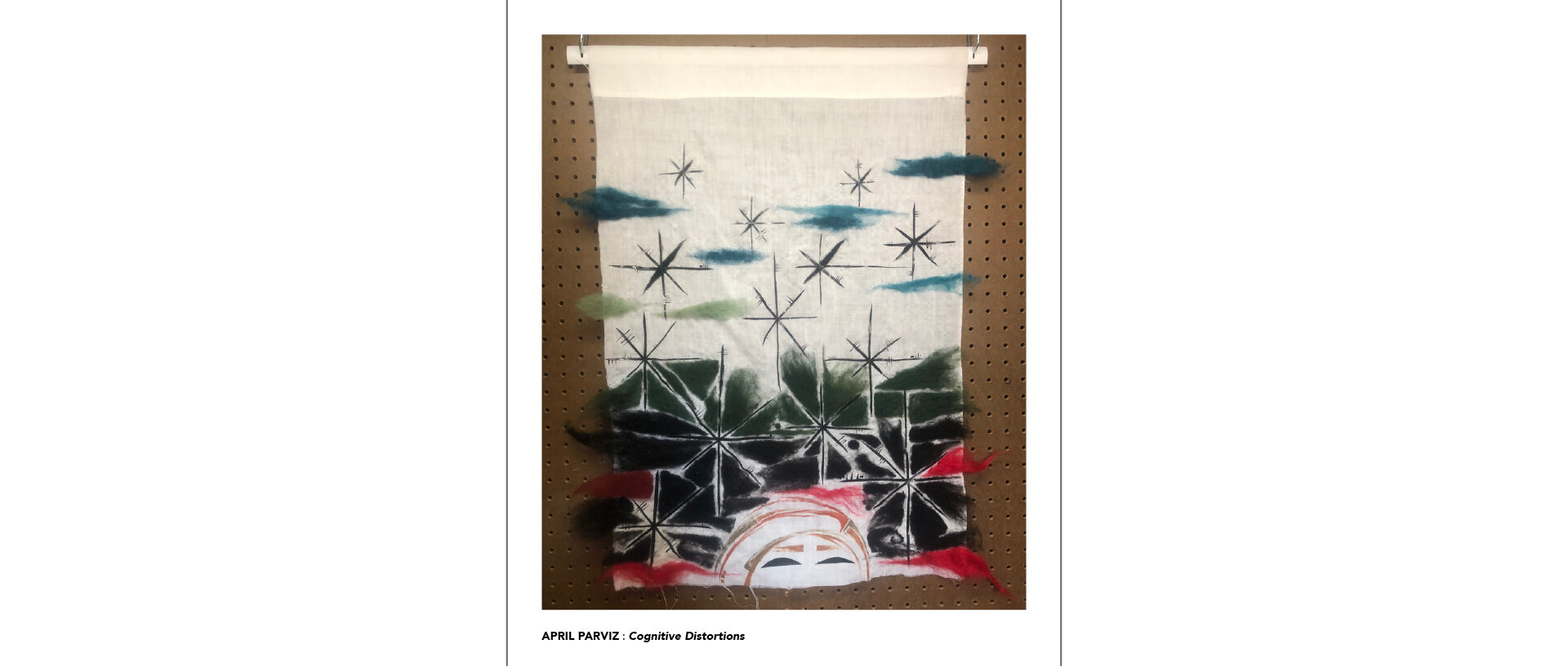
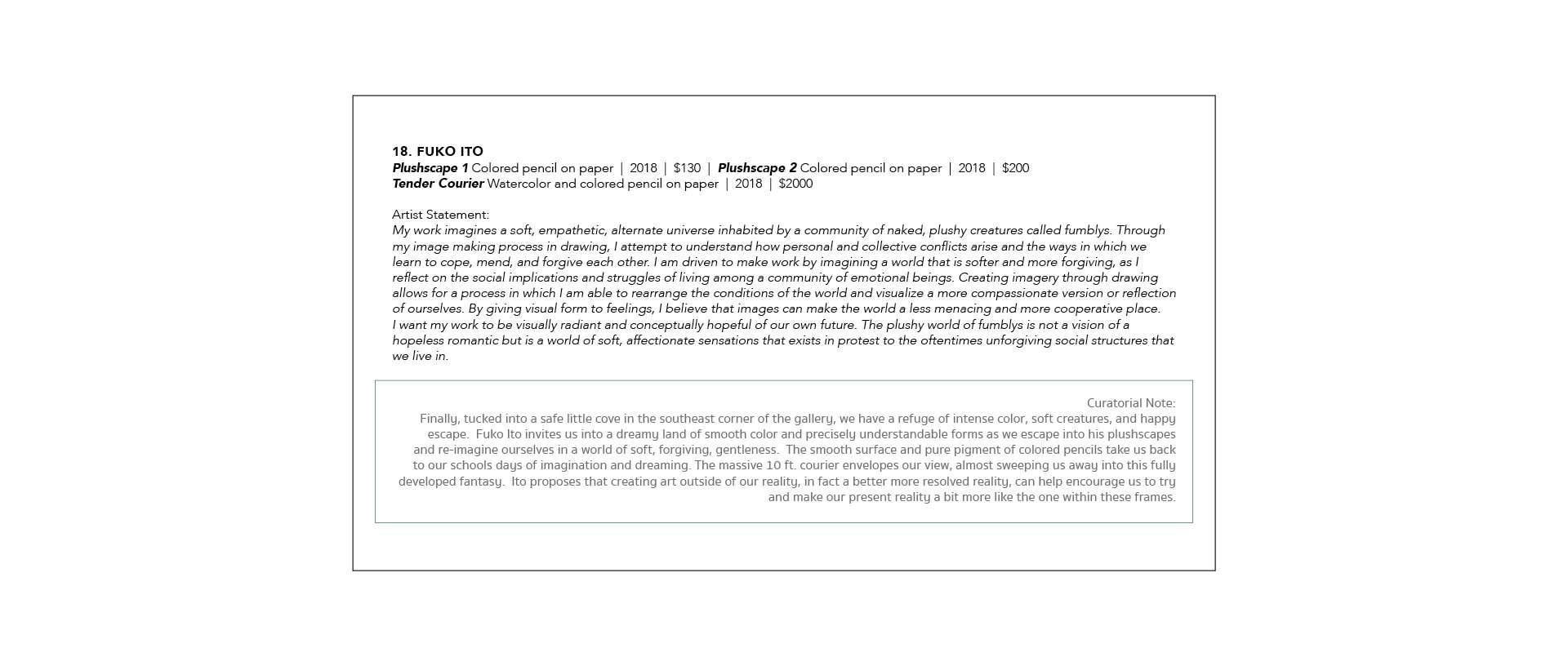
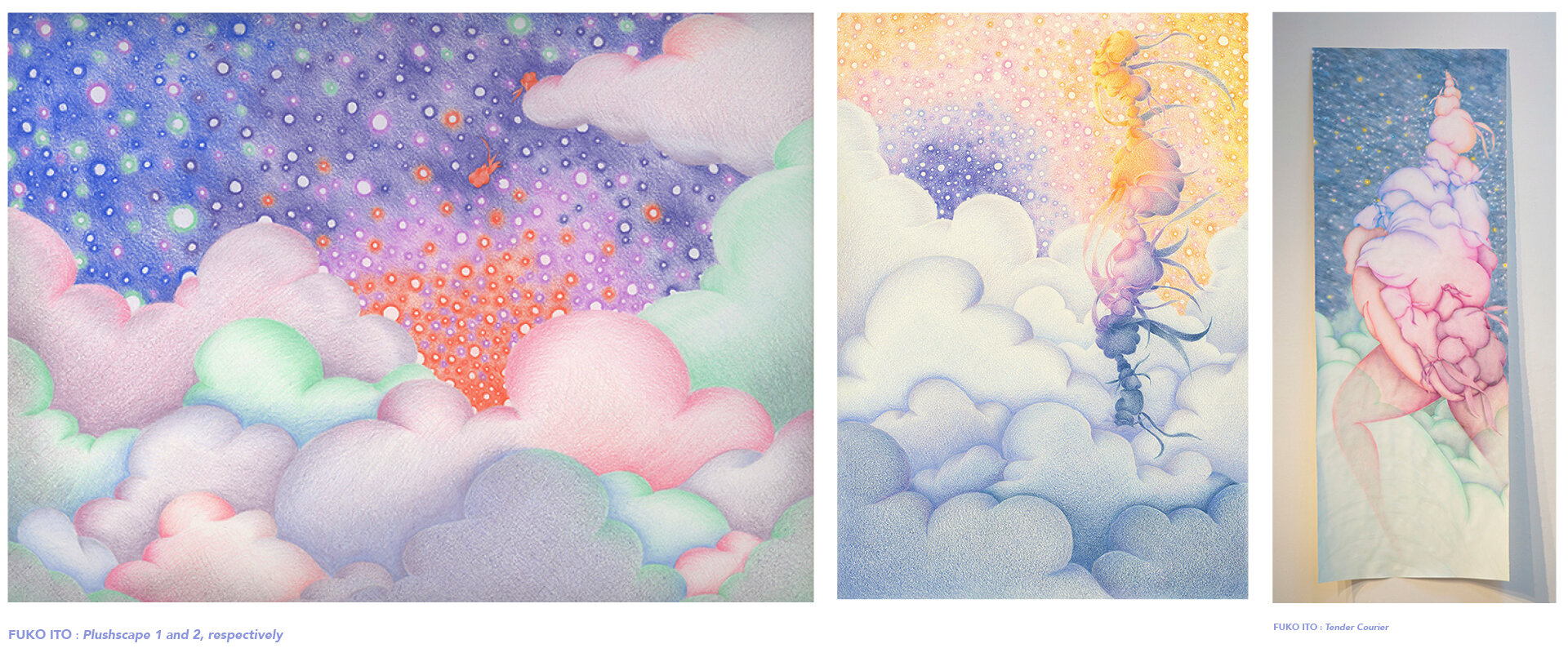
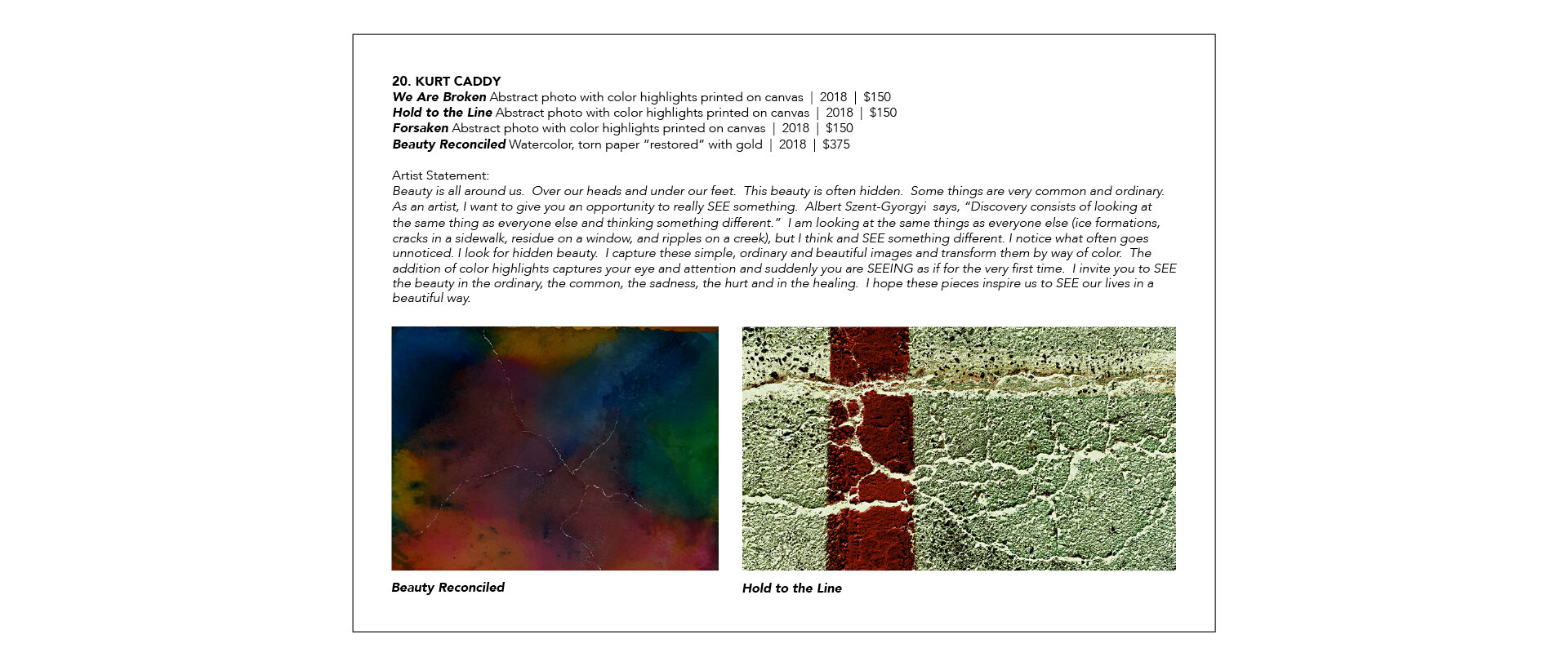
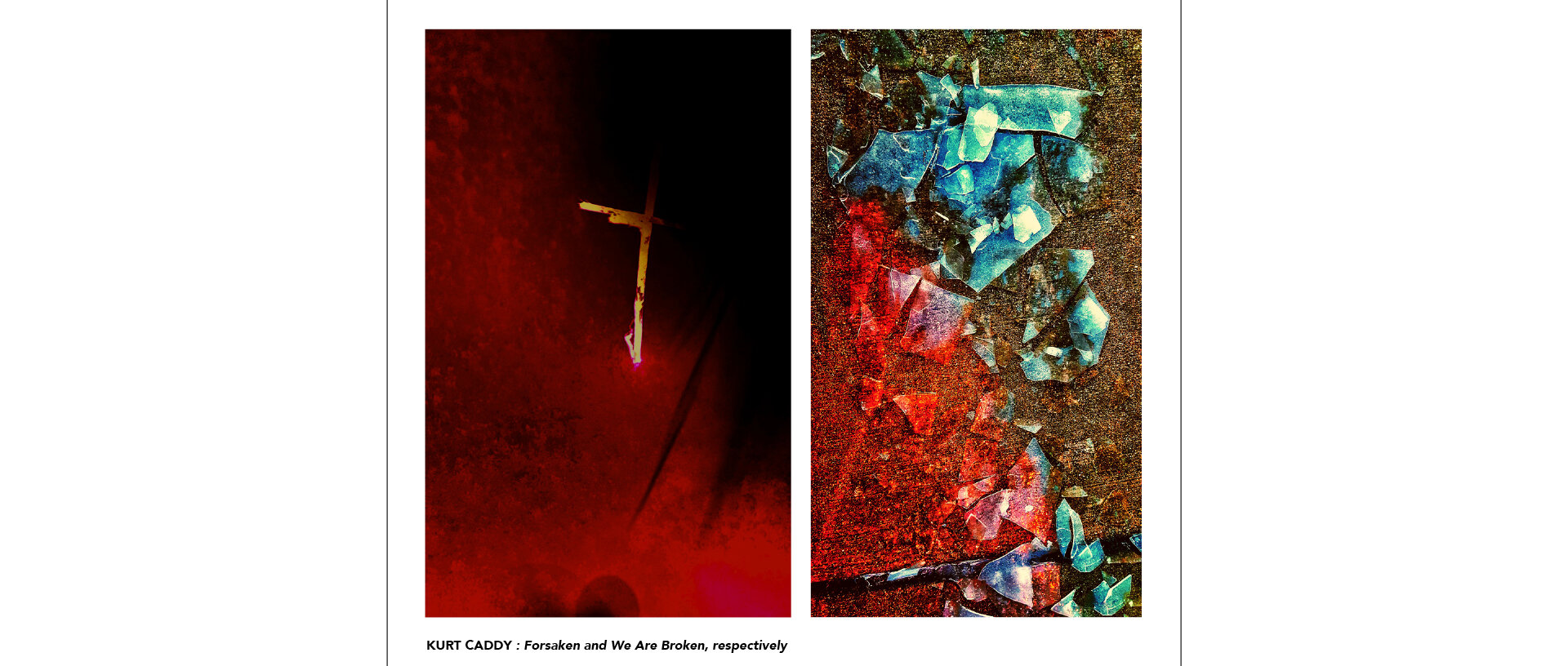
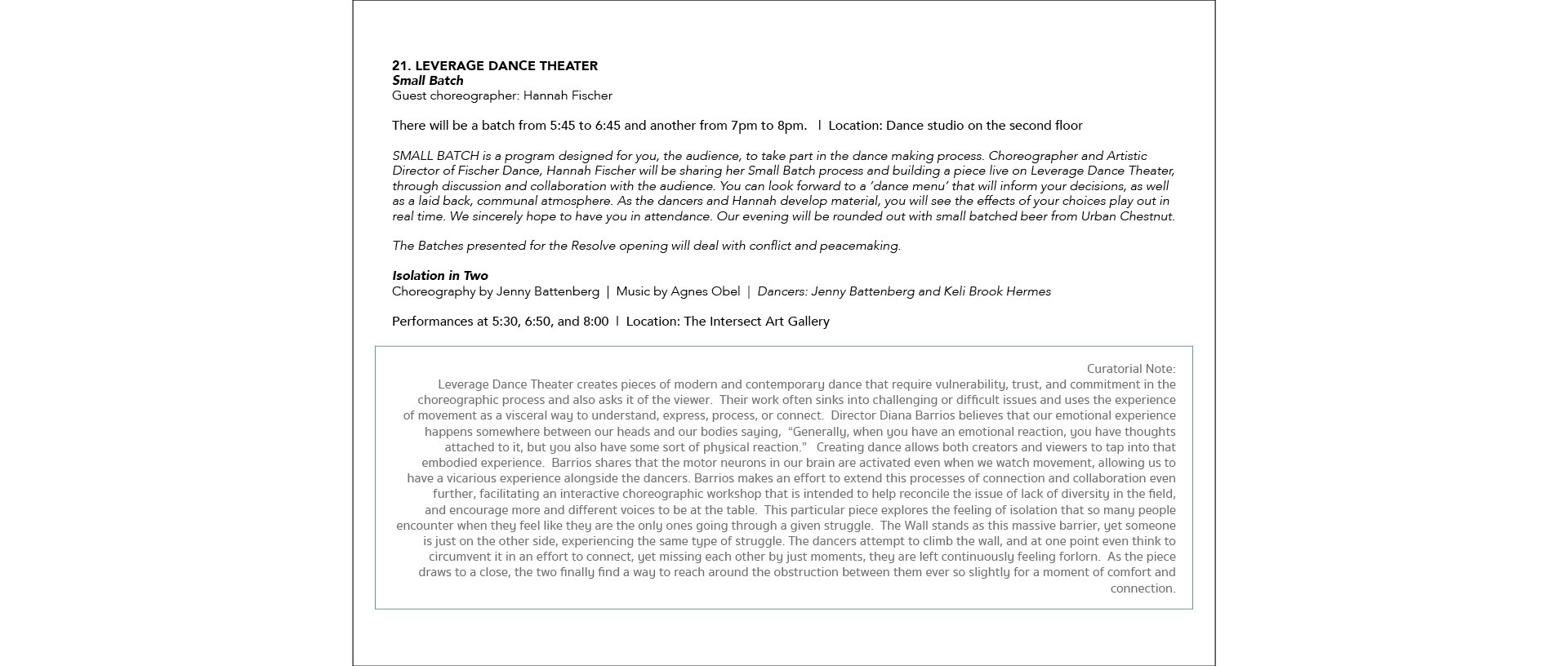
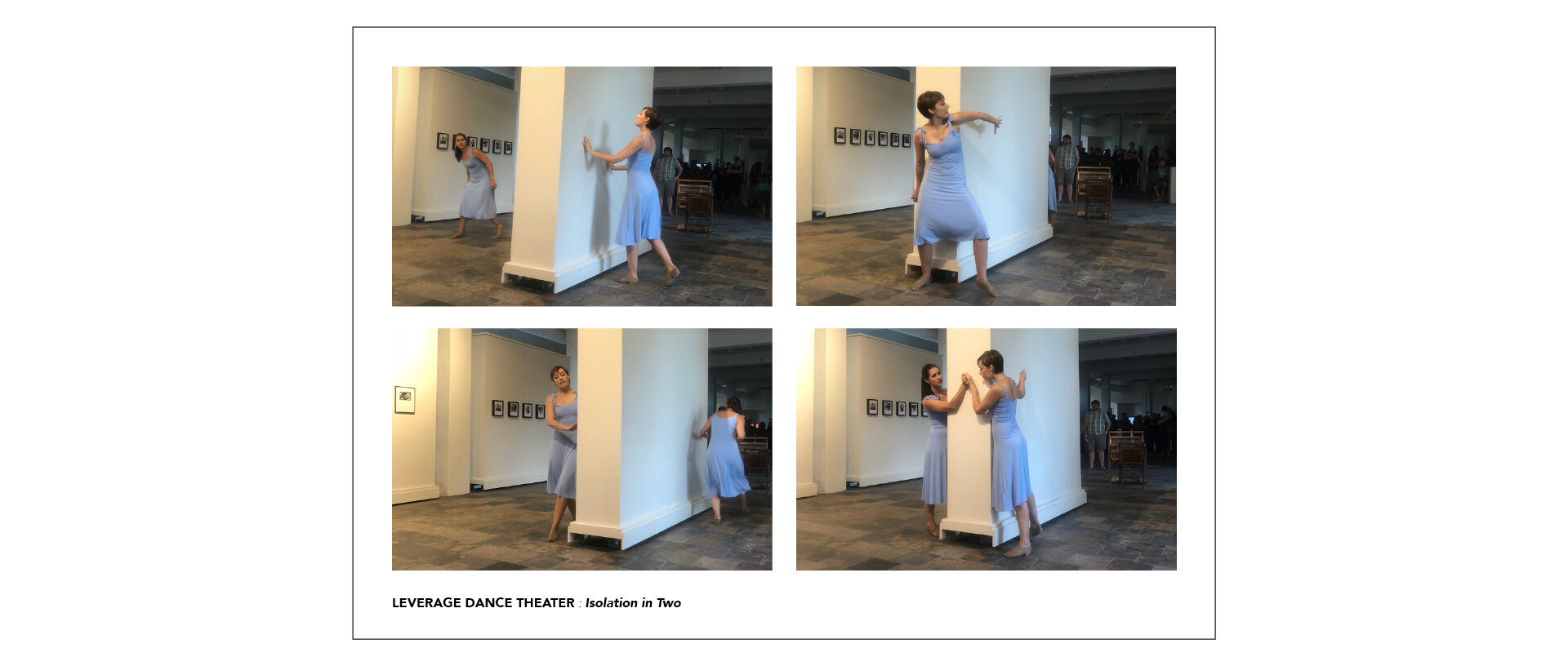
1. I Can Only Die But Once : Richard Neal
4. Rare Form : Metra Mitchell
7. Landscape Remediation Strategy : Allana Ross
10. Without Acknowledgment There Will Be No Resolution :
12. Steph : Philip Padilla
16. Tender : Emily Elhoffer
17. Over-Generalization : April Parviz
18. Plushscape 2 : Fuko Ito
20. Hold to the Line : Kurt Caddy
2. Defending the Gates of Paradise : Bill Perry
5. Incubate : Zac Buser
8. Forgive Me, Mother Nature (Film) : Kat Feldman
11. Dis Locate / A Place to Wrest : Amber Elison
13. Cattiness : Jennifer Weigel
16. Worry 1 : Emily Elhoffer
17. Cognitive Distortions : April Parviz
18. Tender Courier : Fuko Ito
20. Forsaken : Kurt Caddy
2. And Yet, We Are Joyous : Bill Perry
5. Digging Stick : Zac Buser
9. Clean Water : George Lorio
12. Olivea : Philip Padilla
14. Laal Ribbon (Film) : Hamida Khatri
16. Vignette 3 : Emily Elhoffer
17. Faithfulness : April Parviz
19. Untitled : Thomas Park
20. Beauty Reconciled : Kurt Caddy
3. Inheritance: Owning Our Ghosts : Amber Elison
6. Advancing the Warp : Abby Bennett, Theresa Hitchcock, & Sarah Bernhardt
9. Free Speech : George Lorio
12. Bridget : Philip Padilla
15. Salvage : Samantha Hunerlach
16. Thicc : Emily Elhoffer
18. Plushscape 1 : Fuko Ito
20. We Are Broken : Kurt Caddy
21. Isolation in Two (Live) : Jenny Battenberg & Keli Brook Hermes
